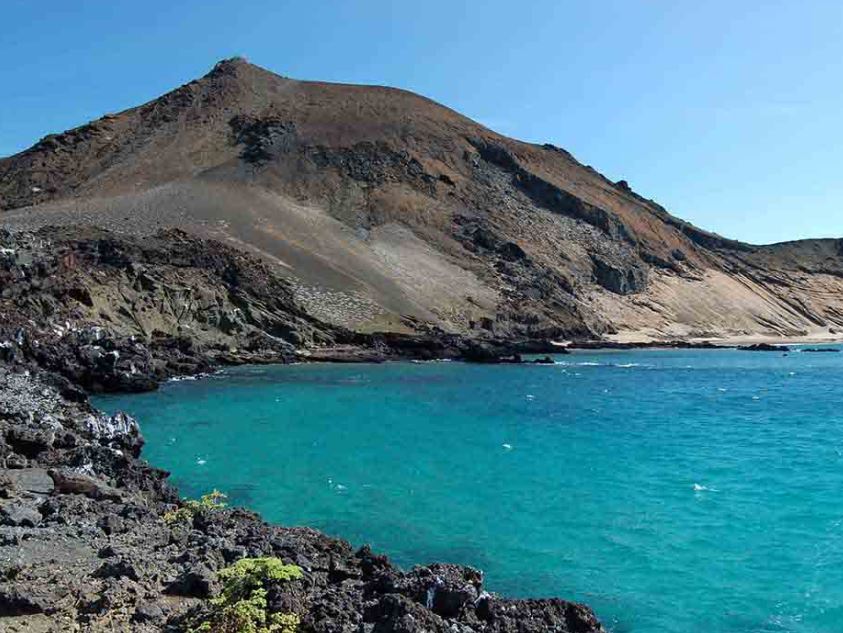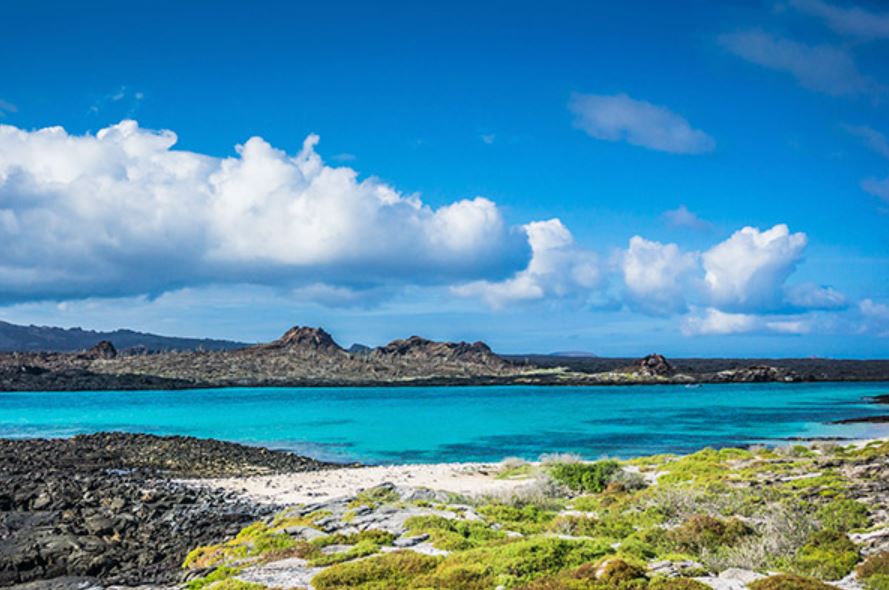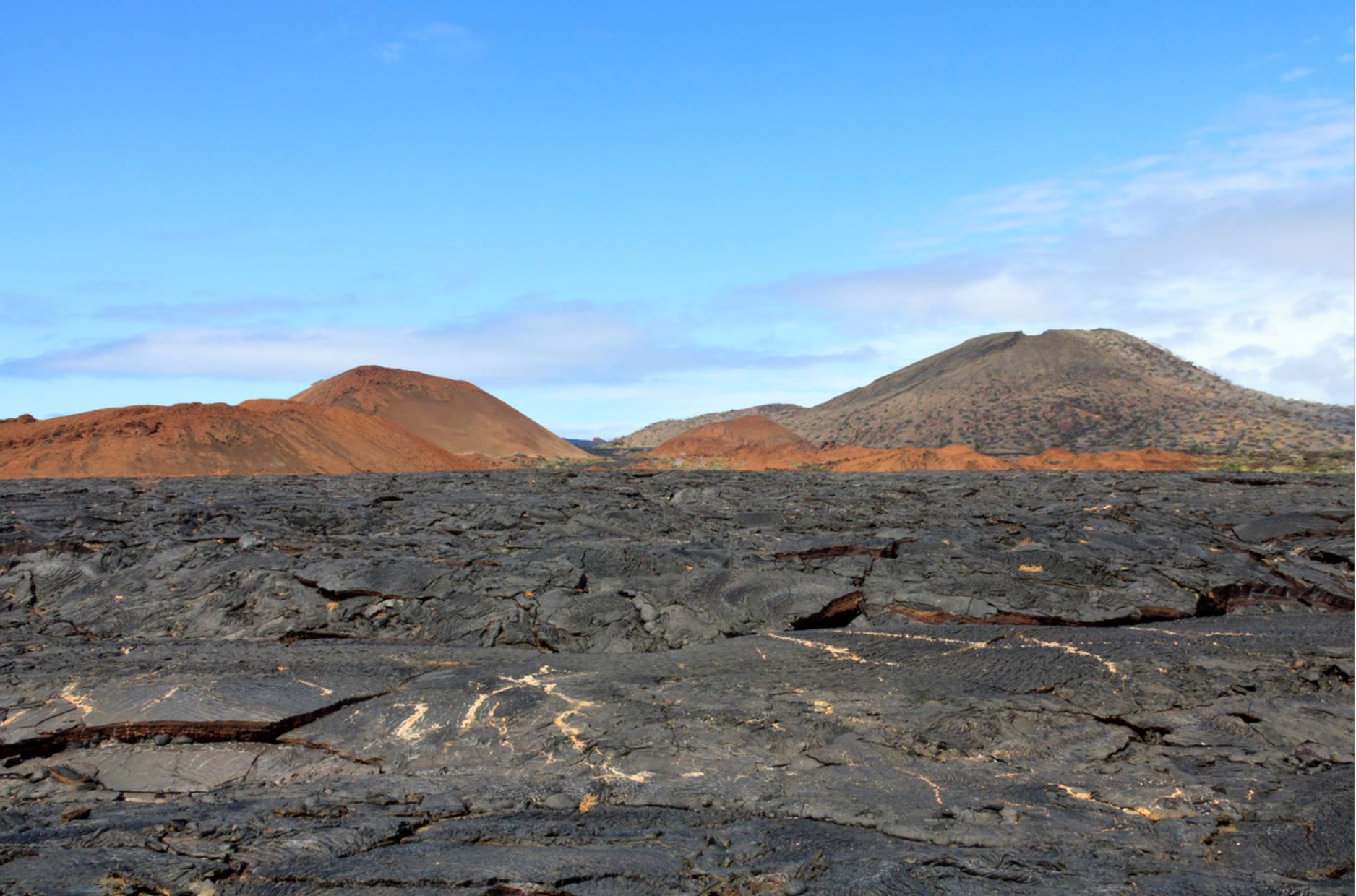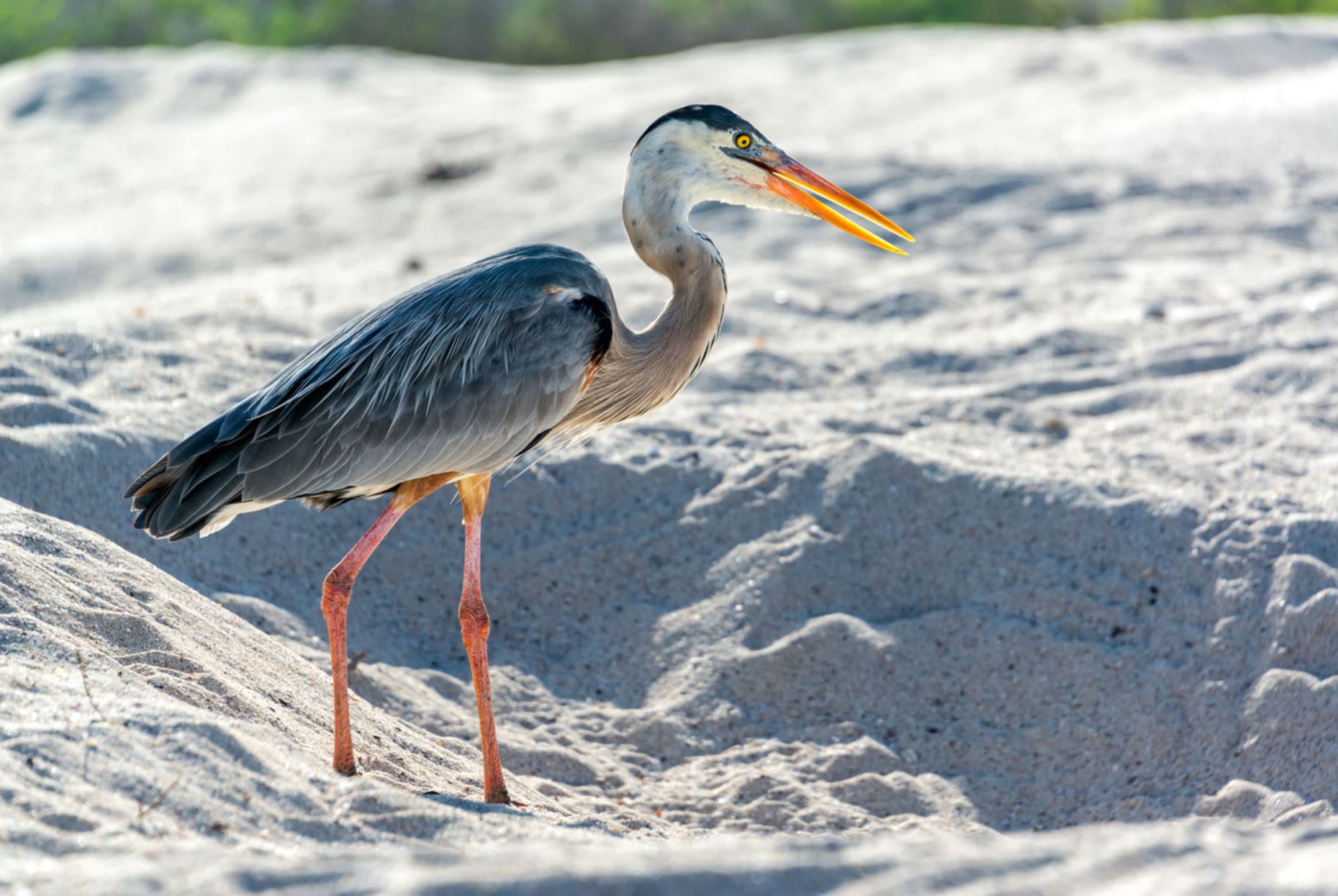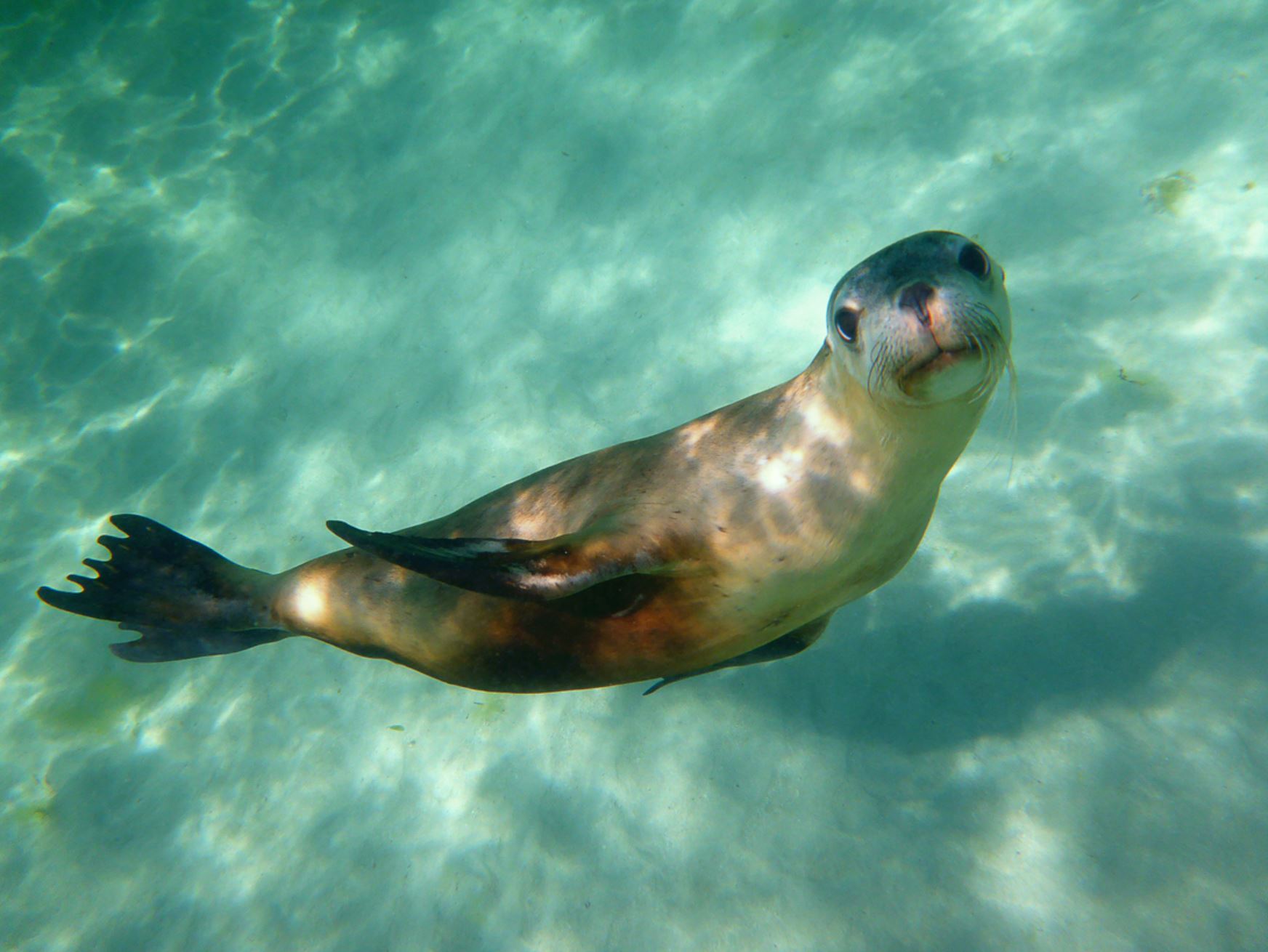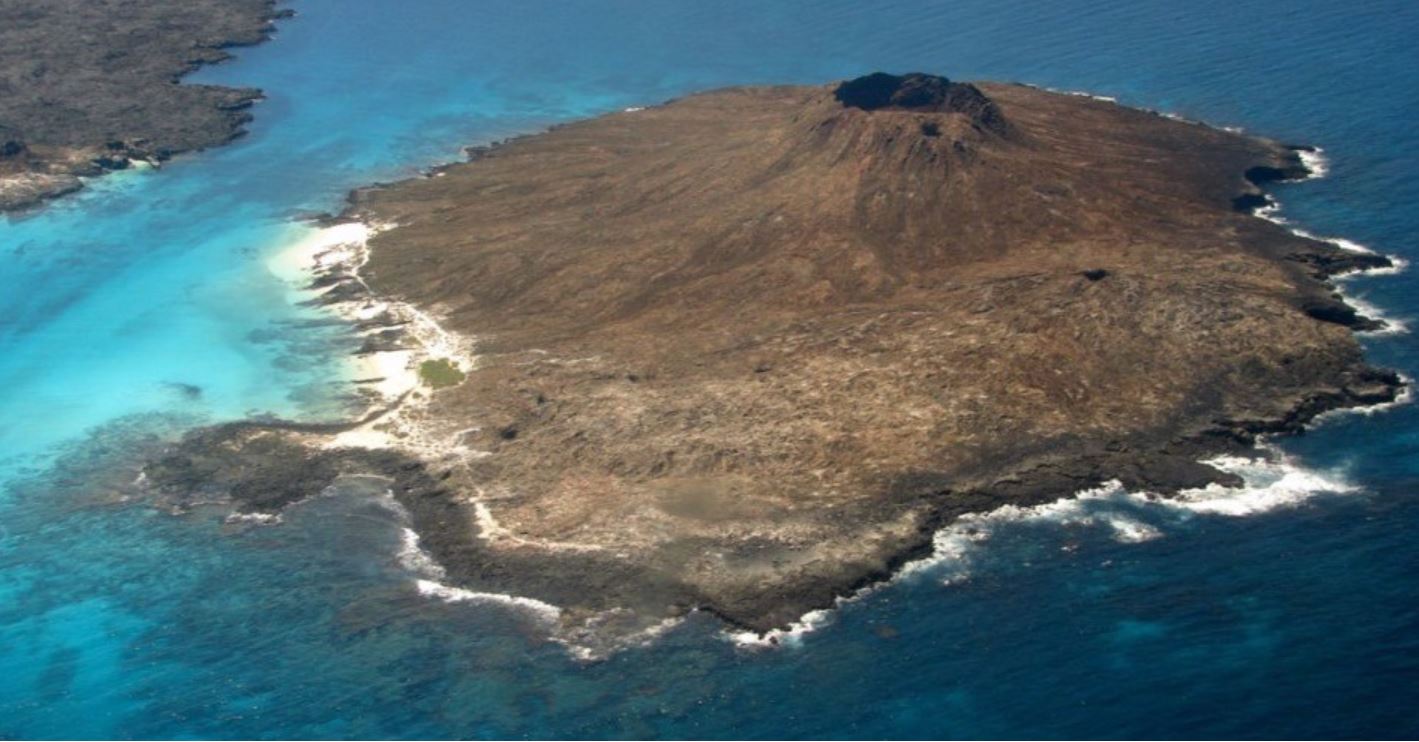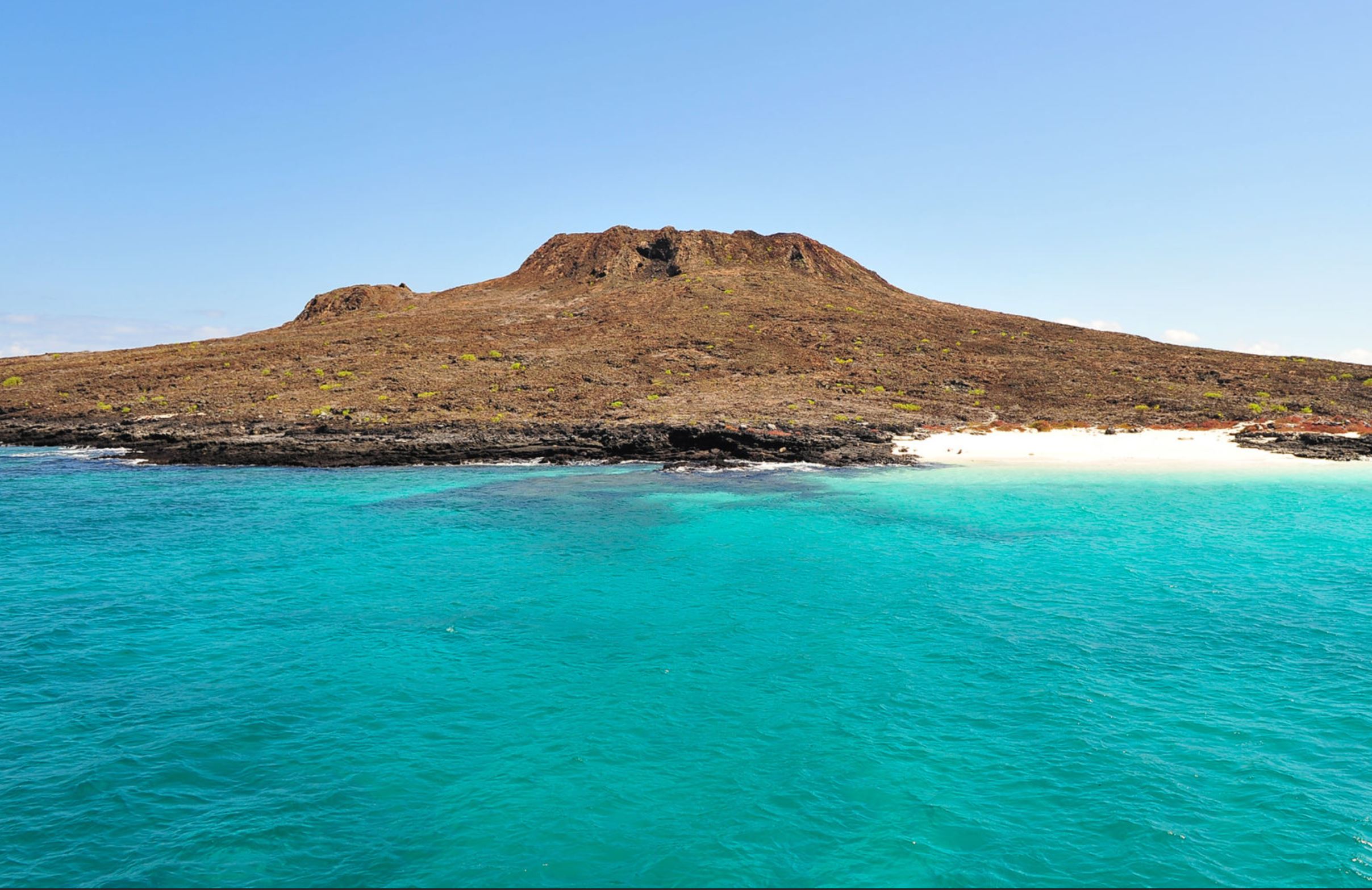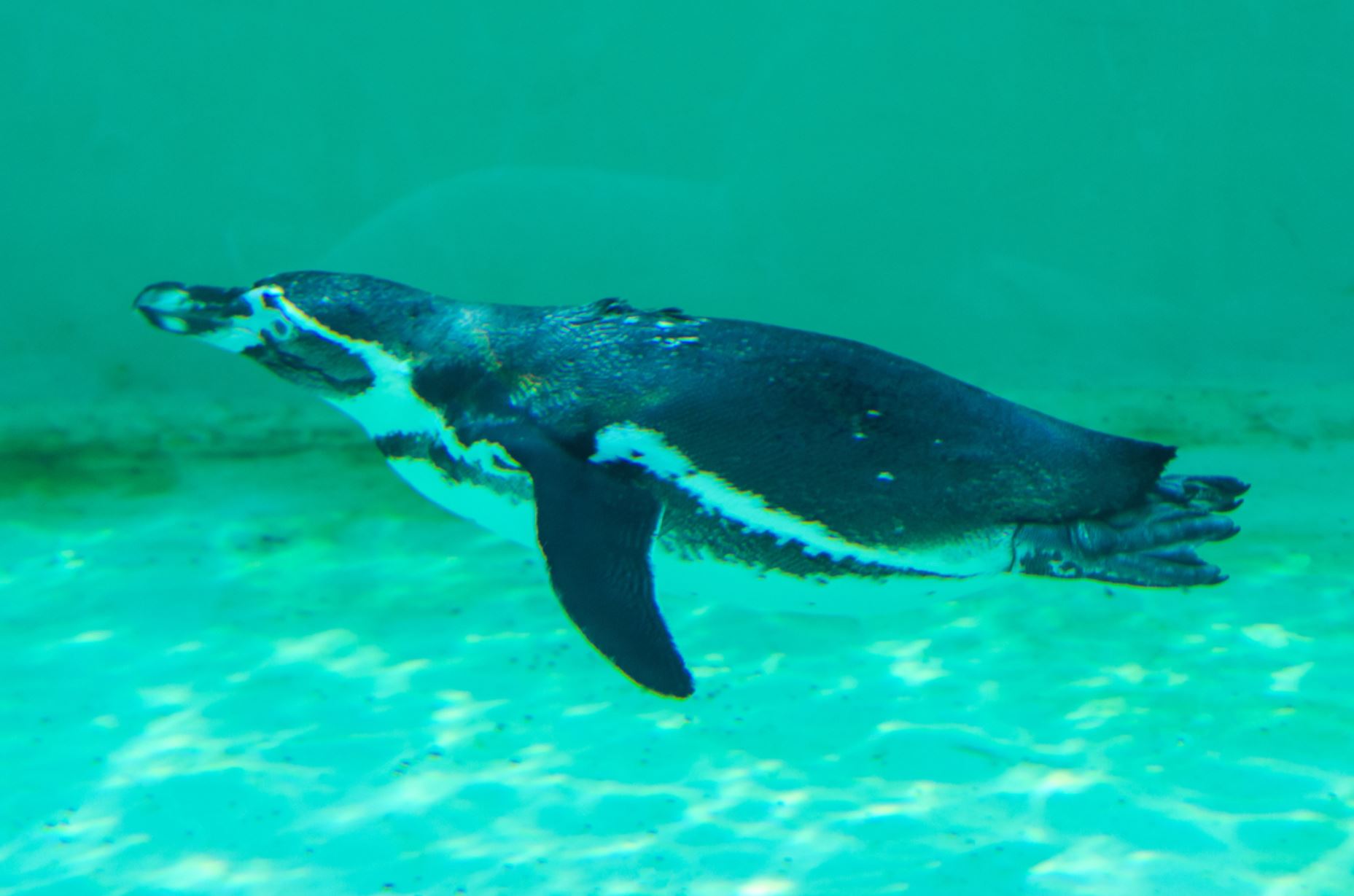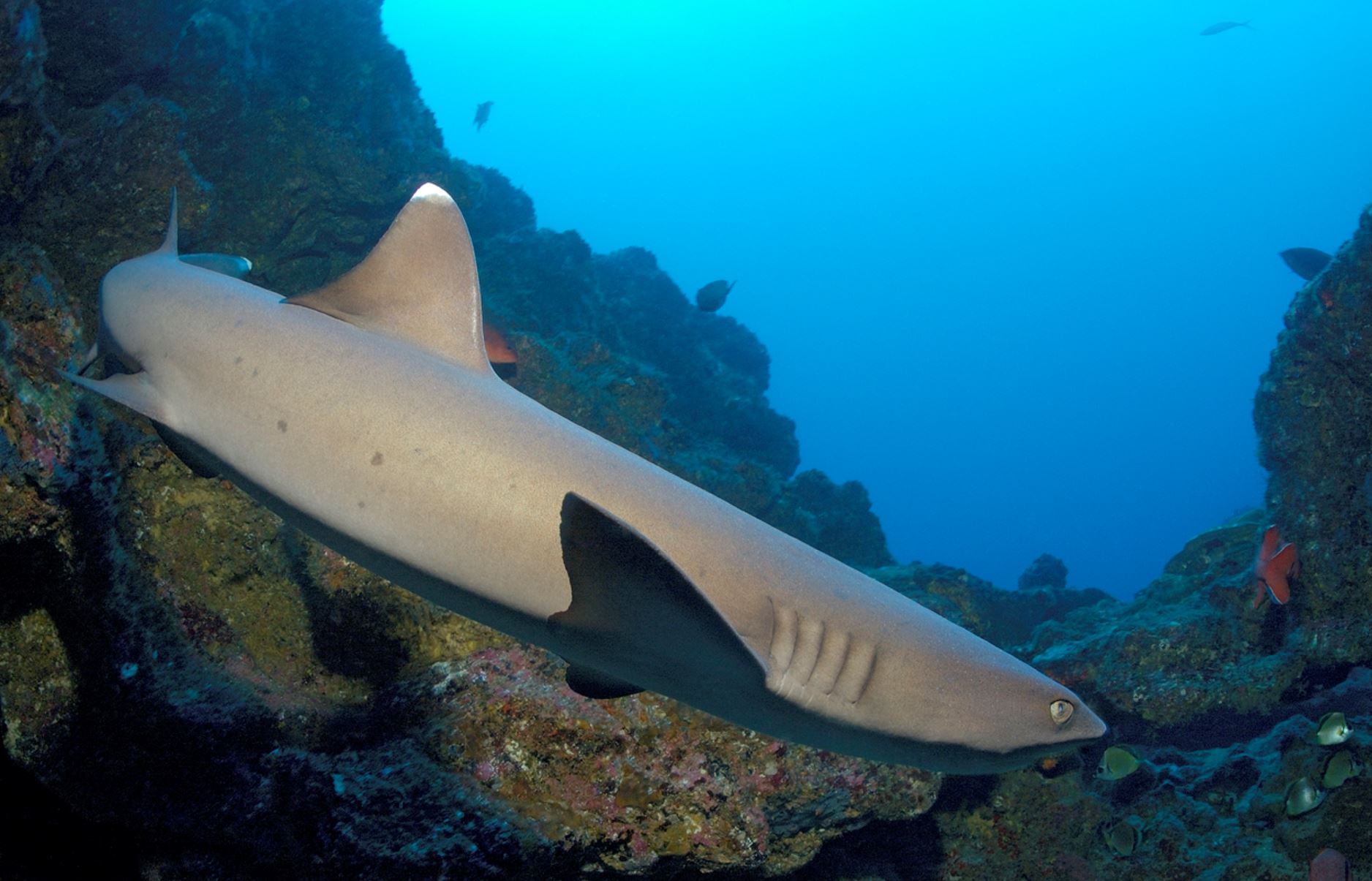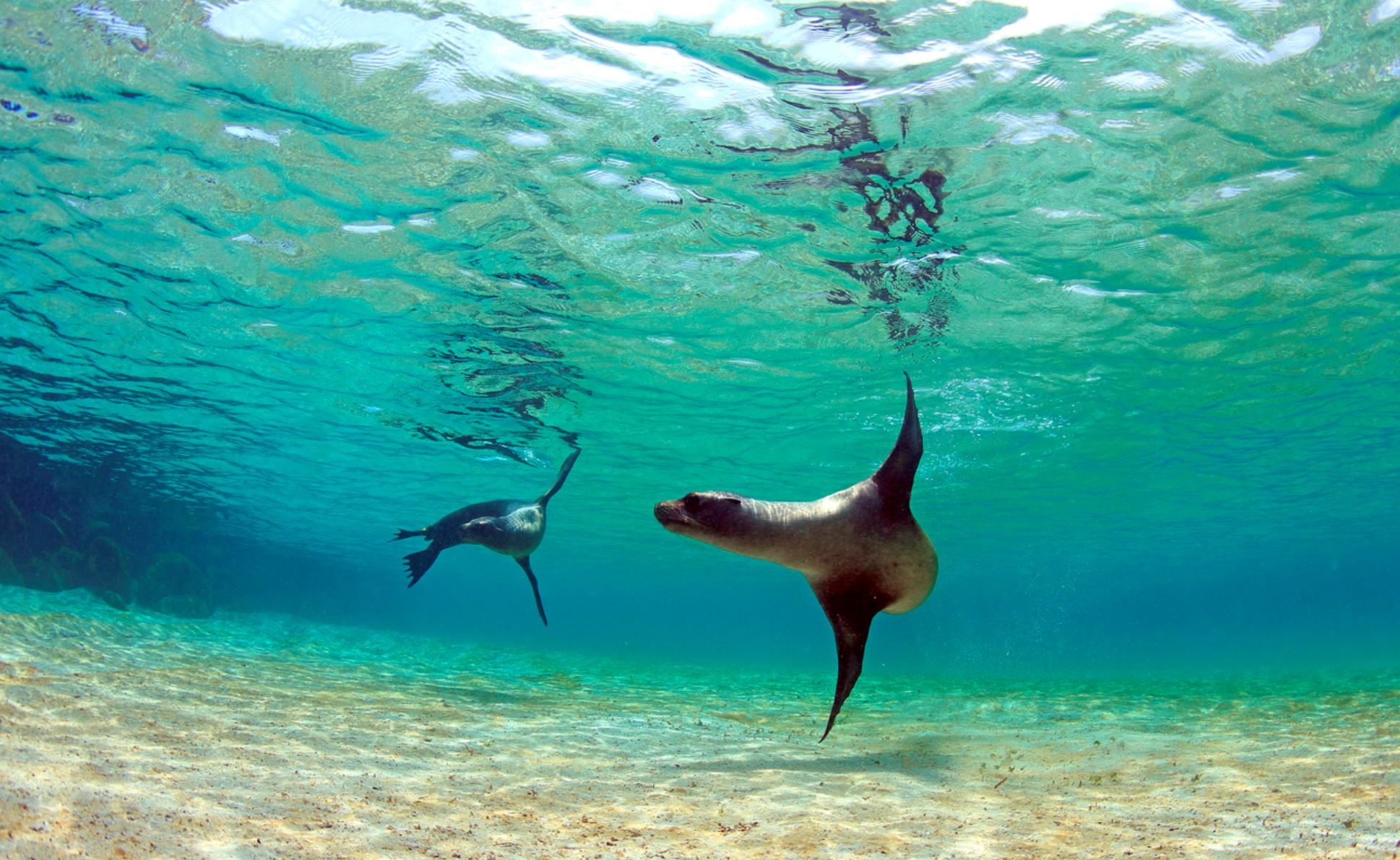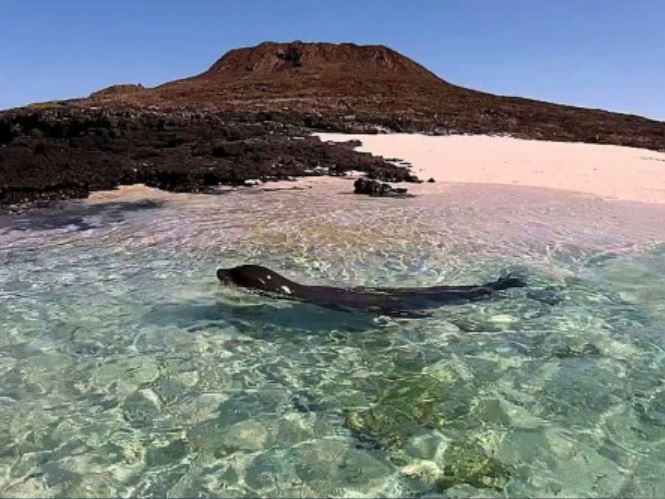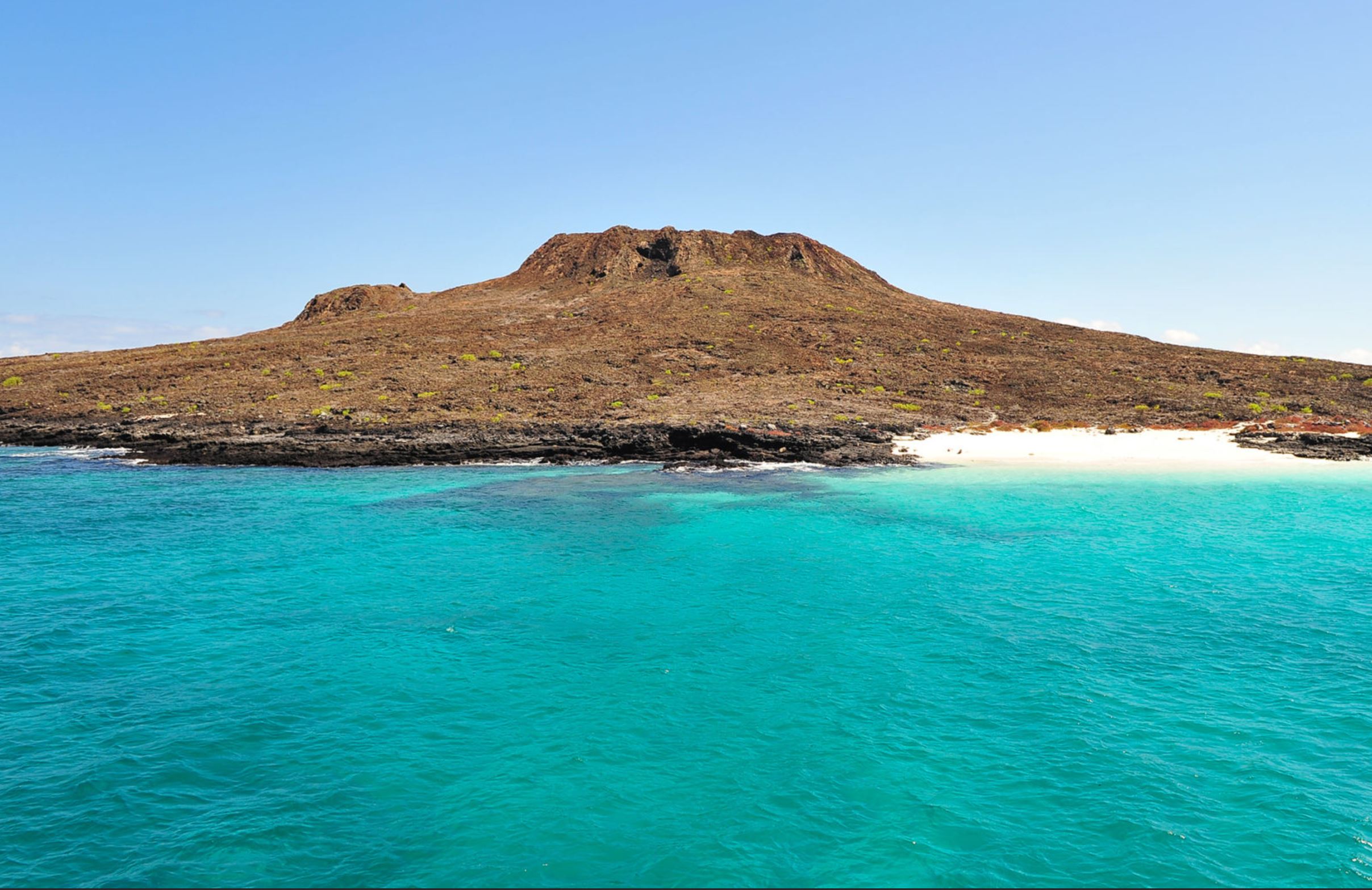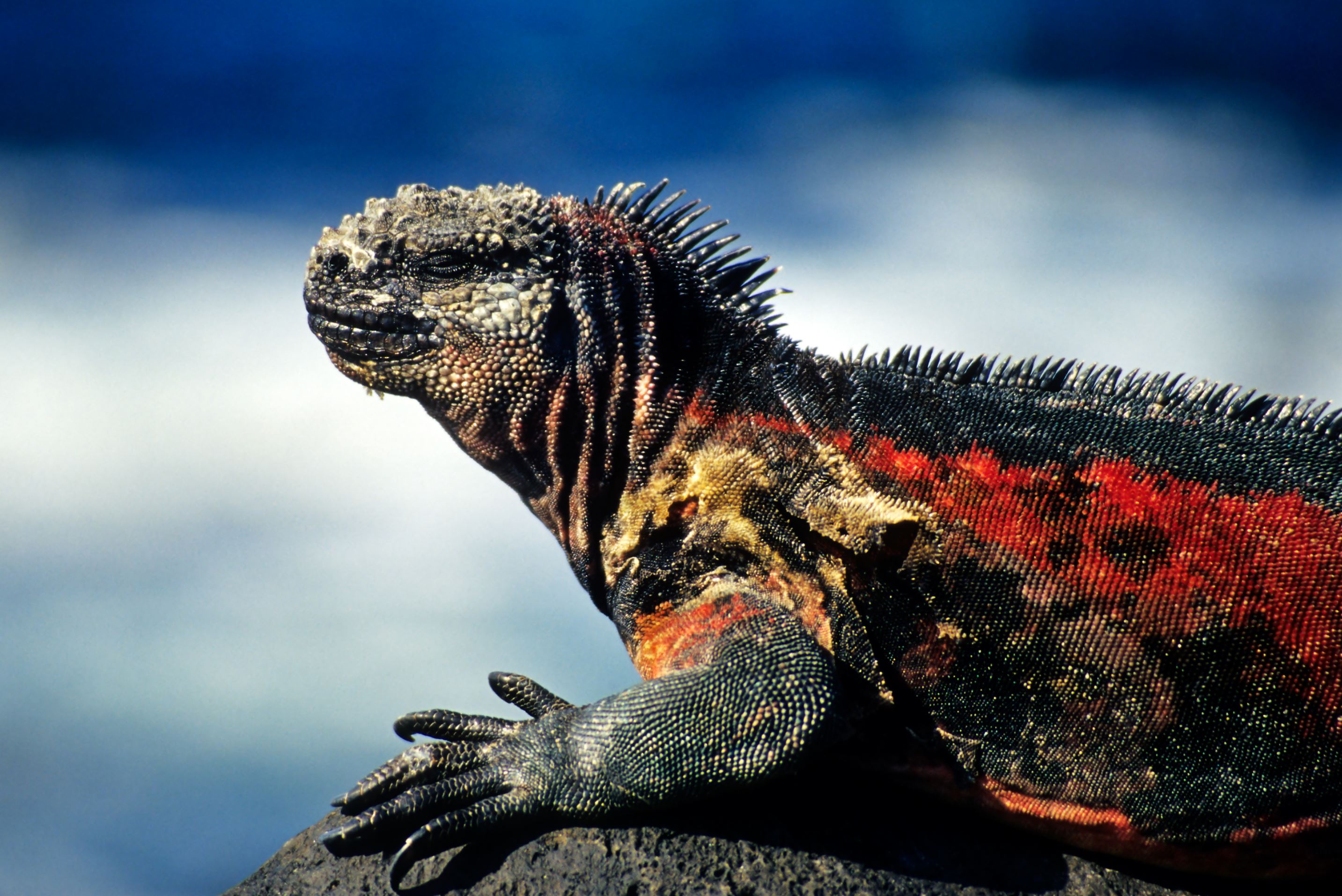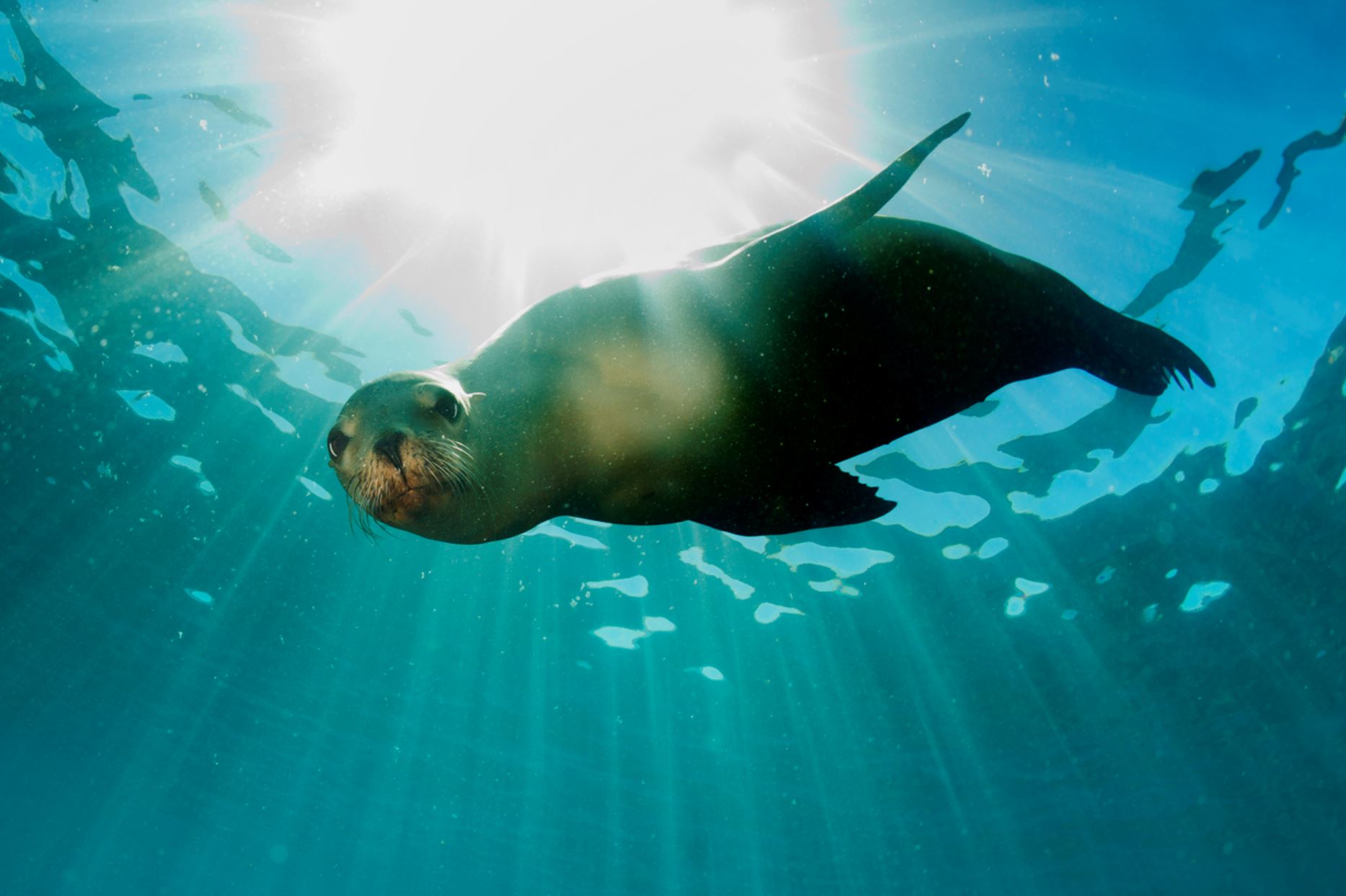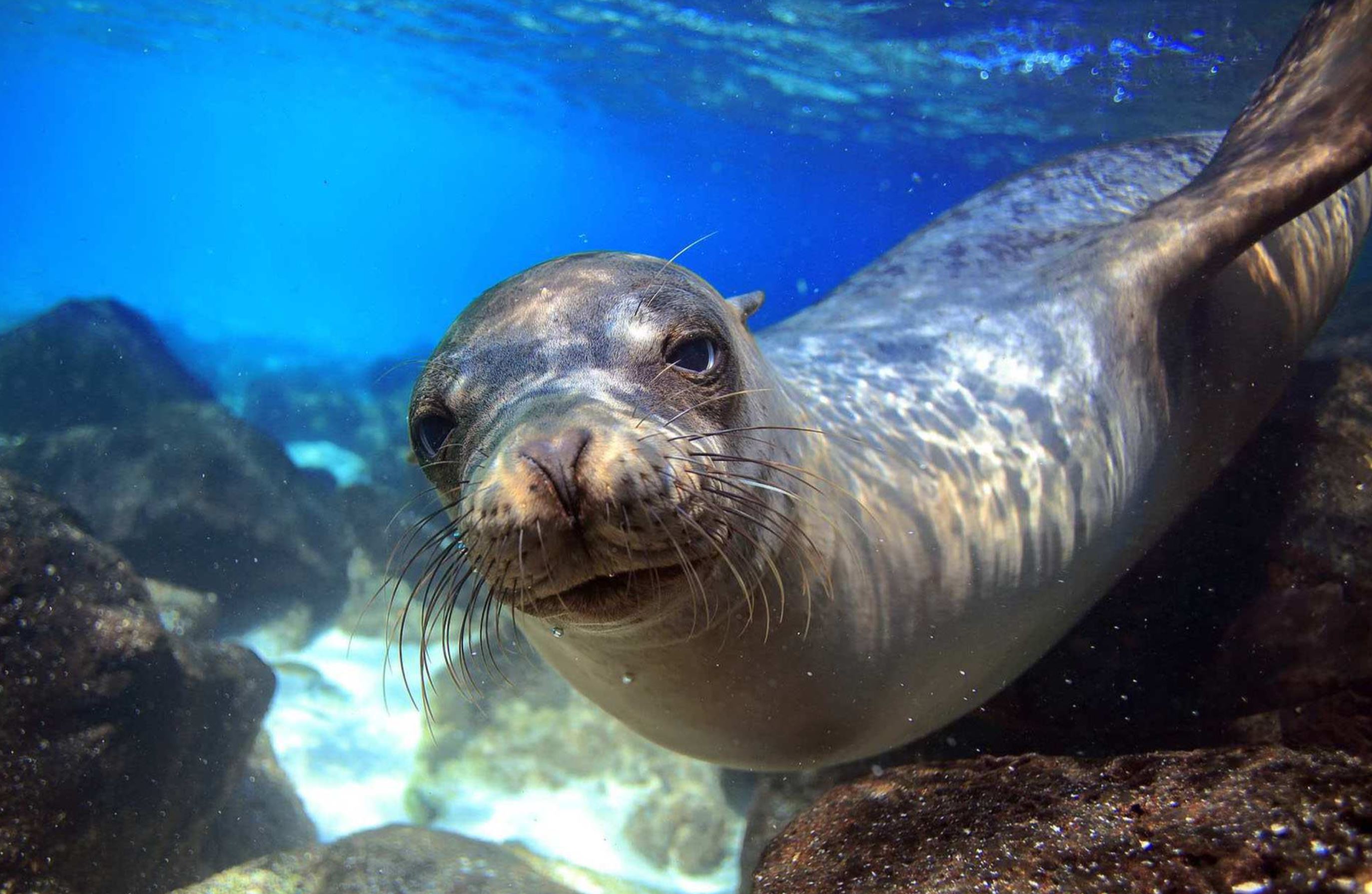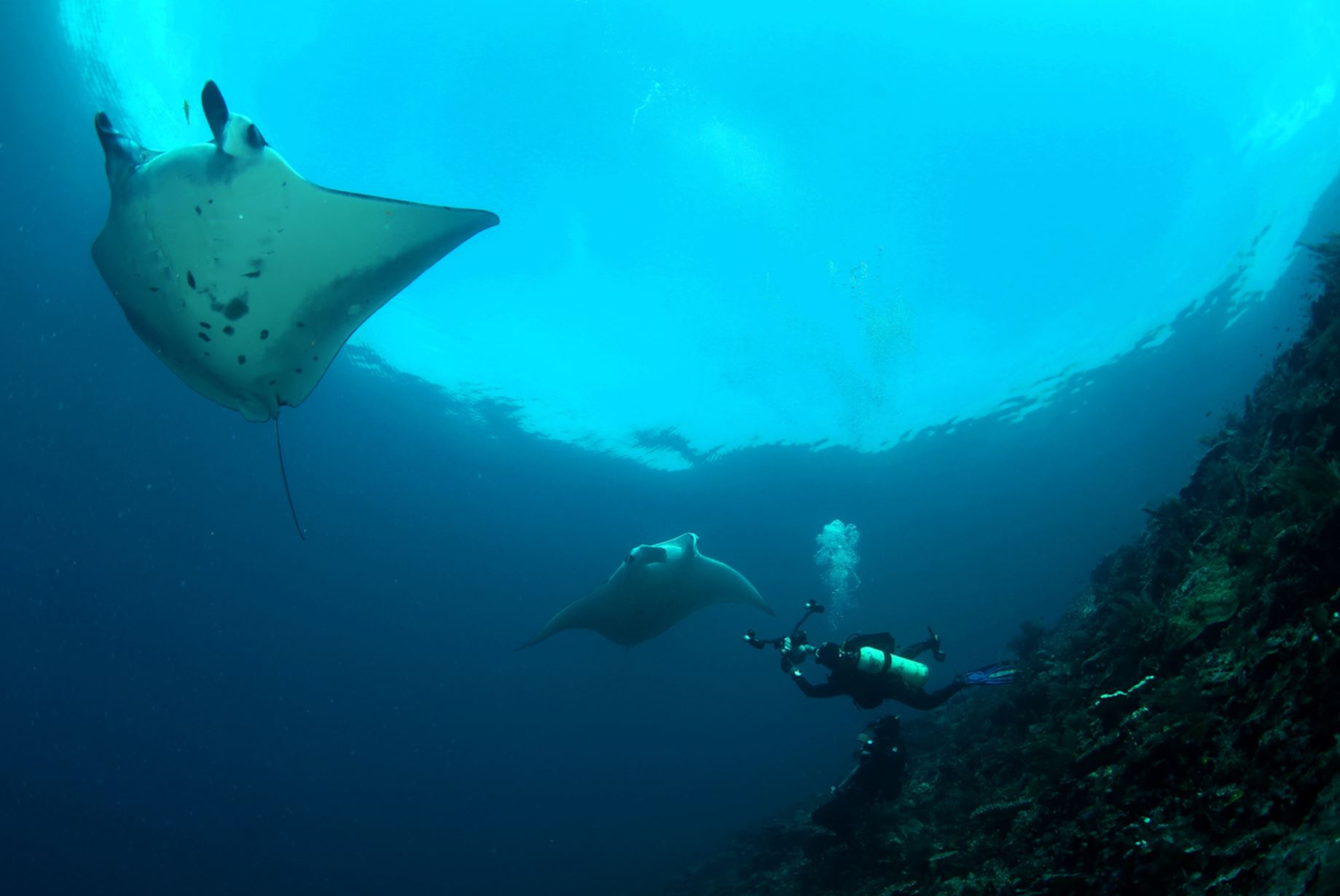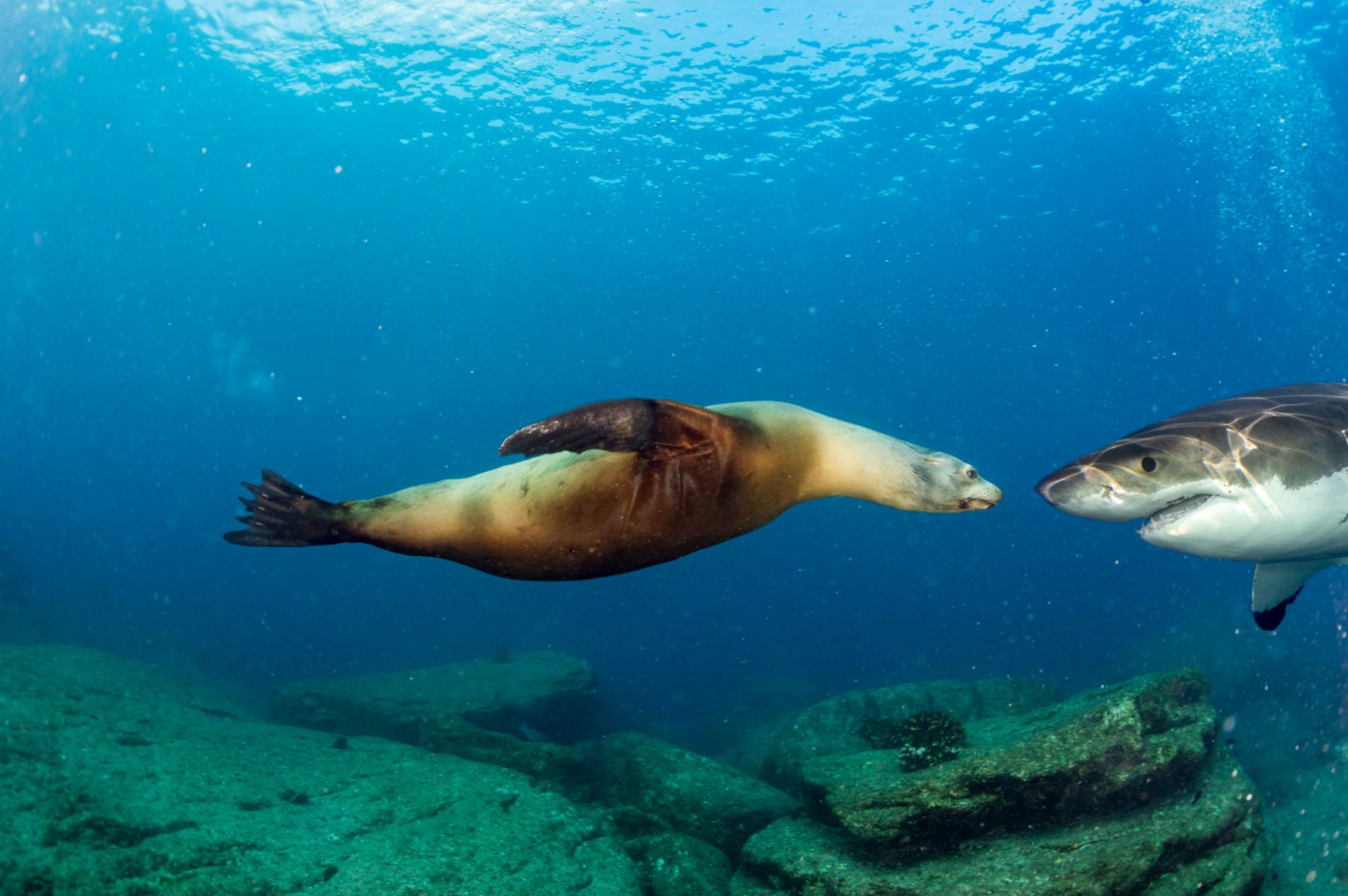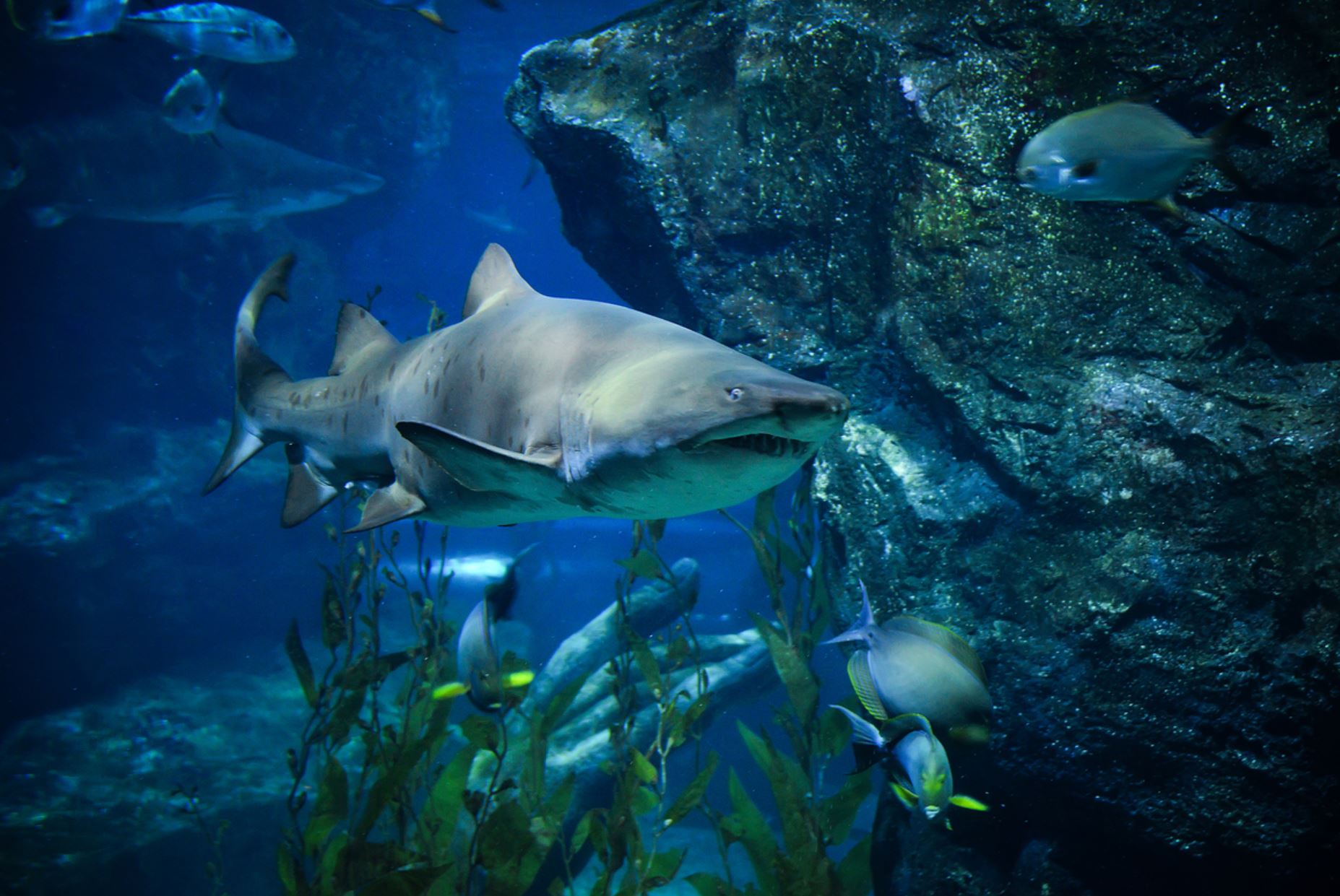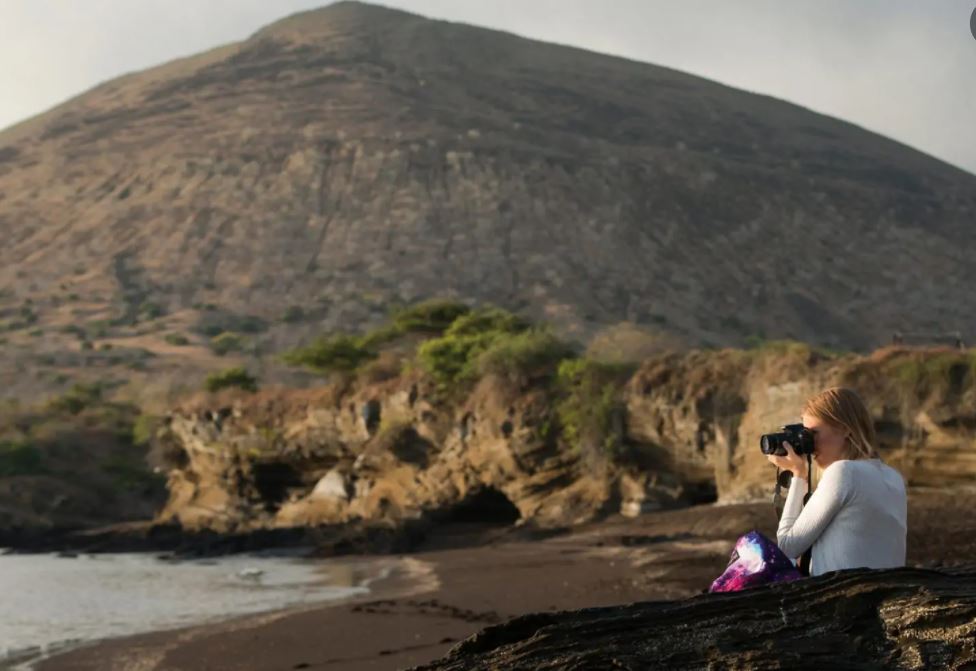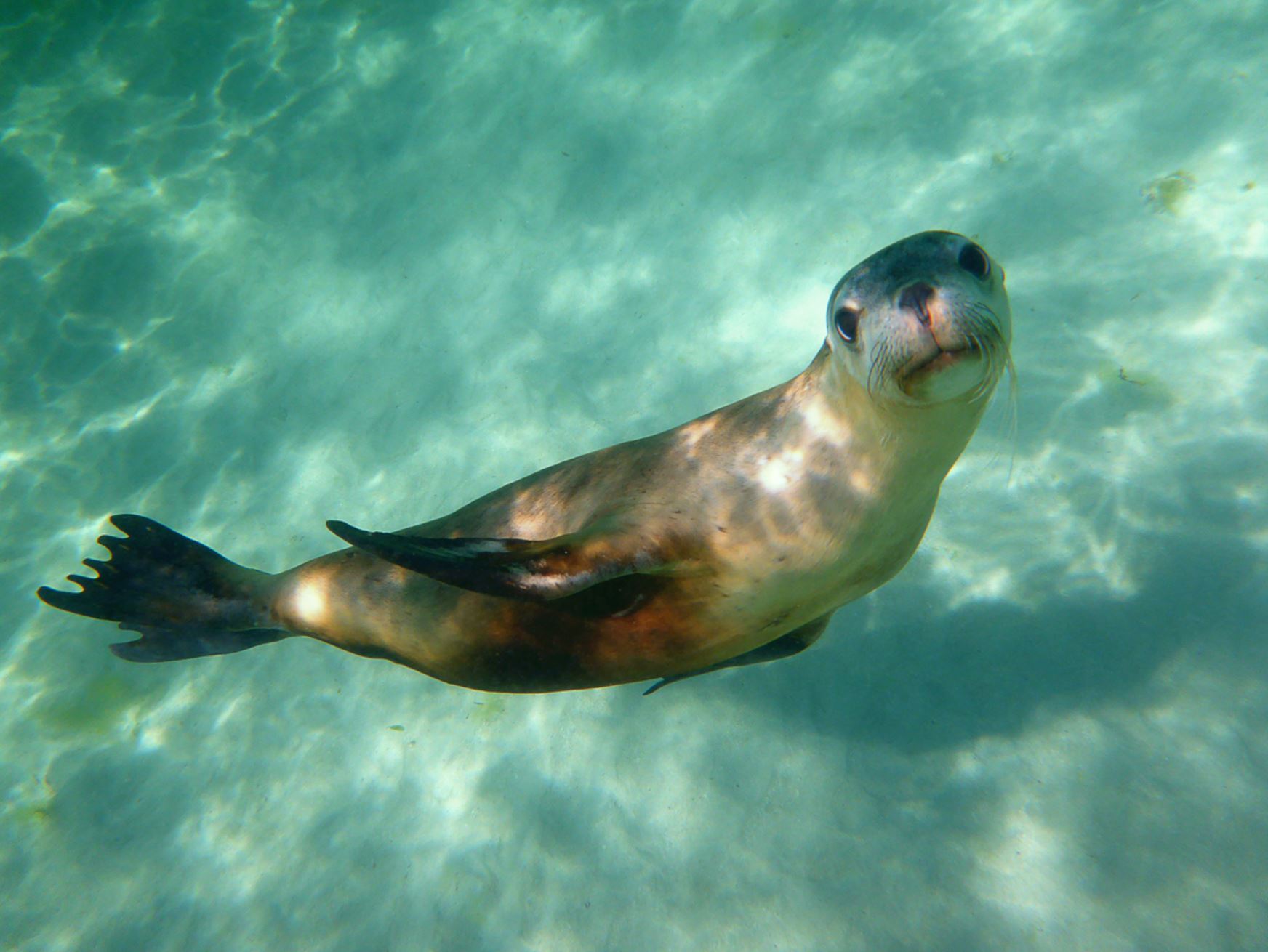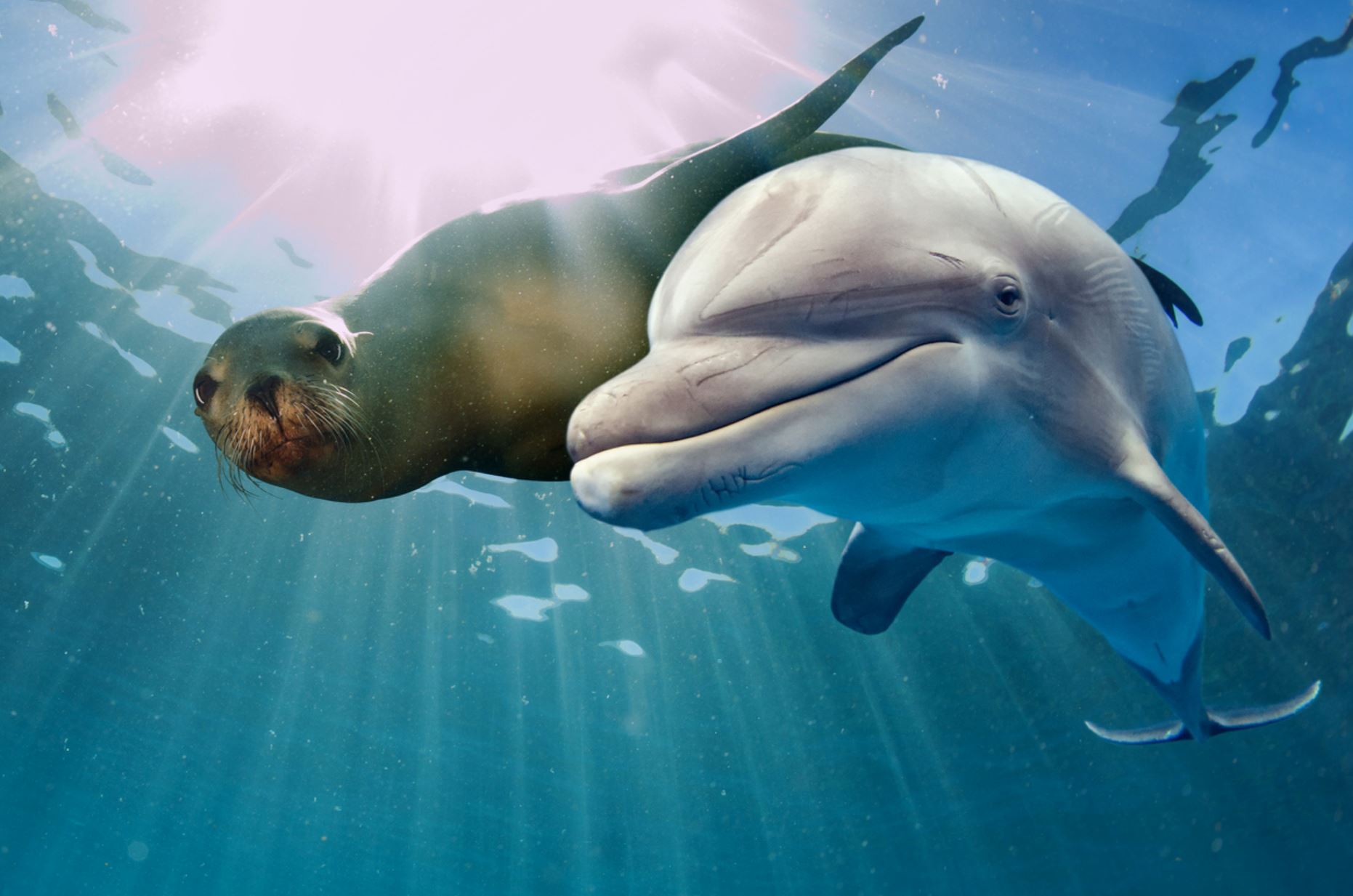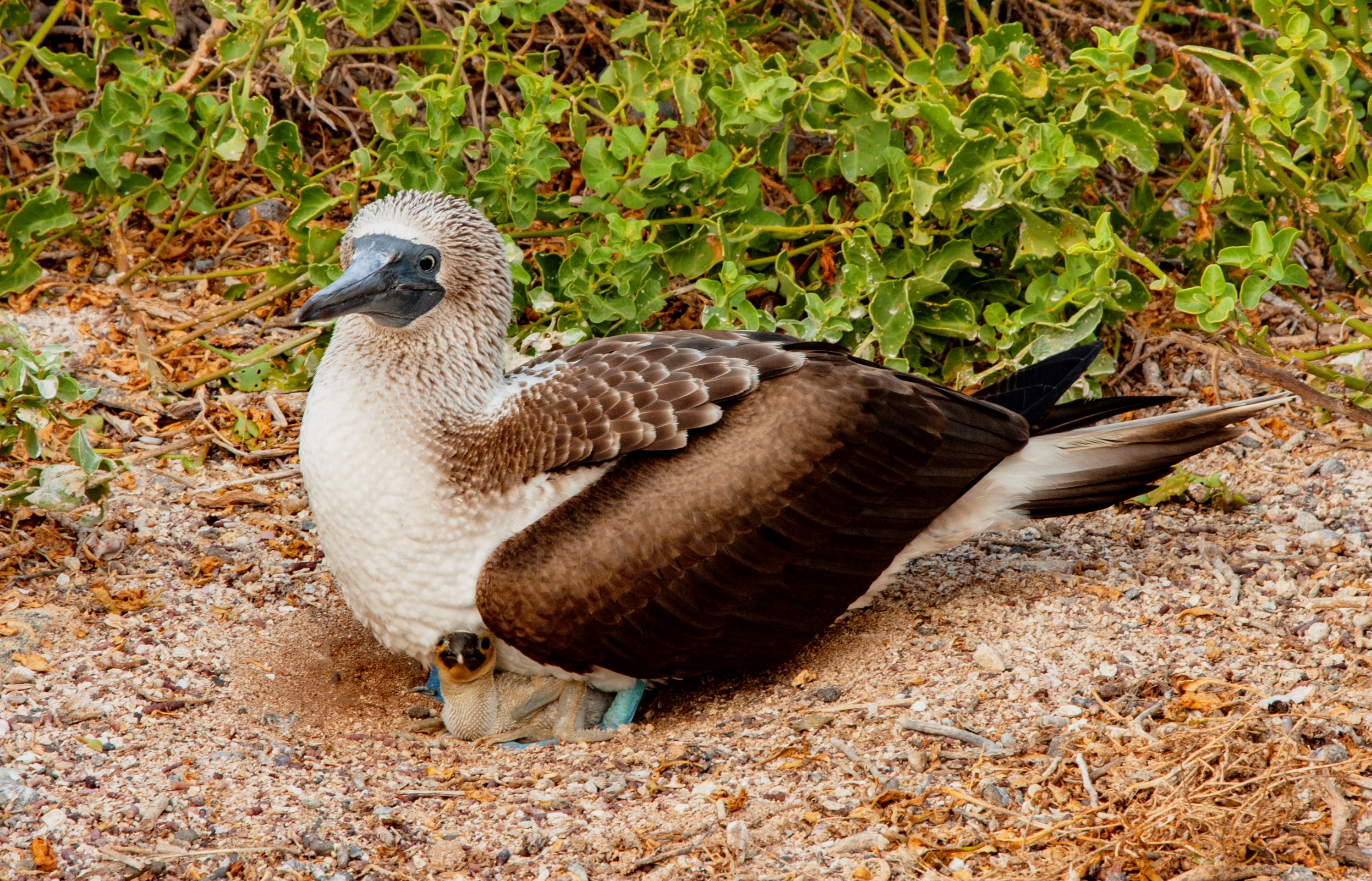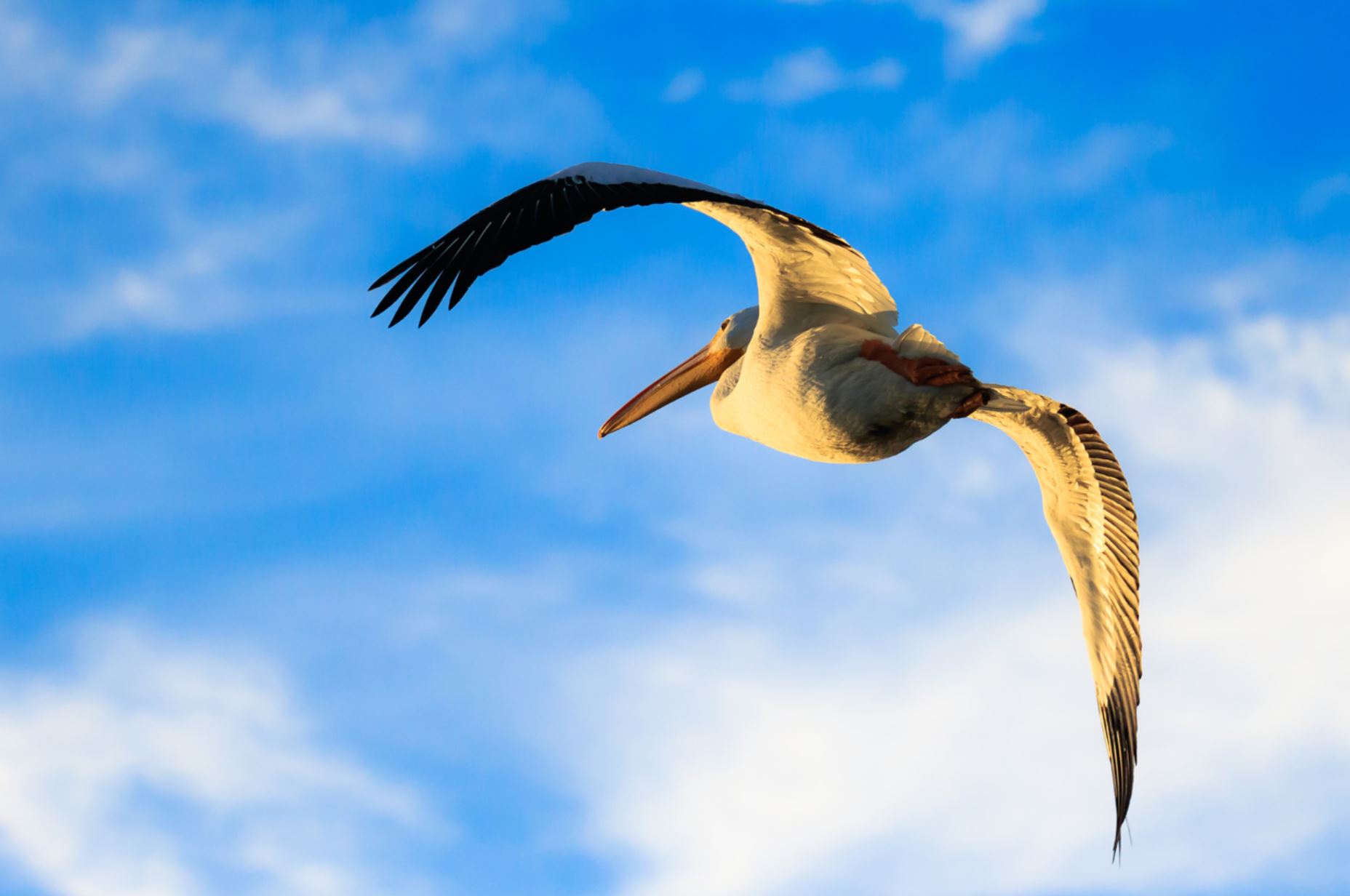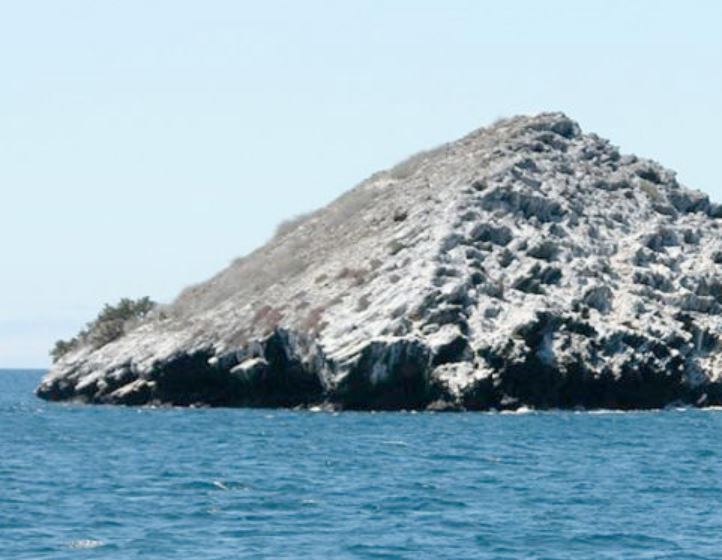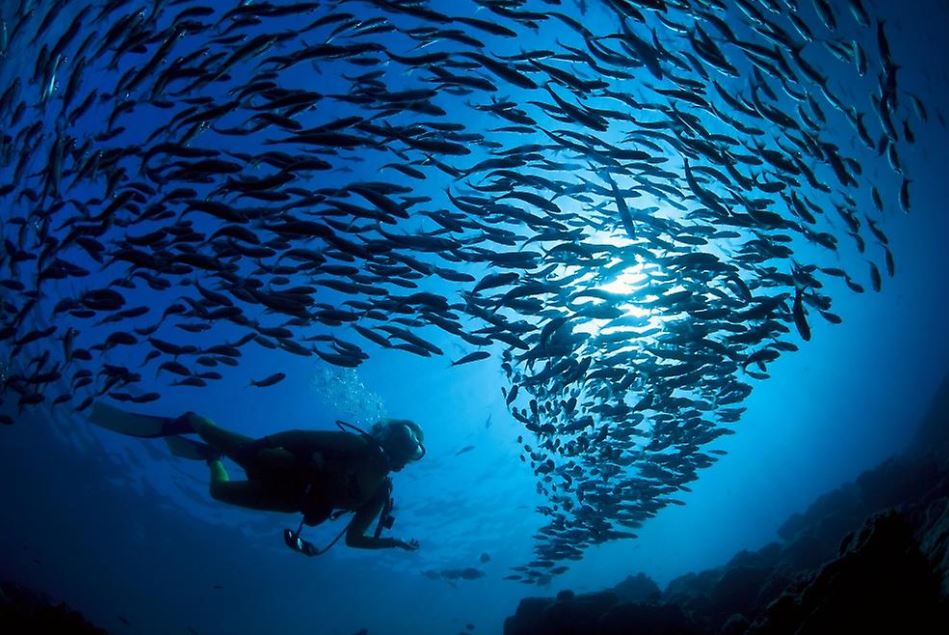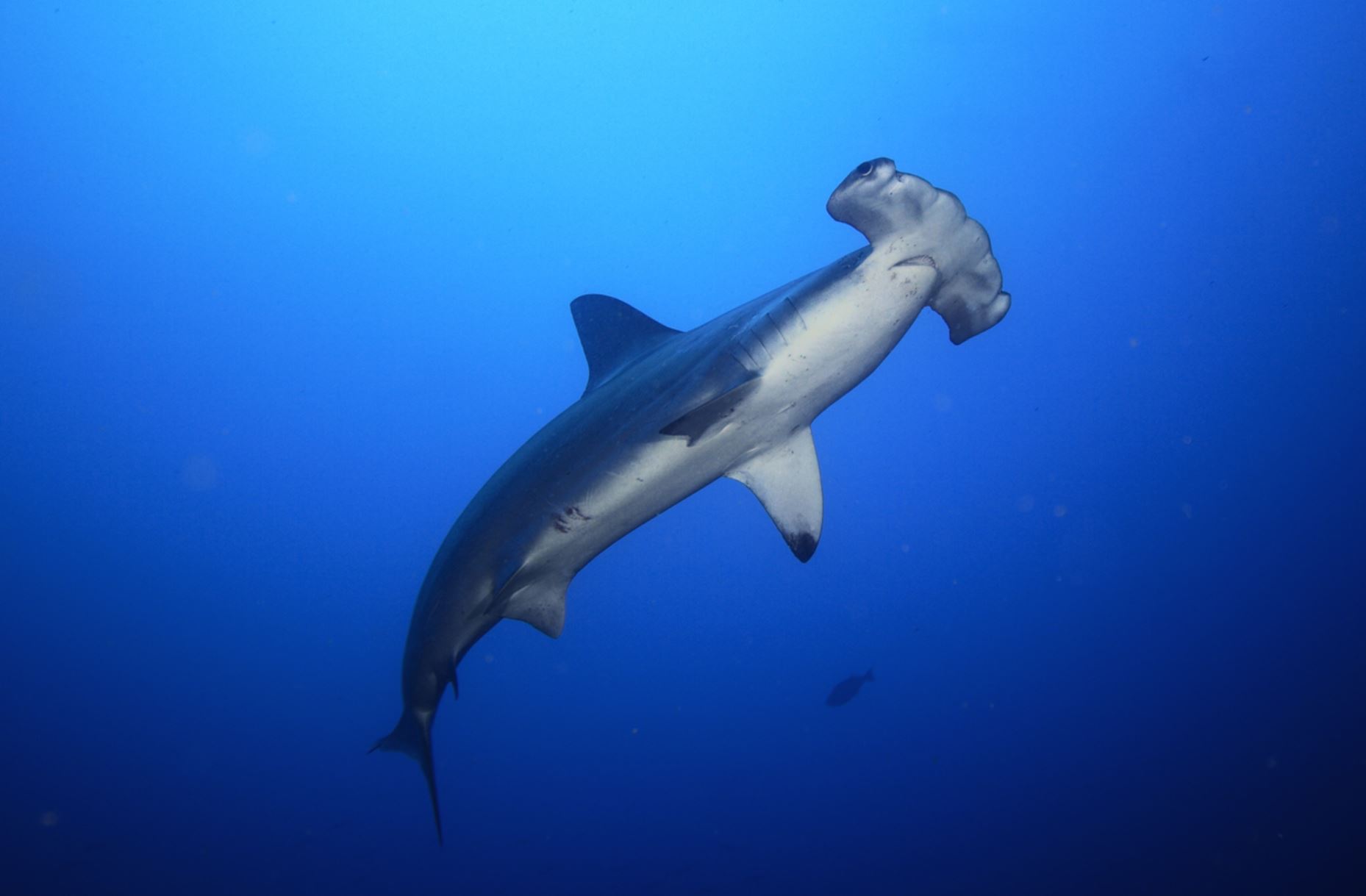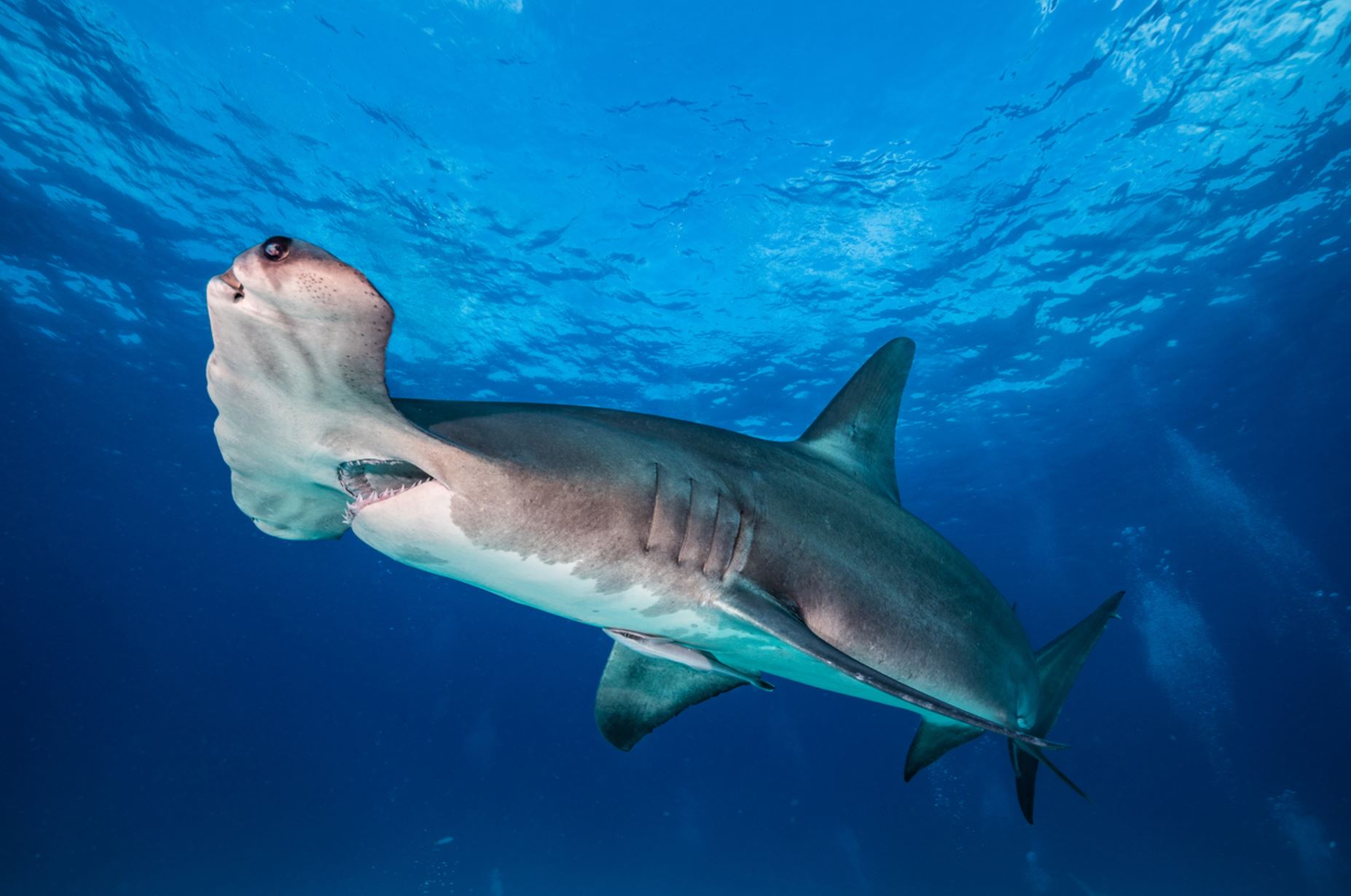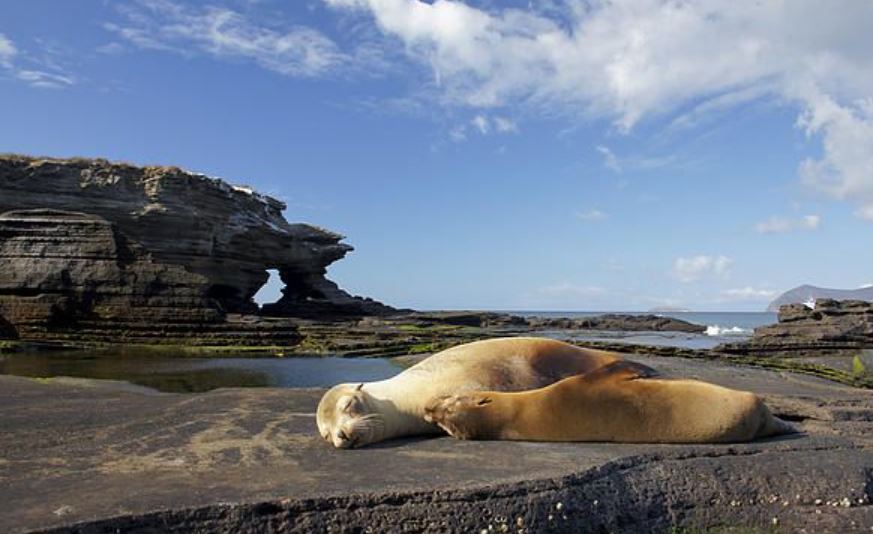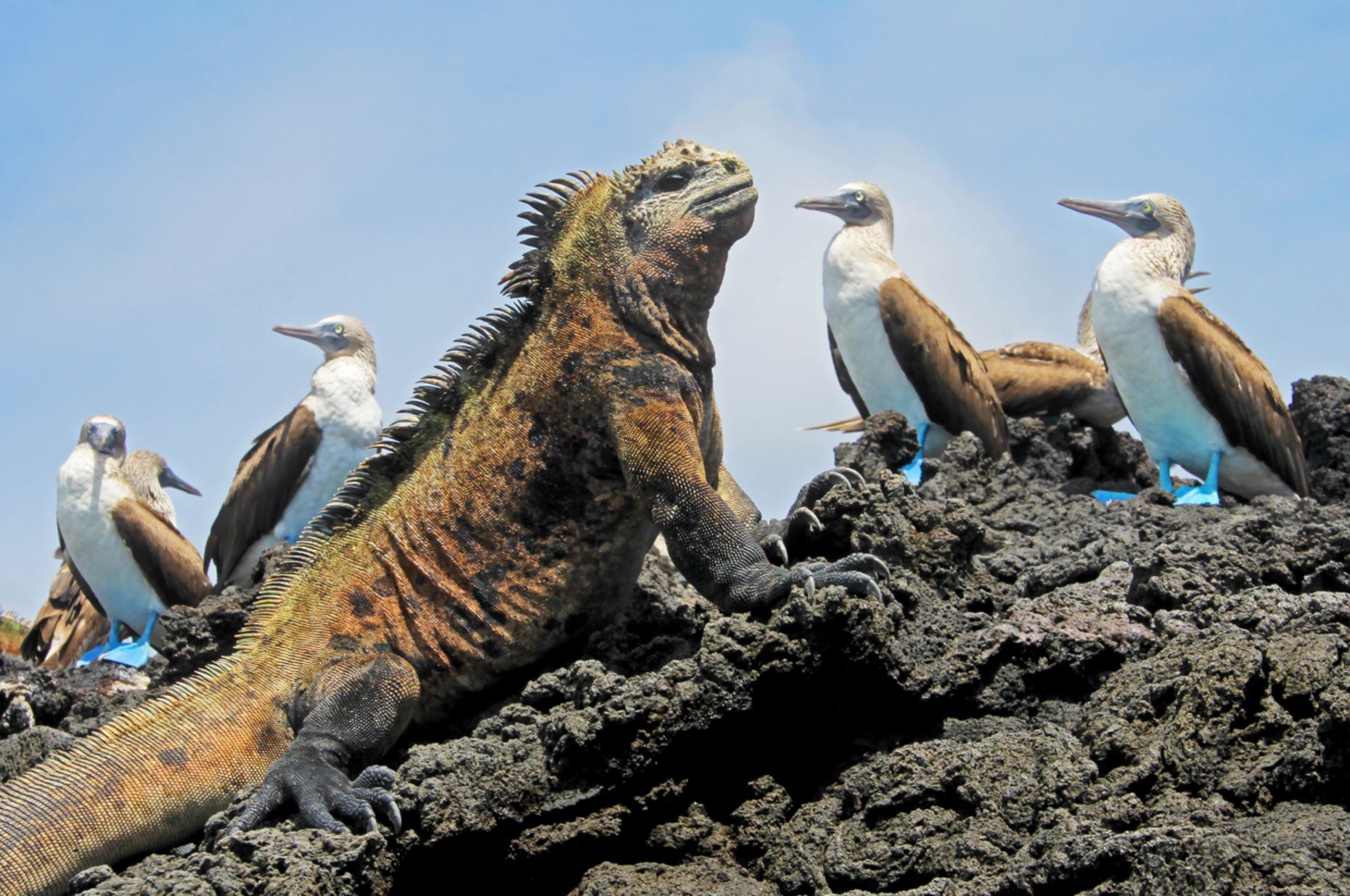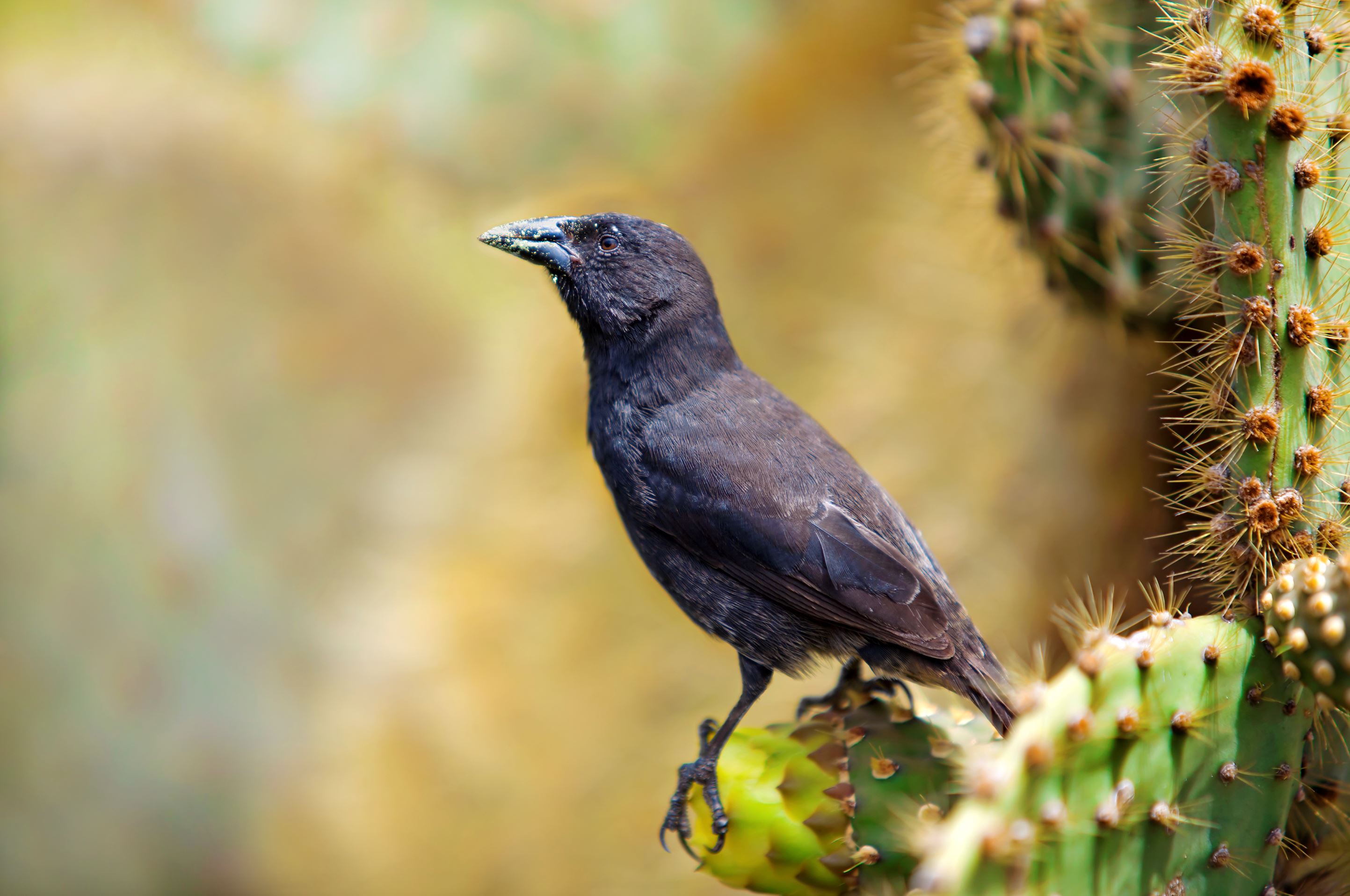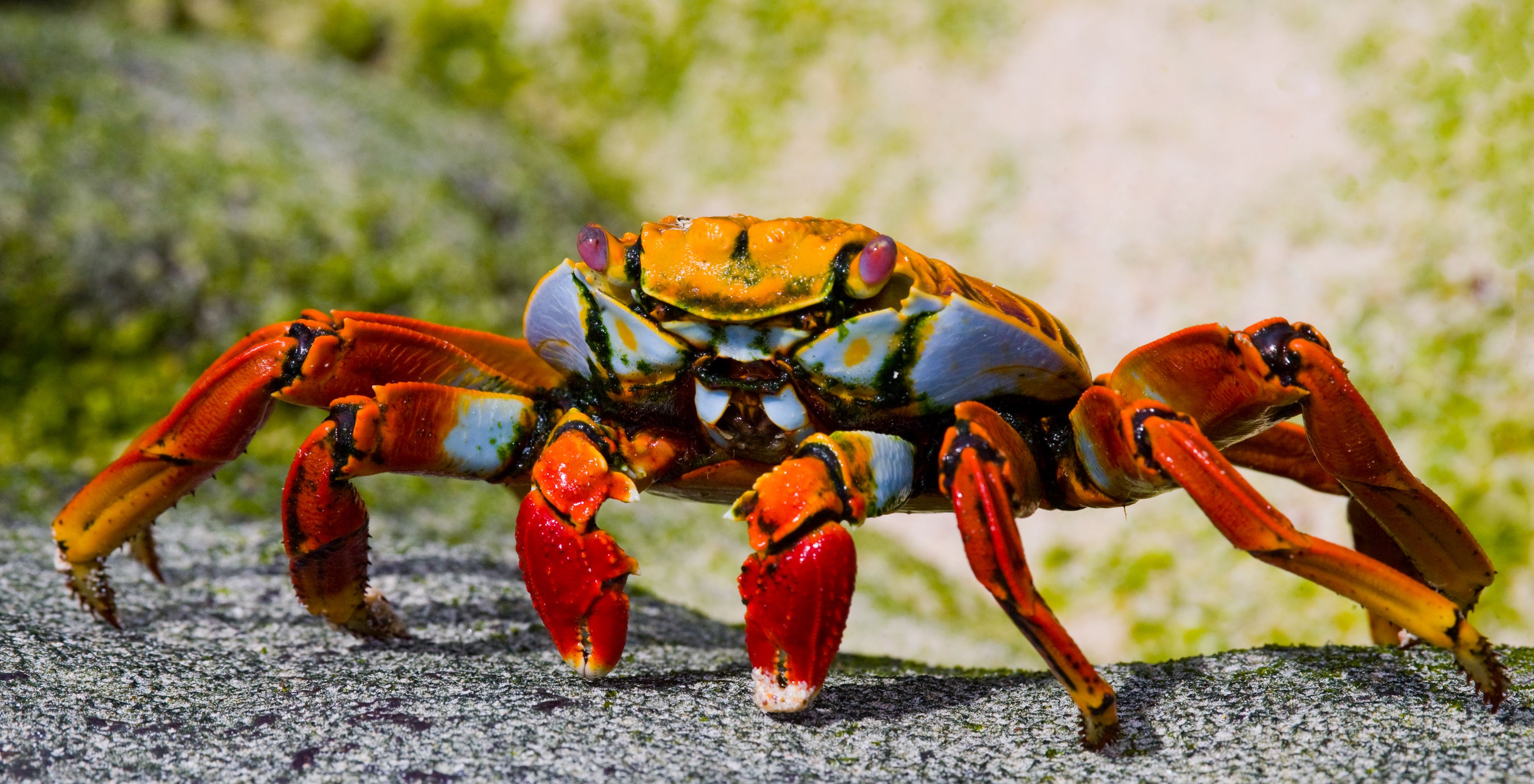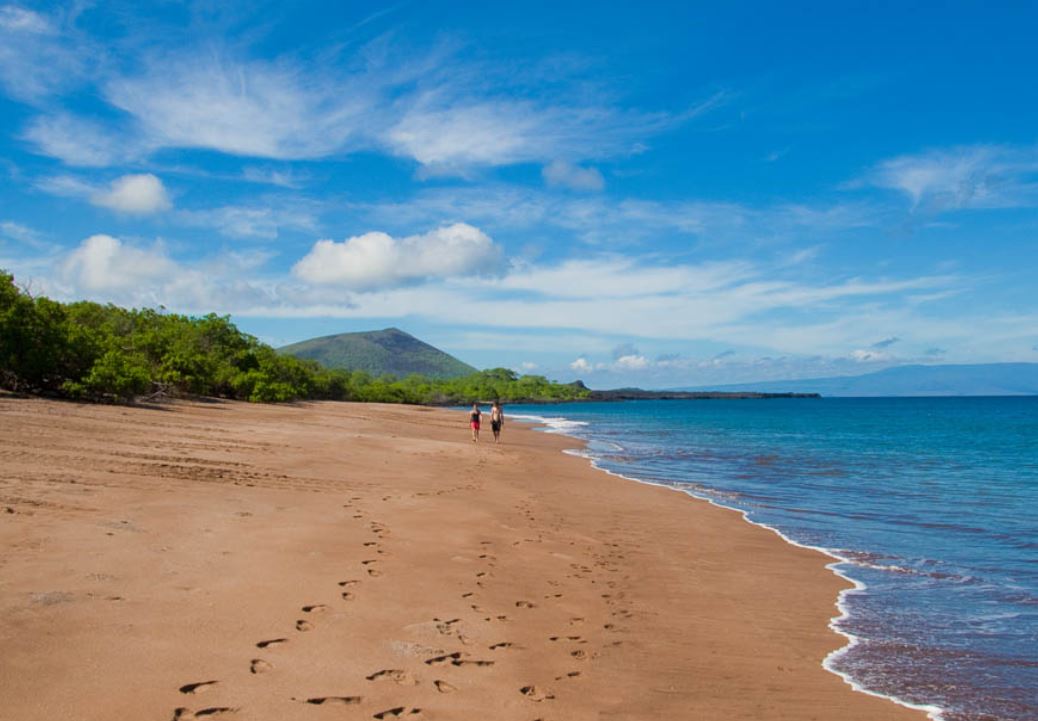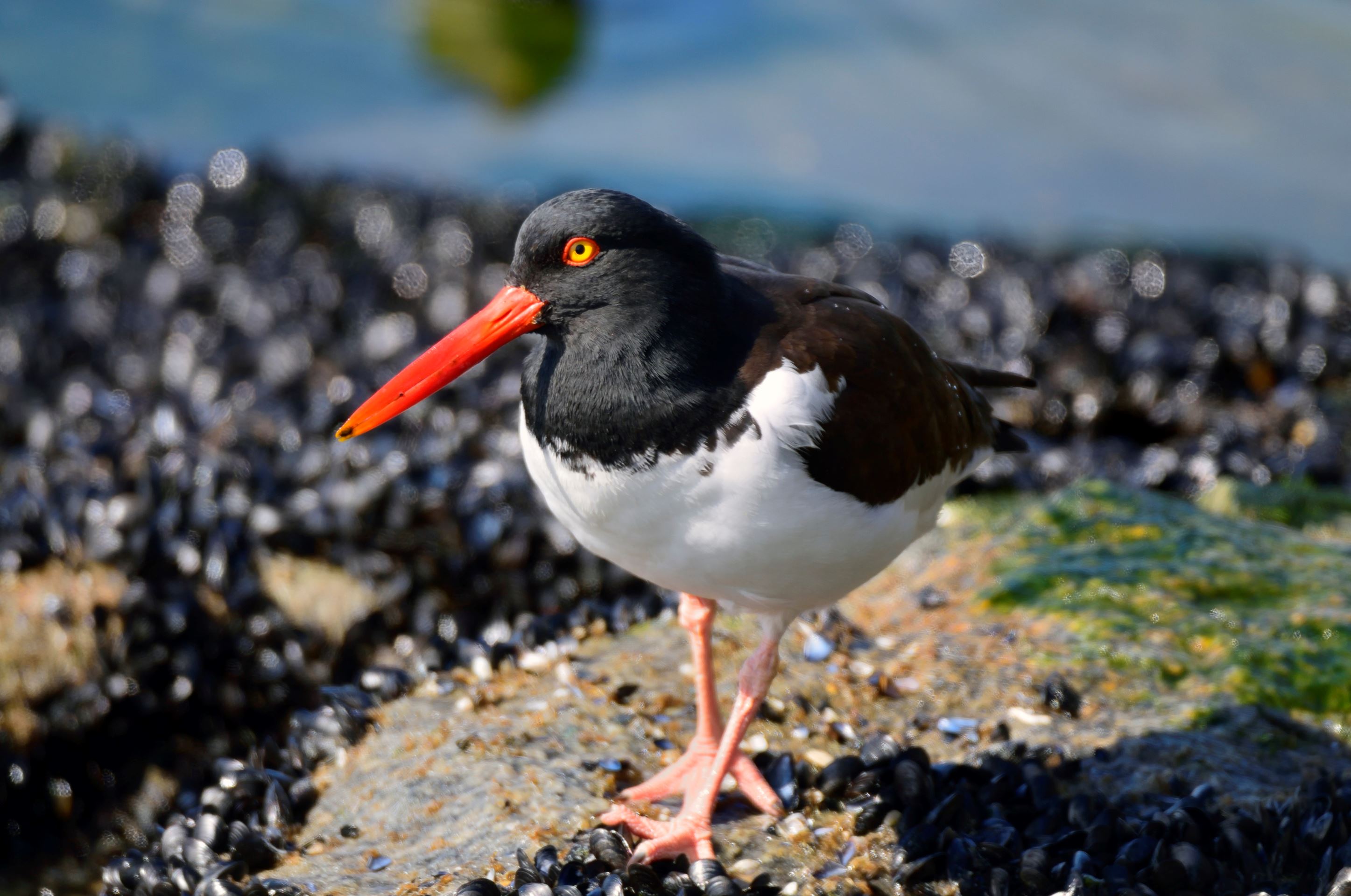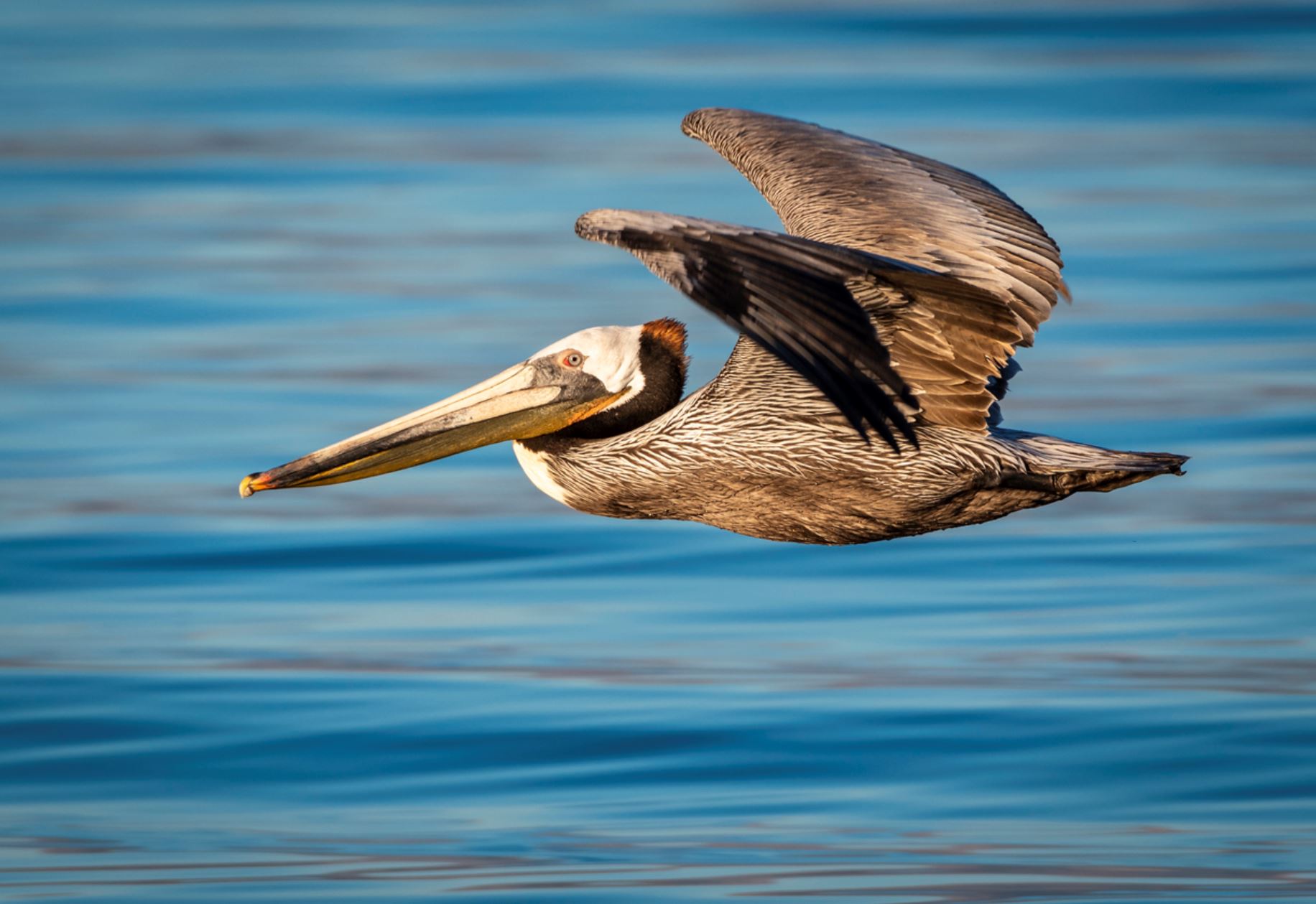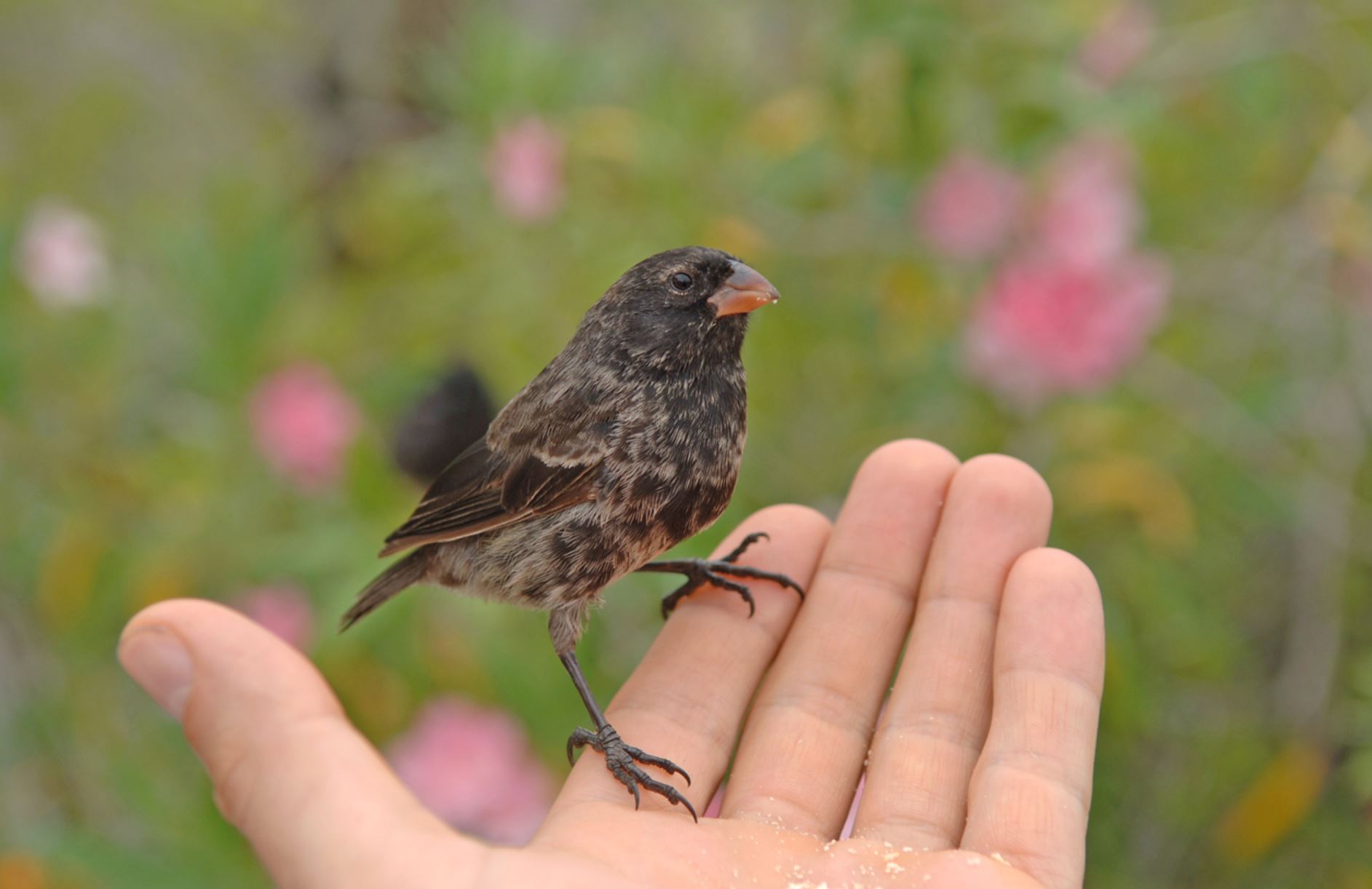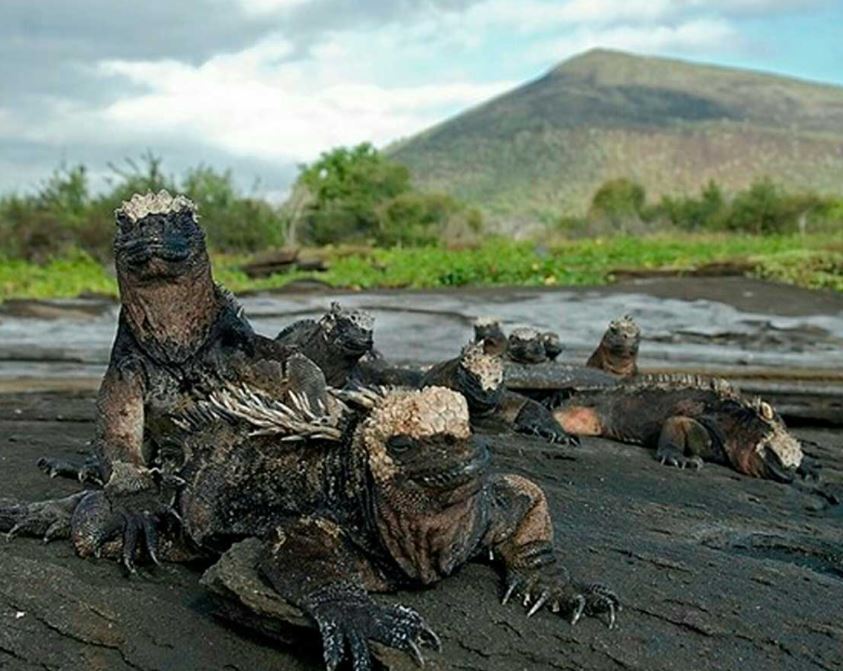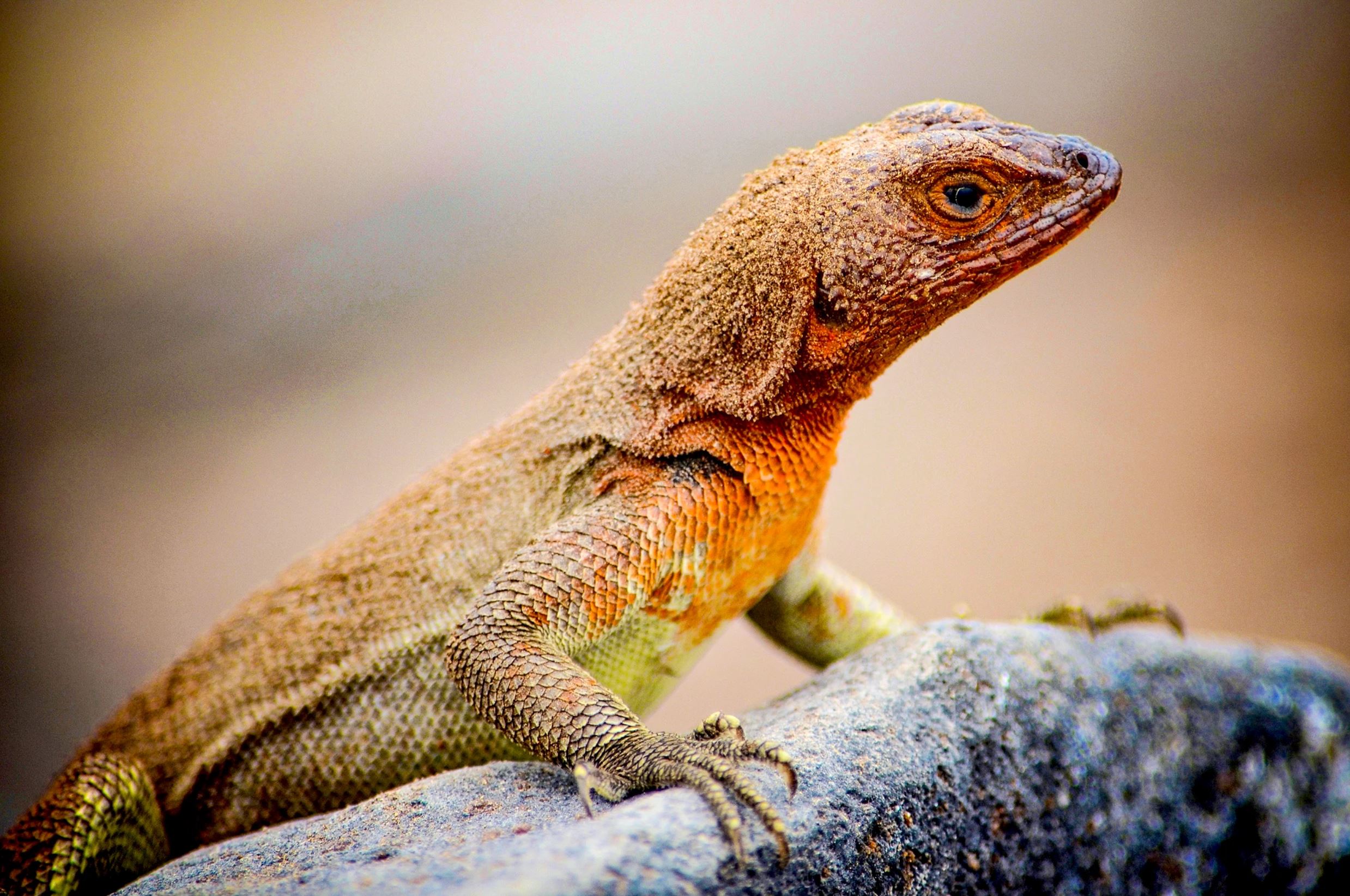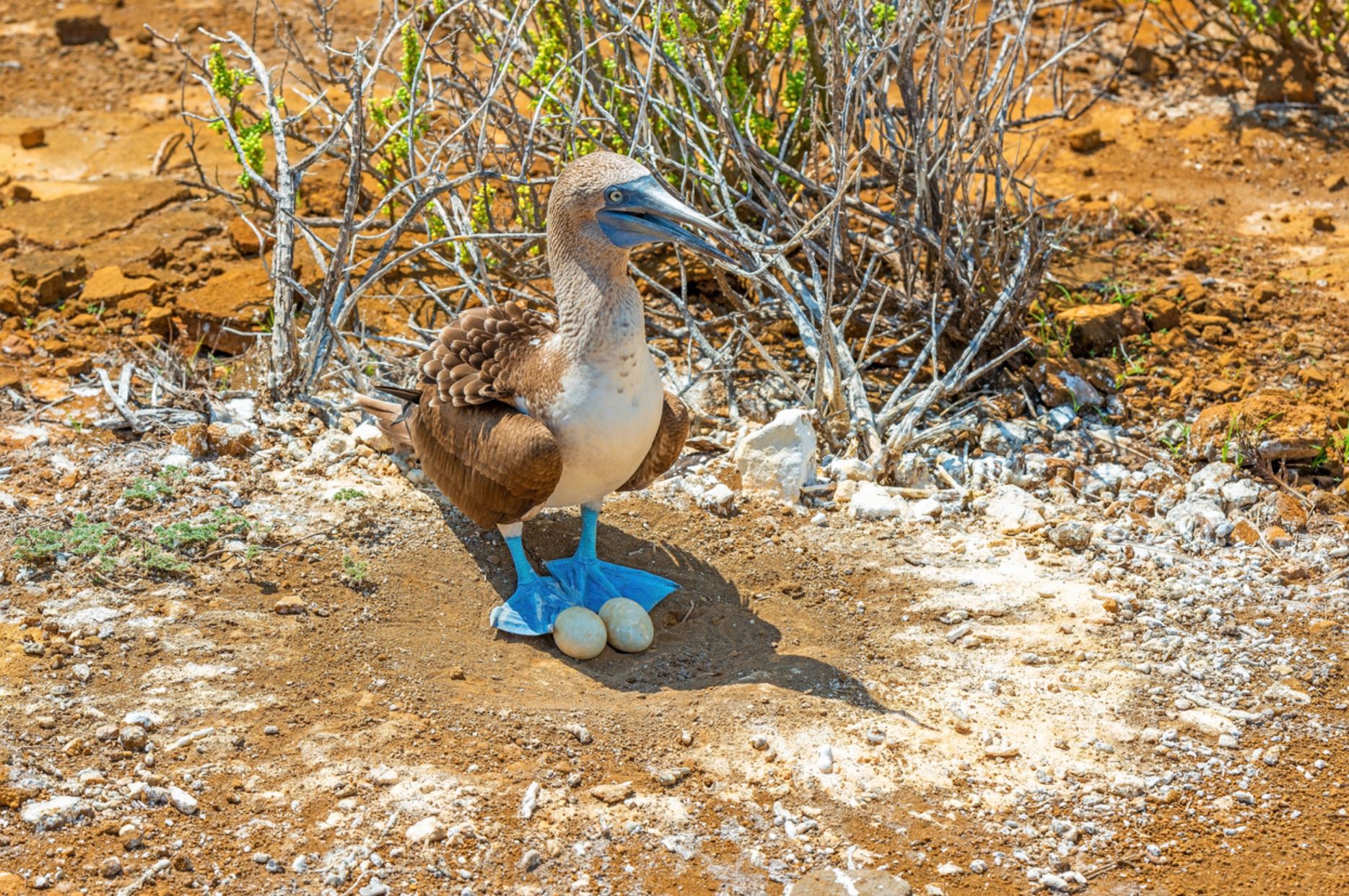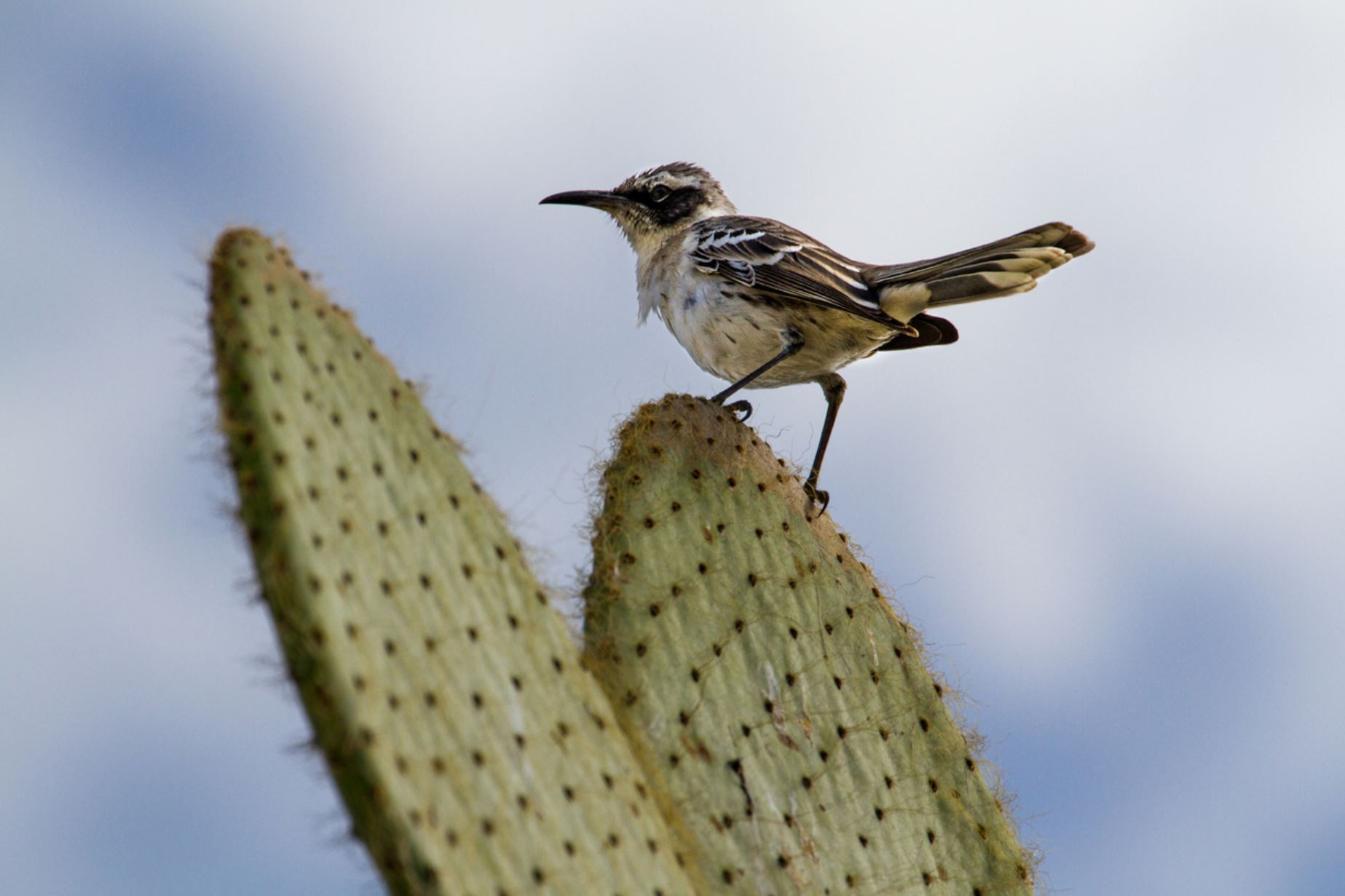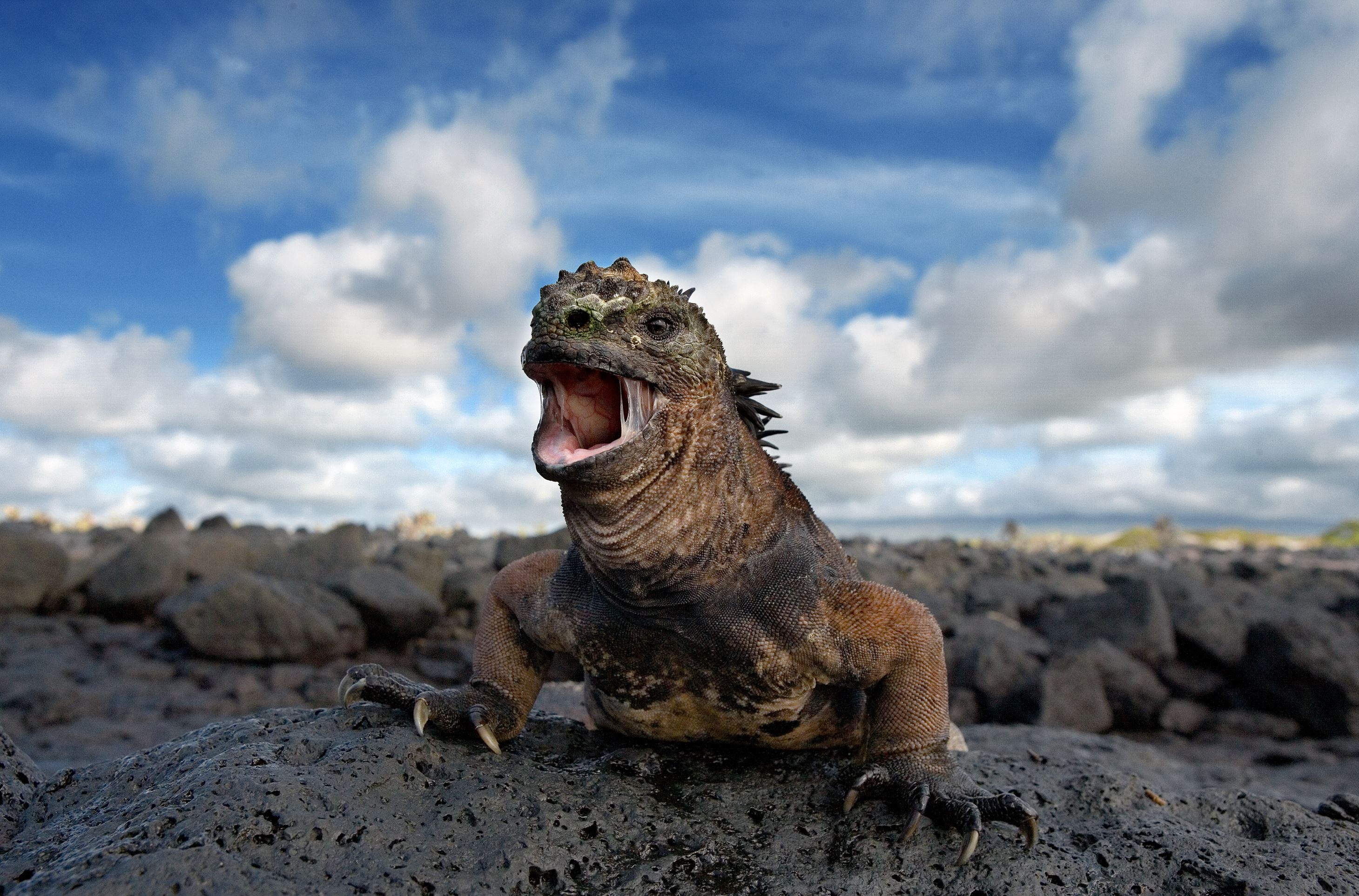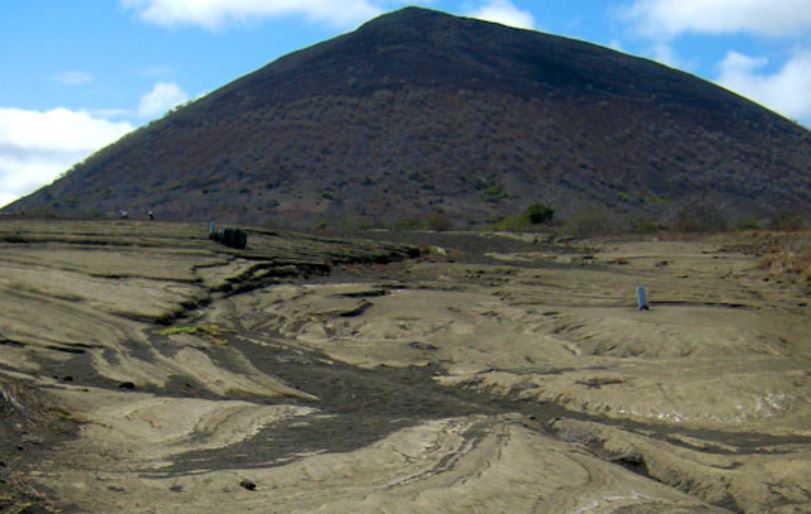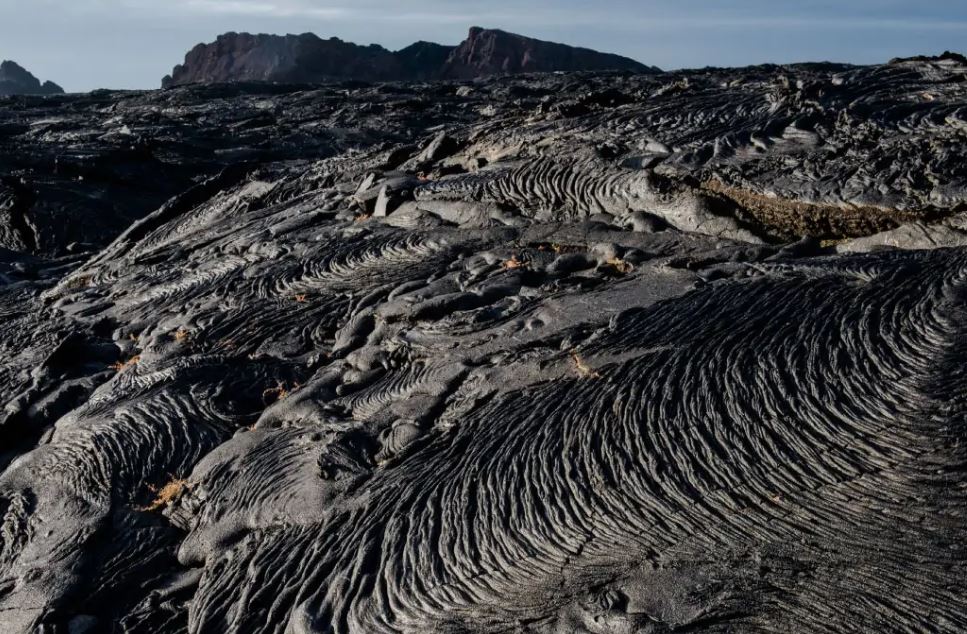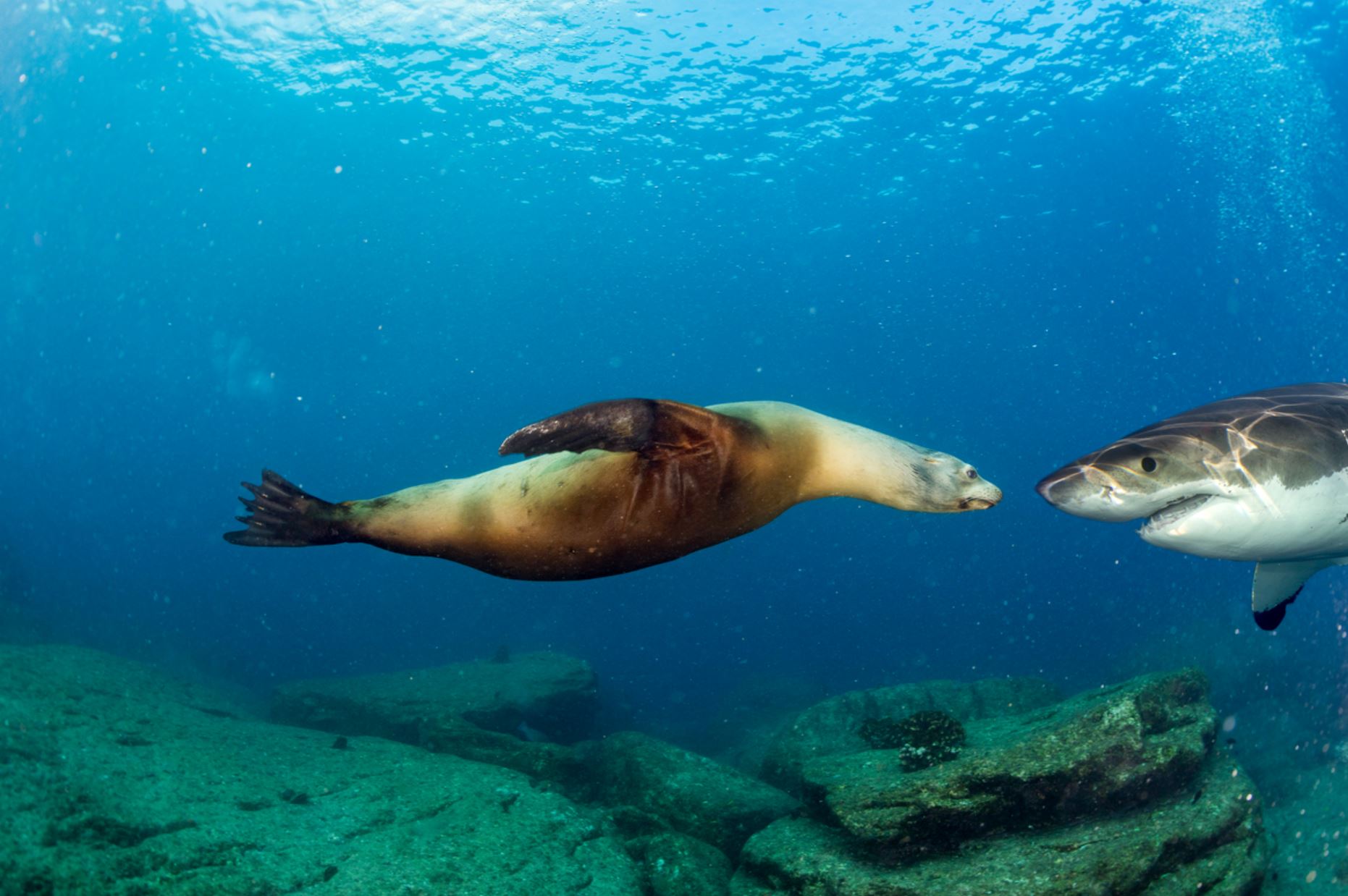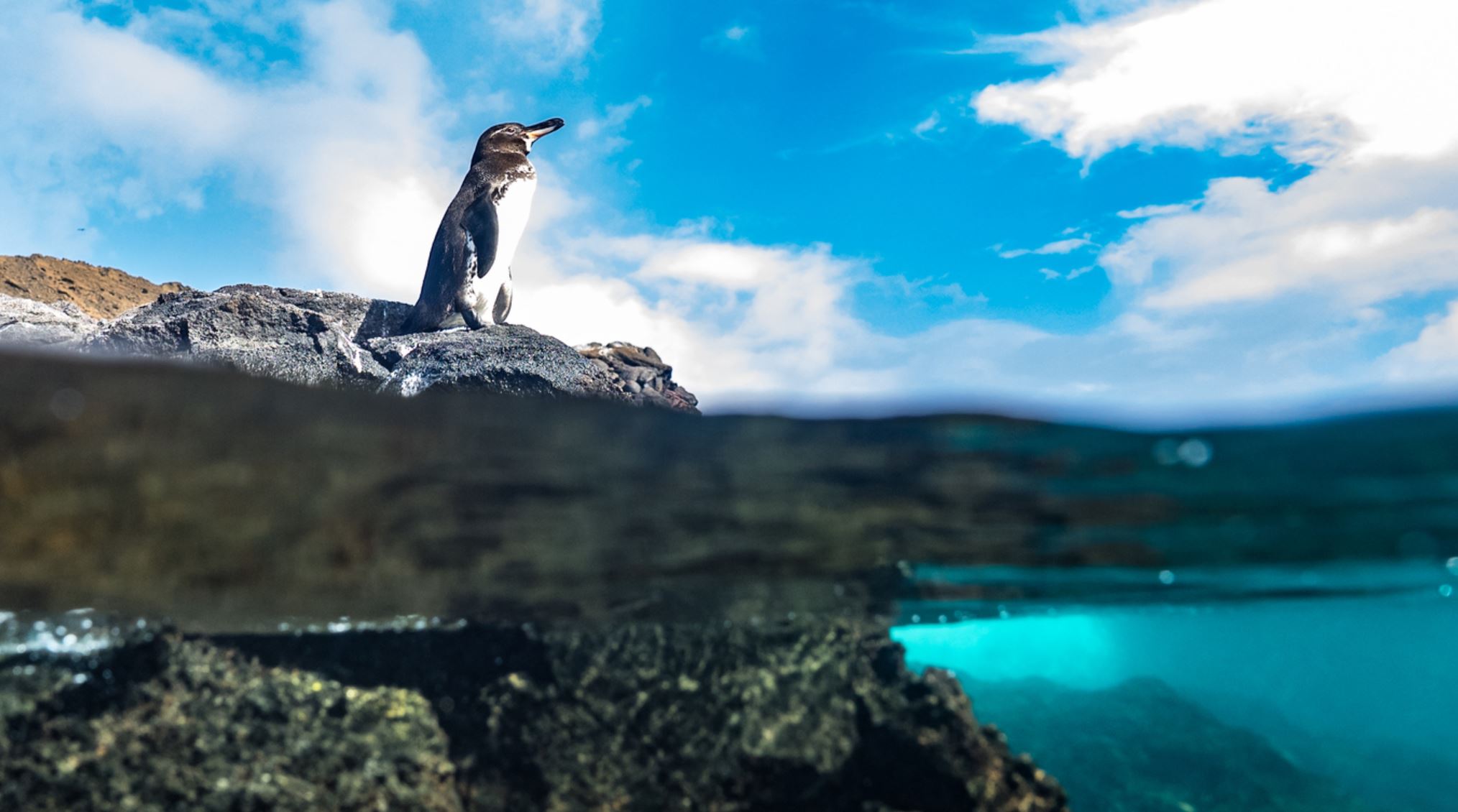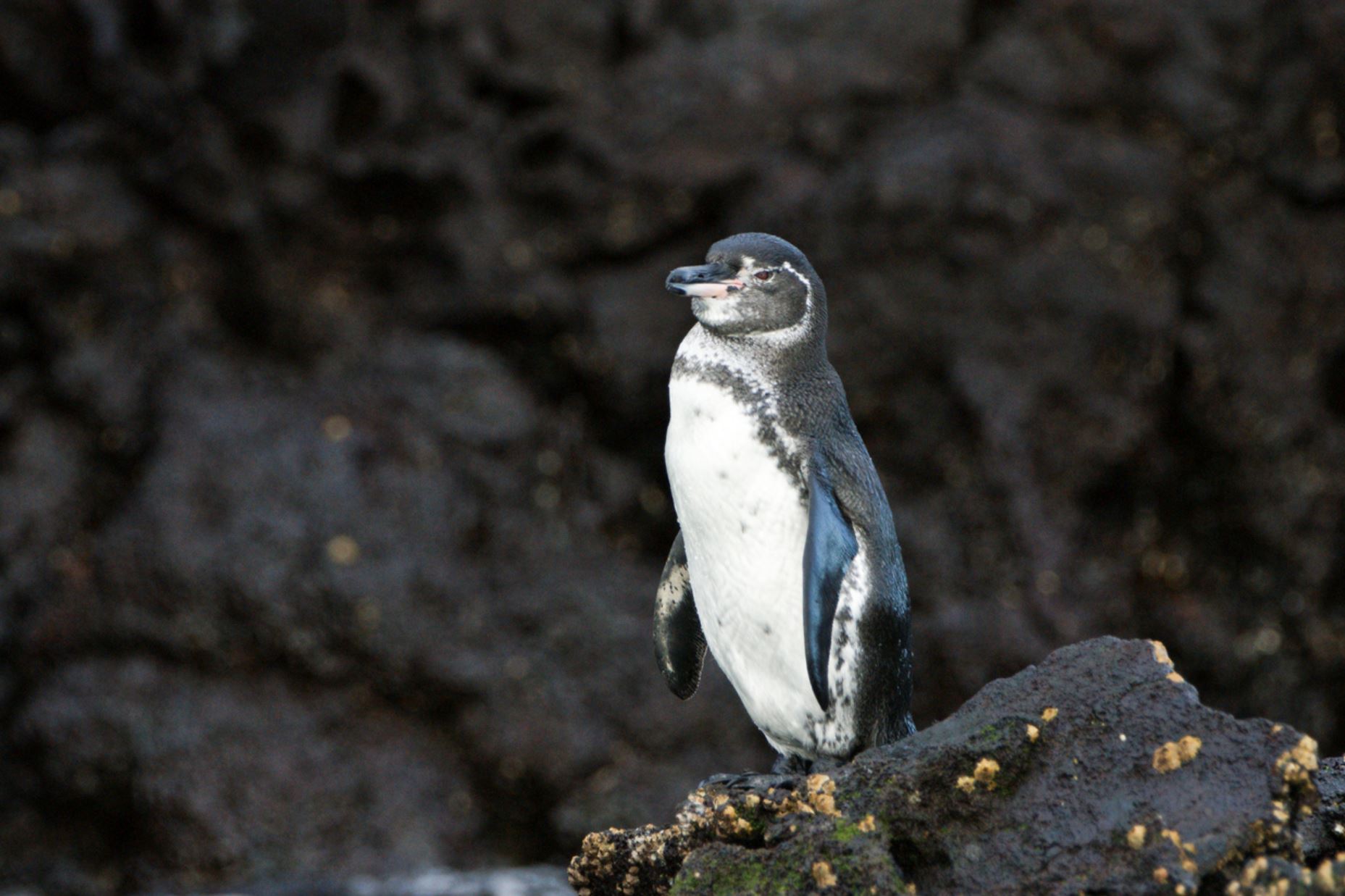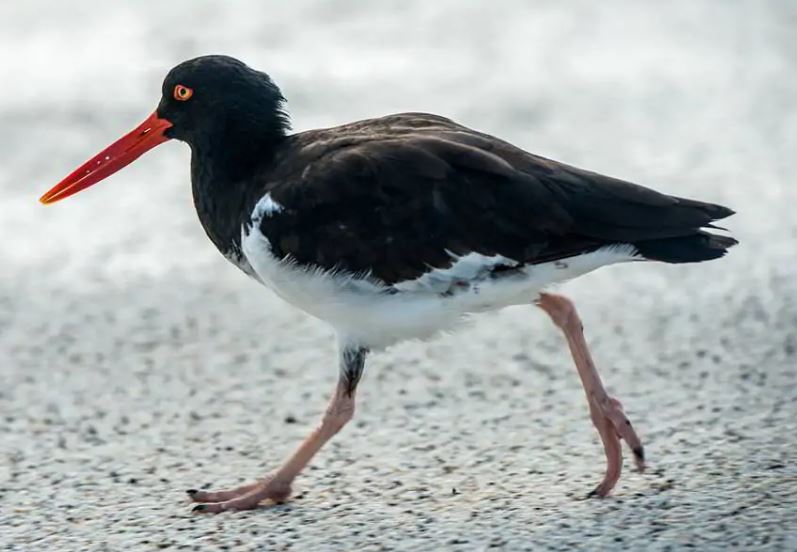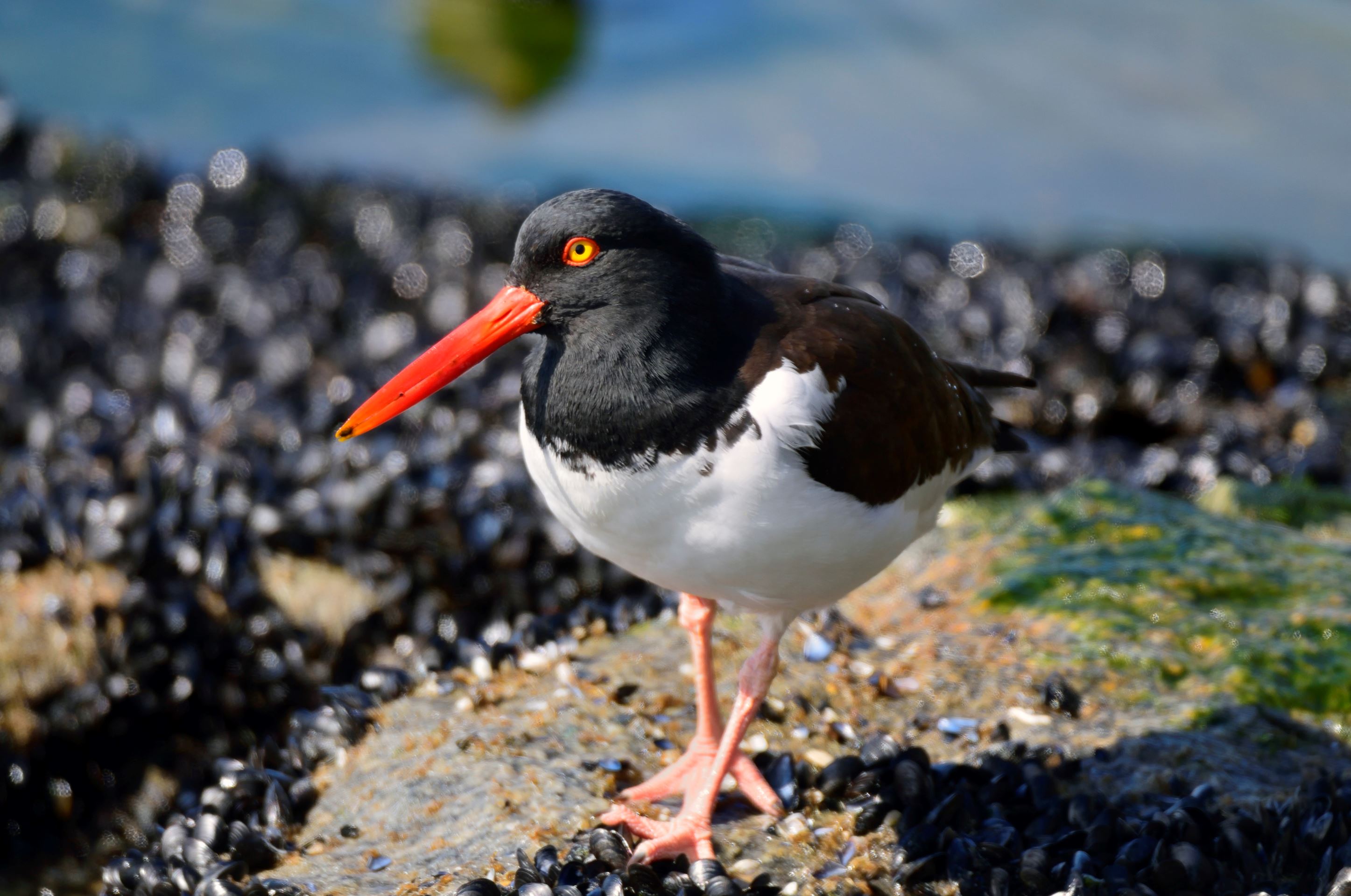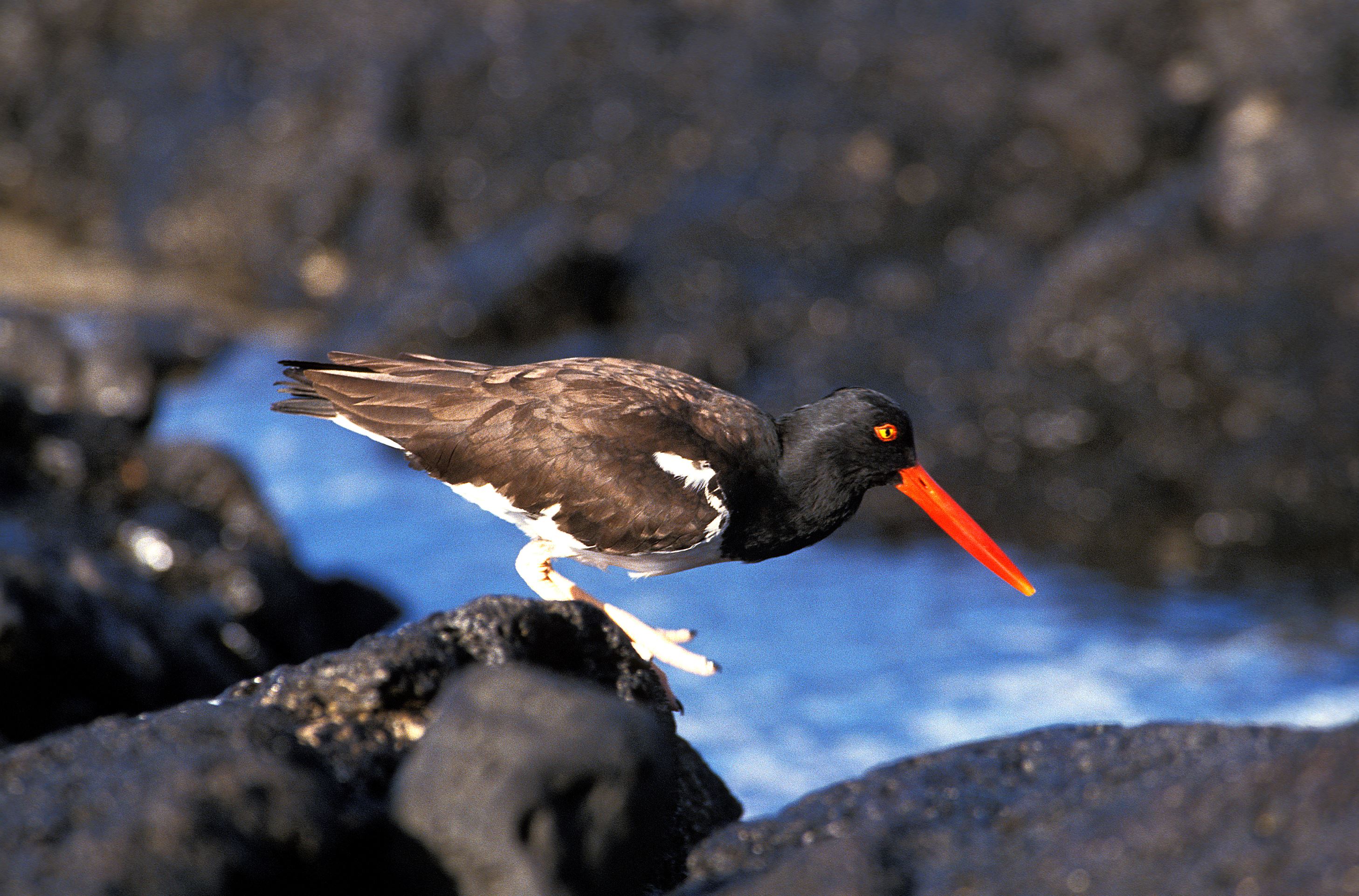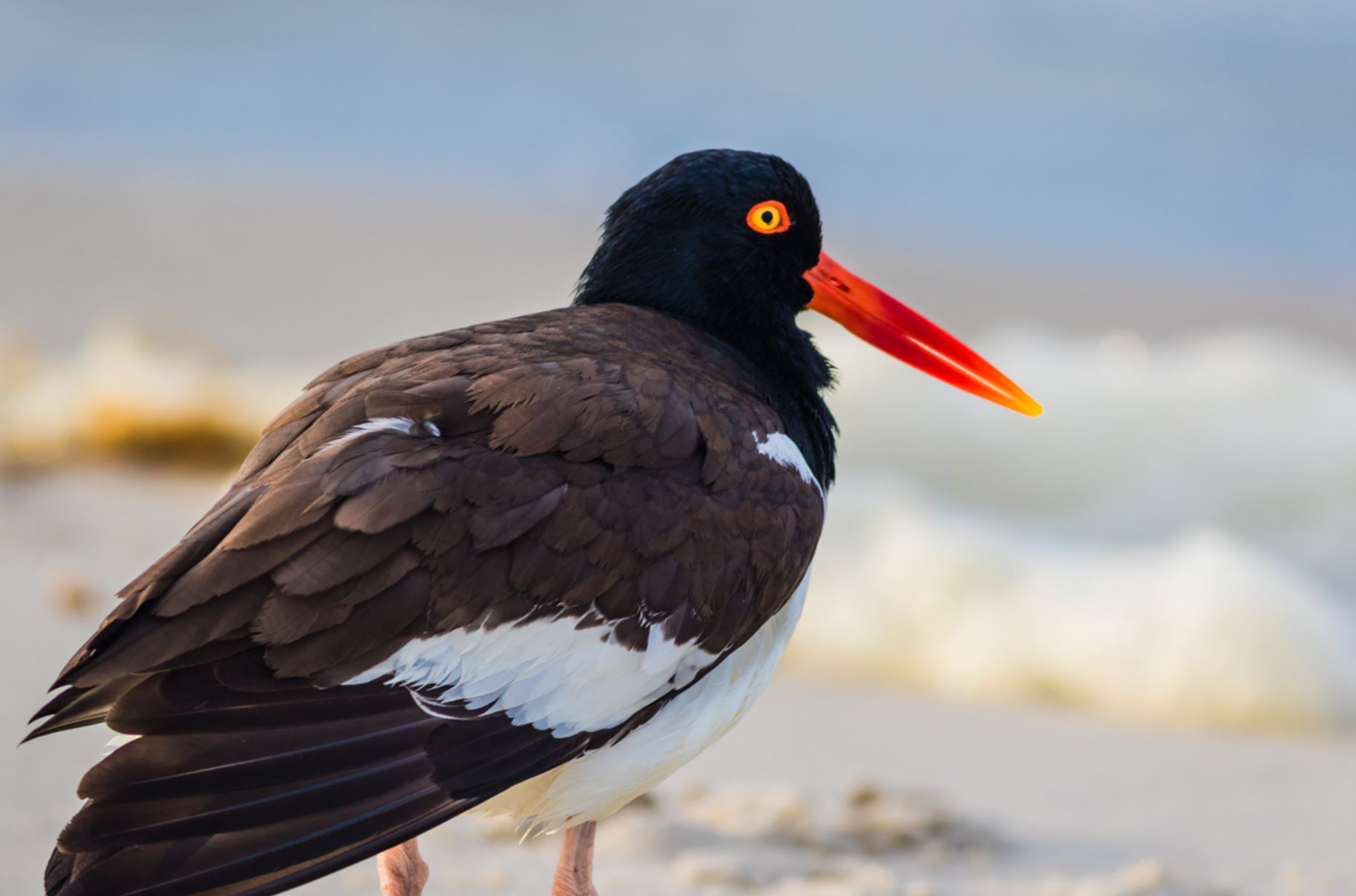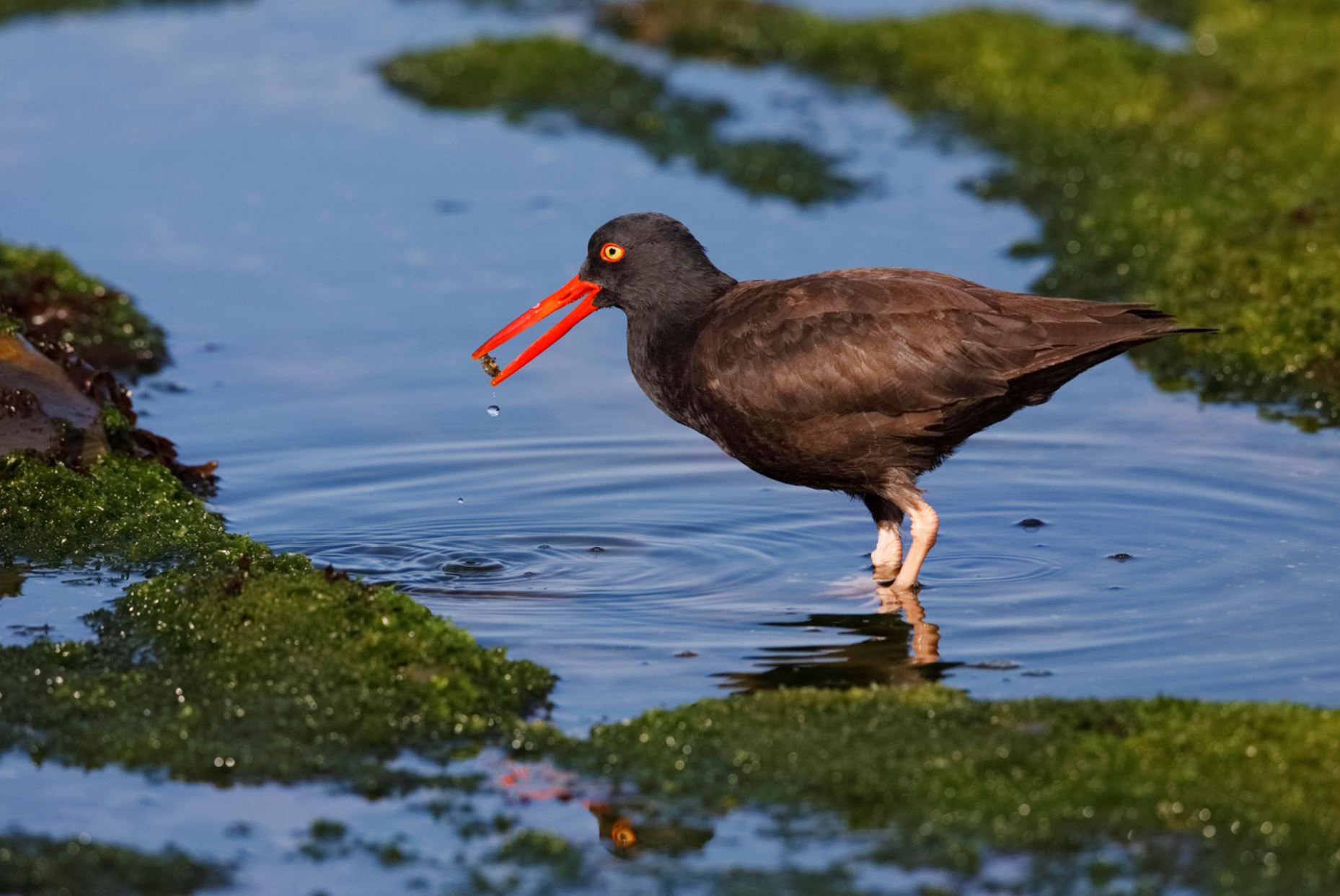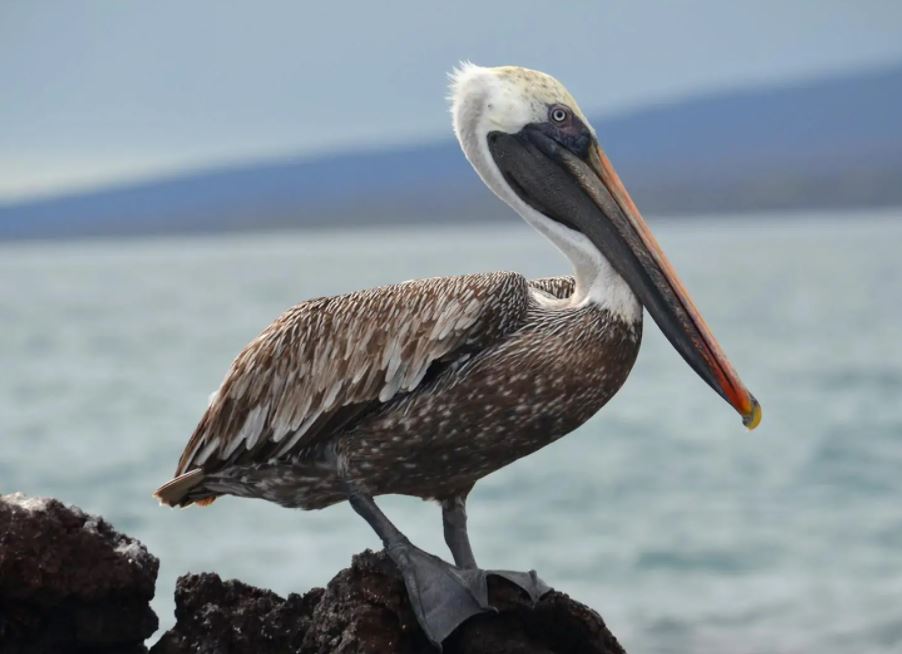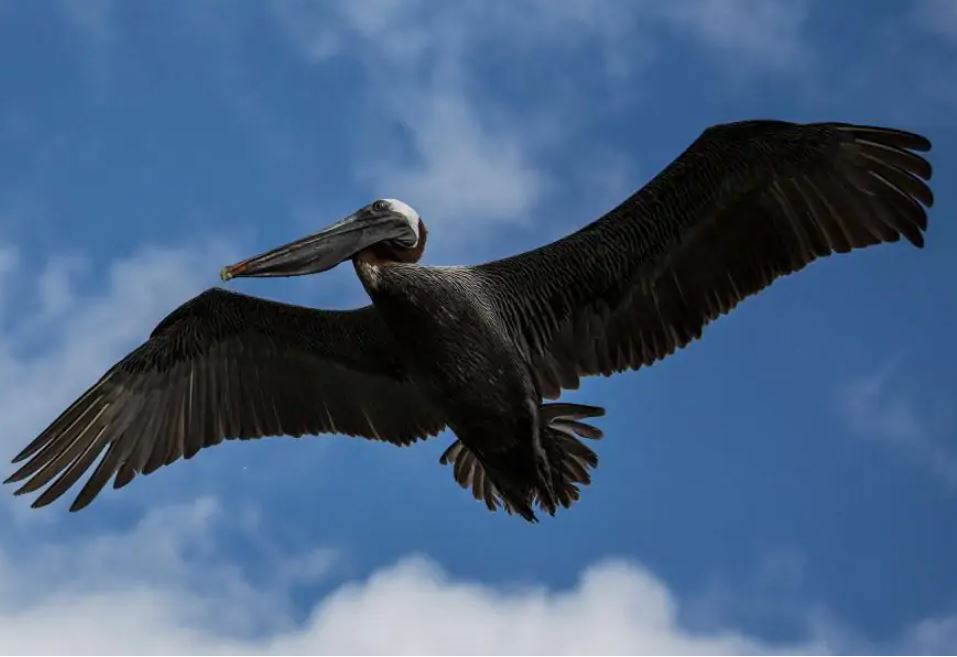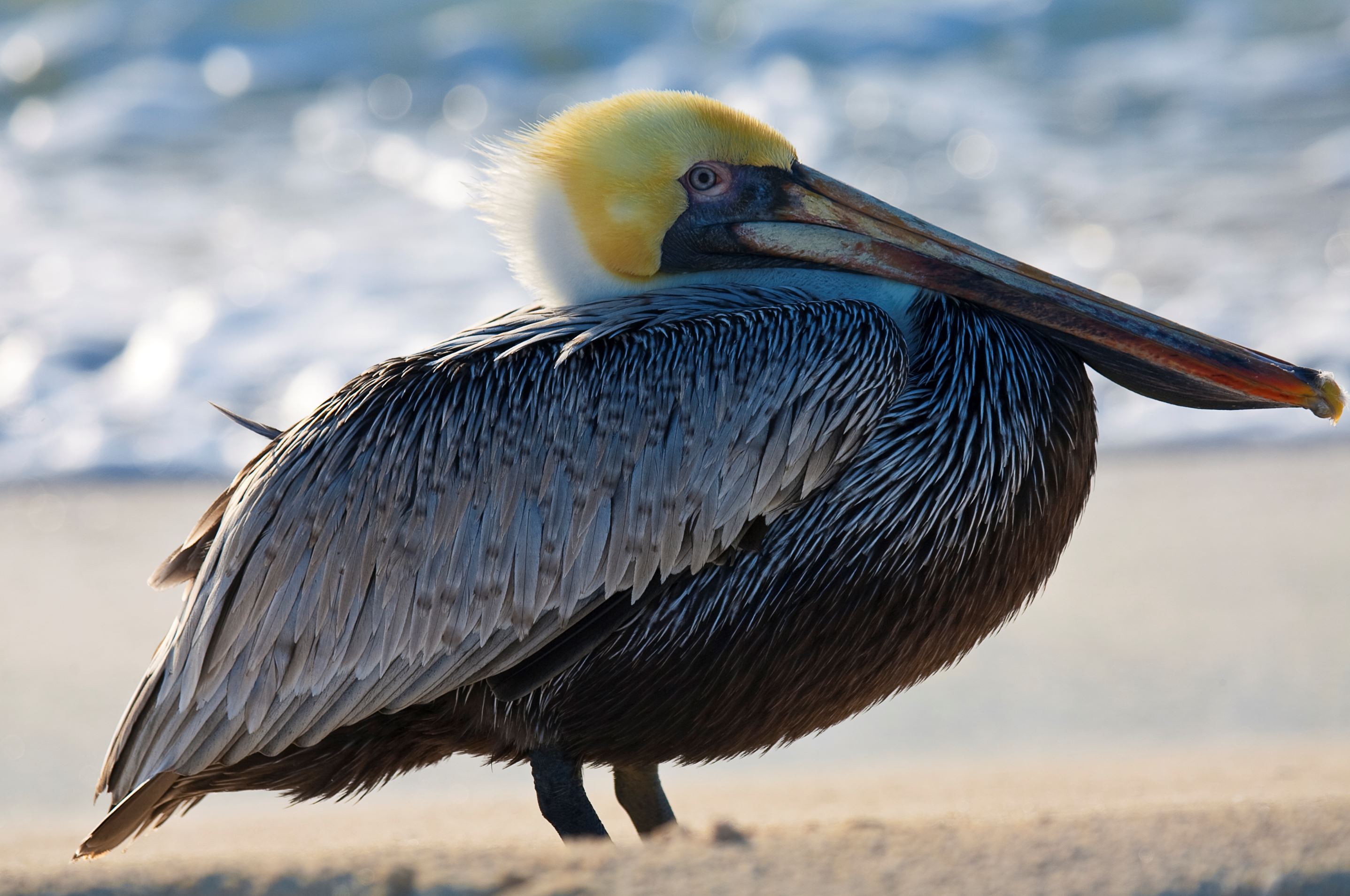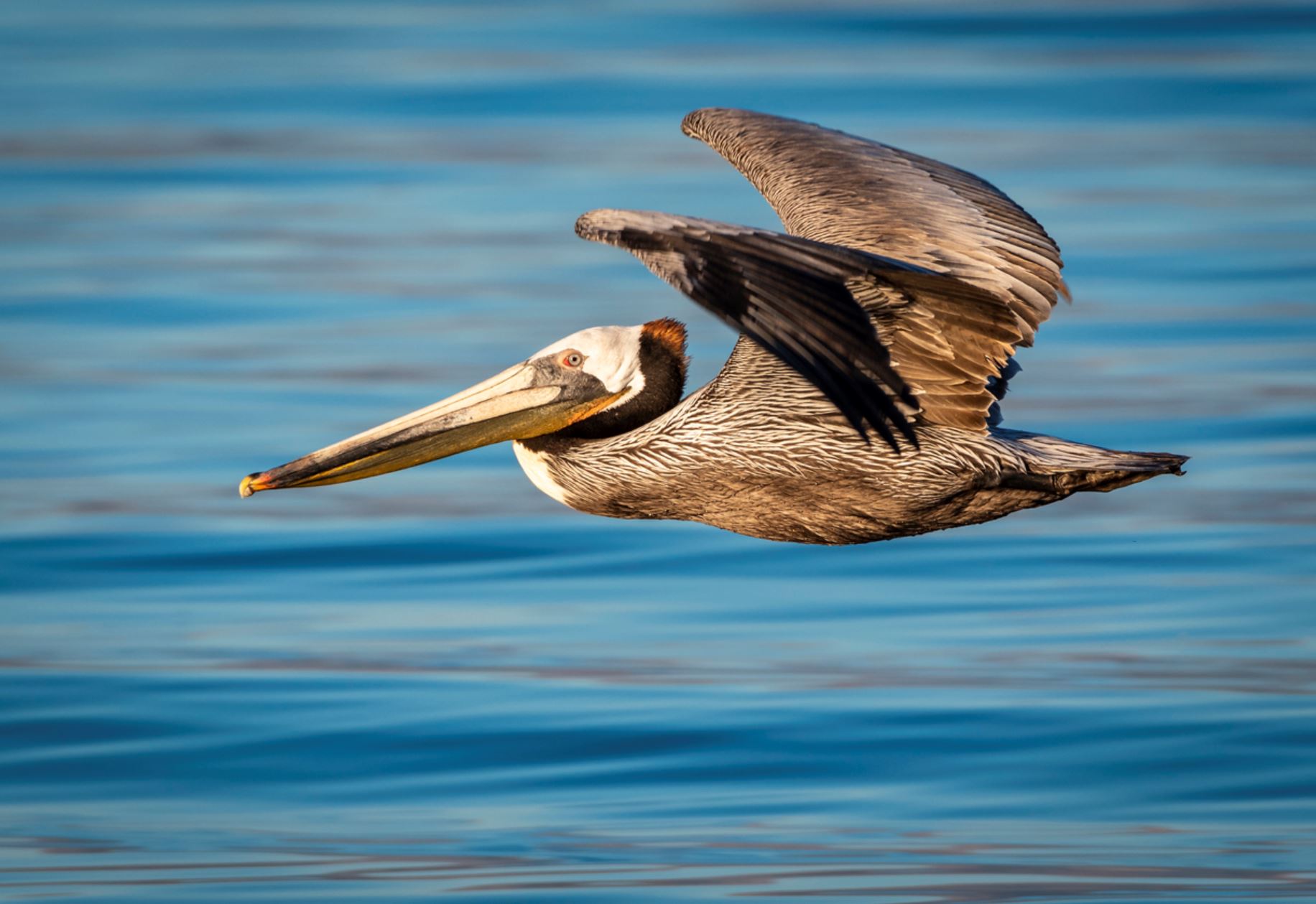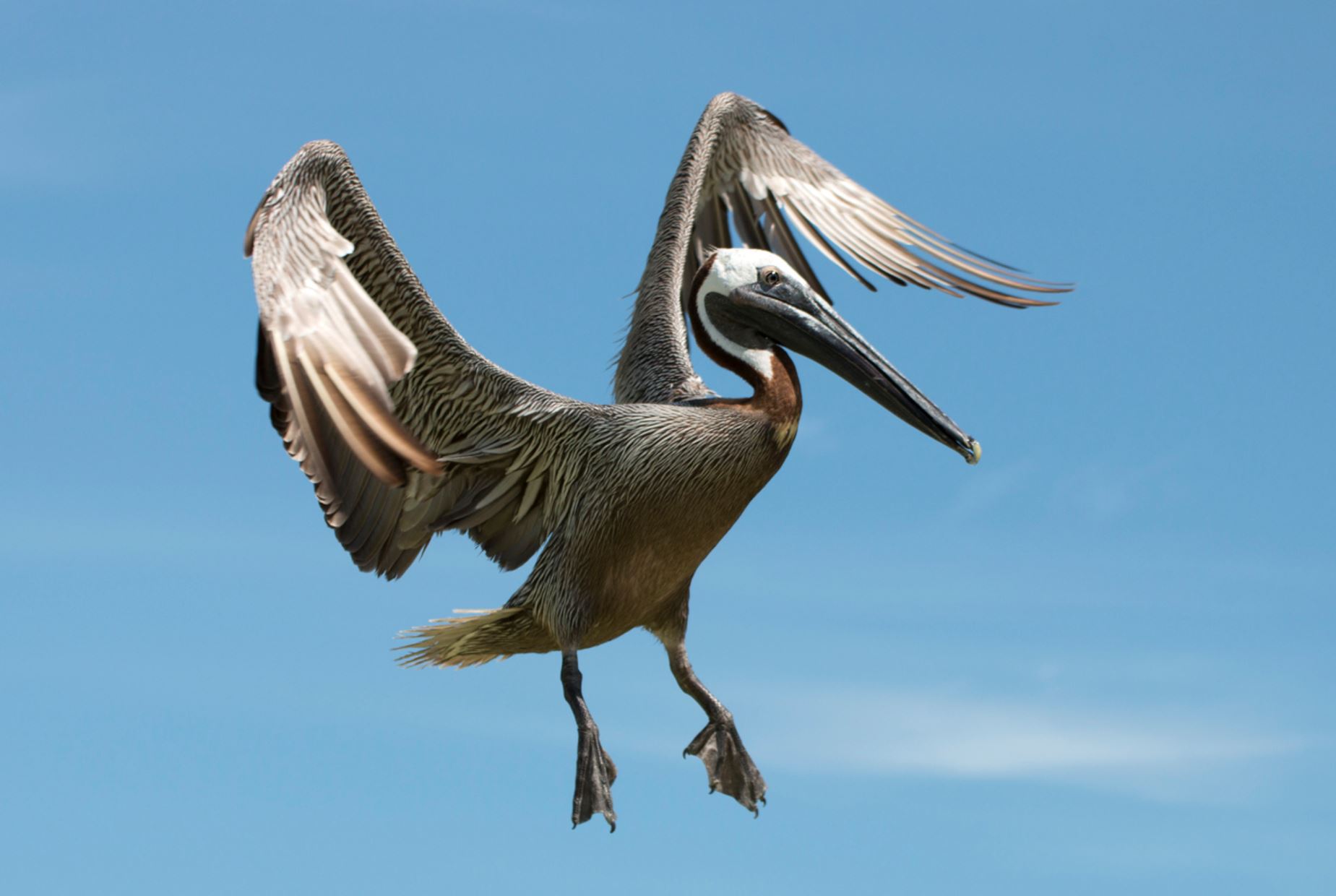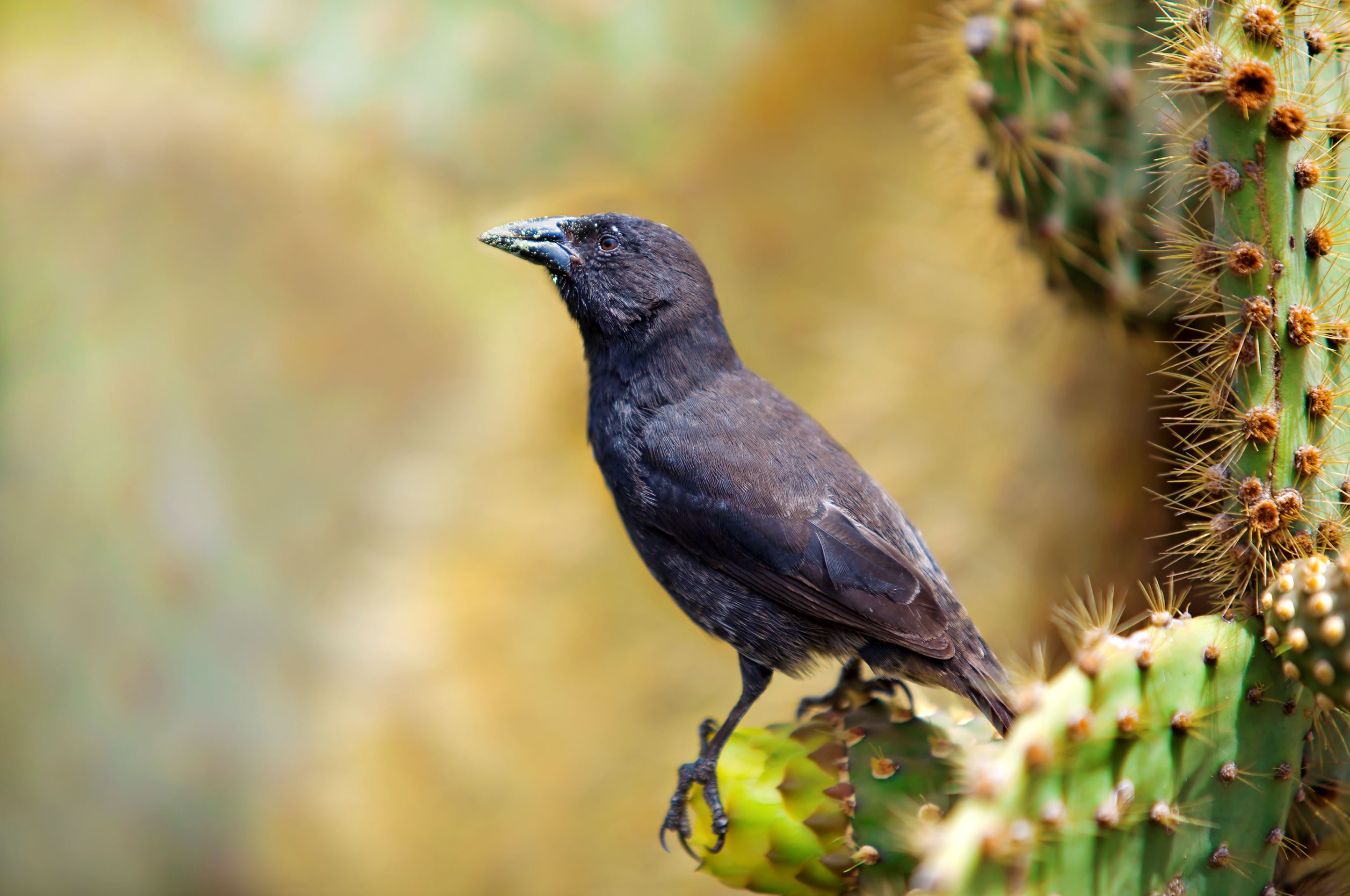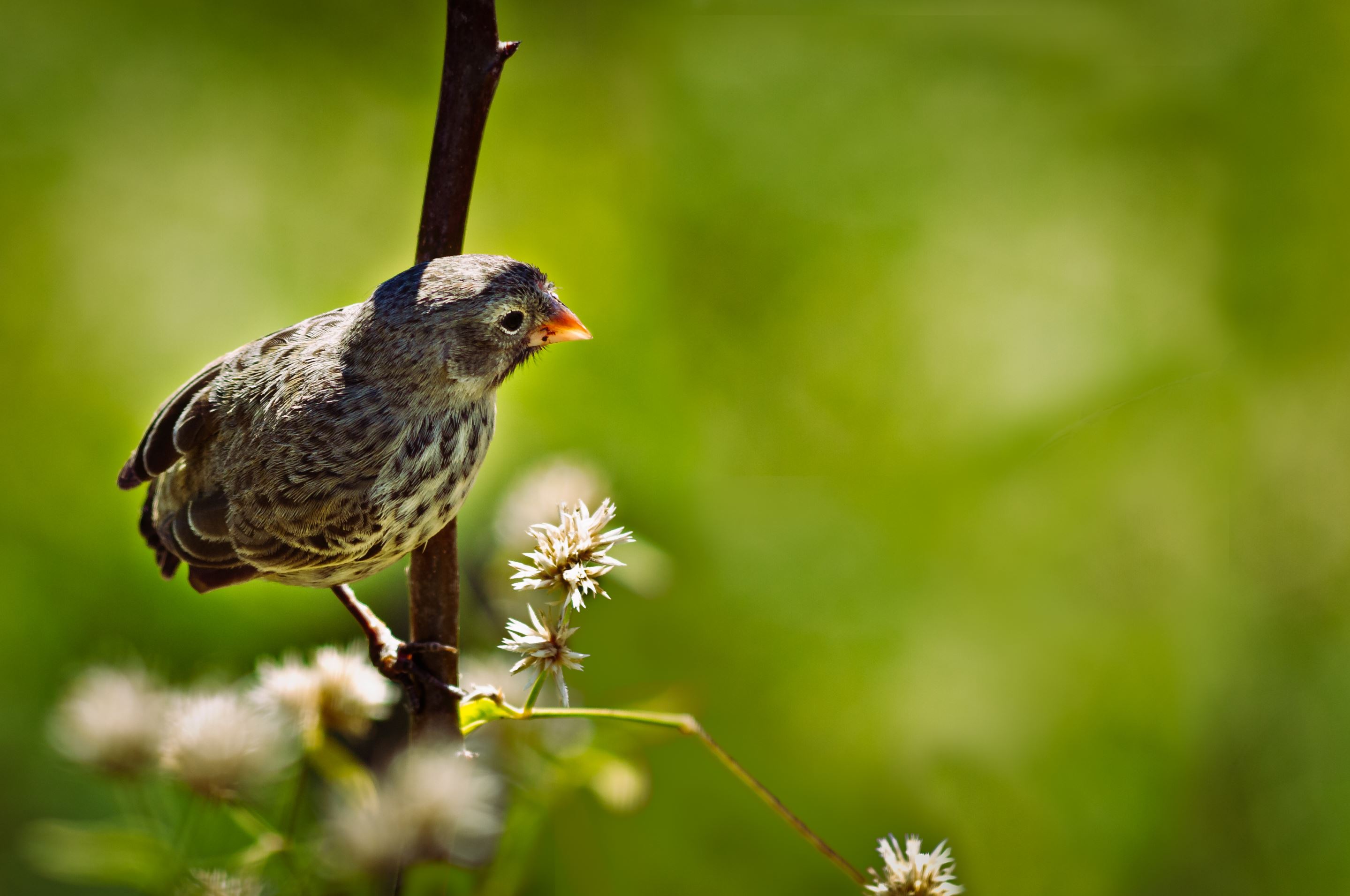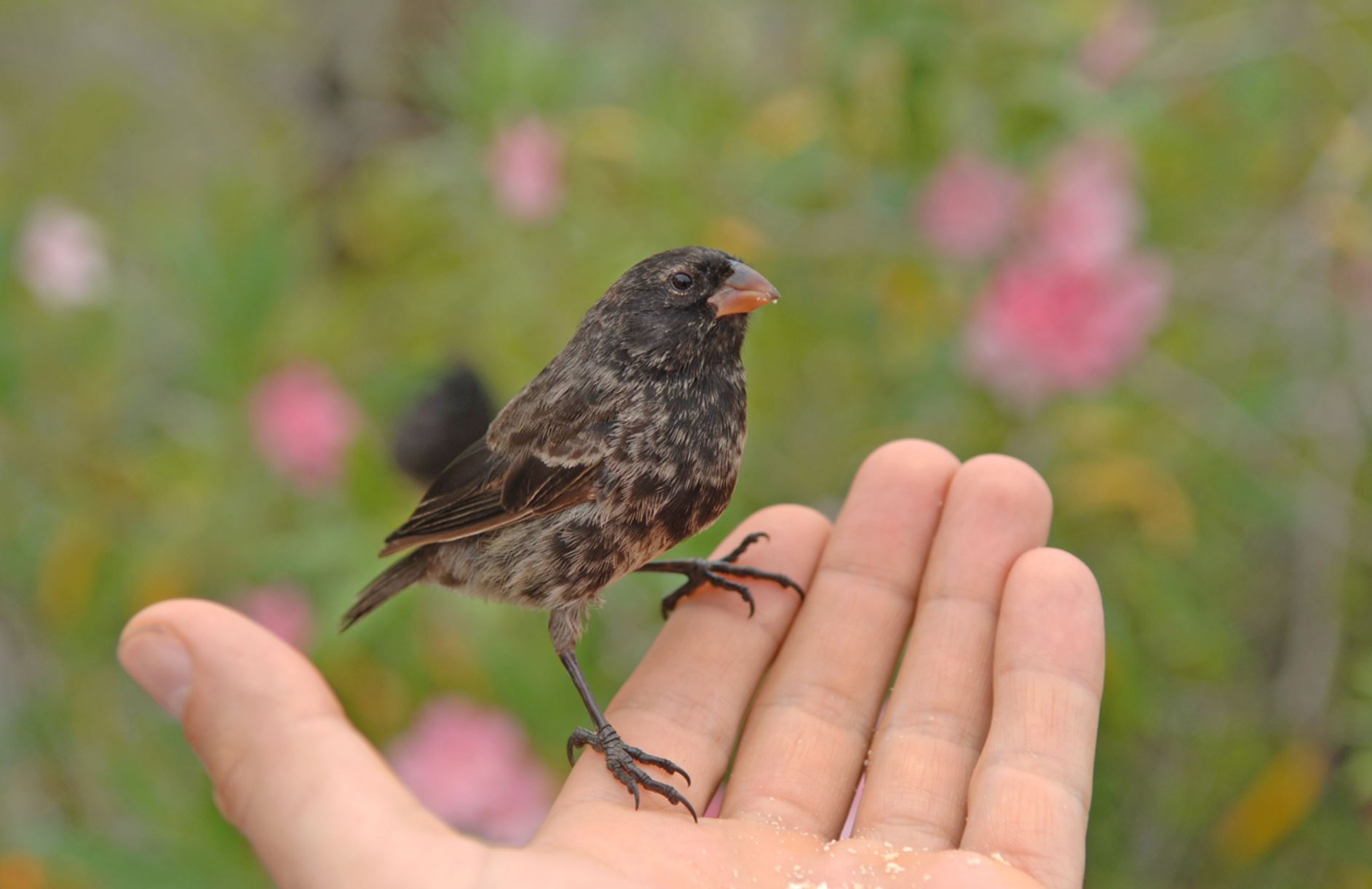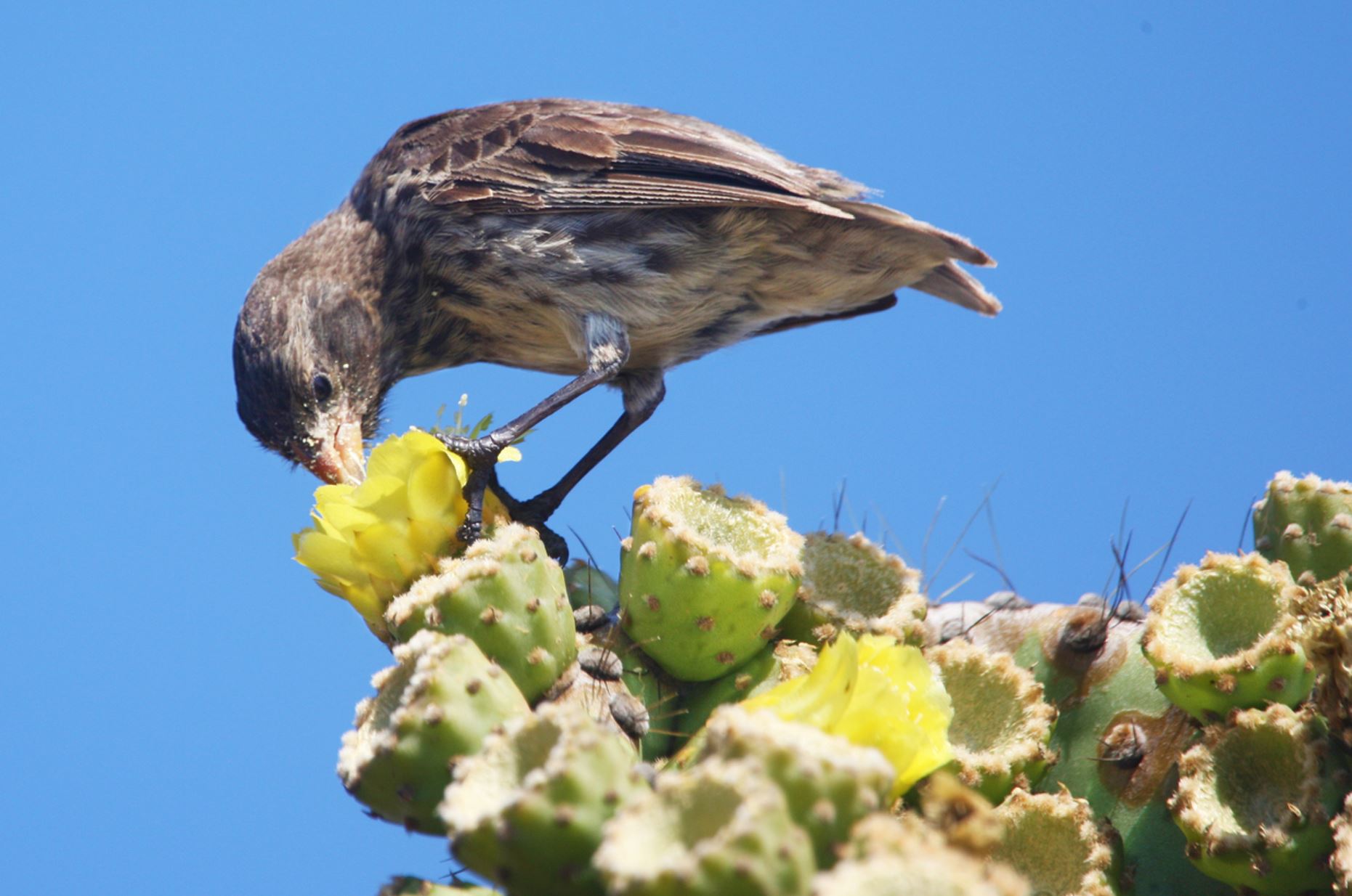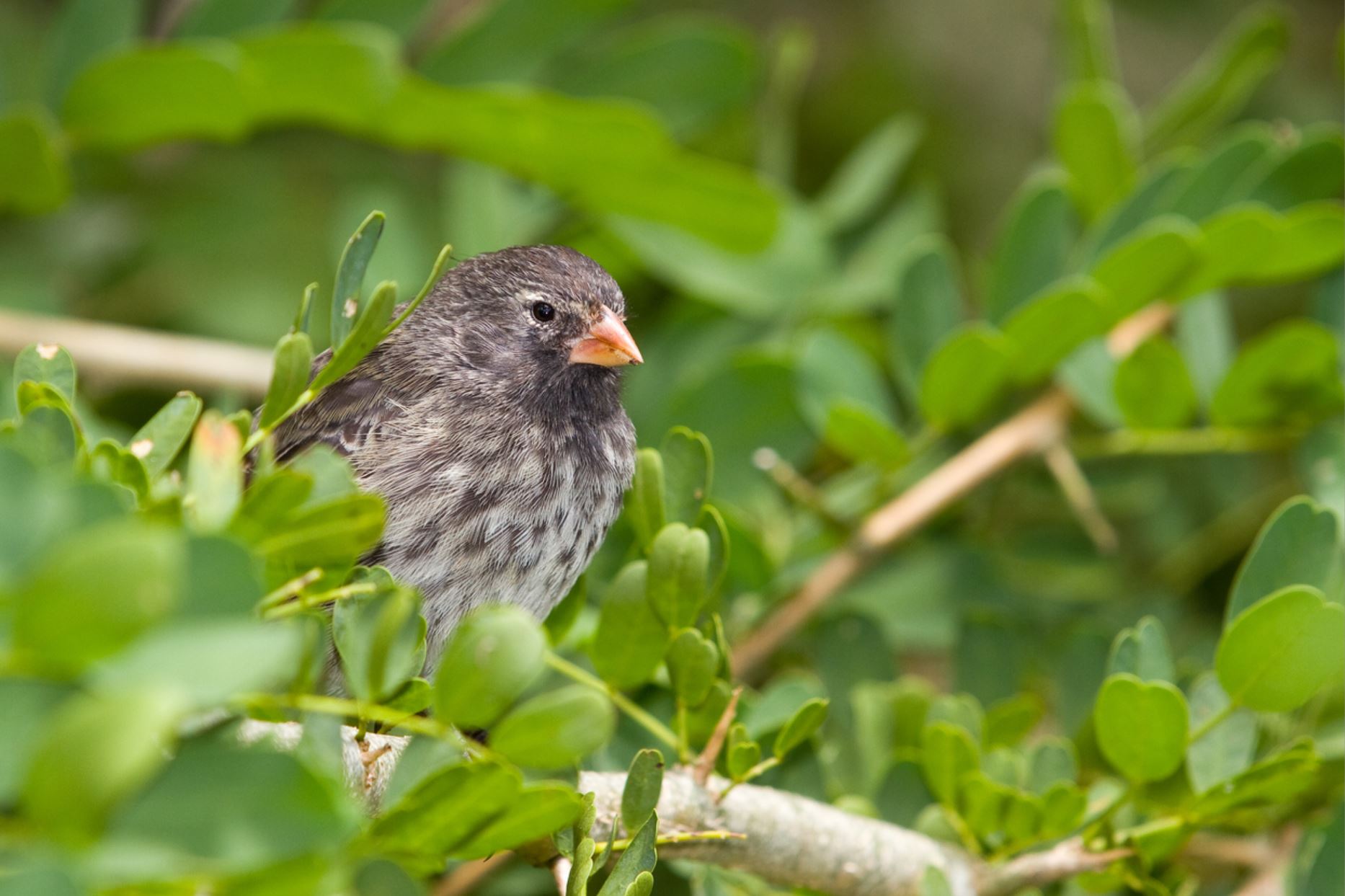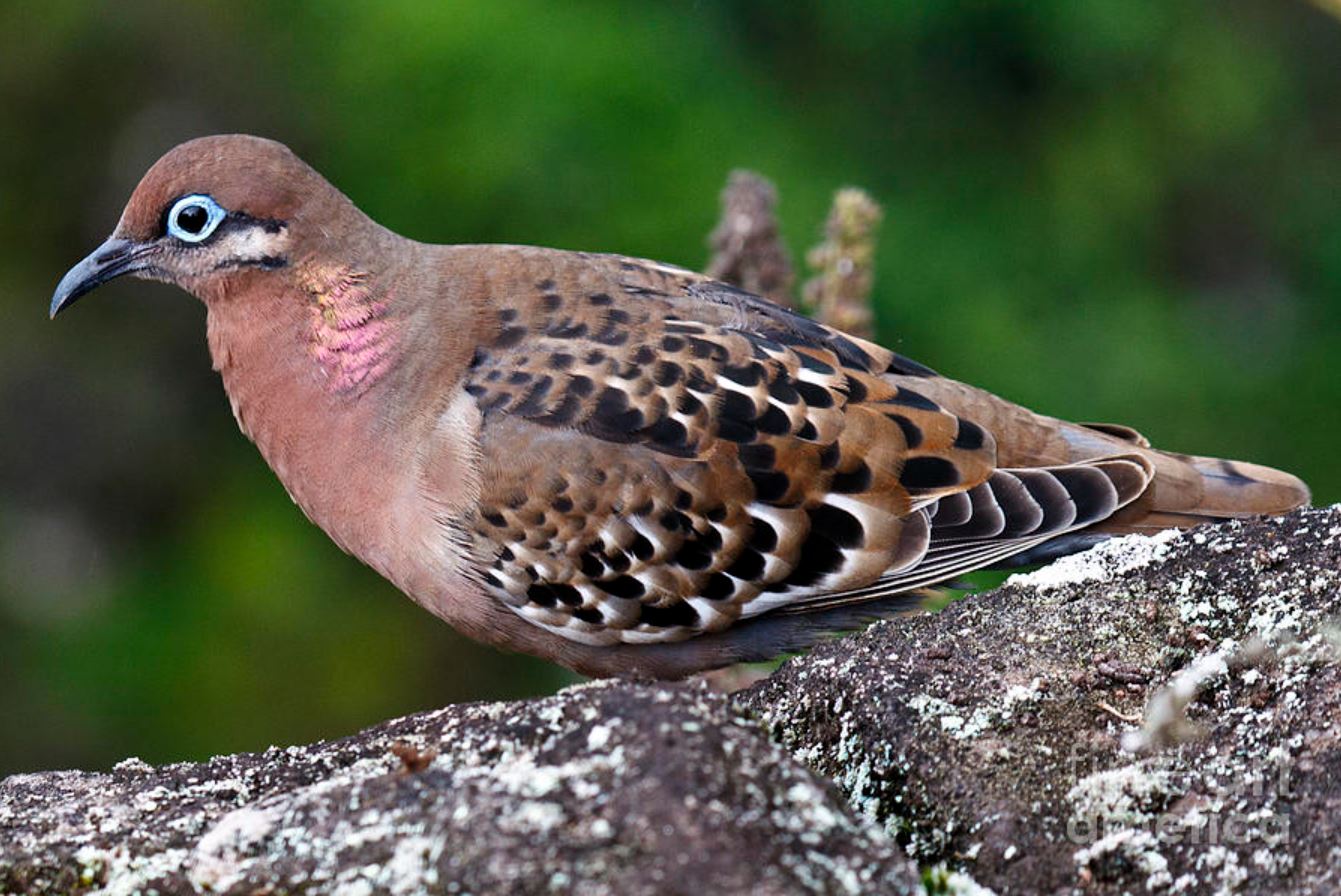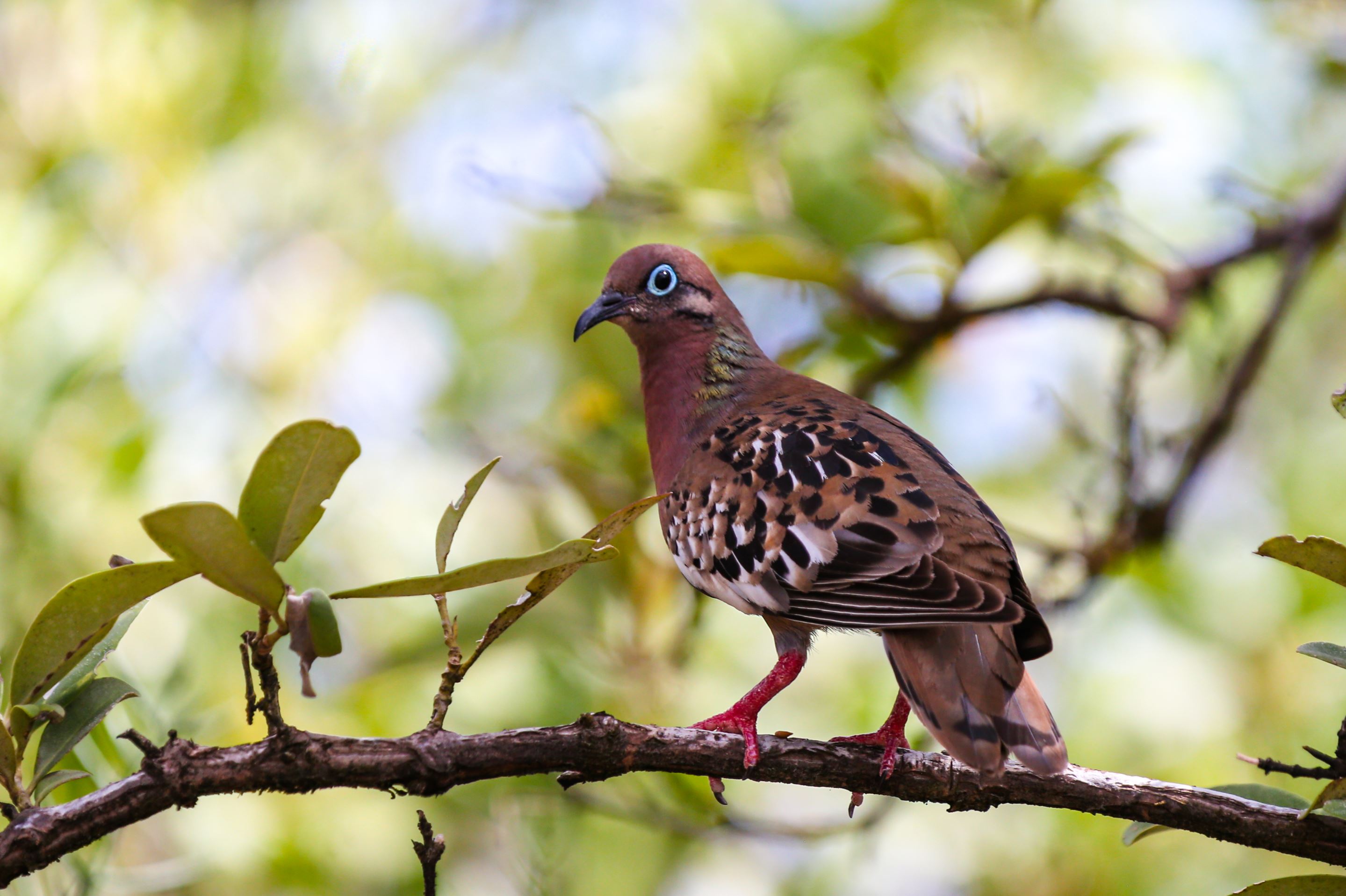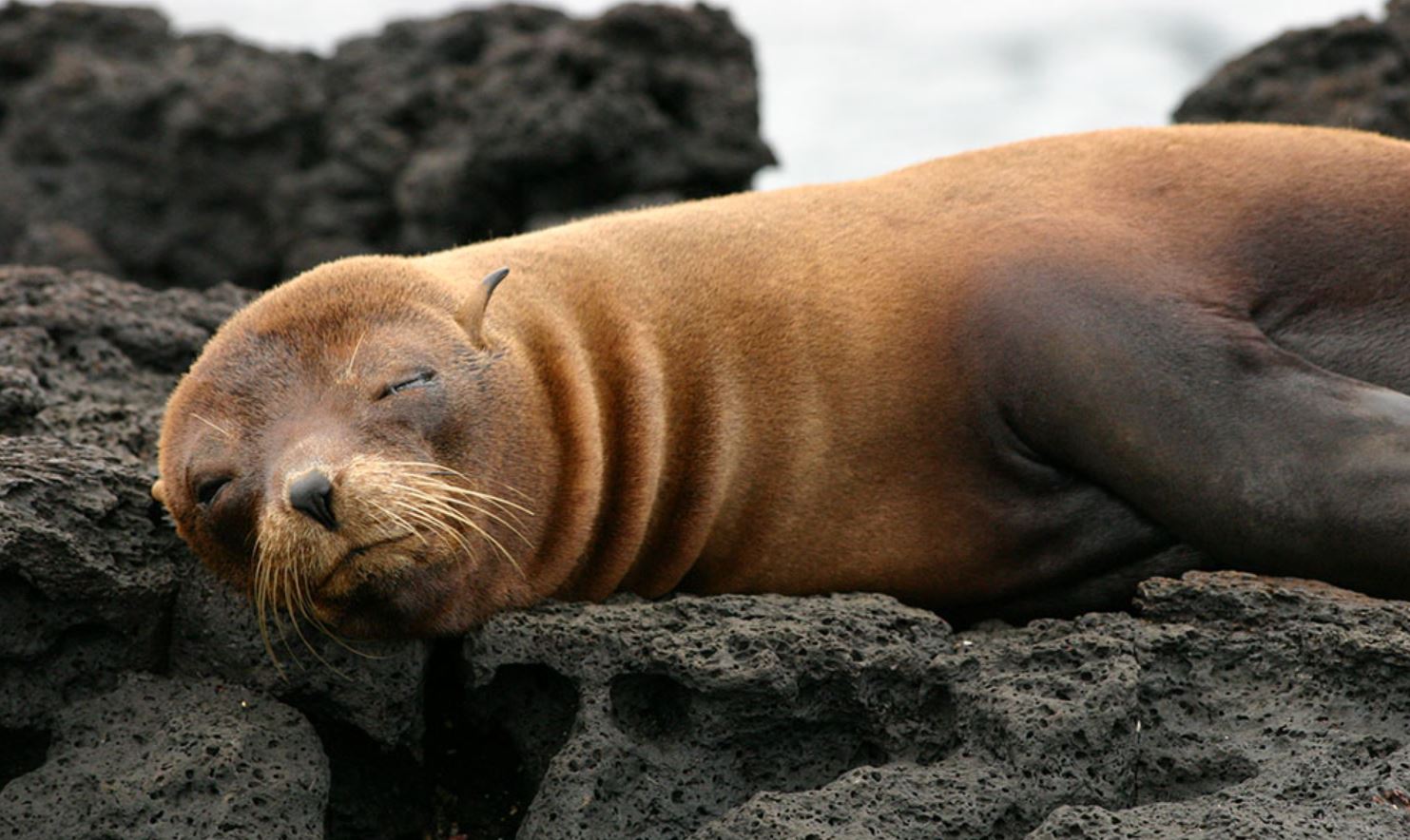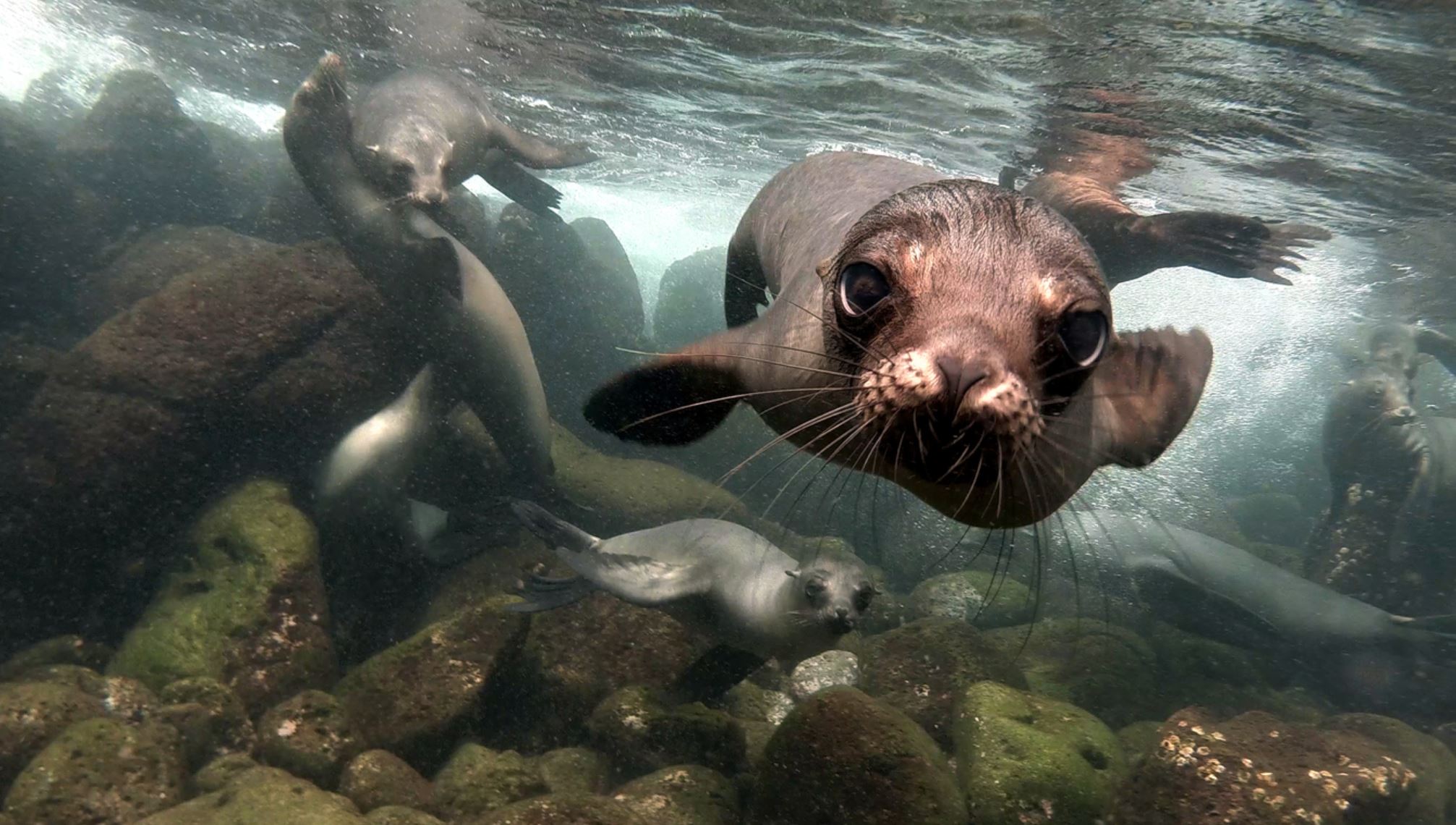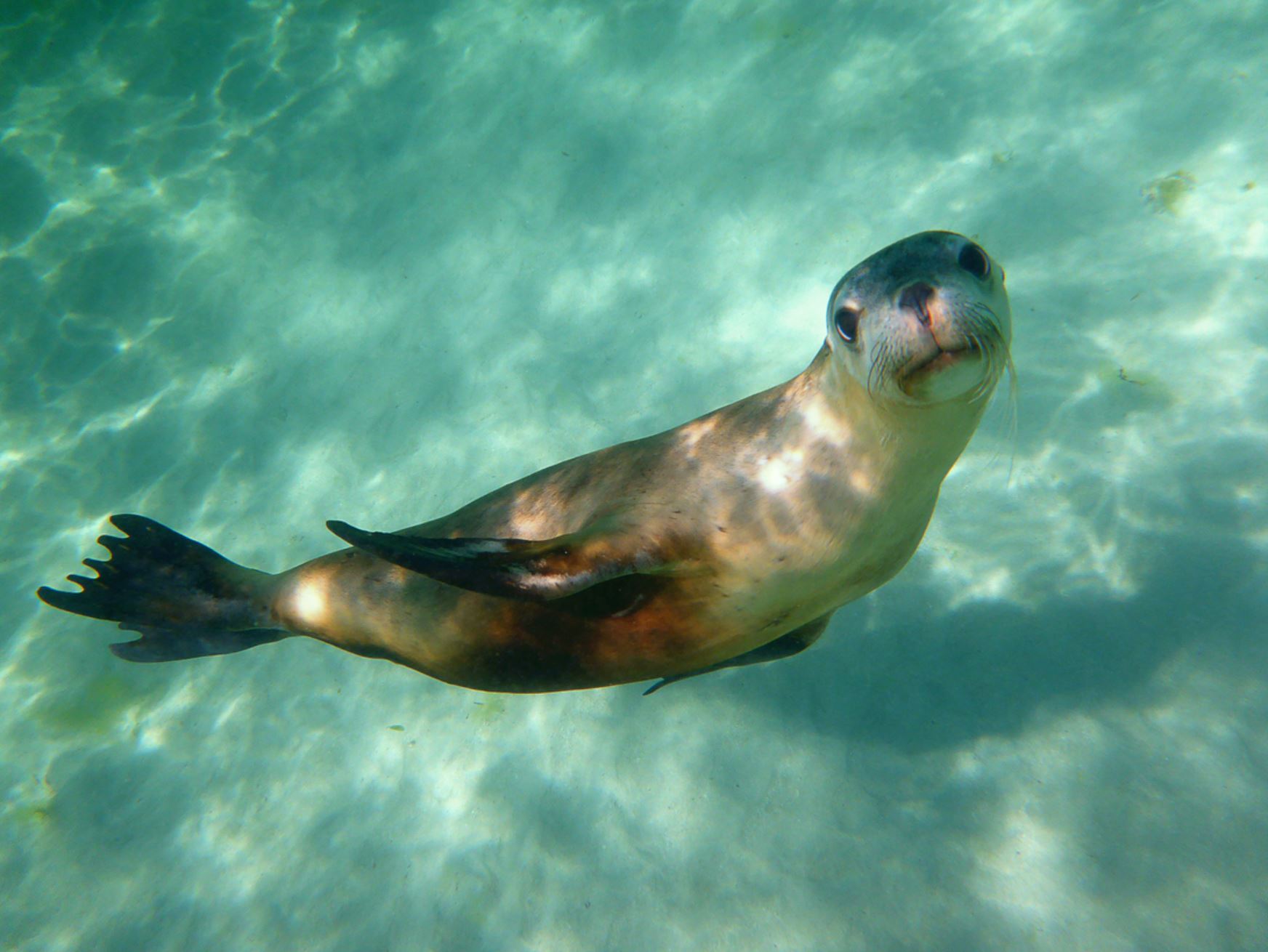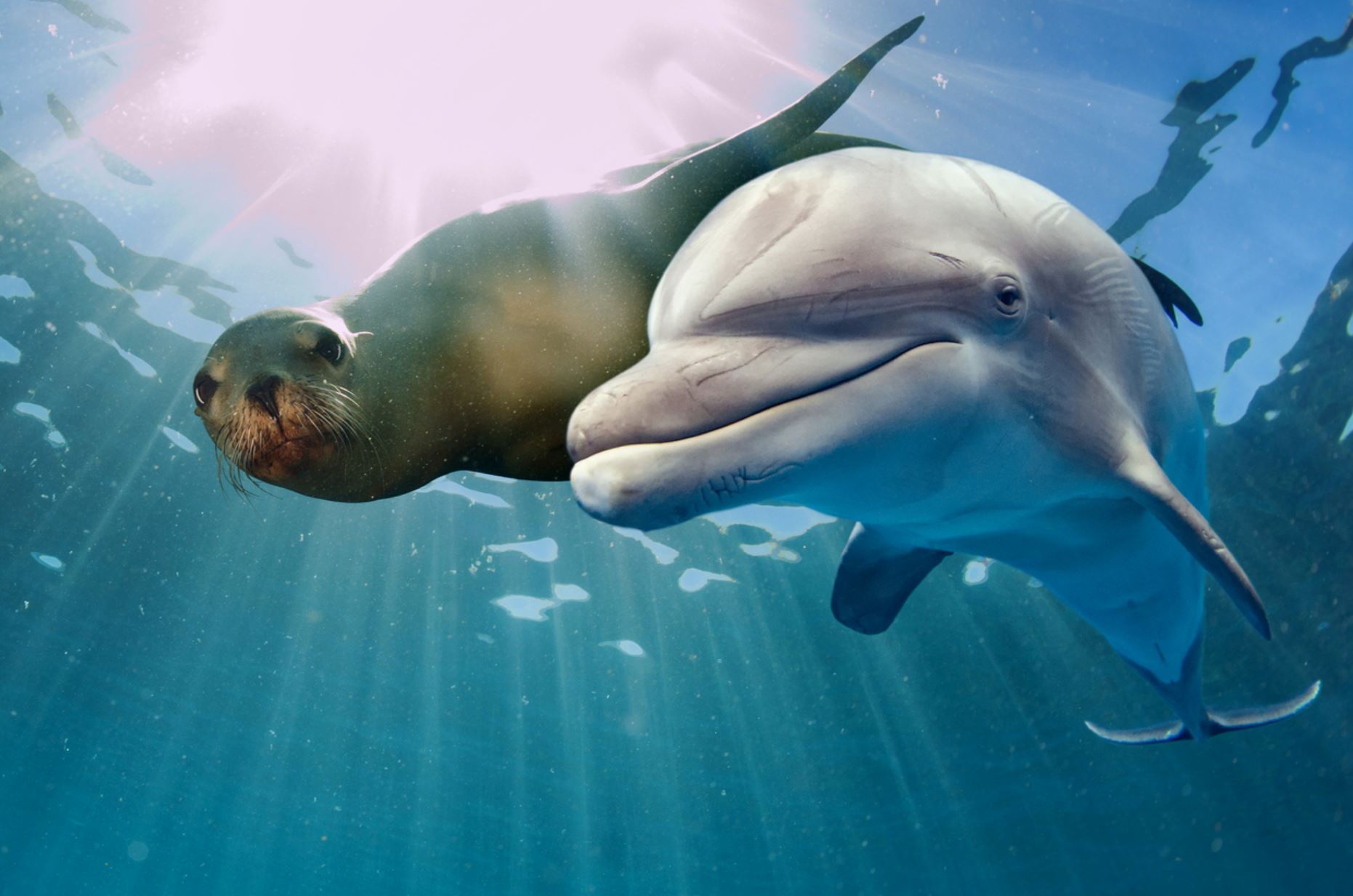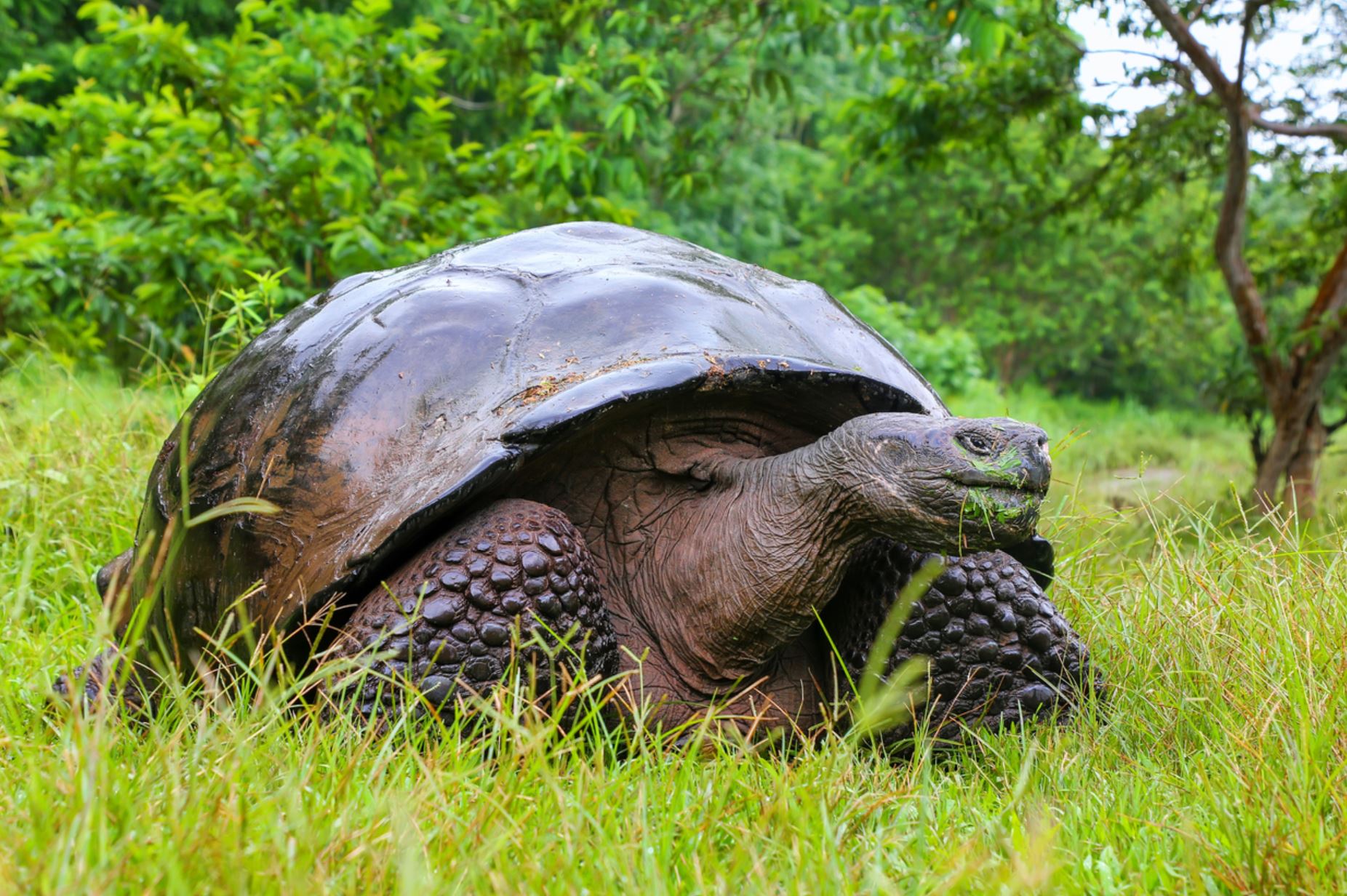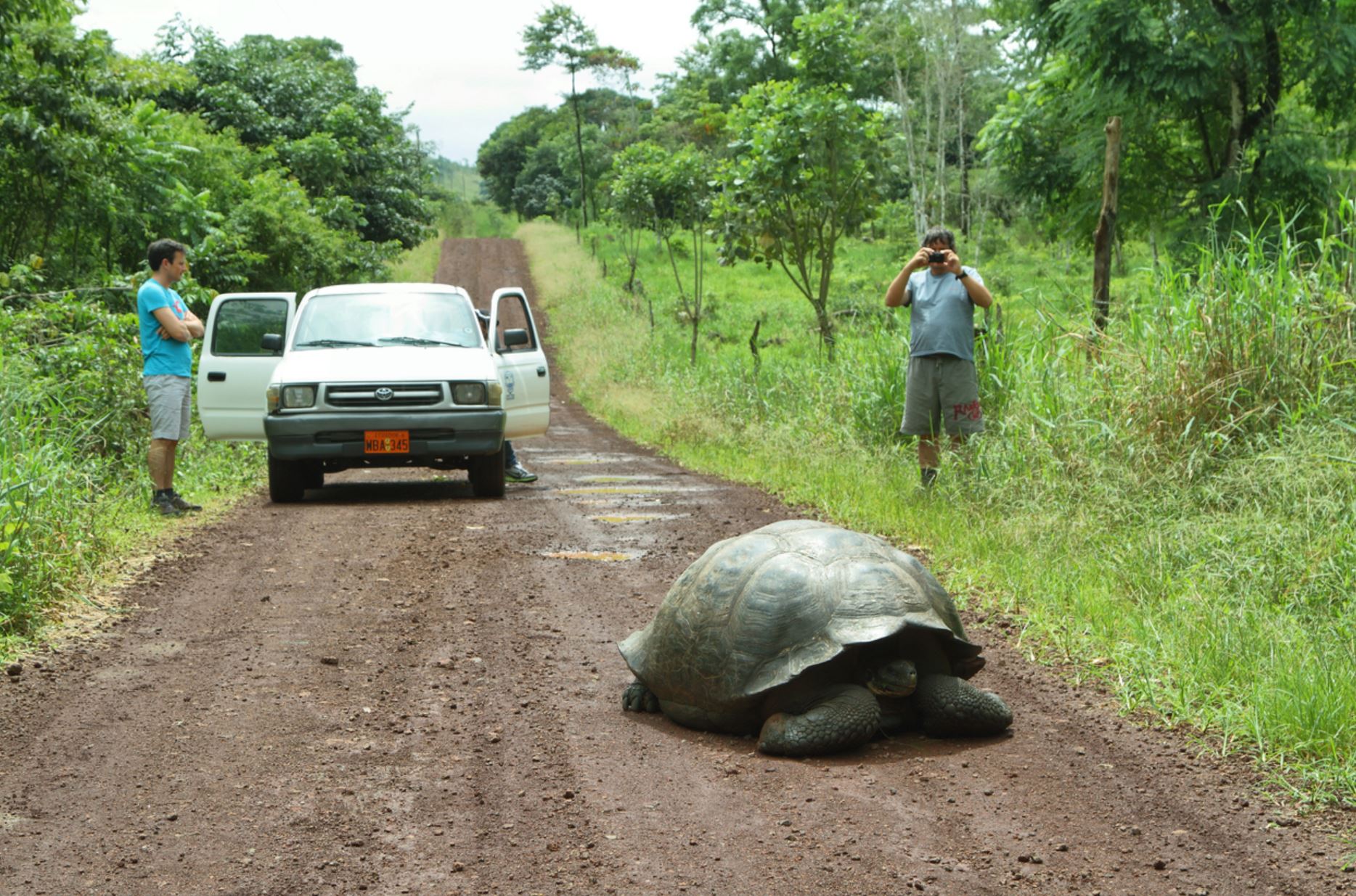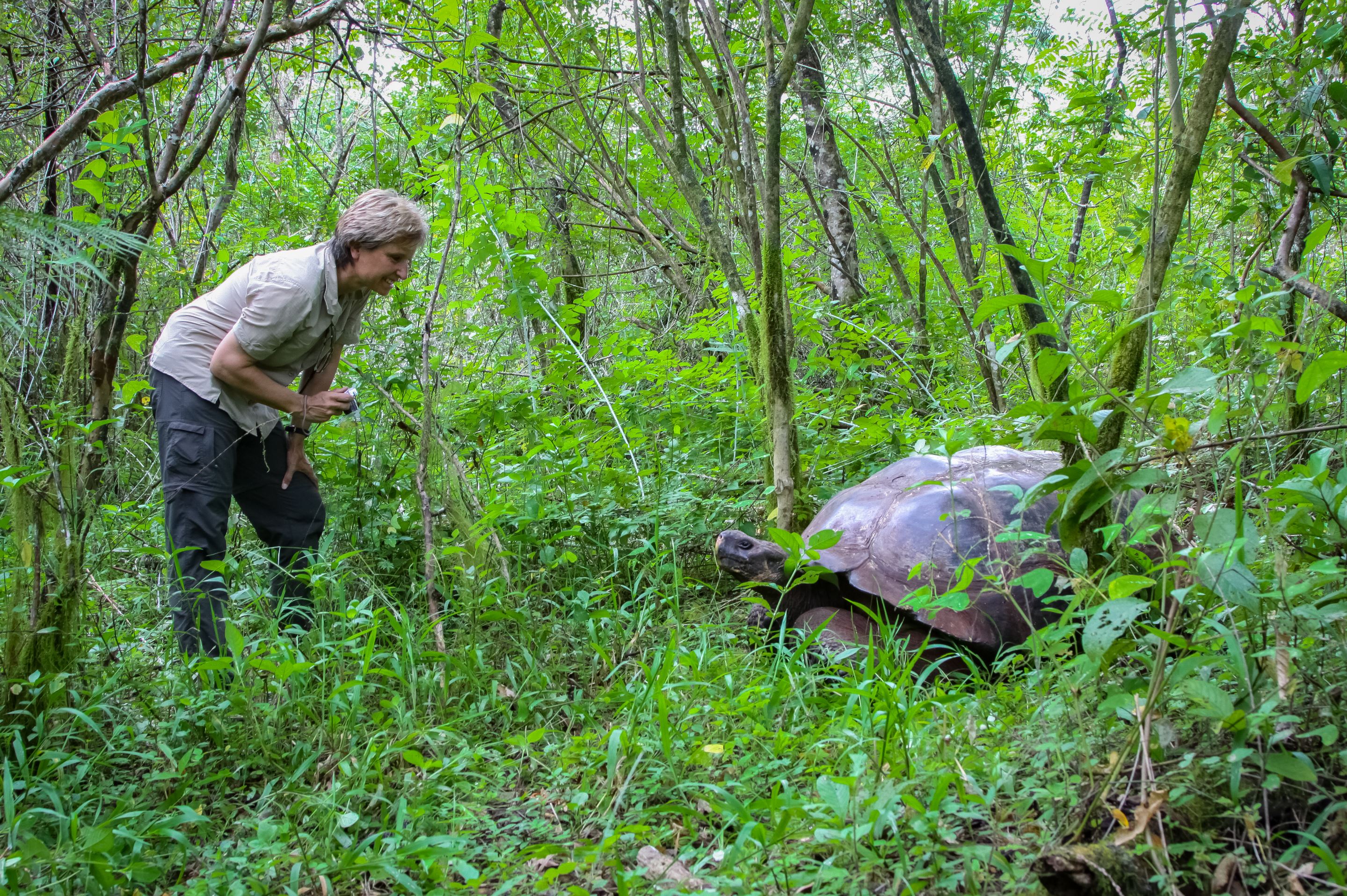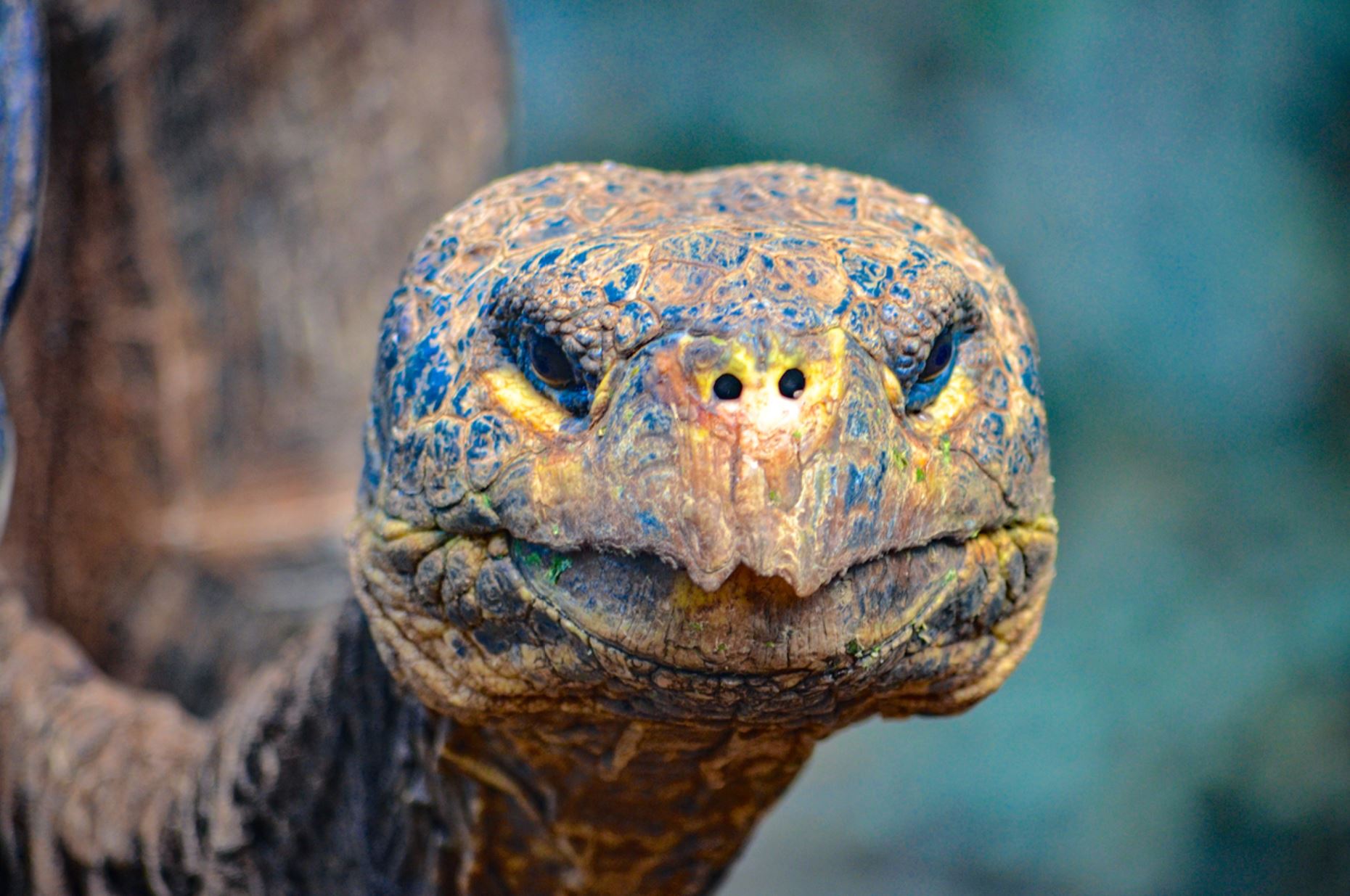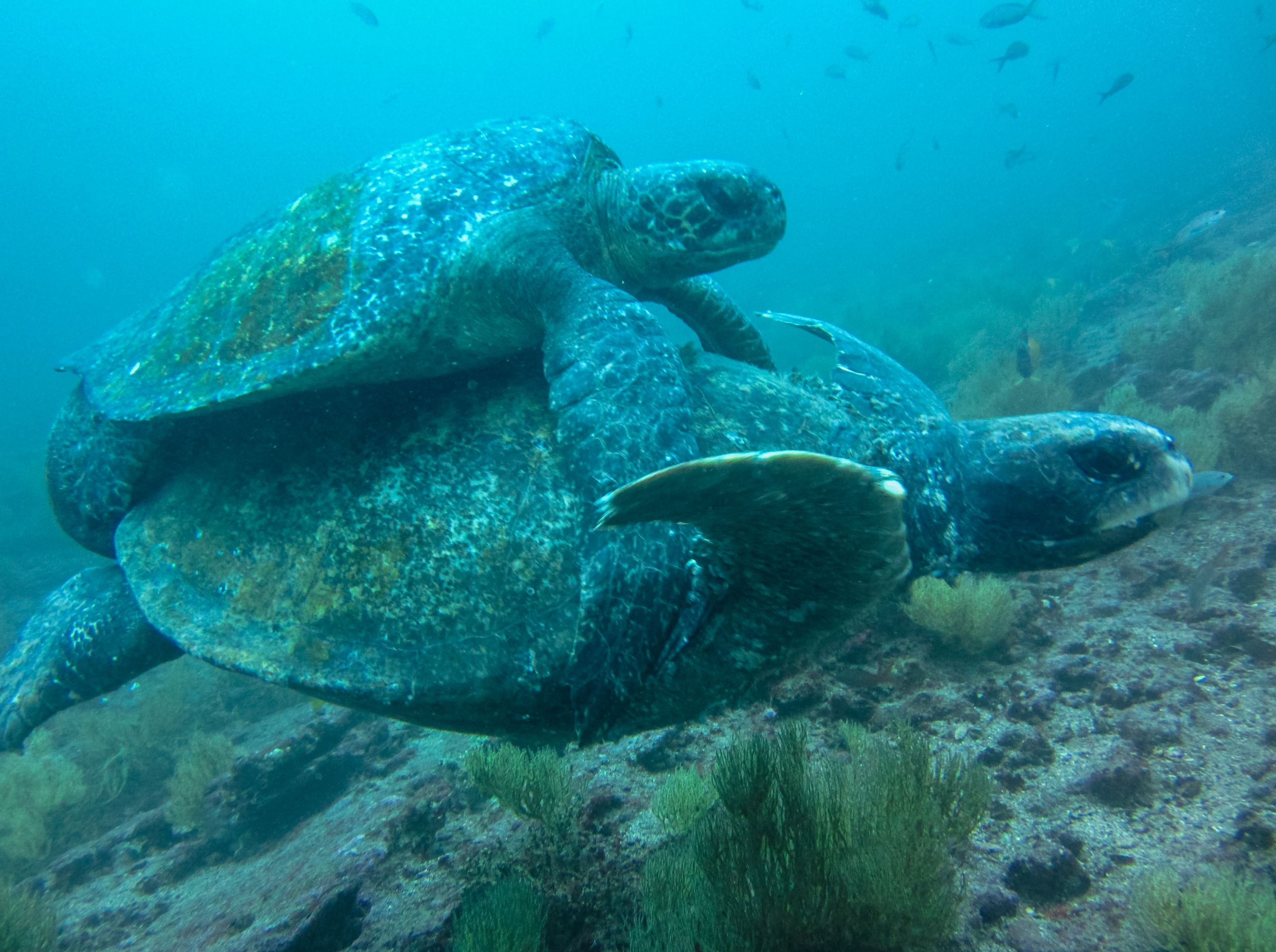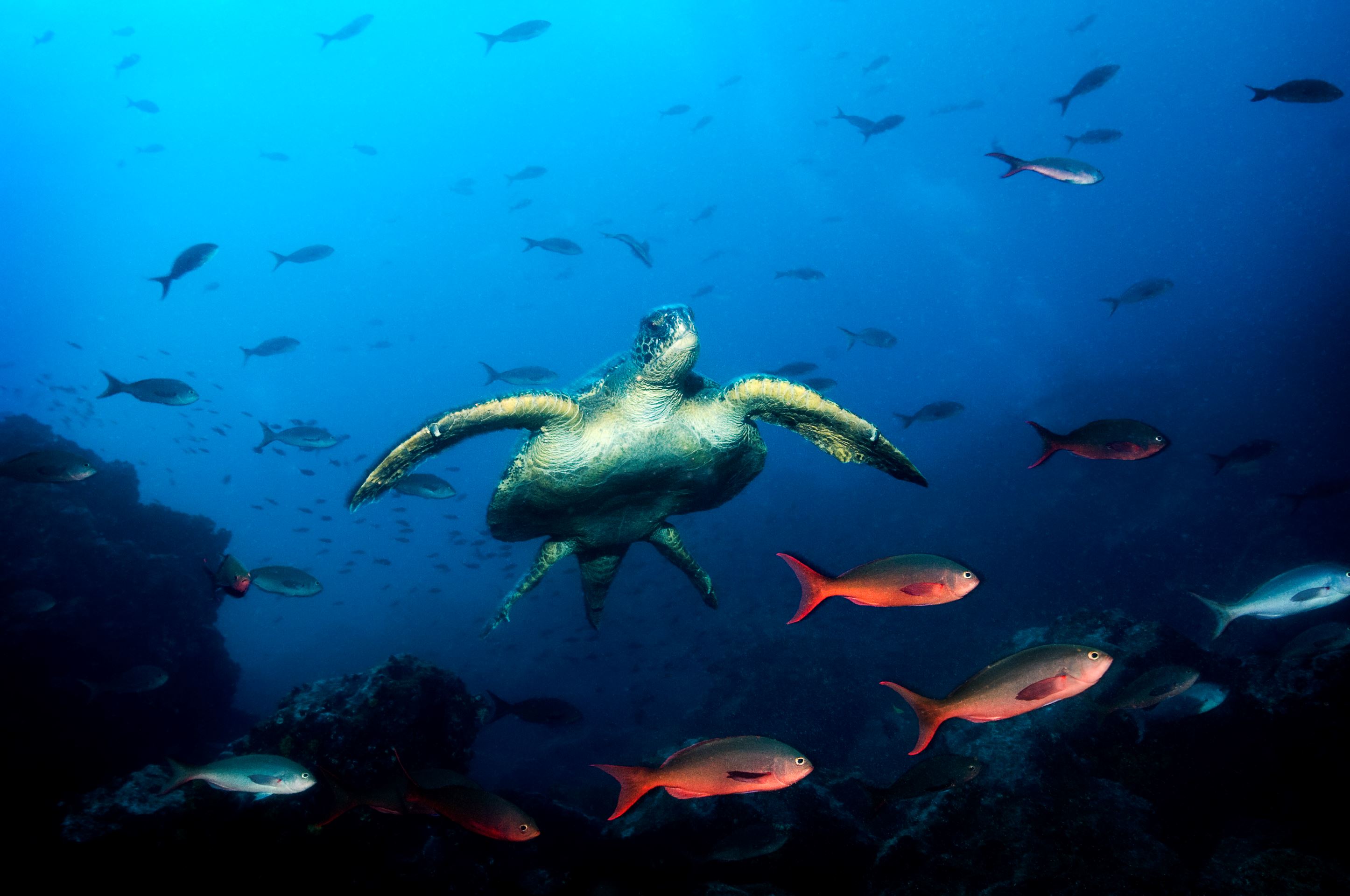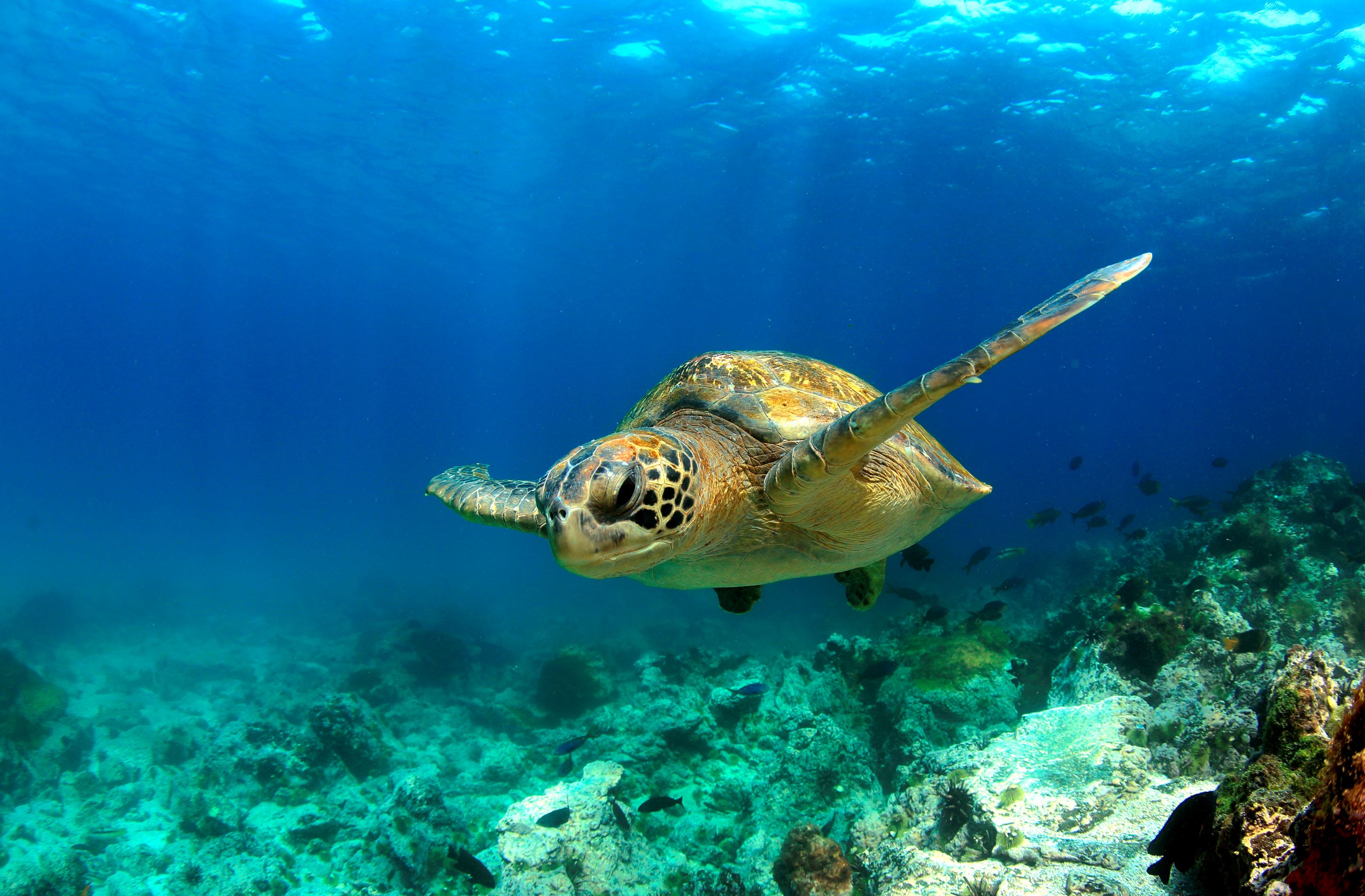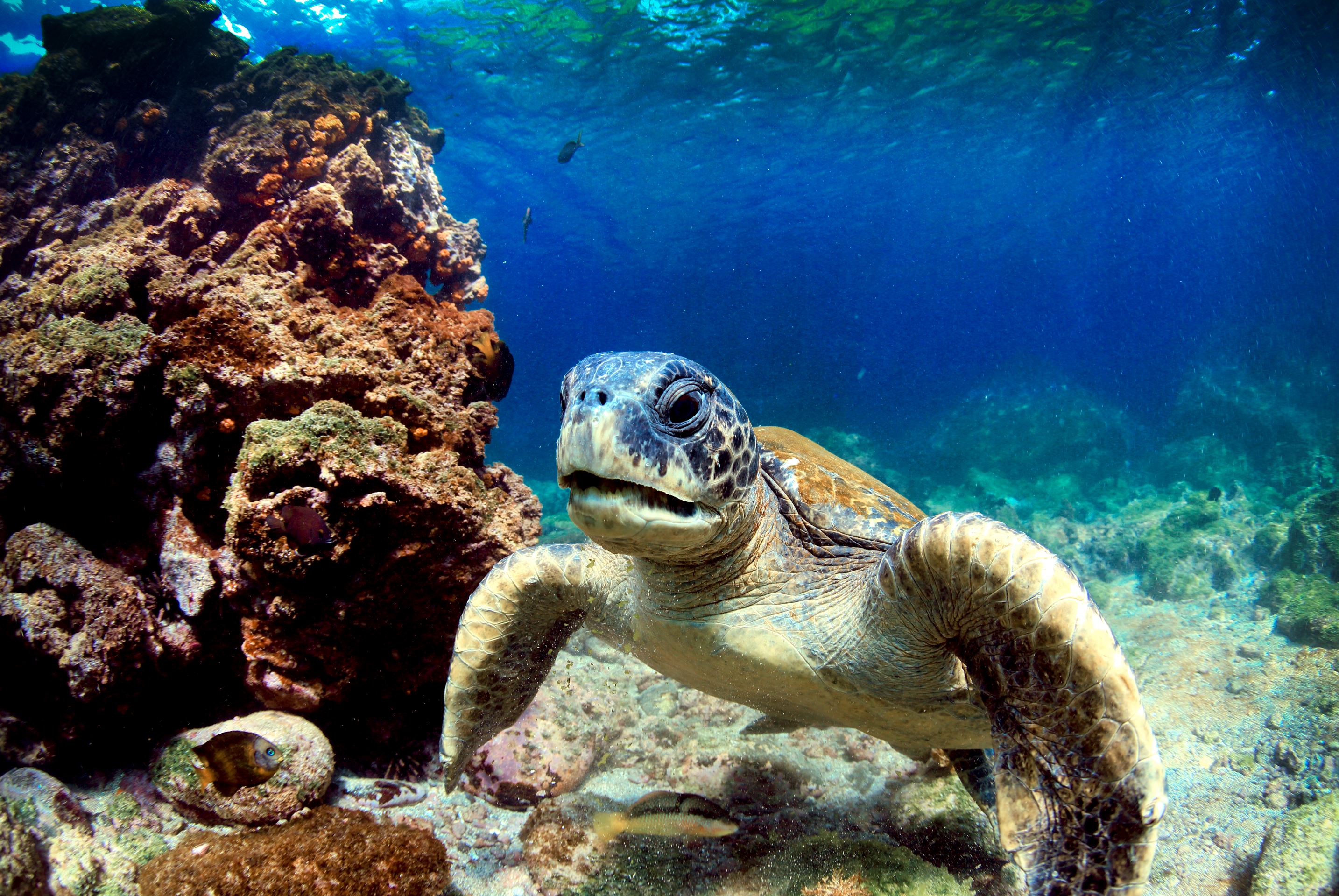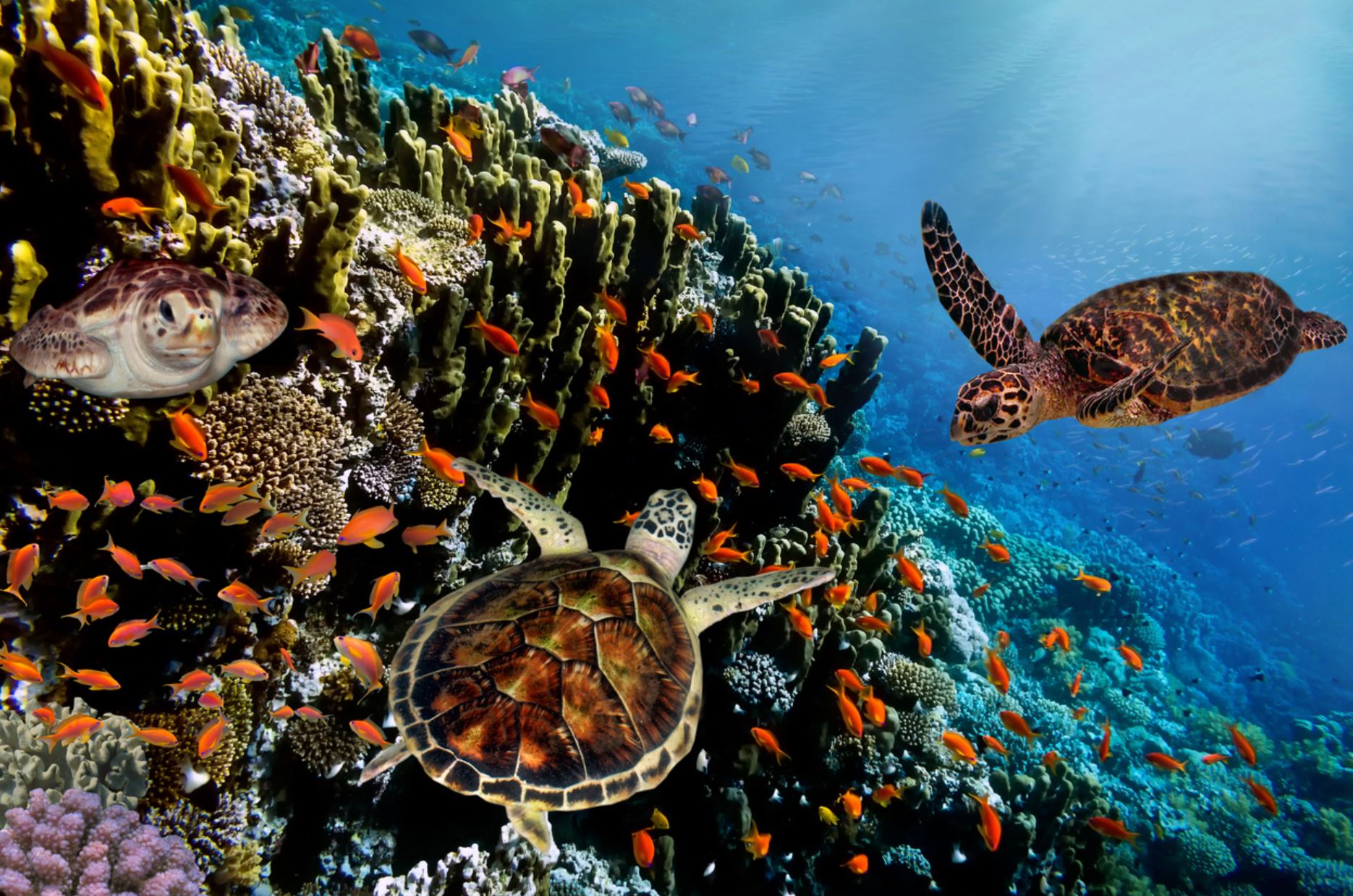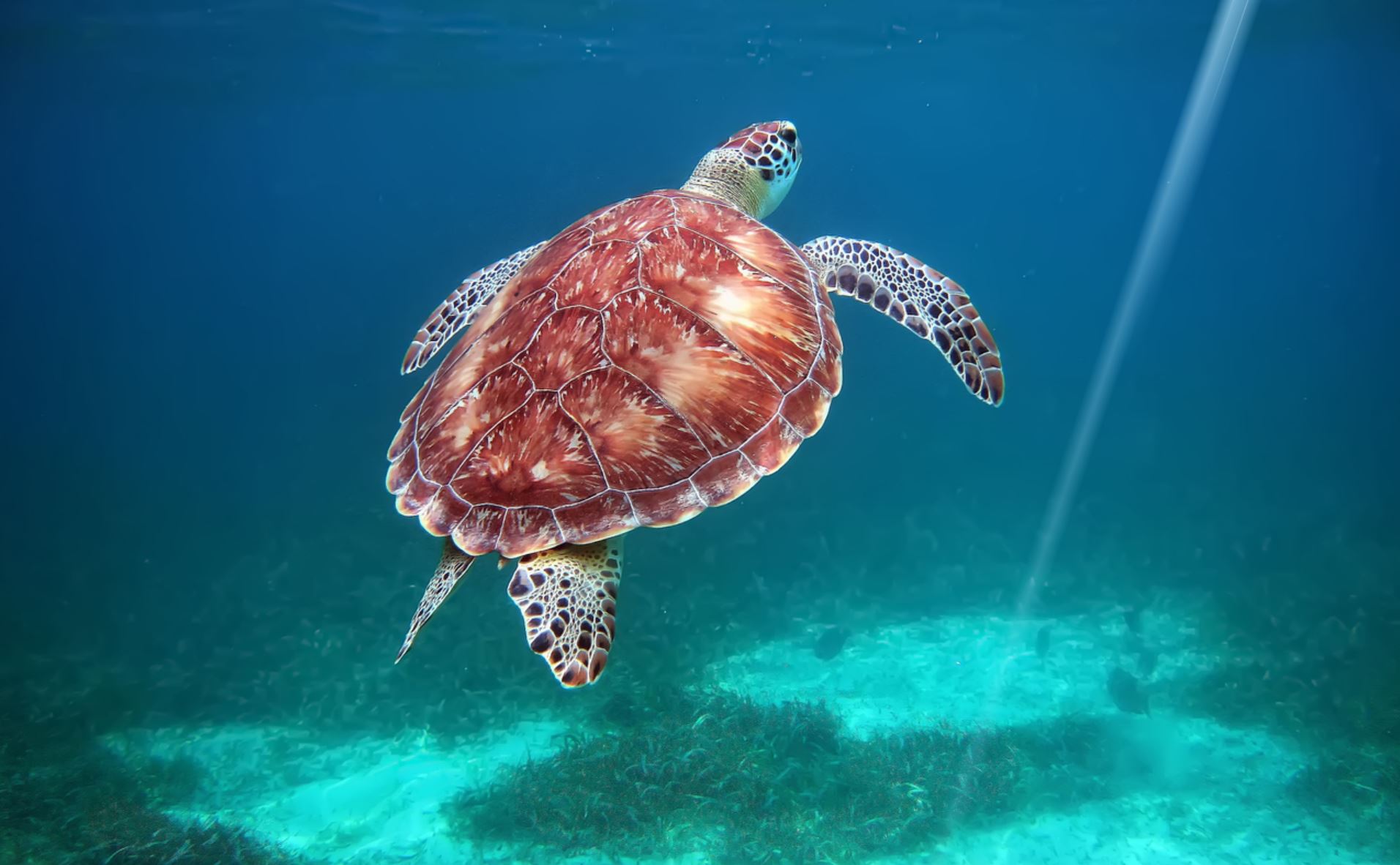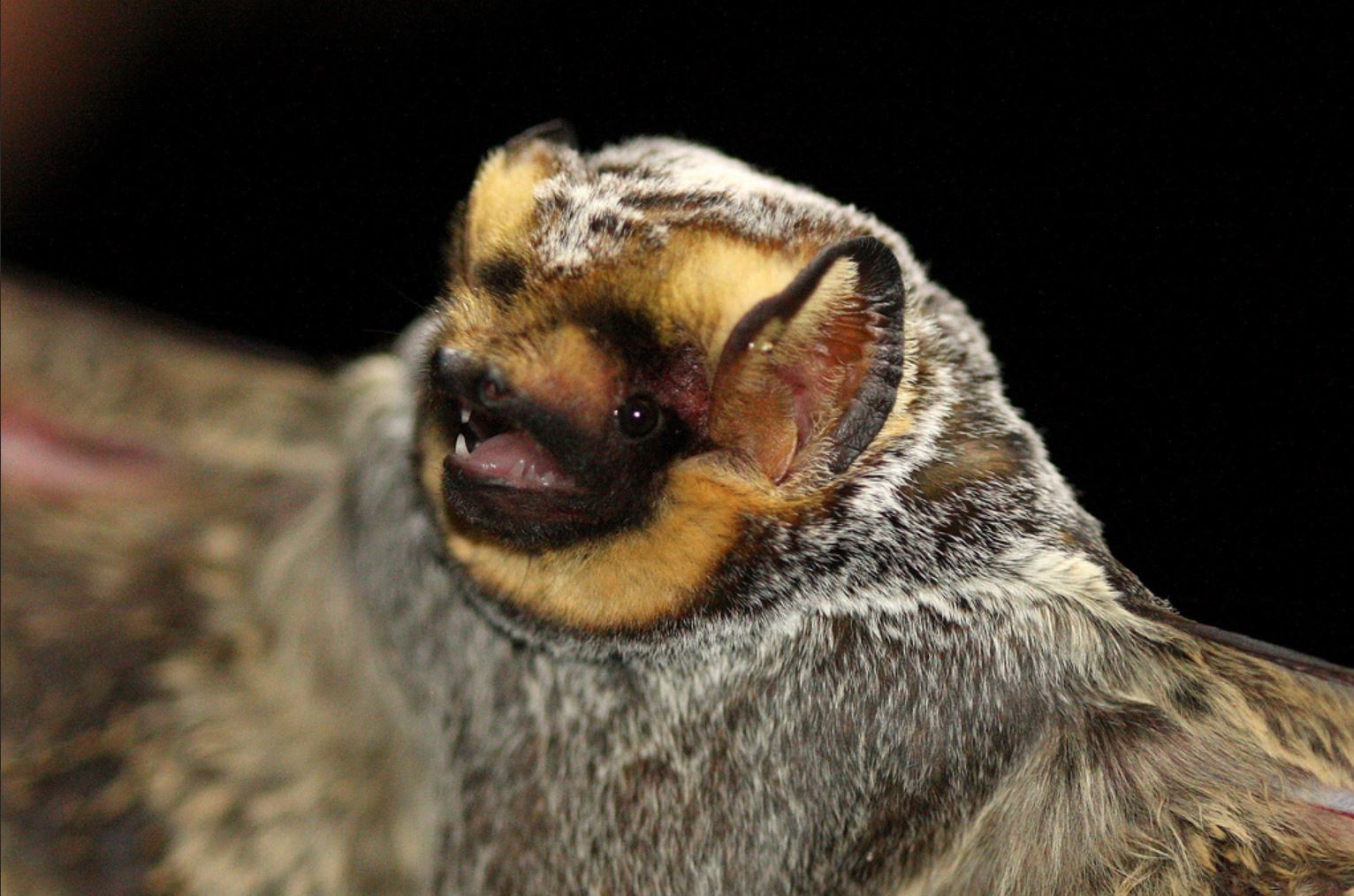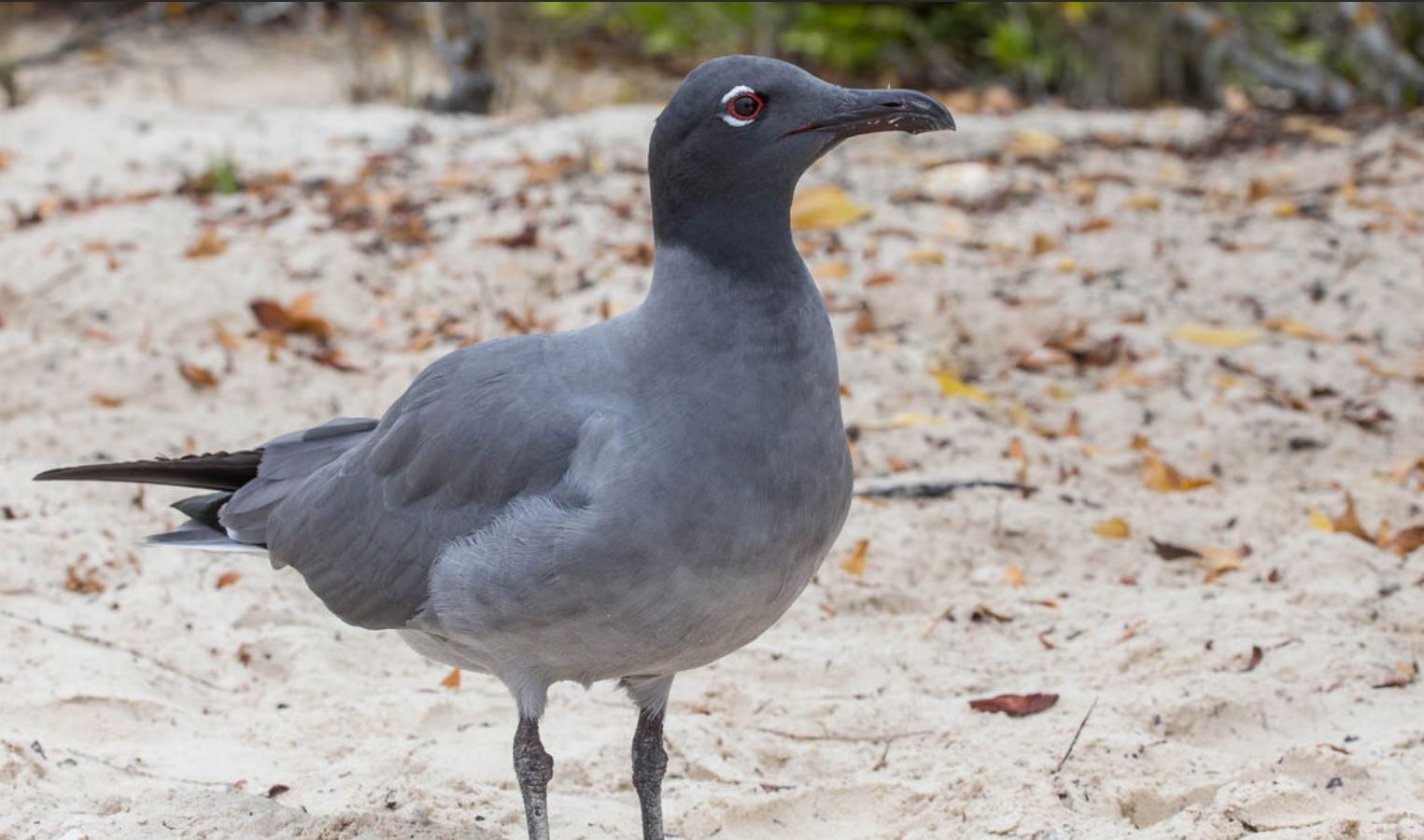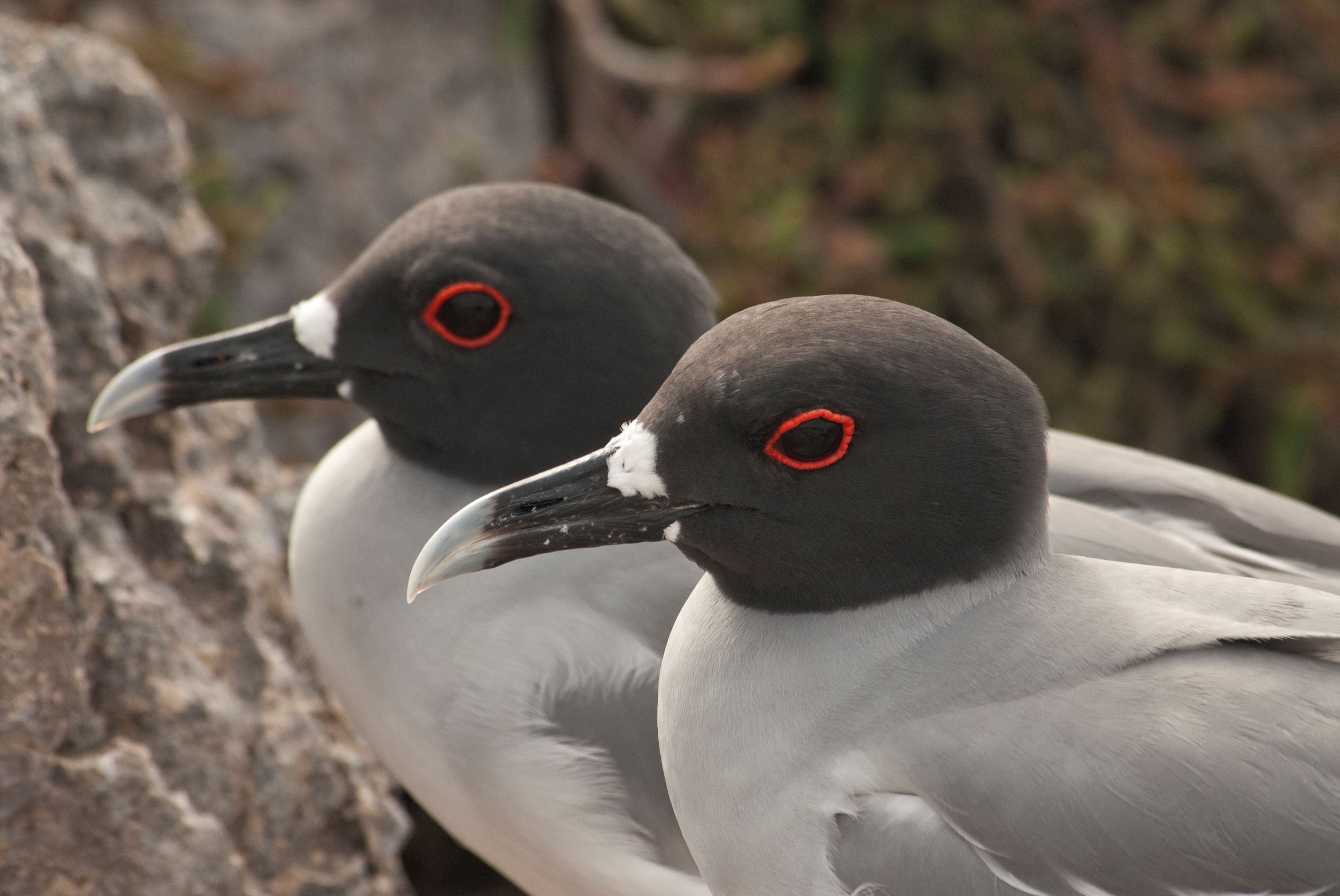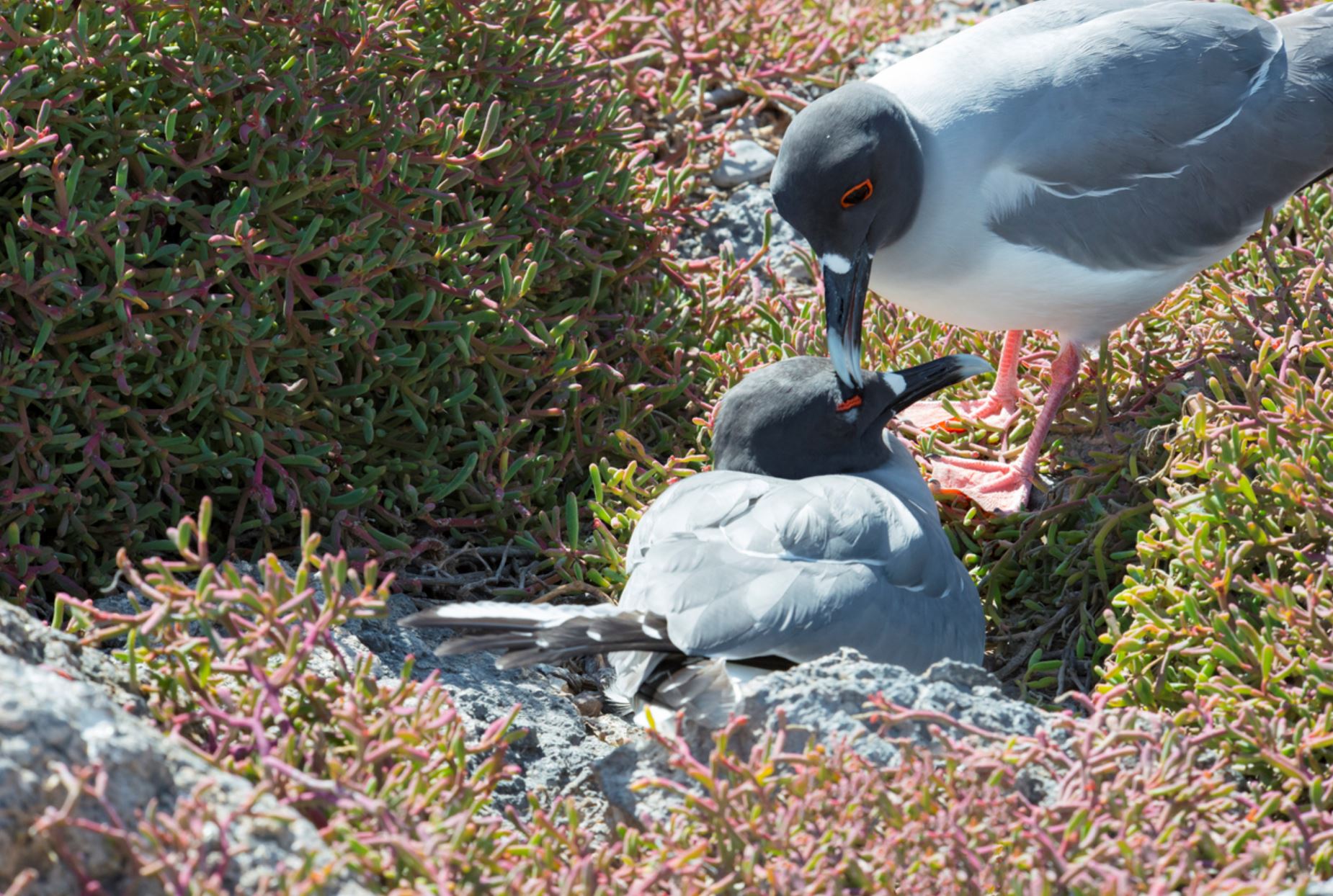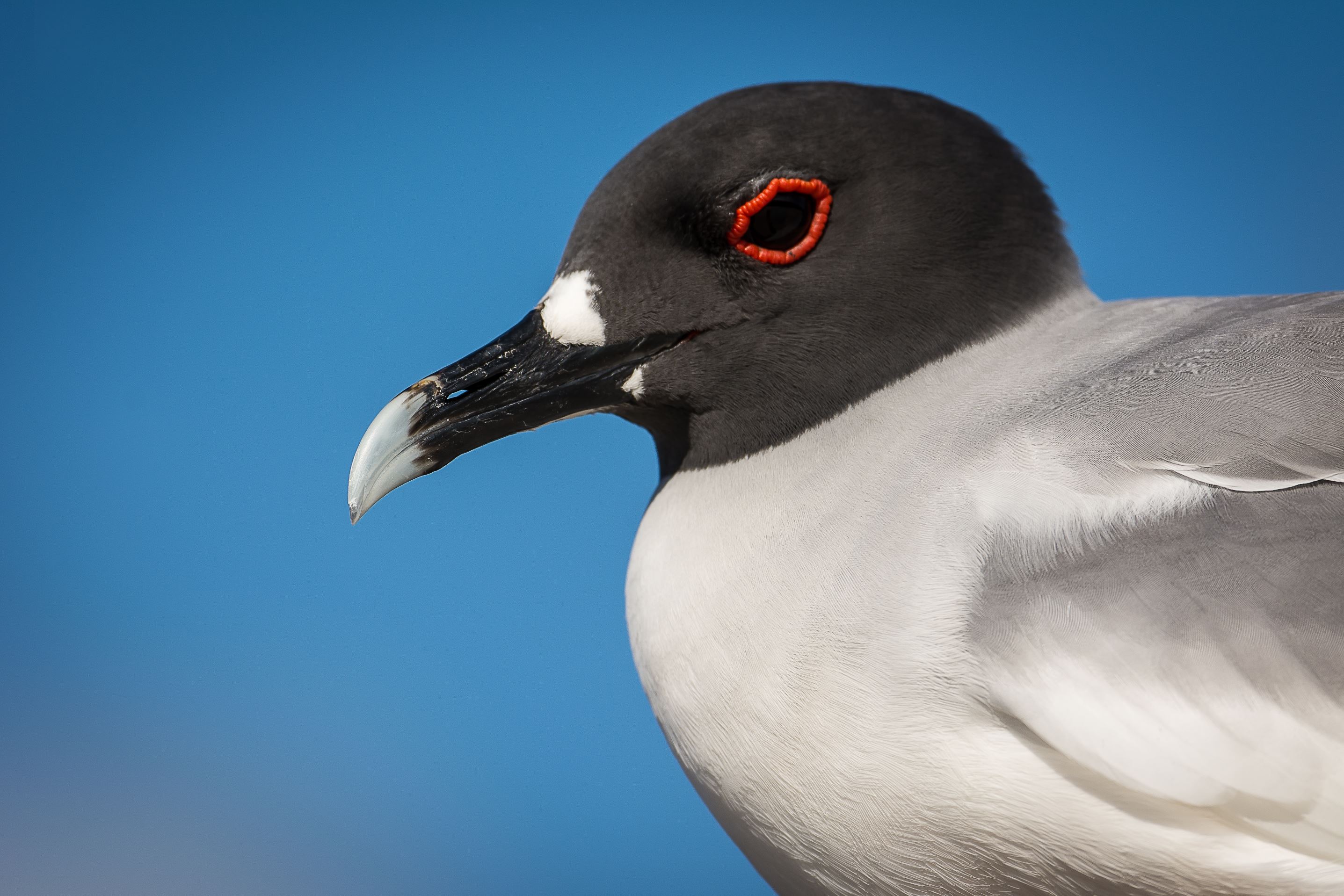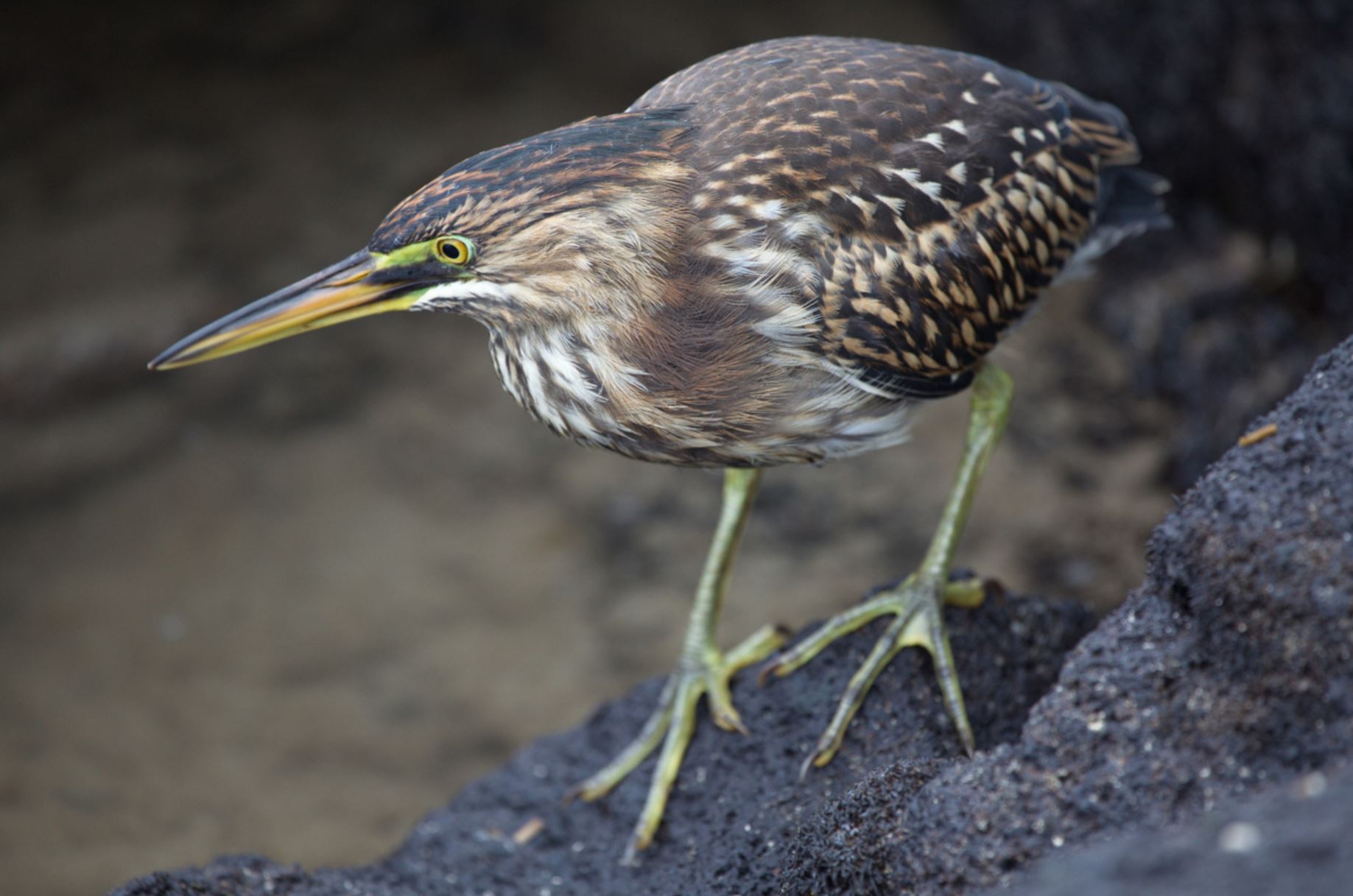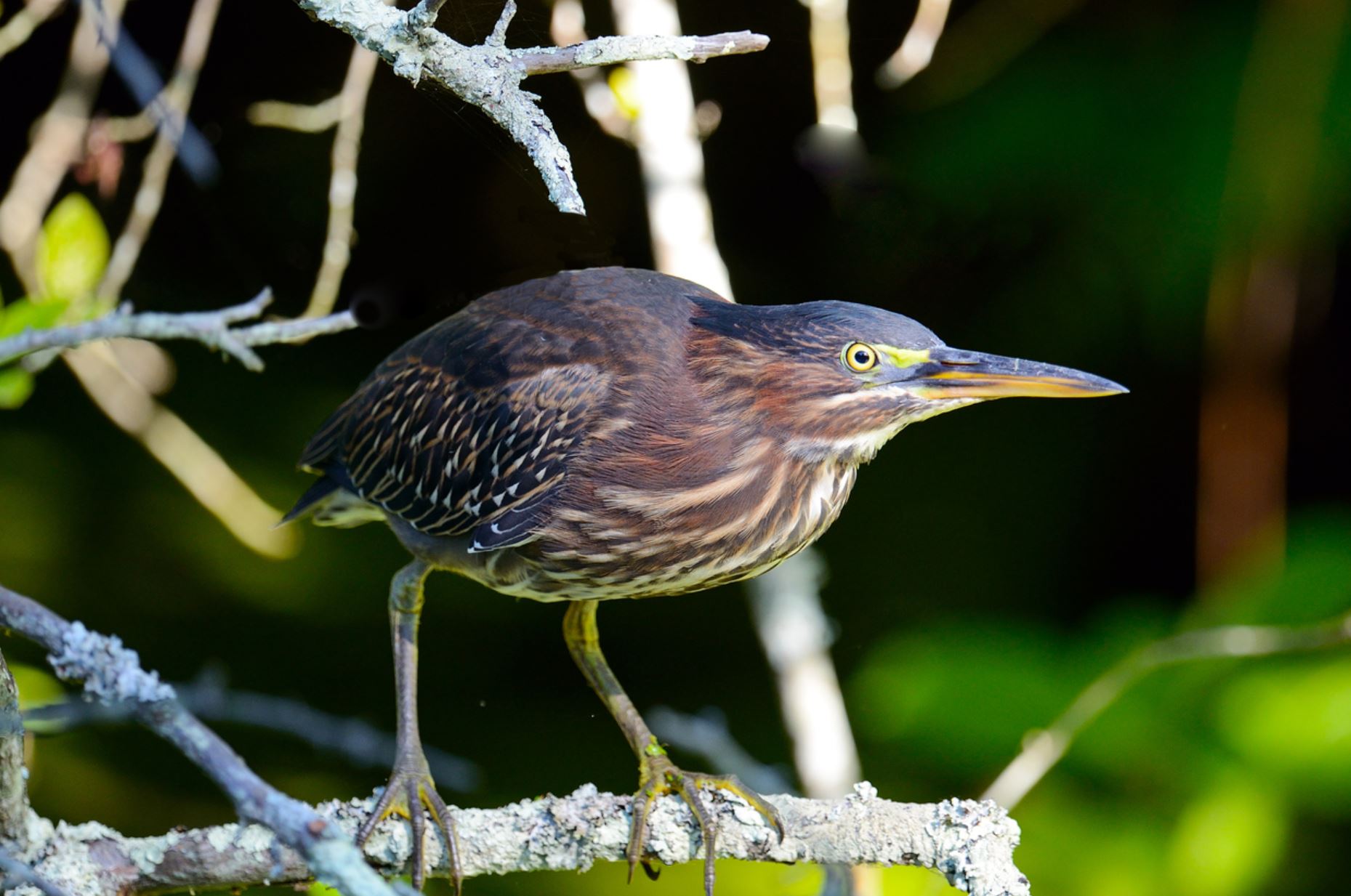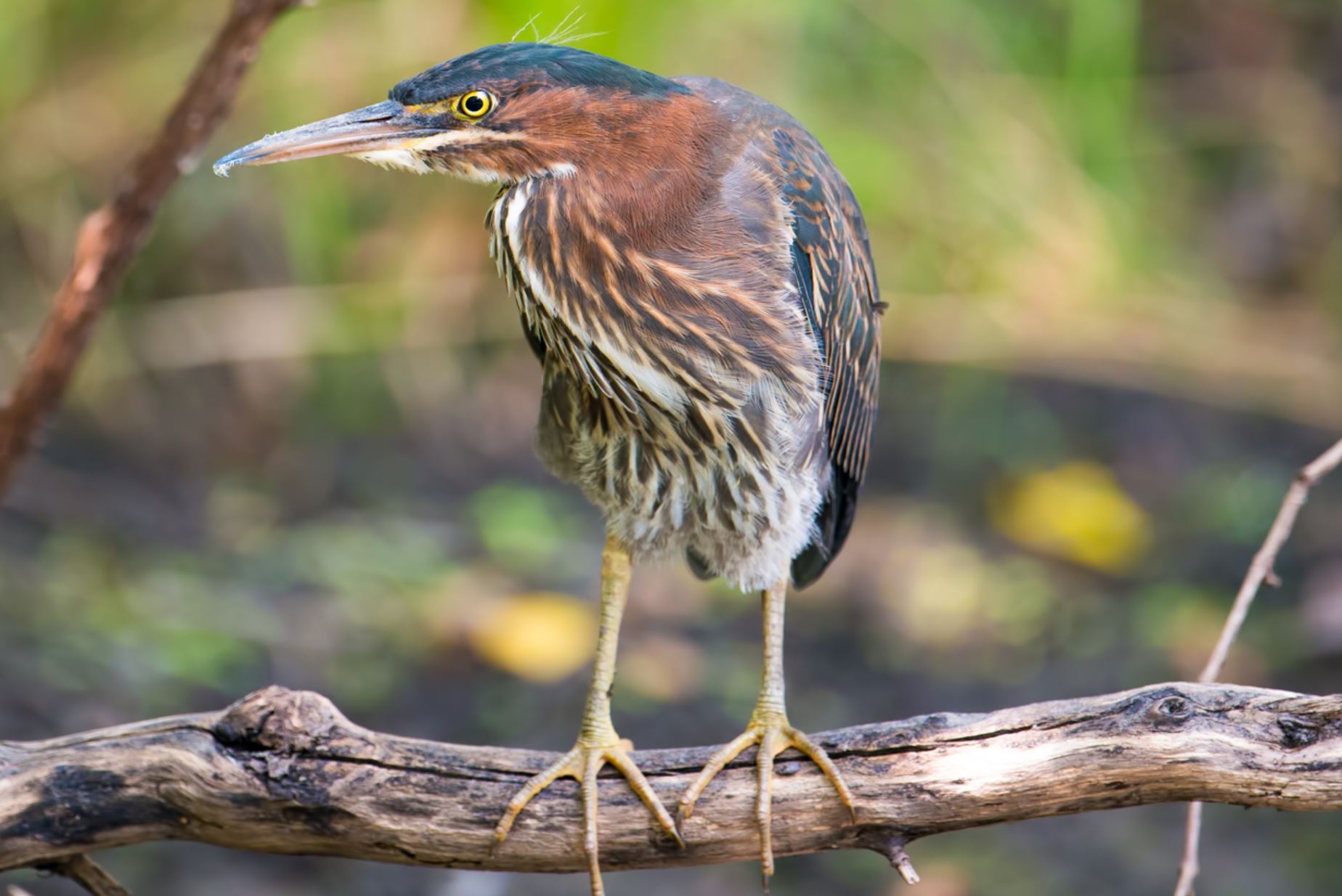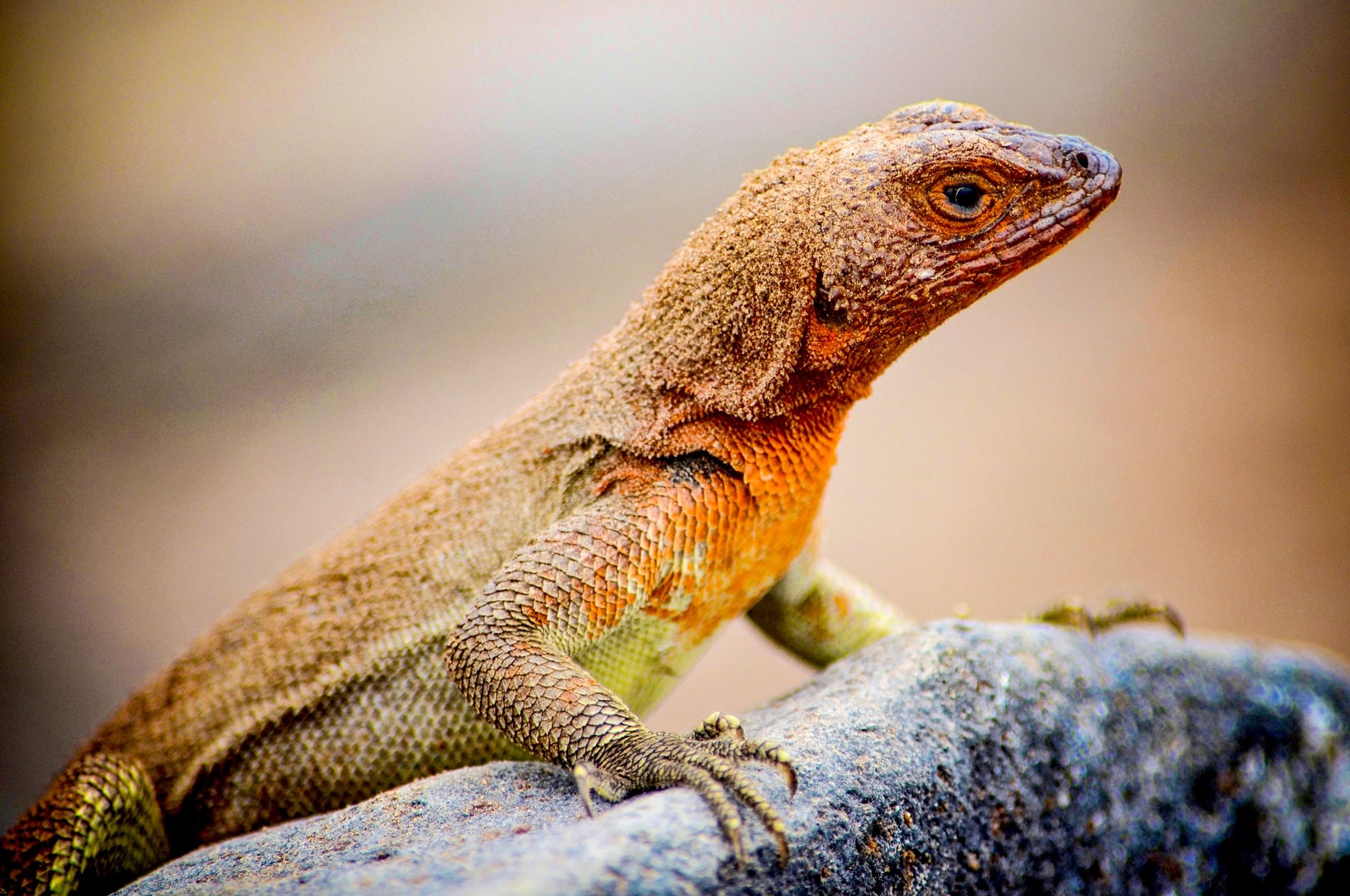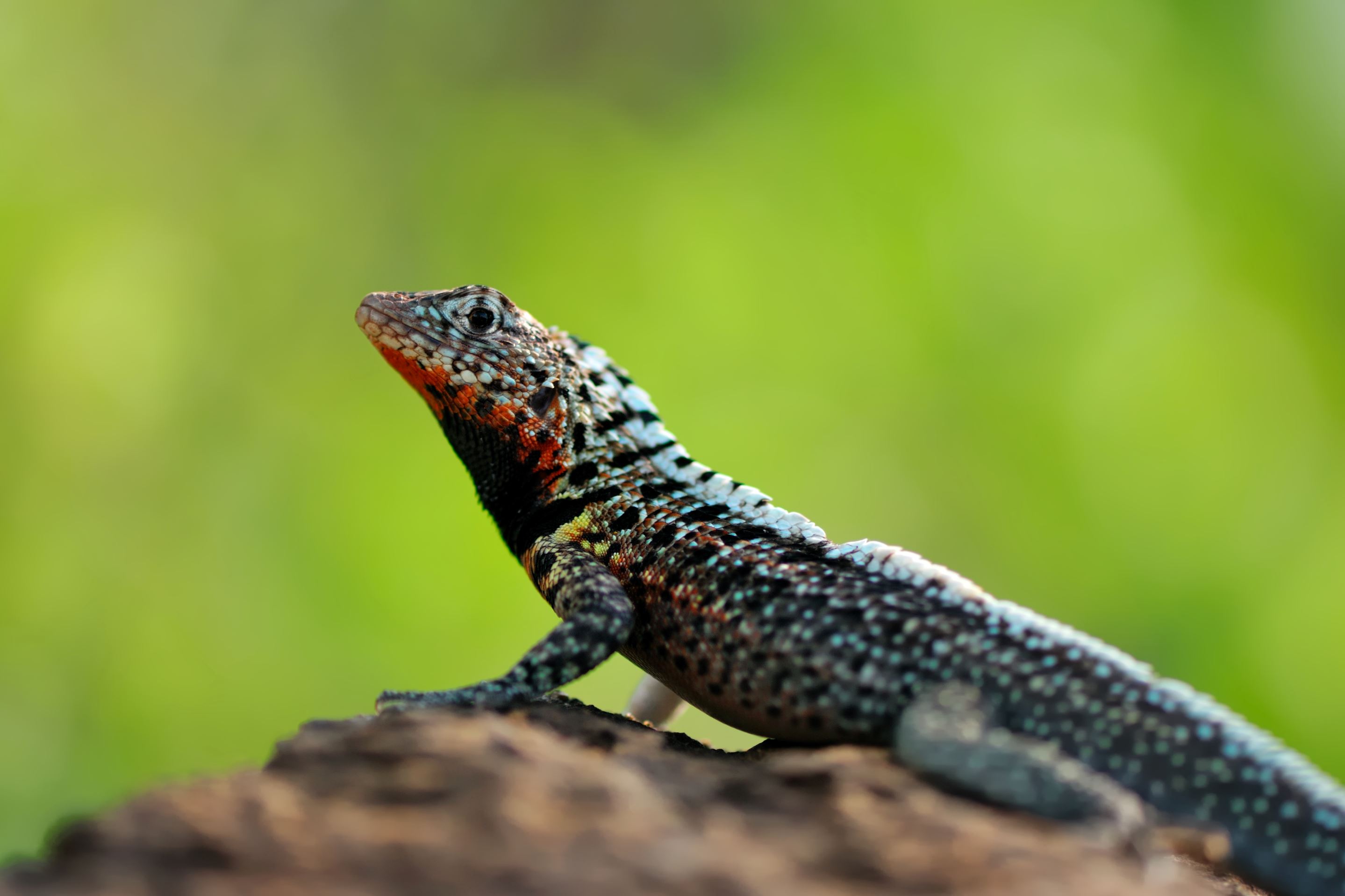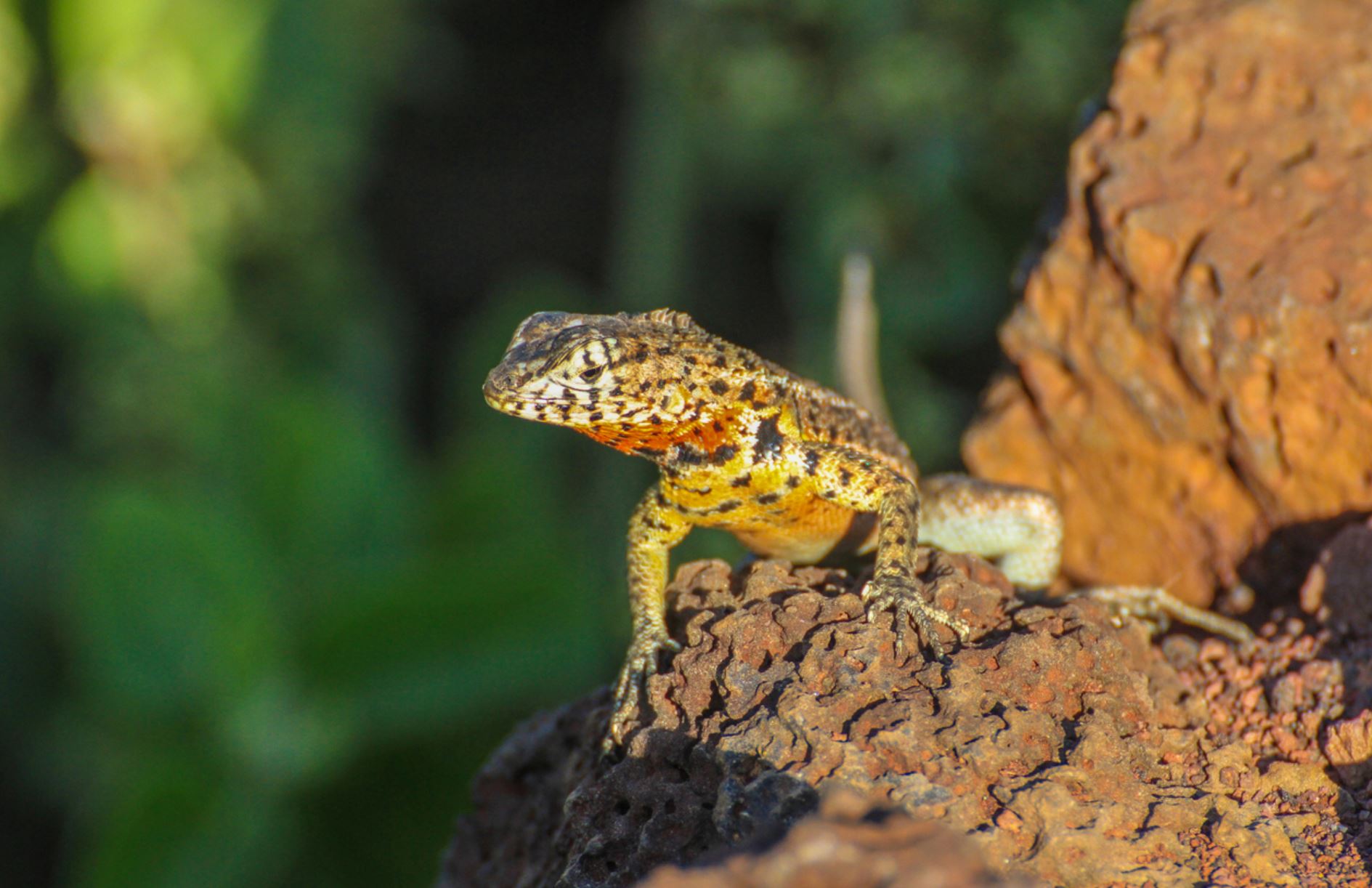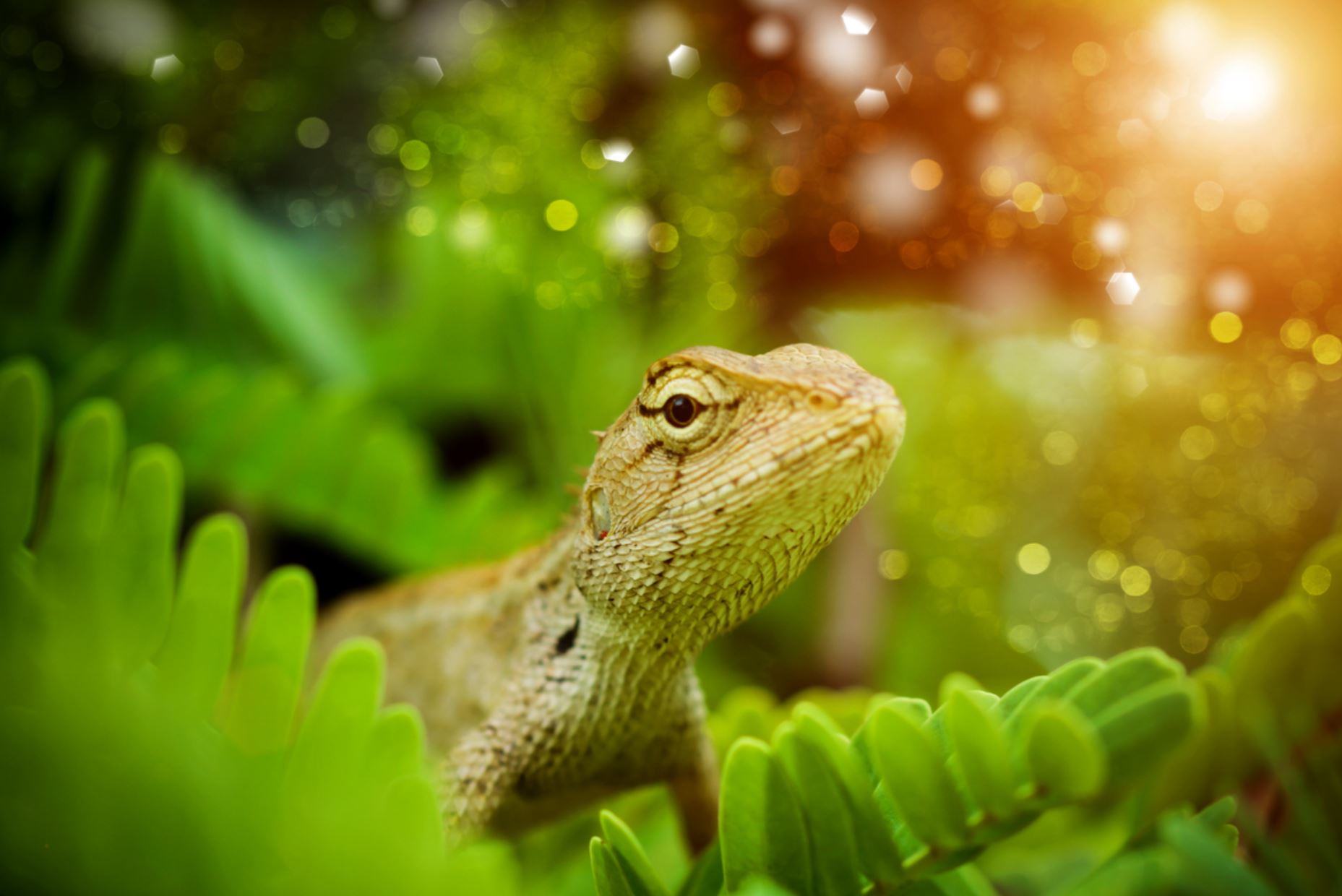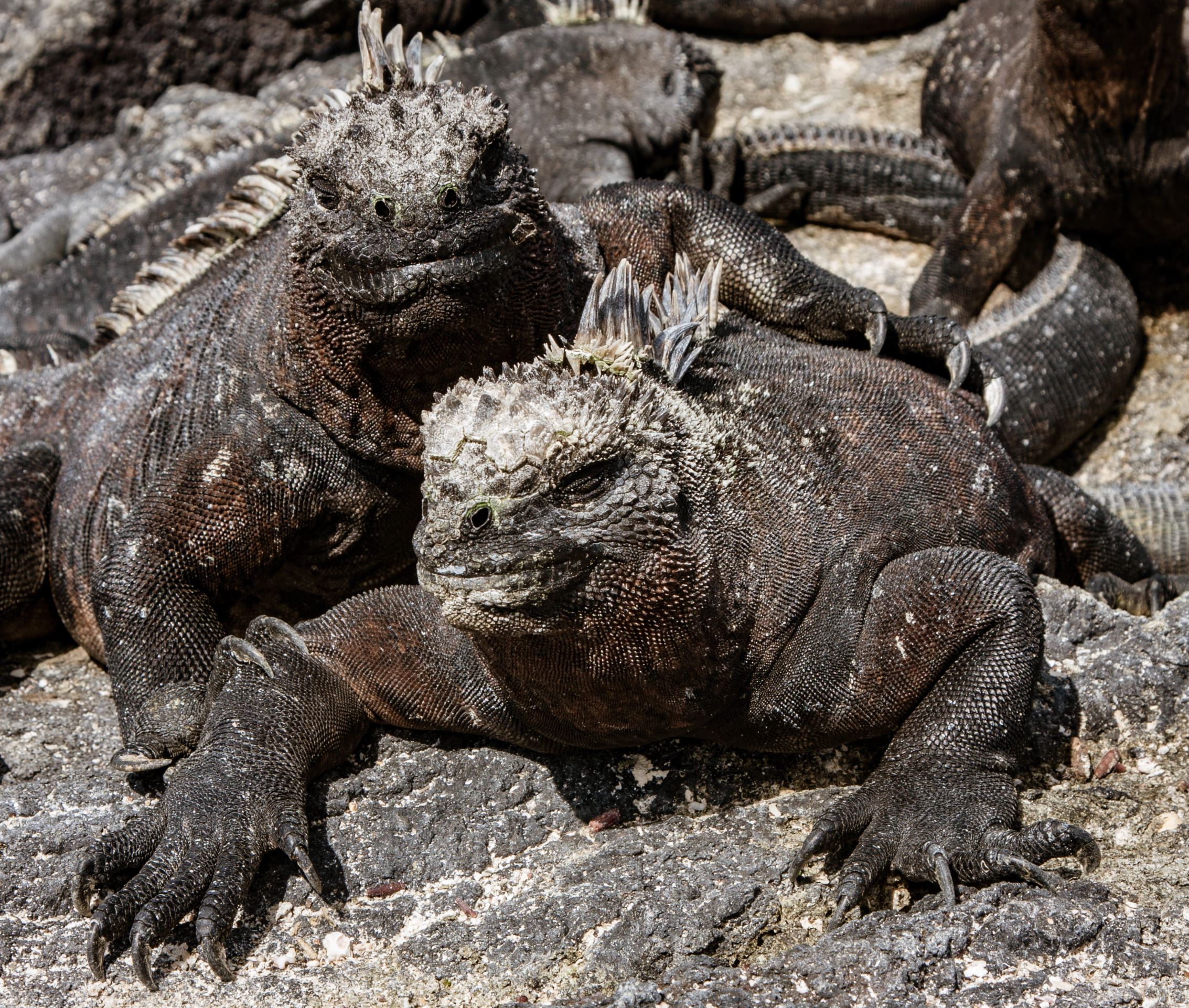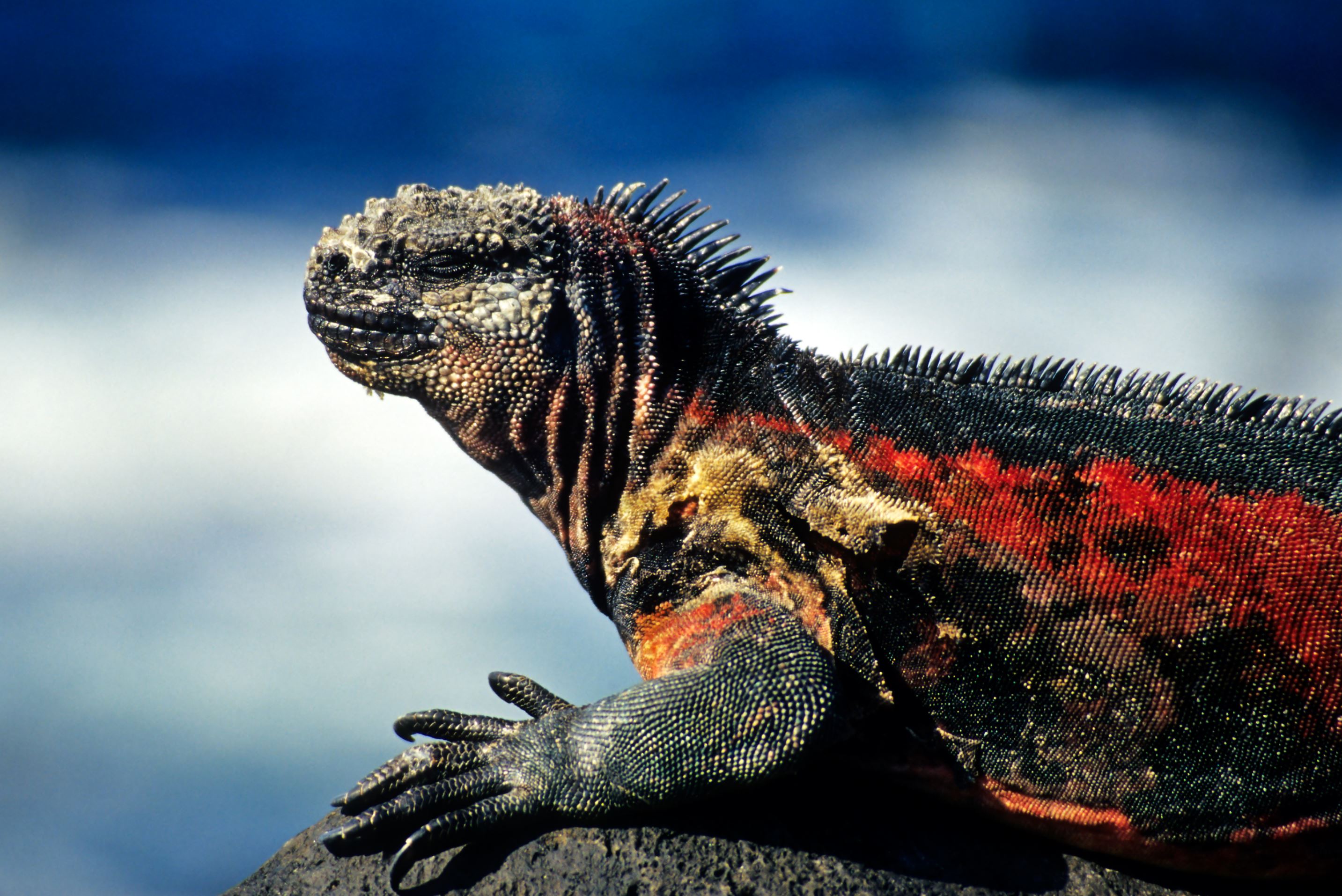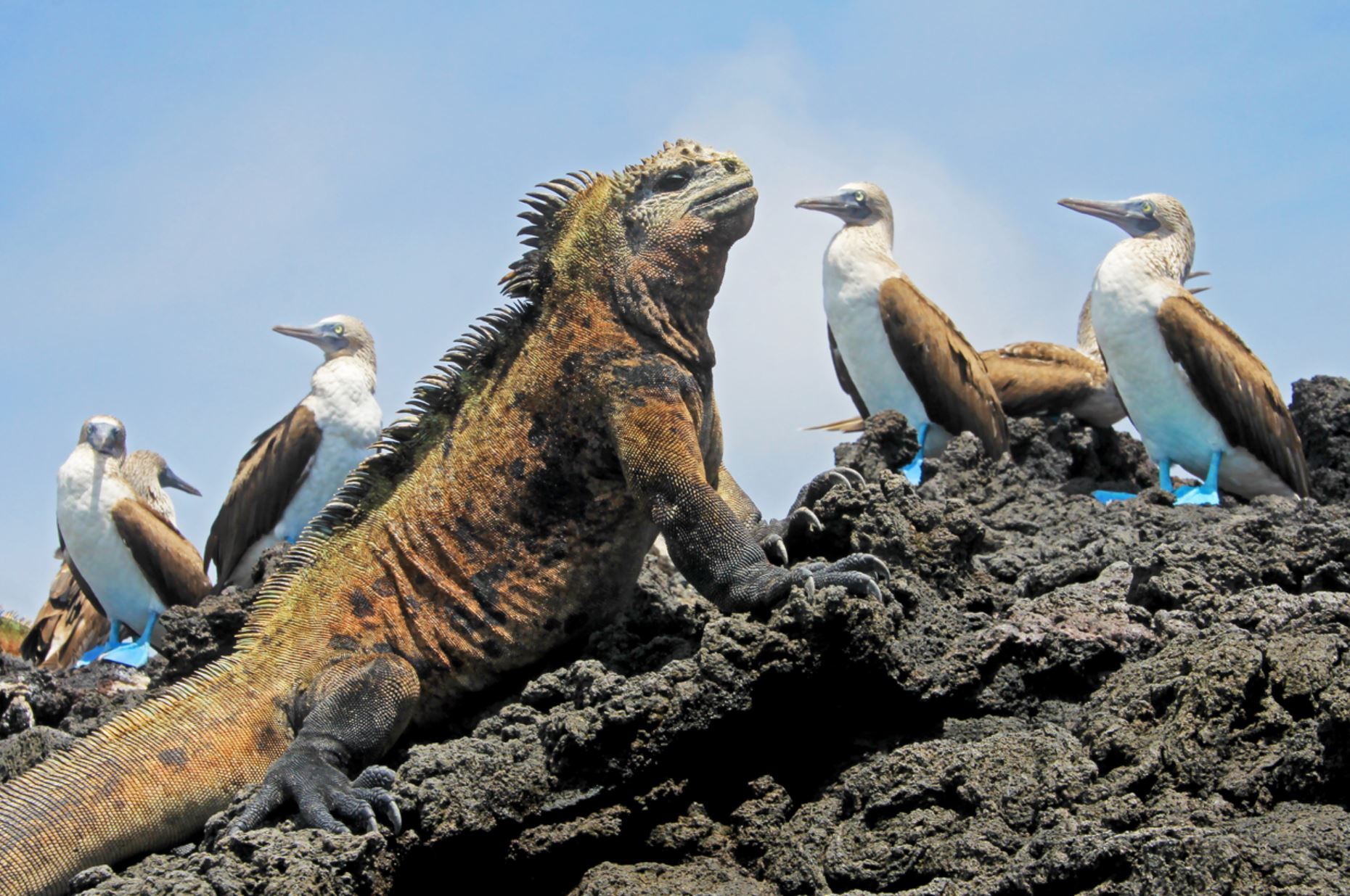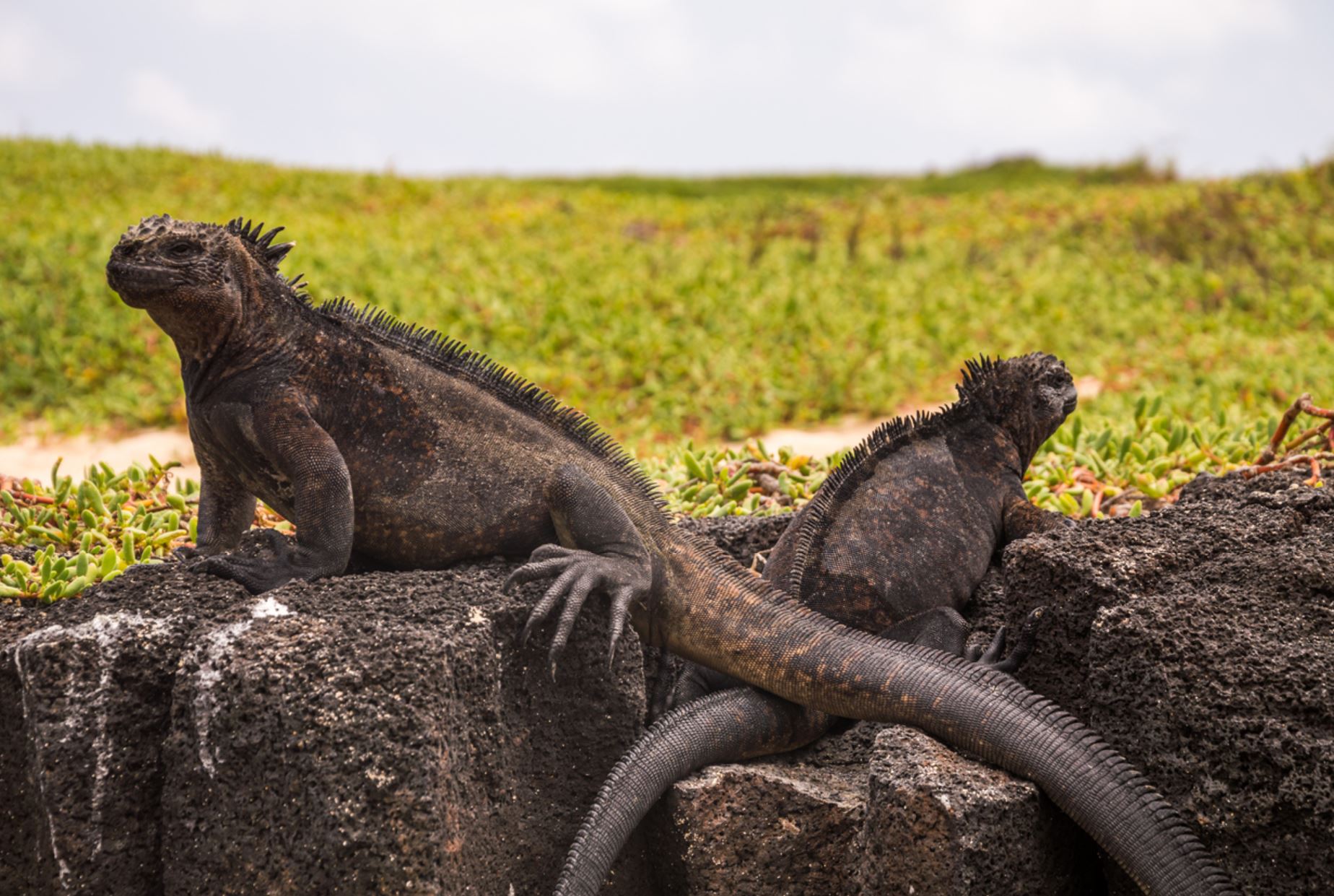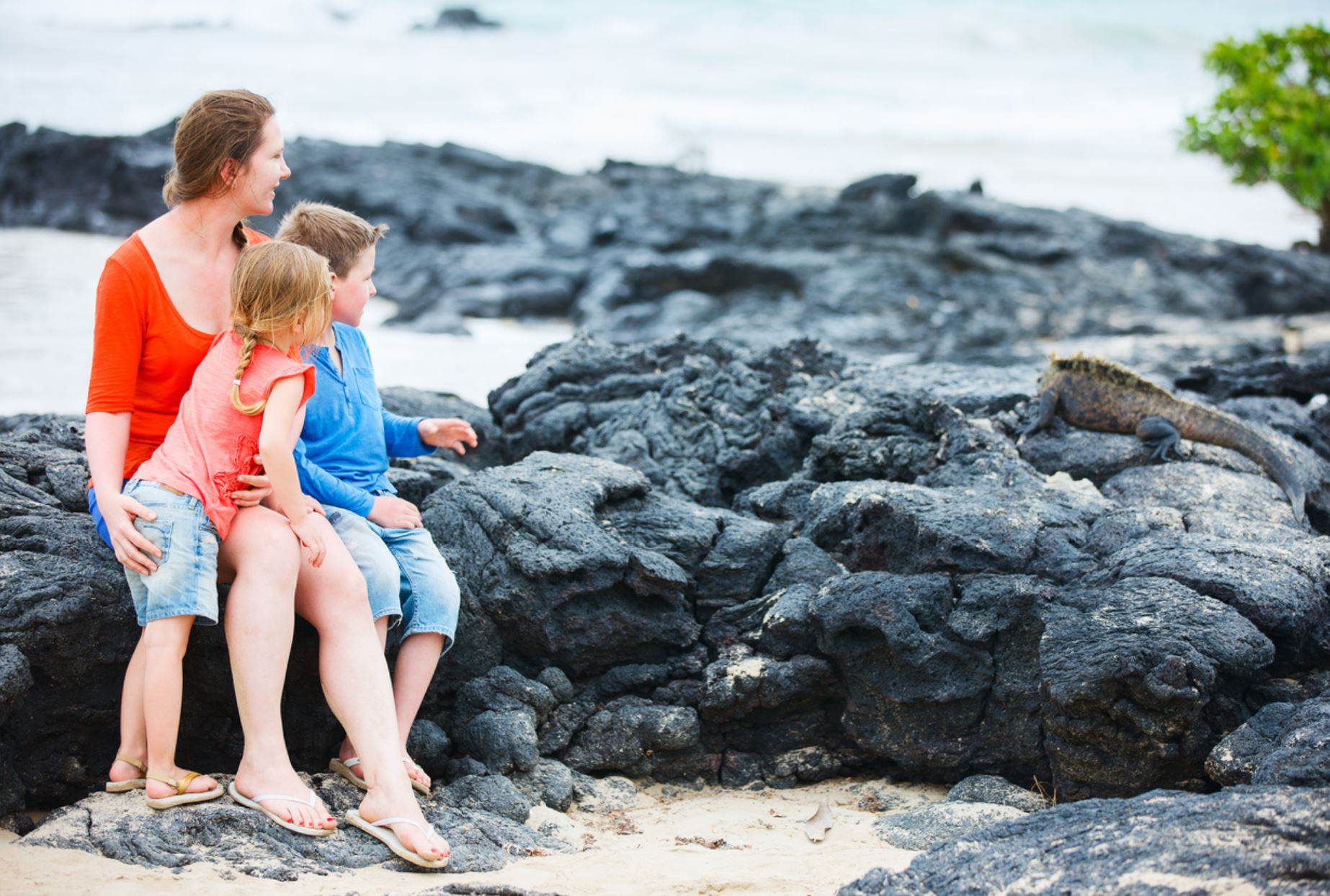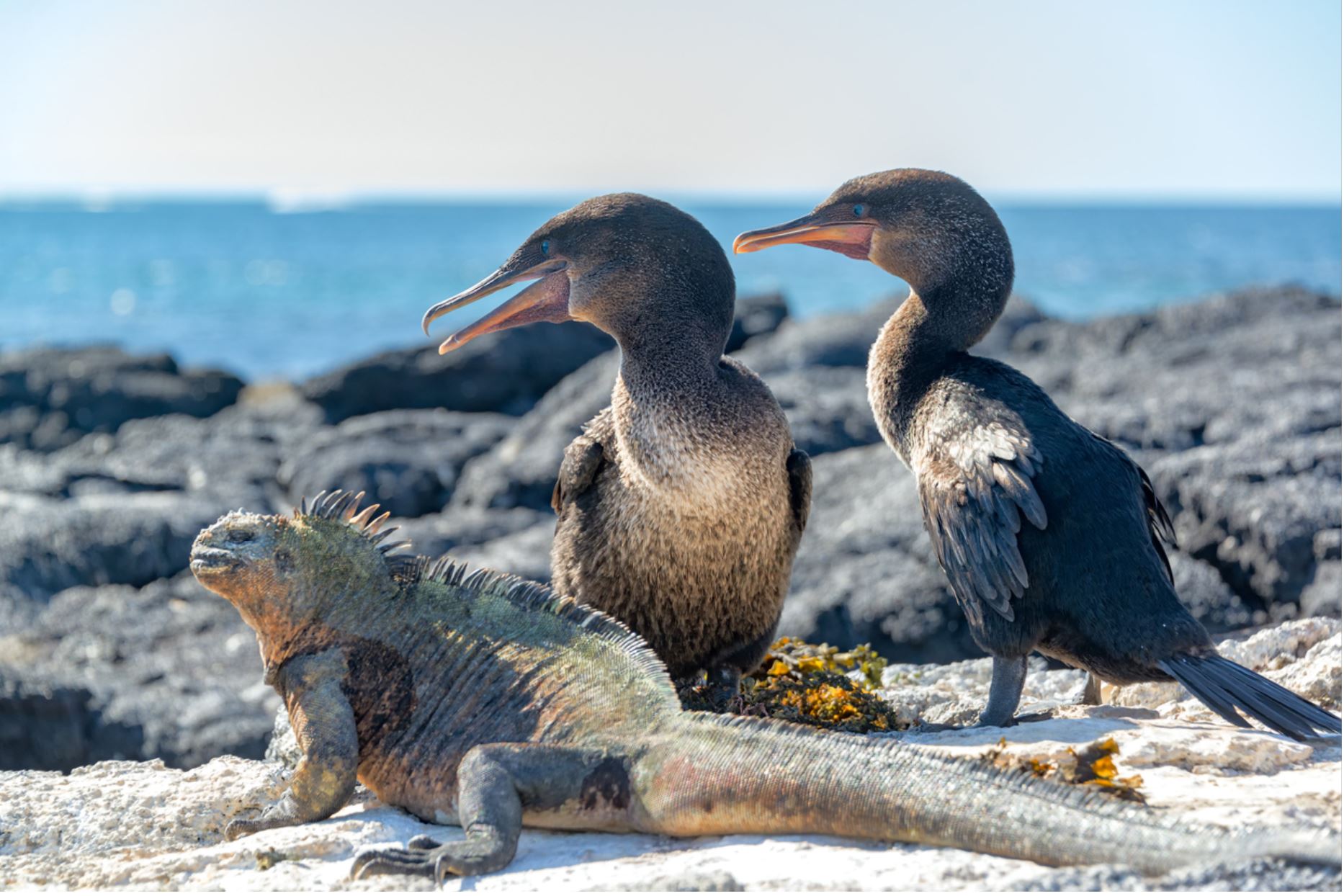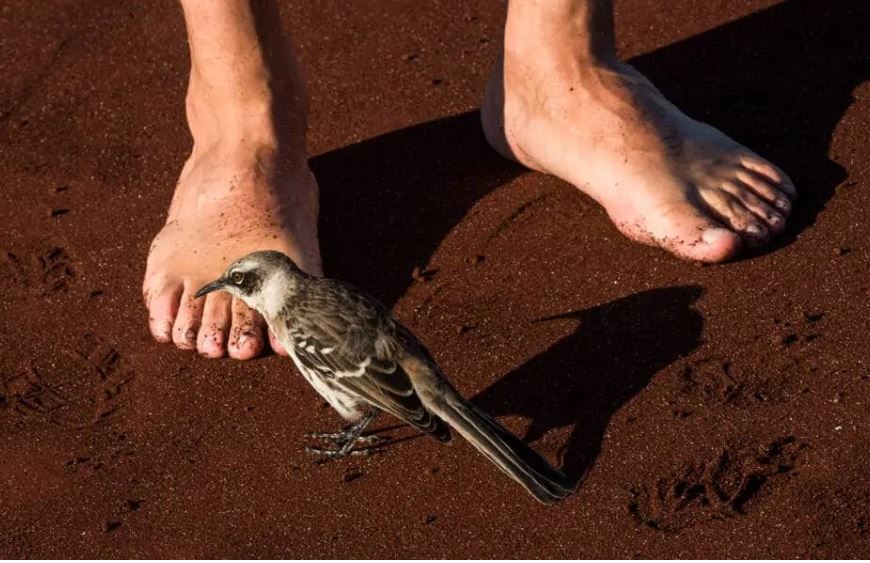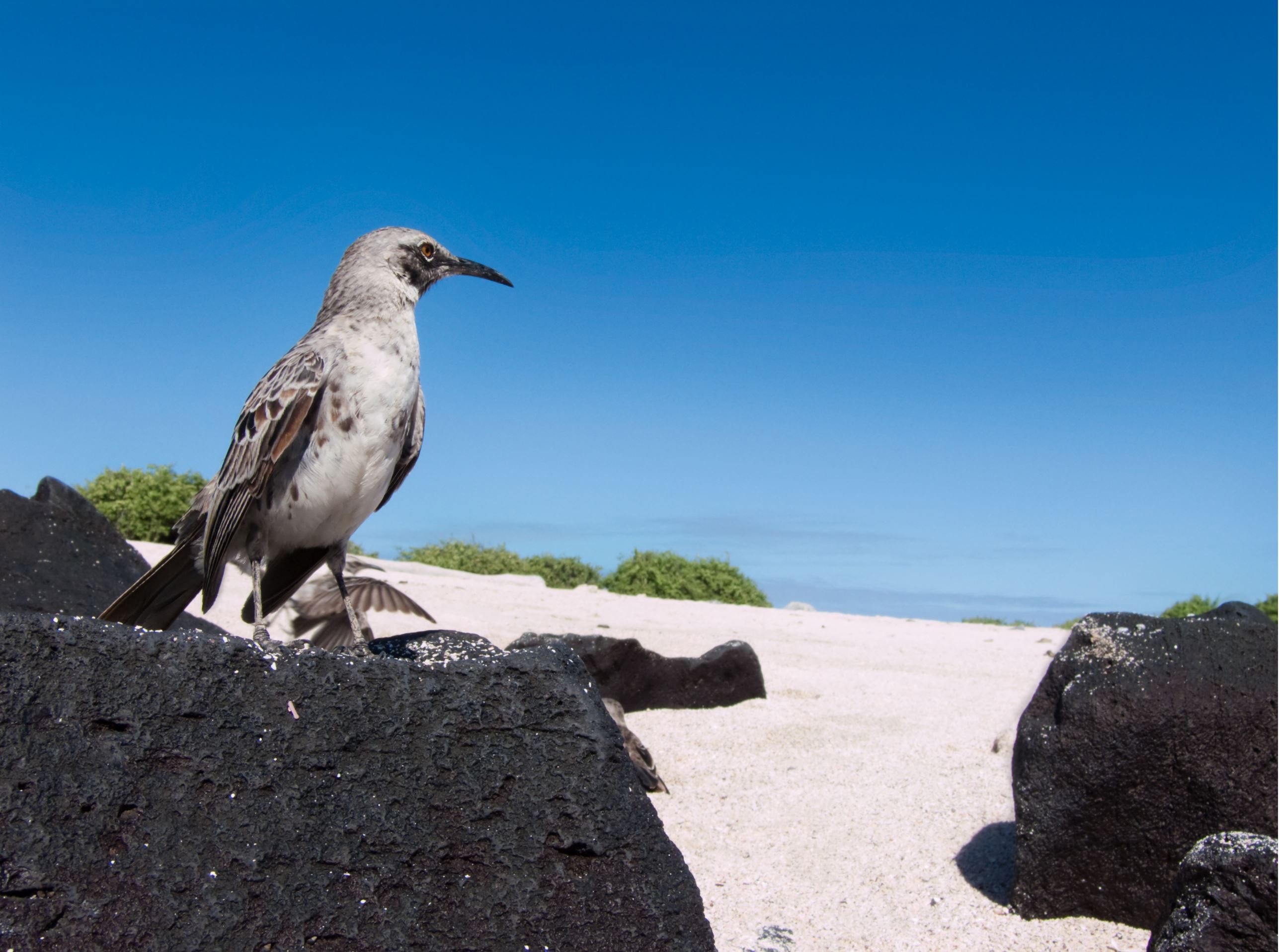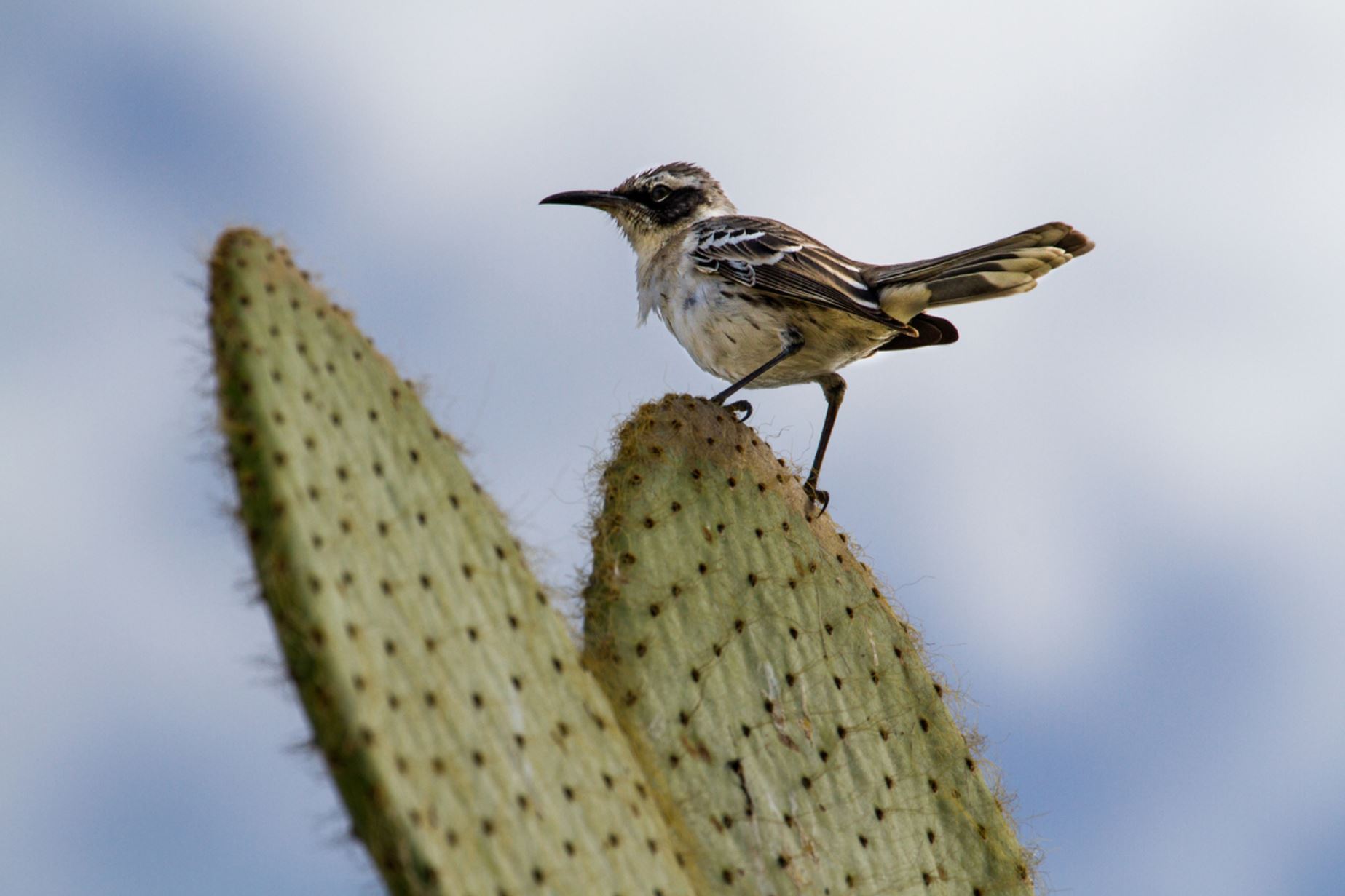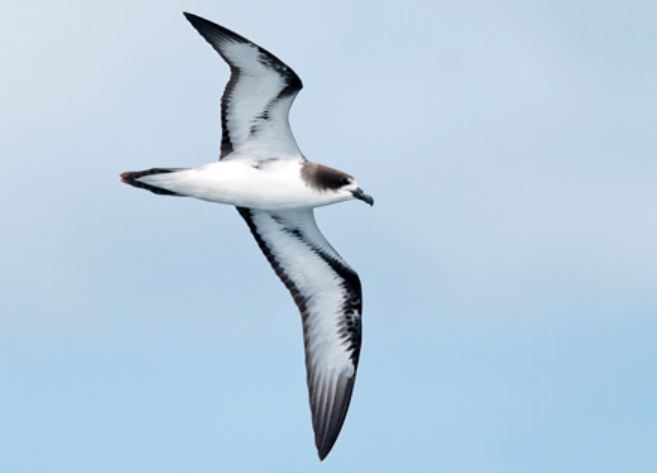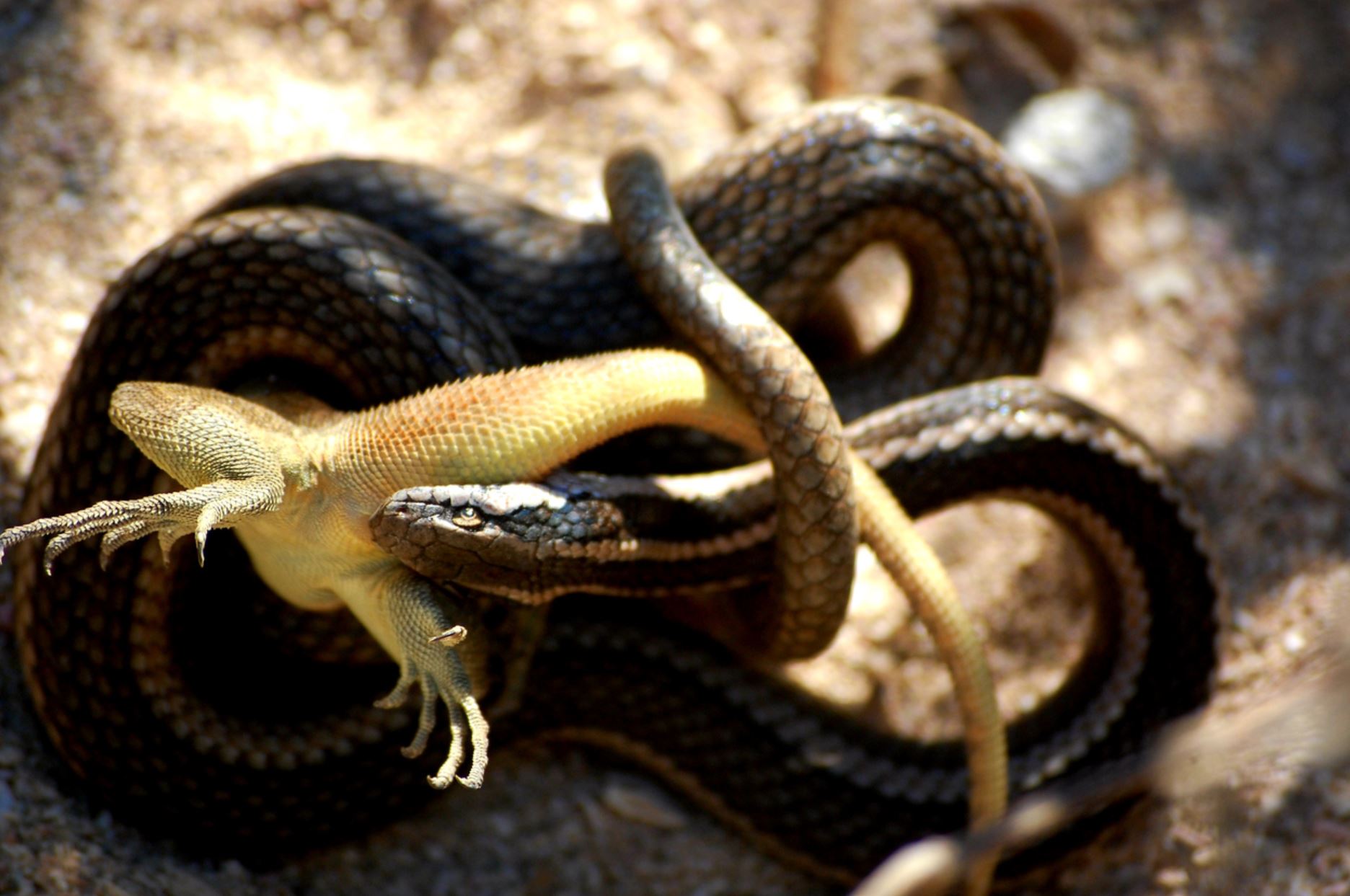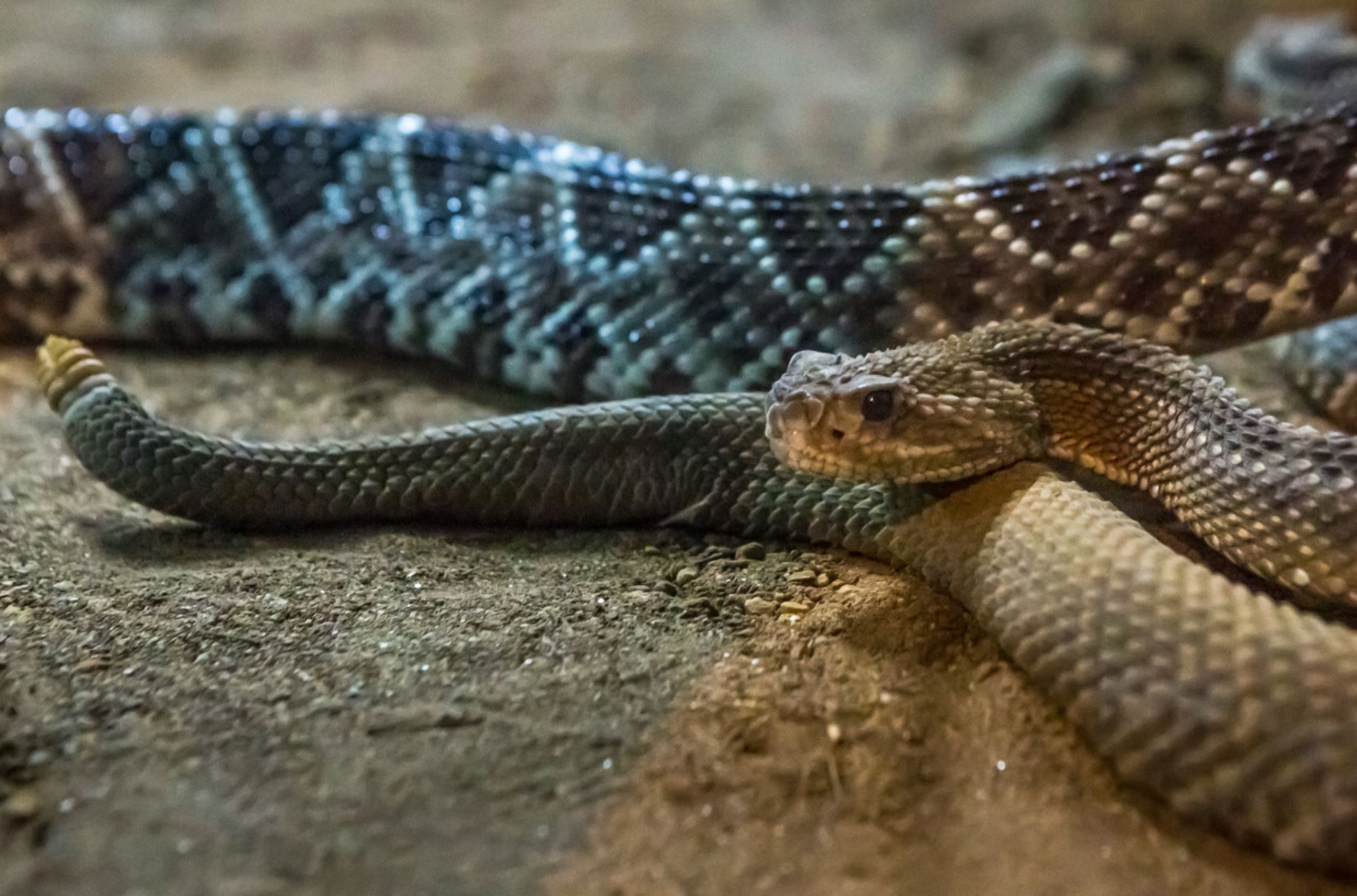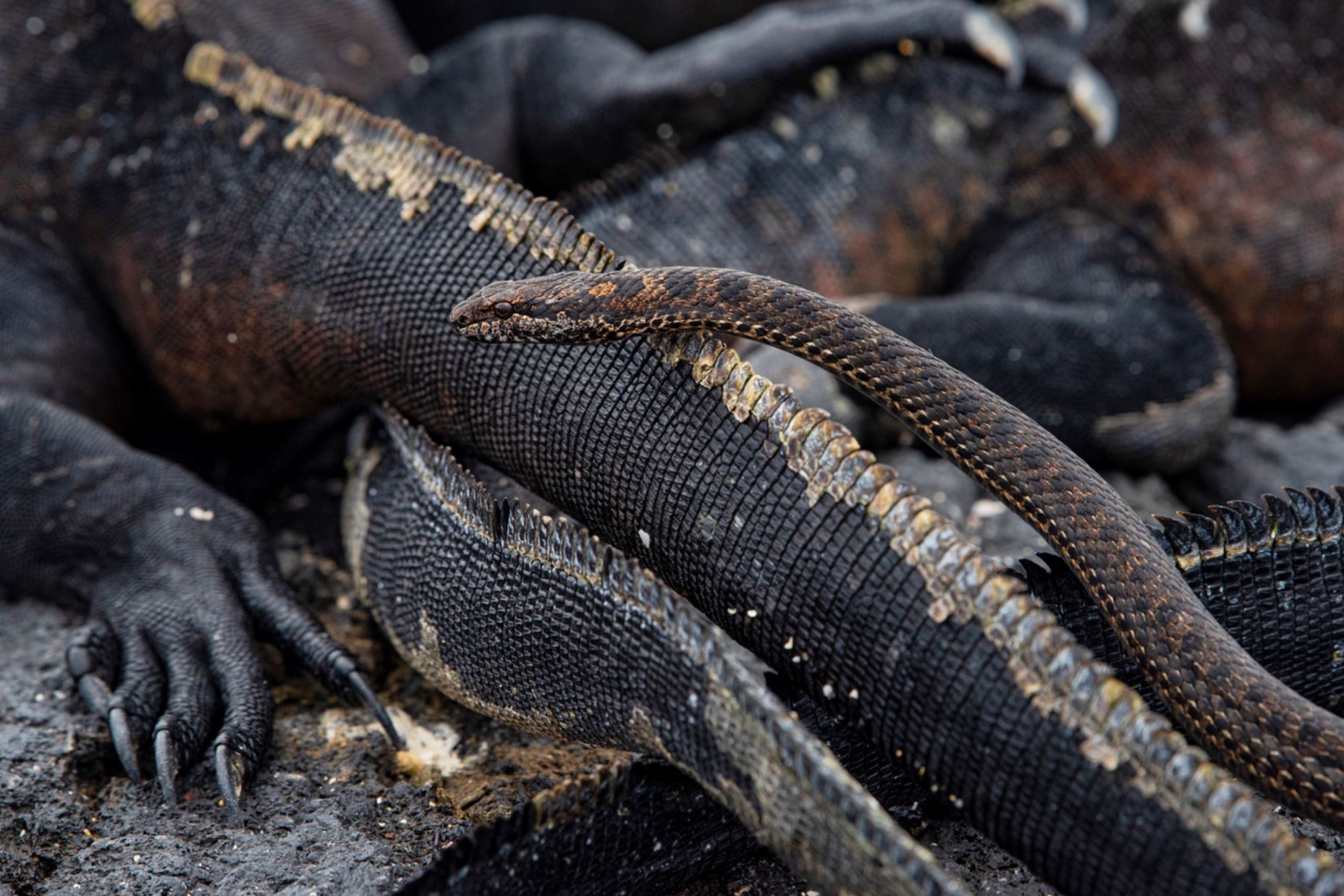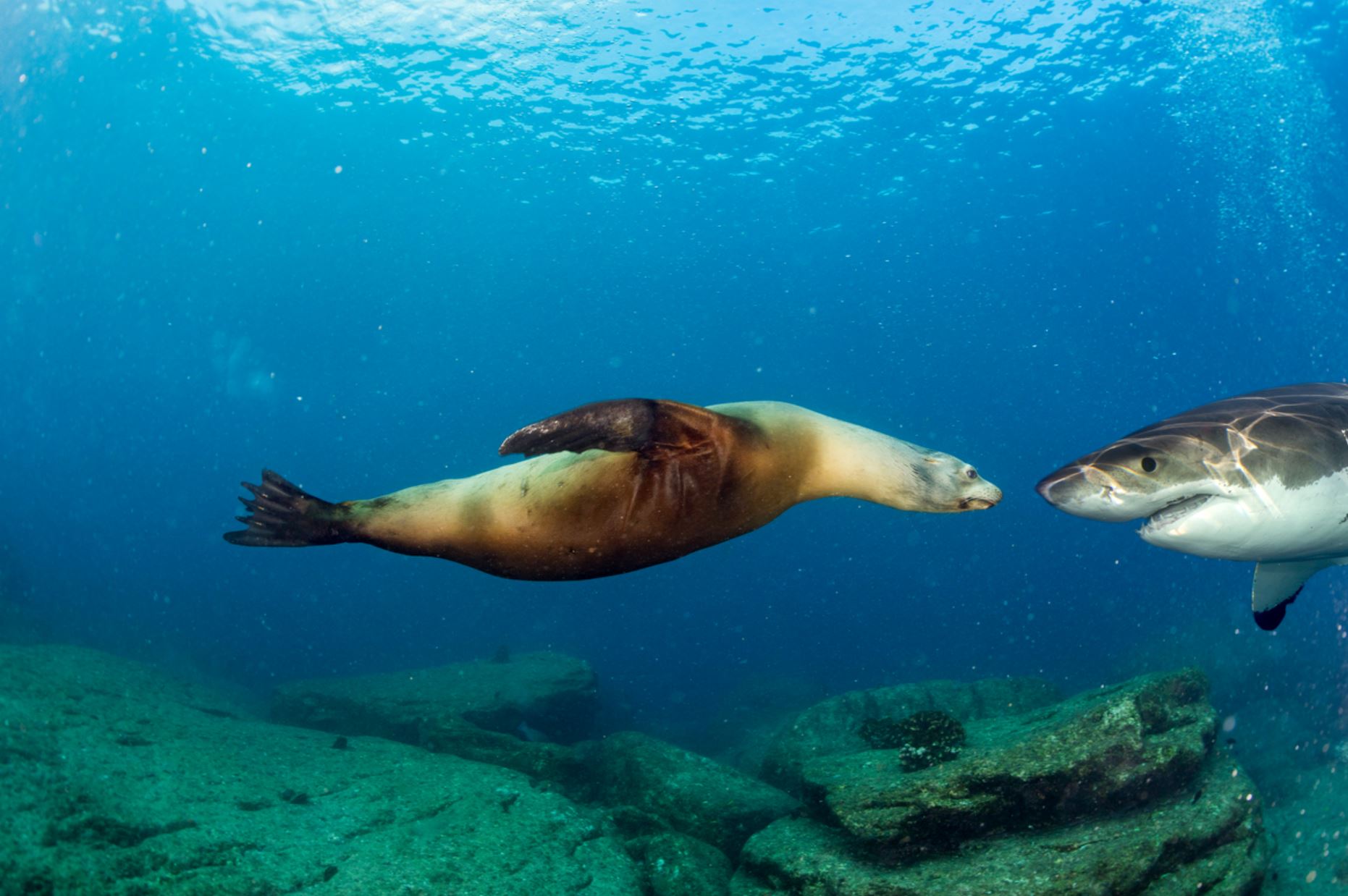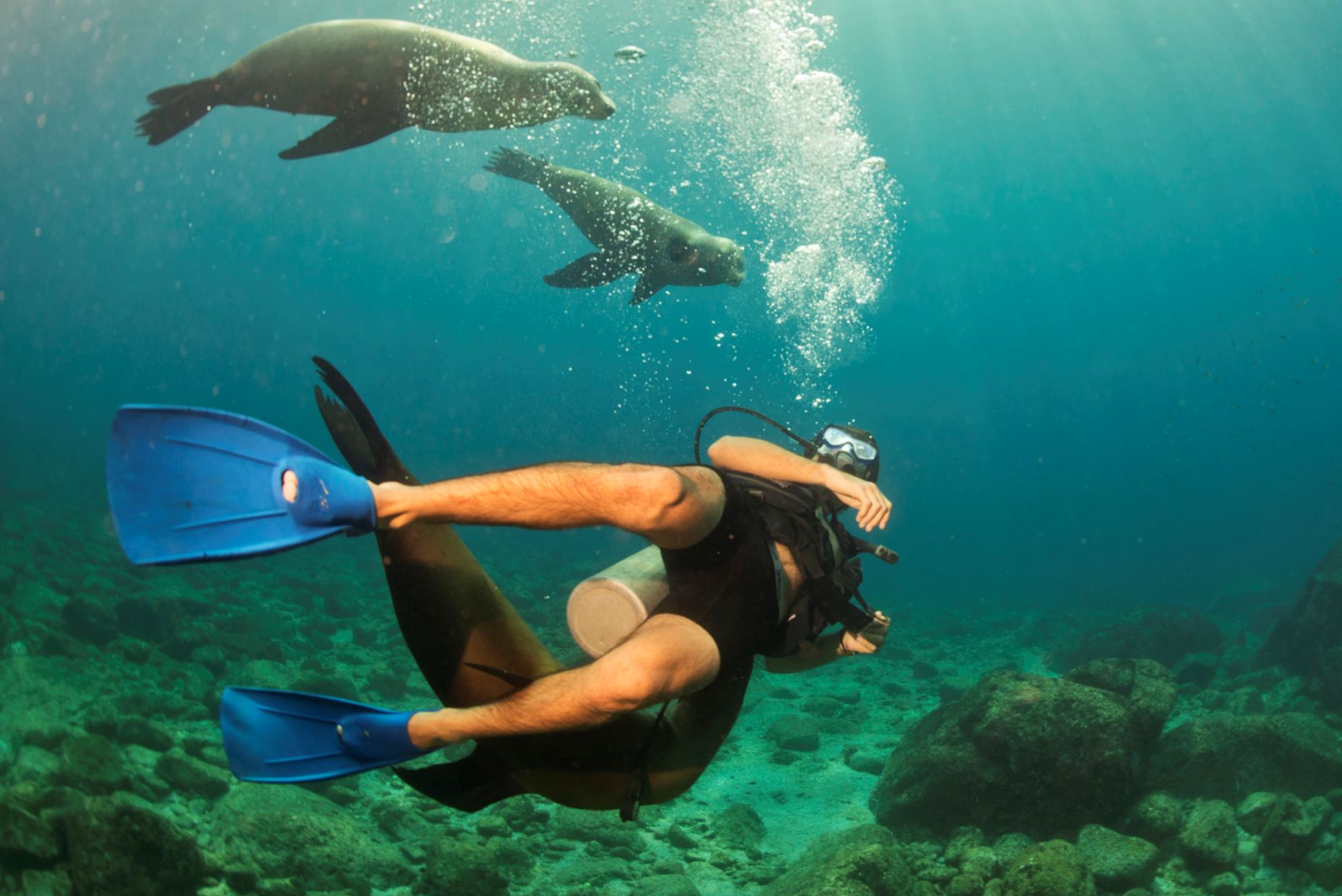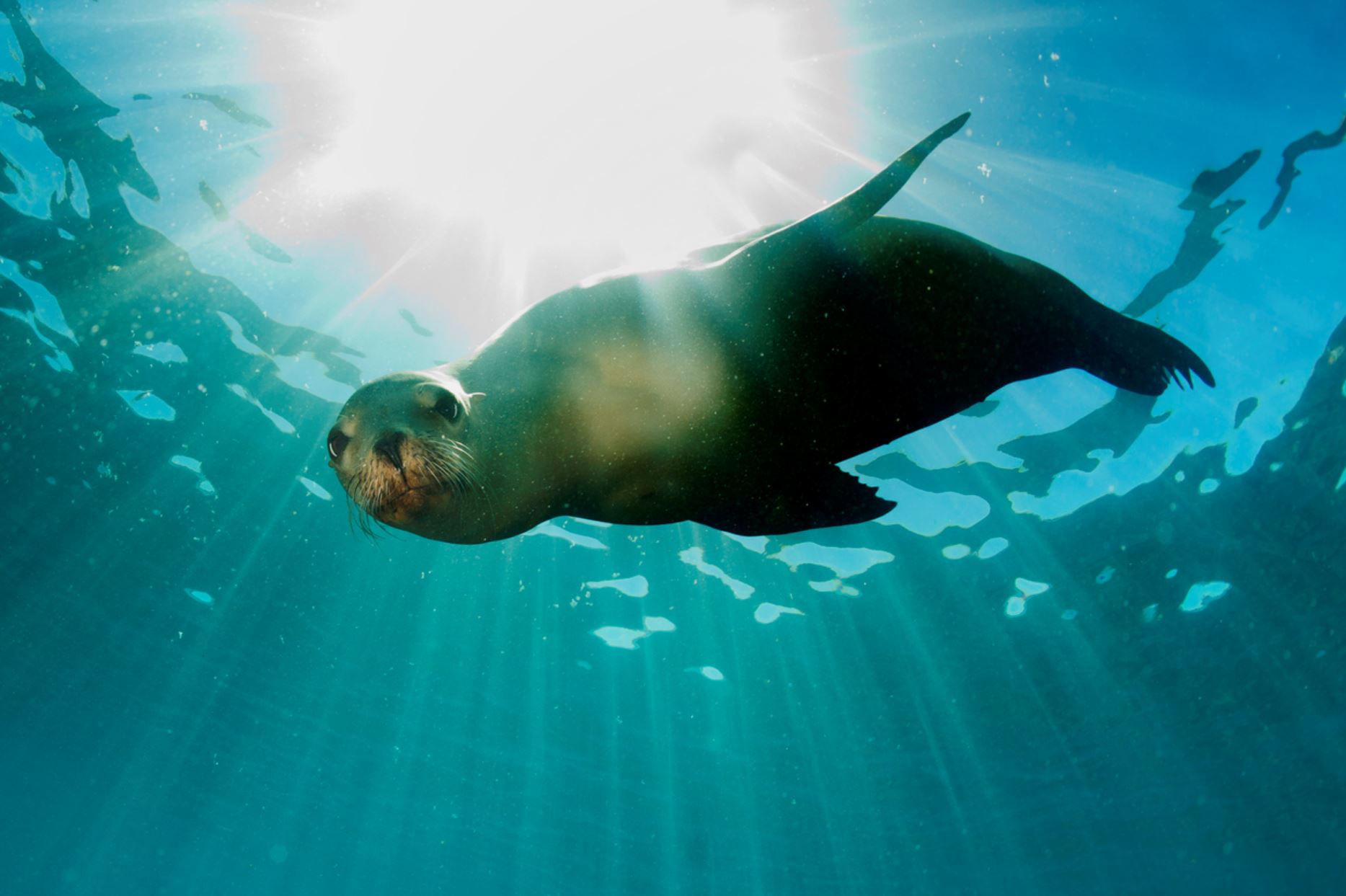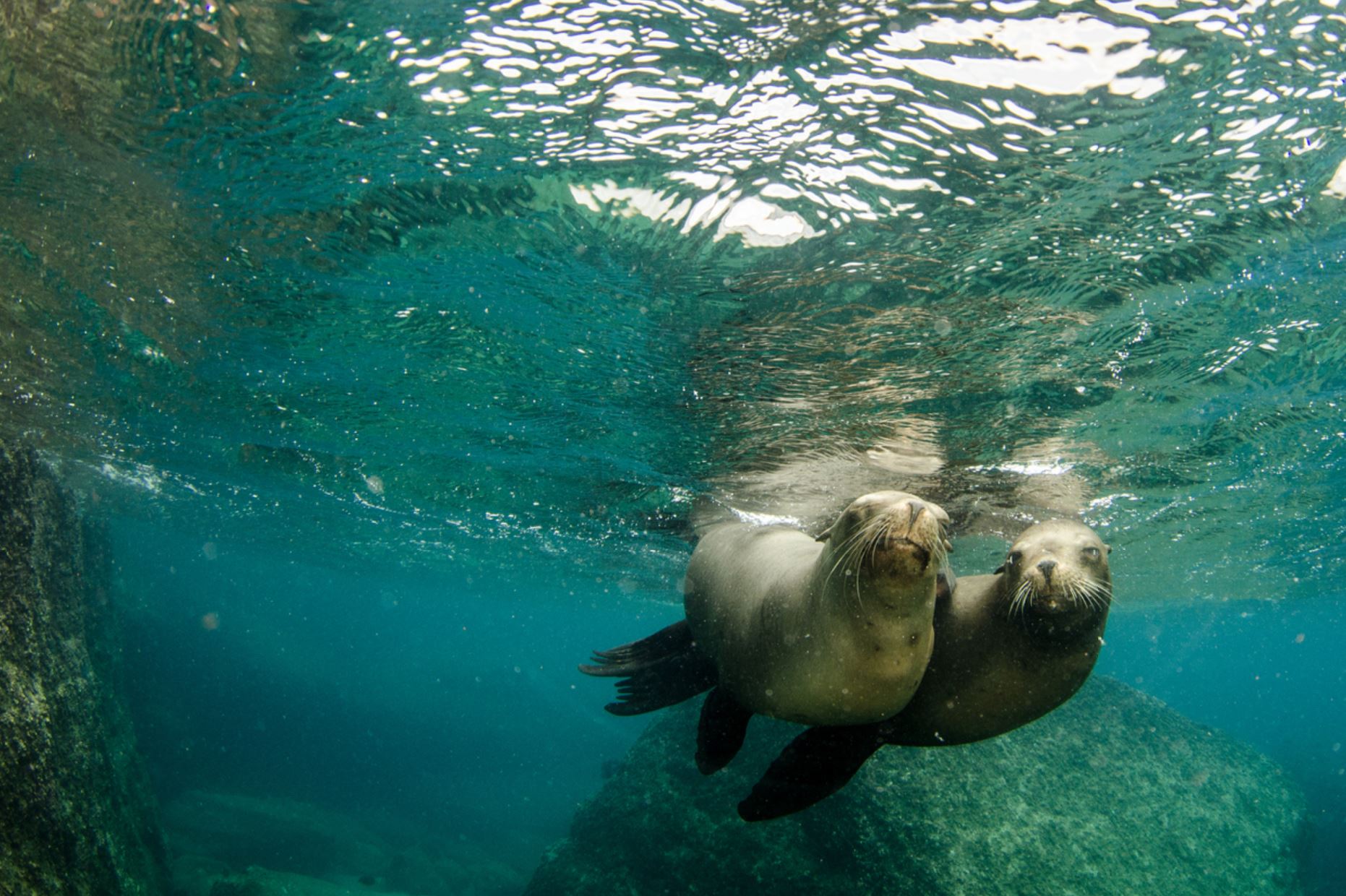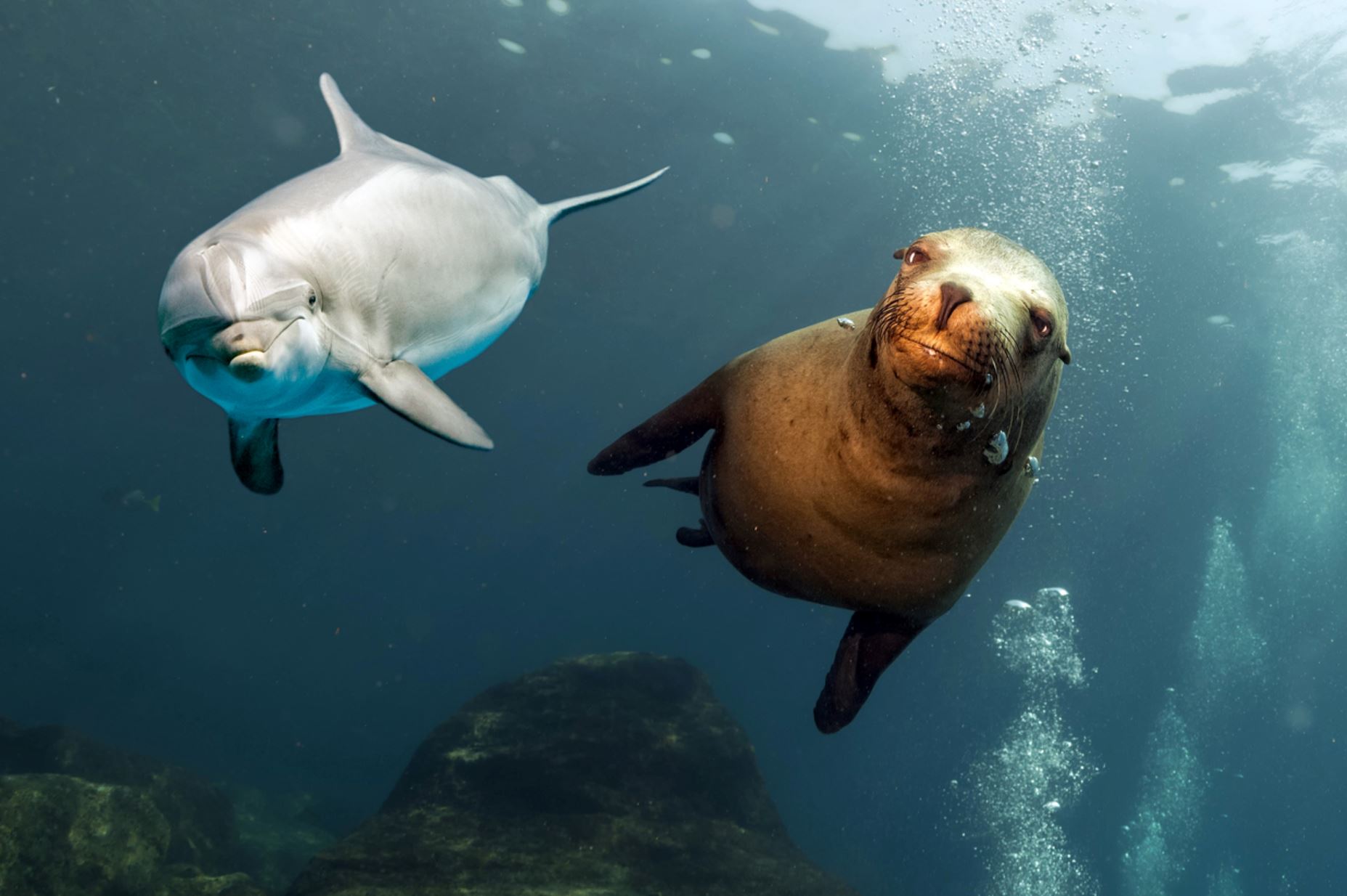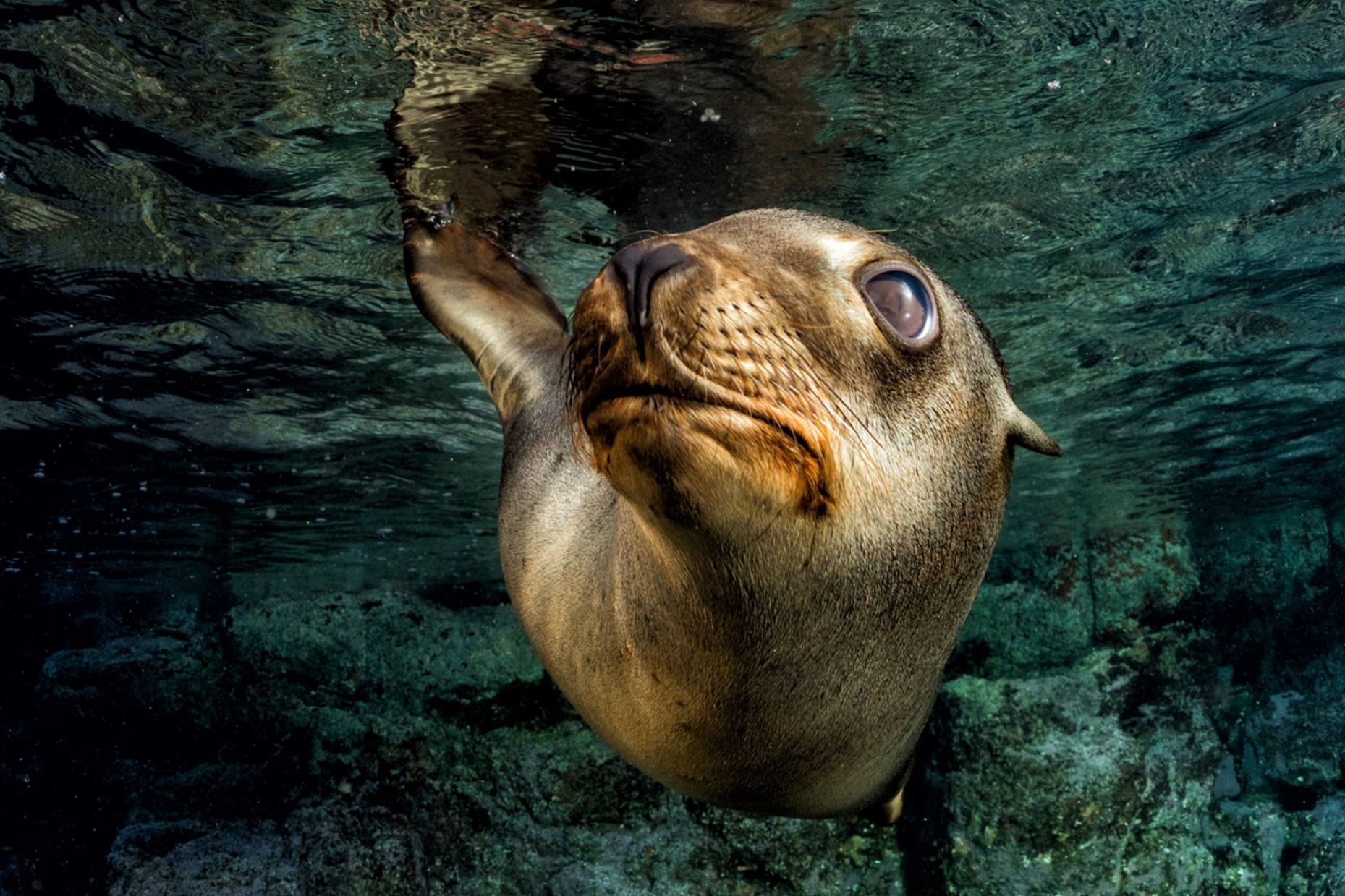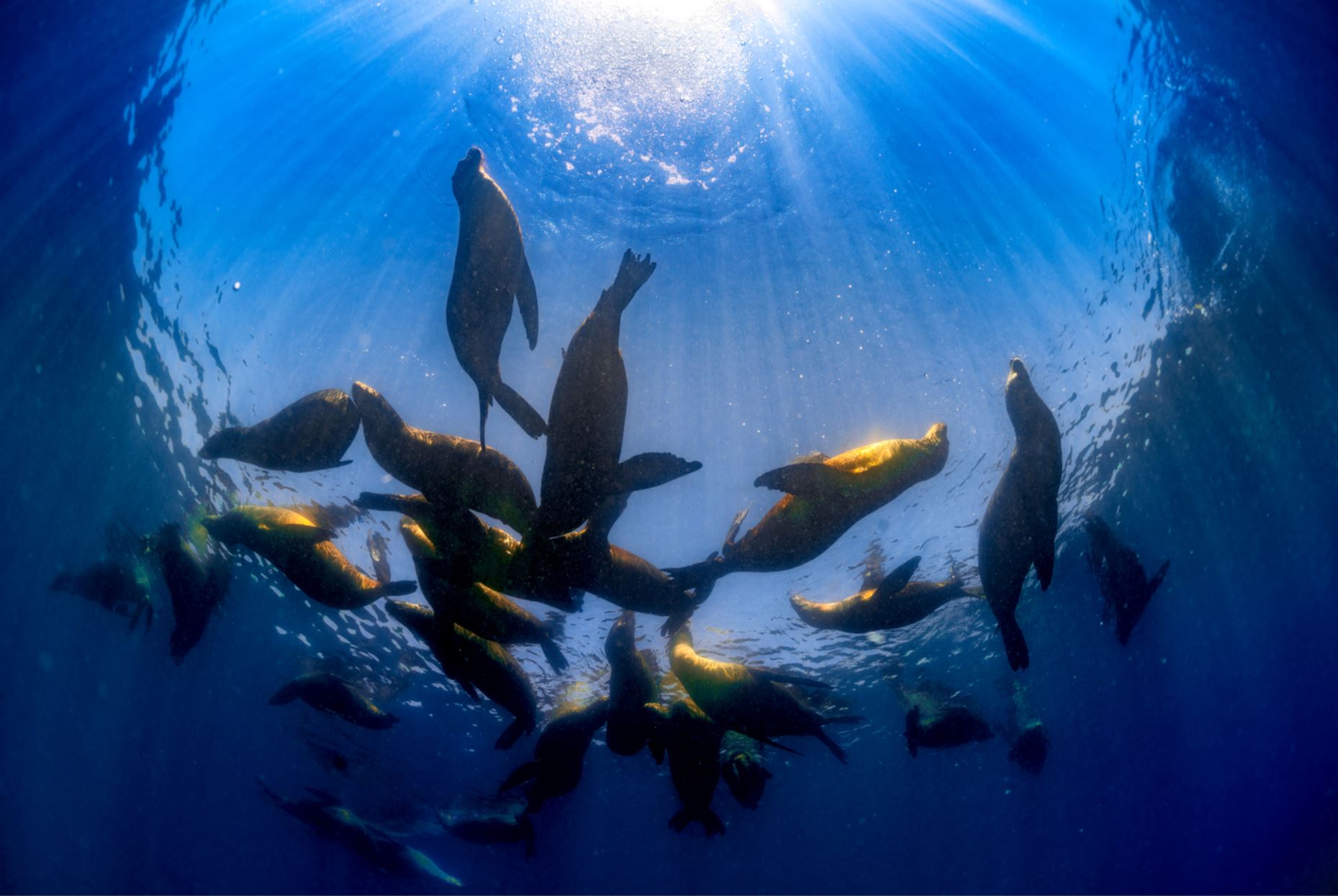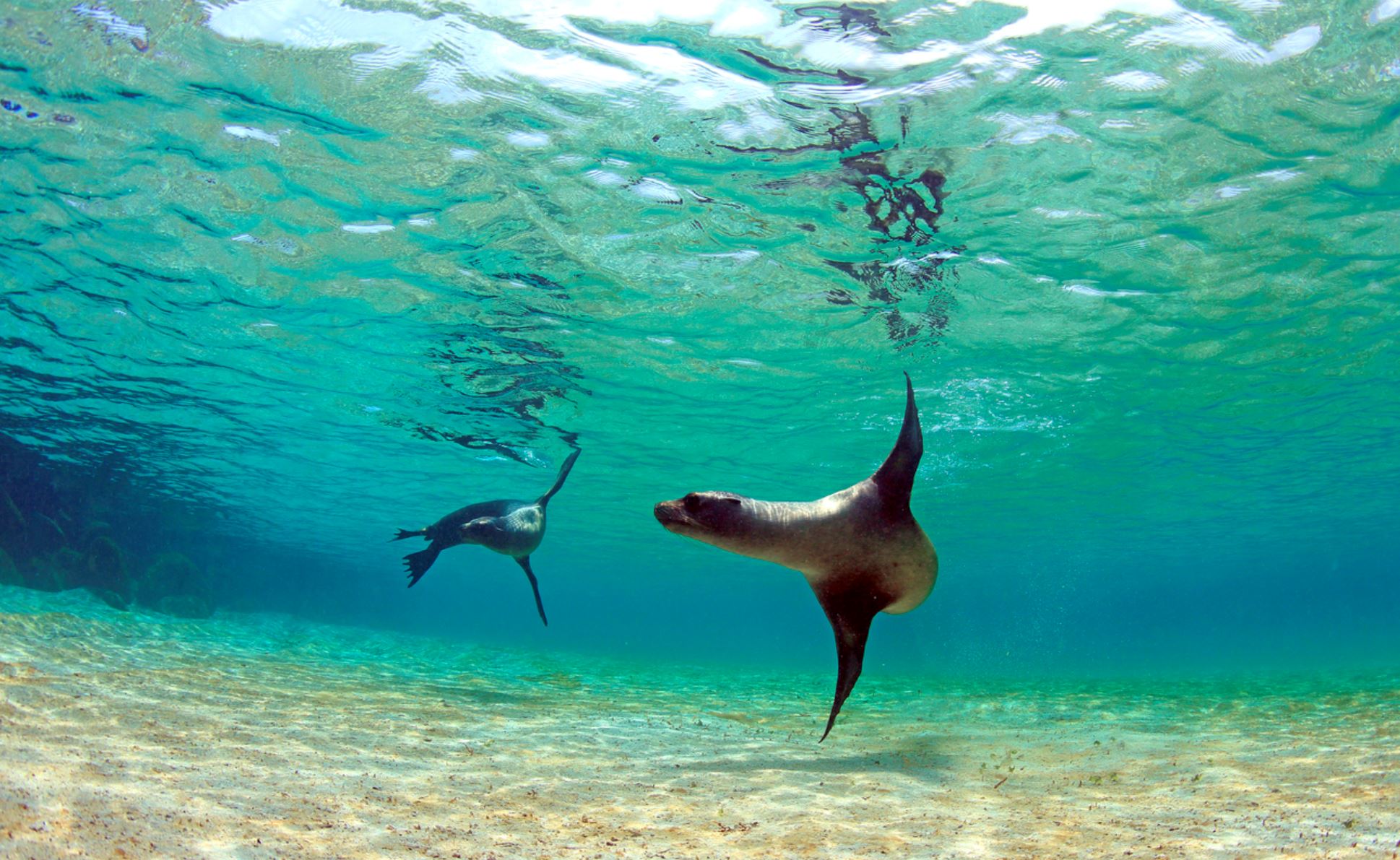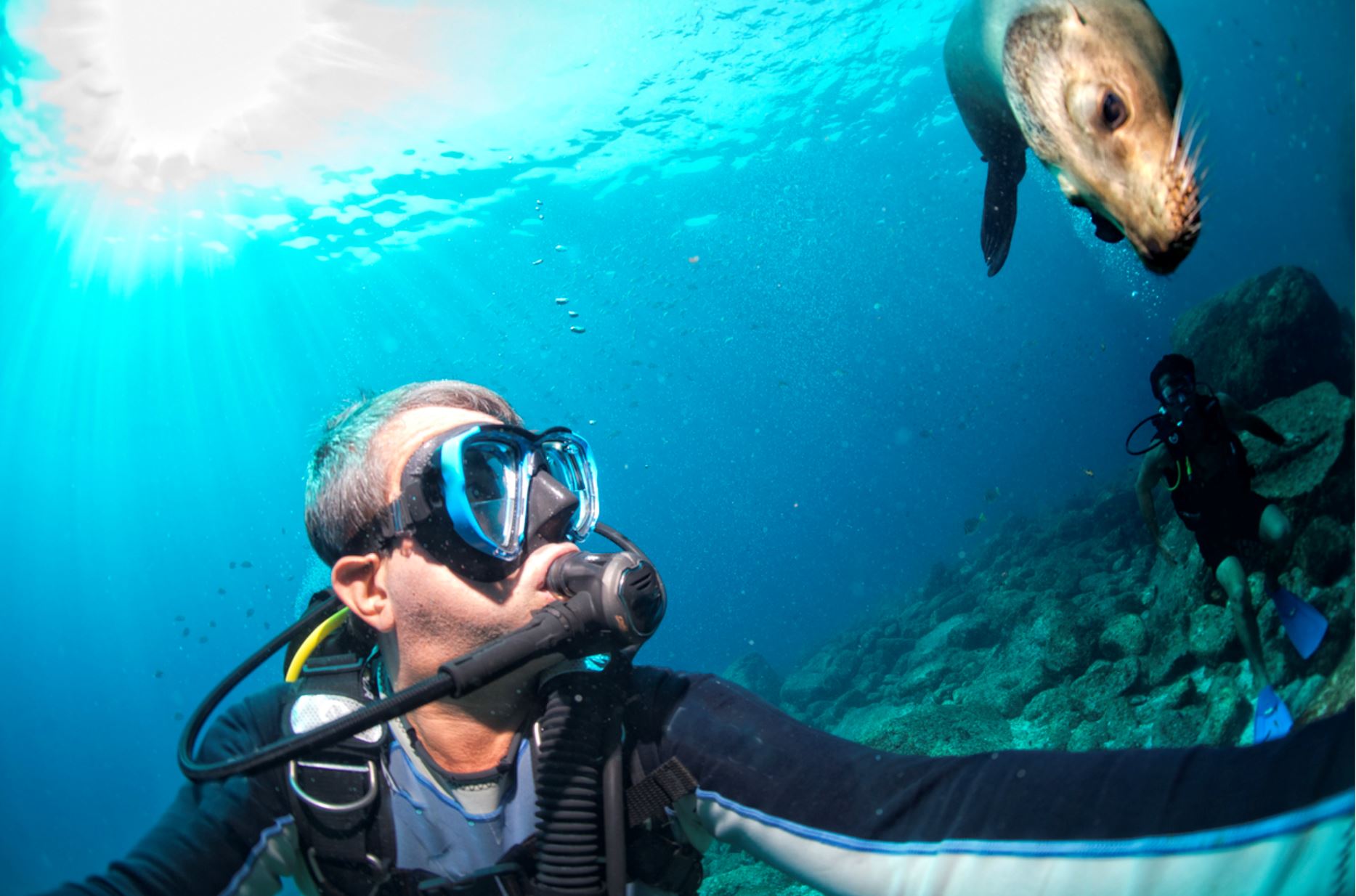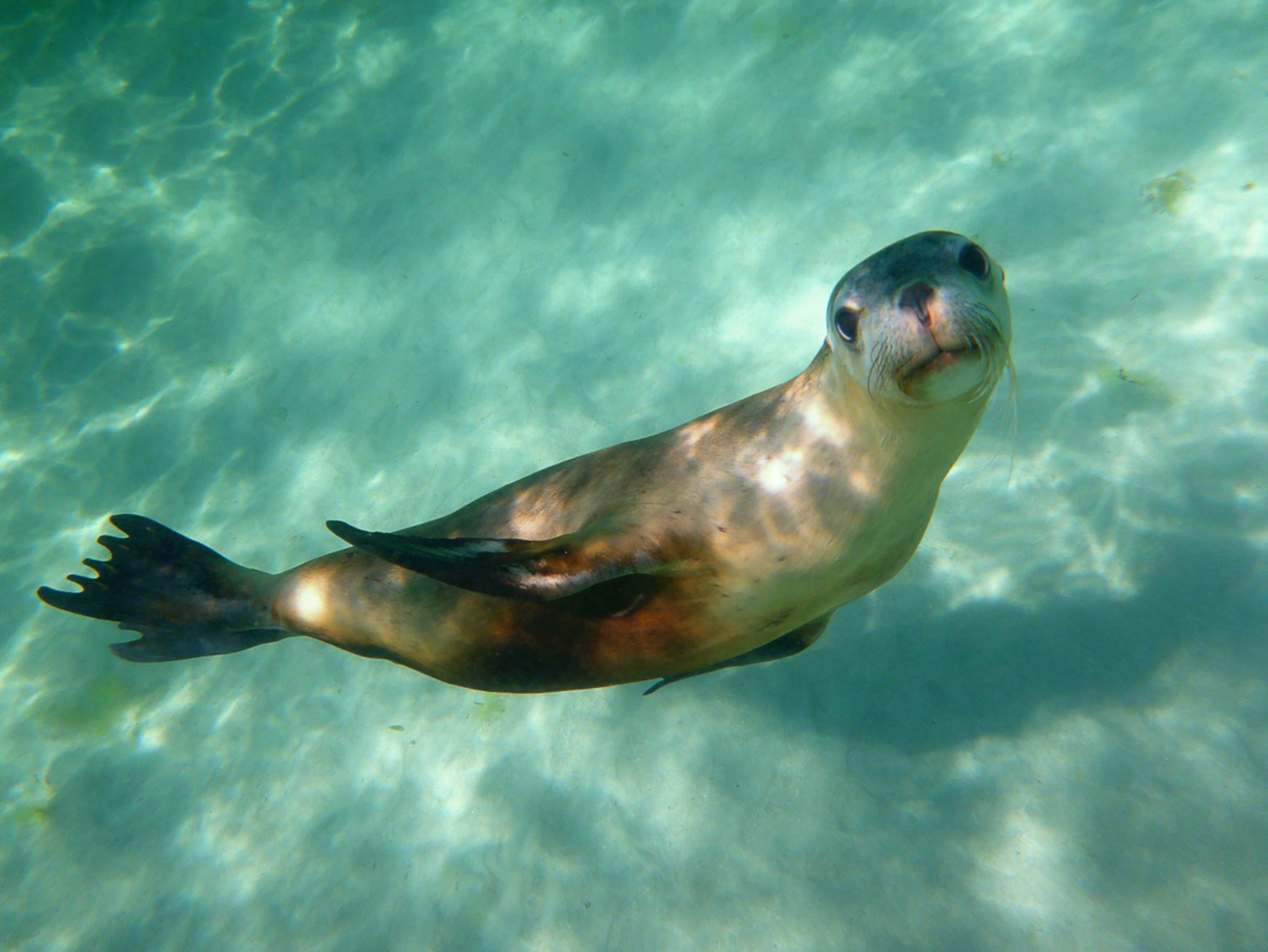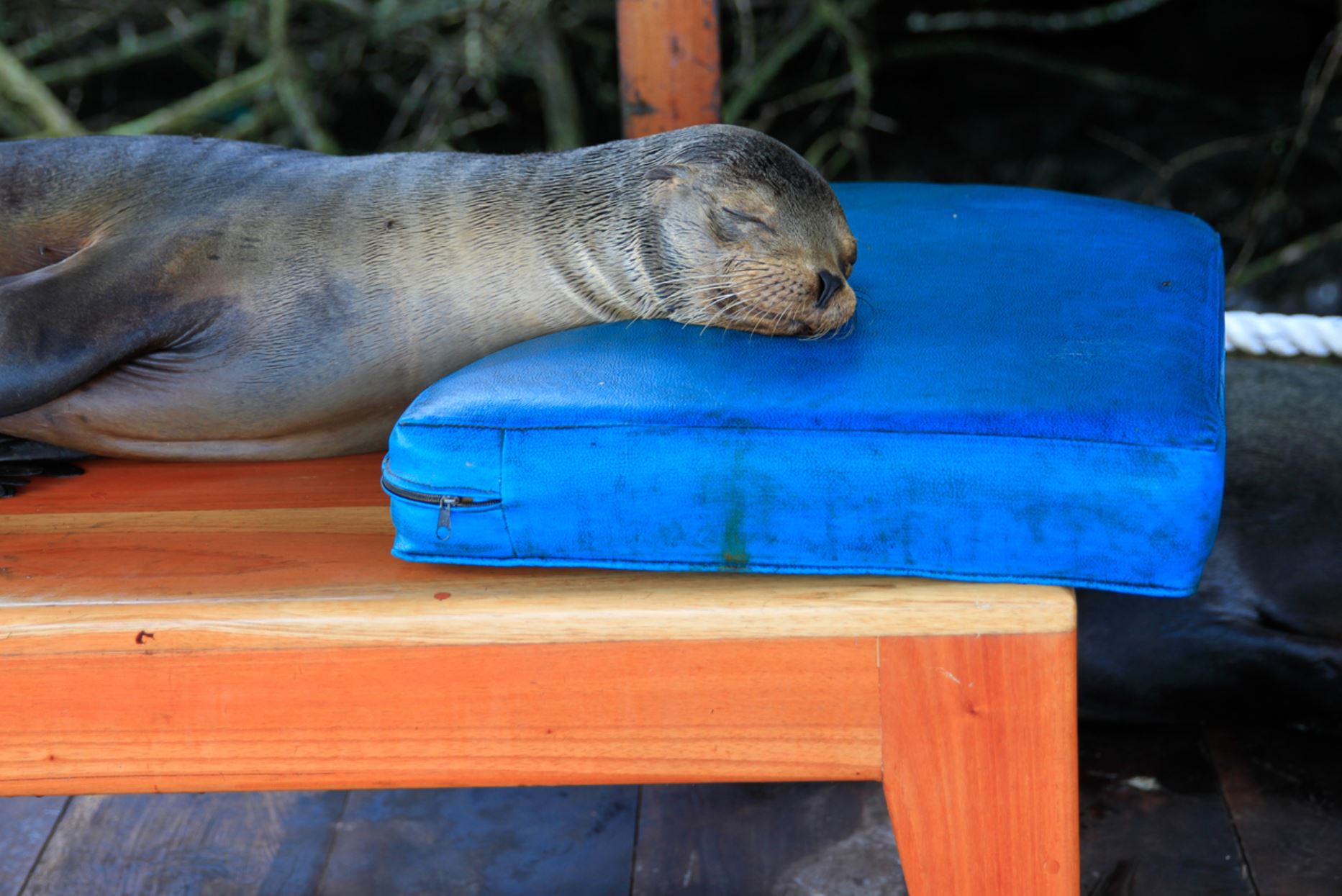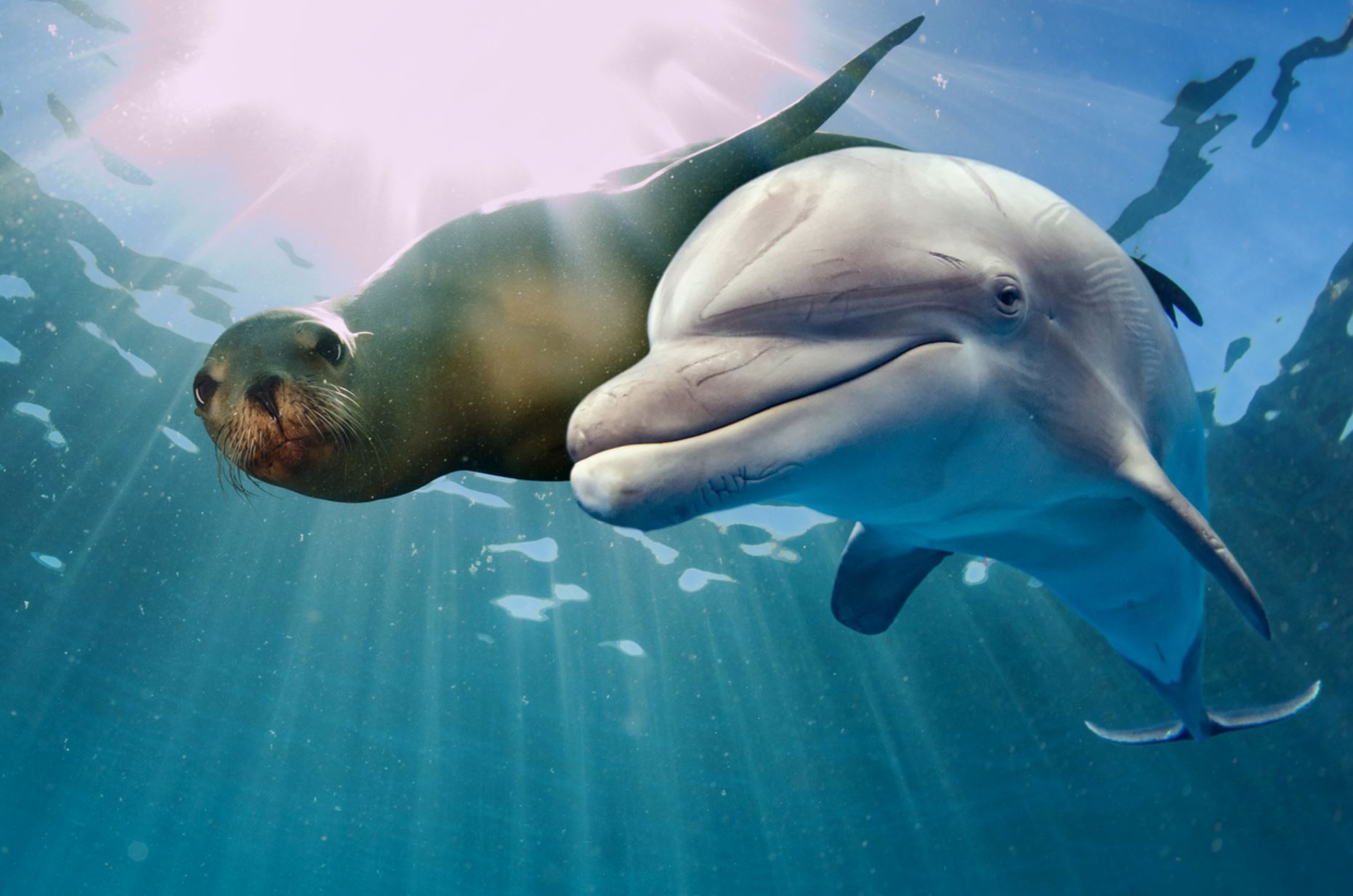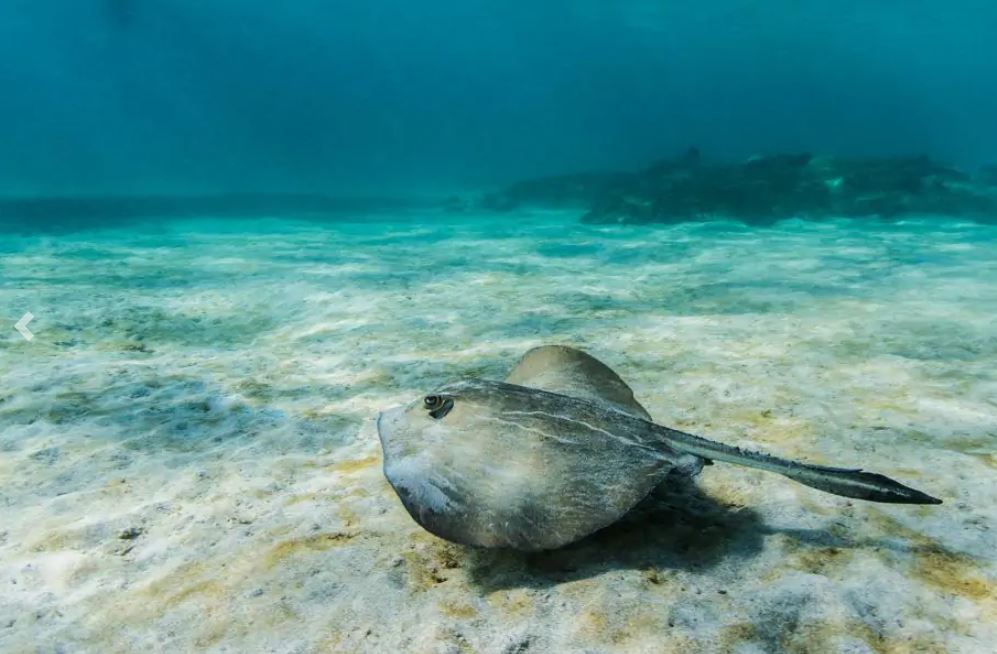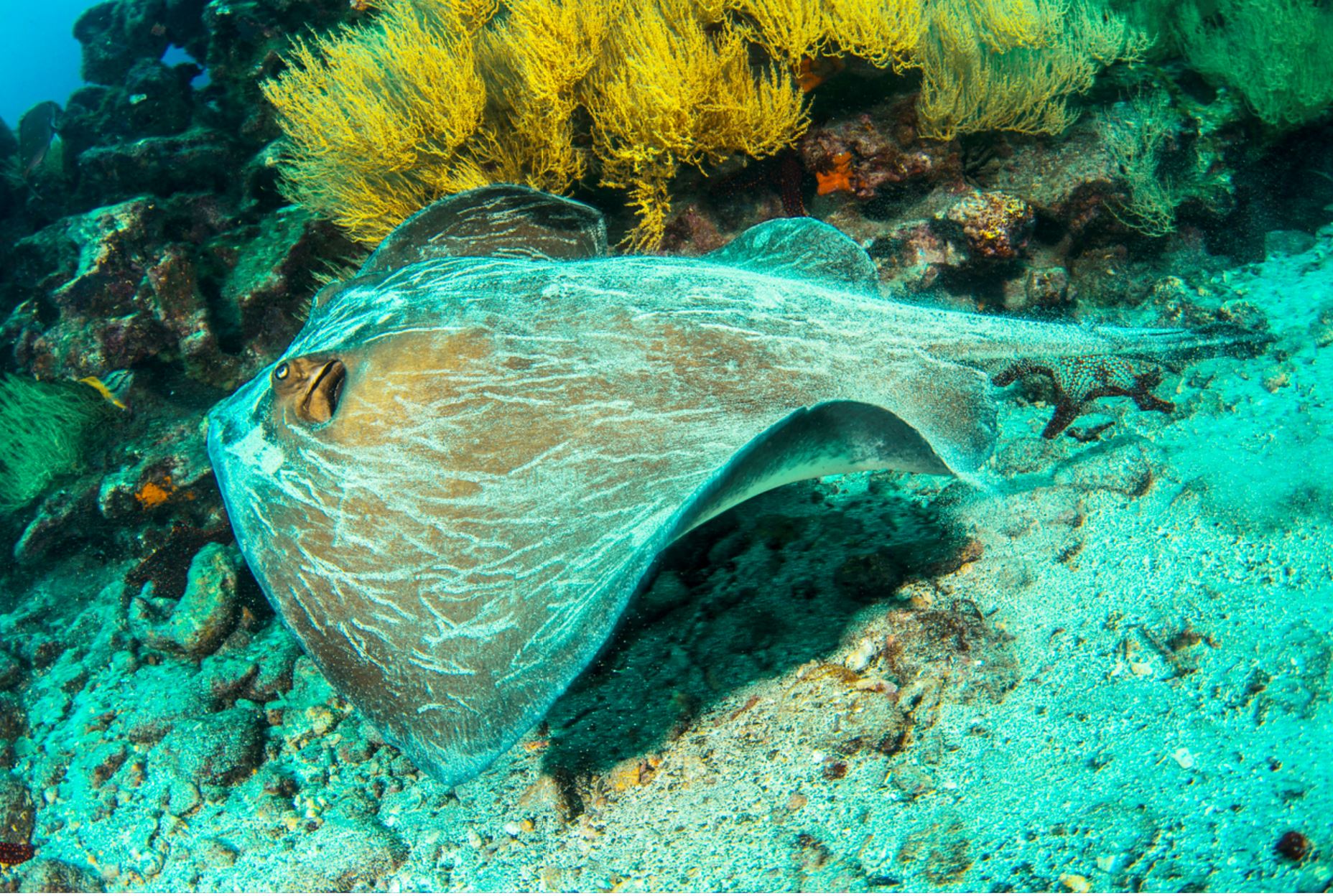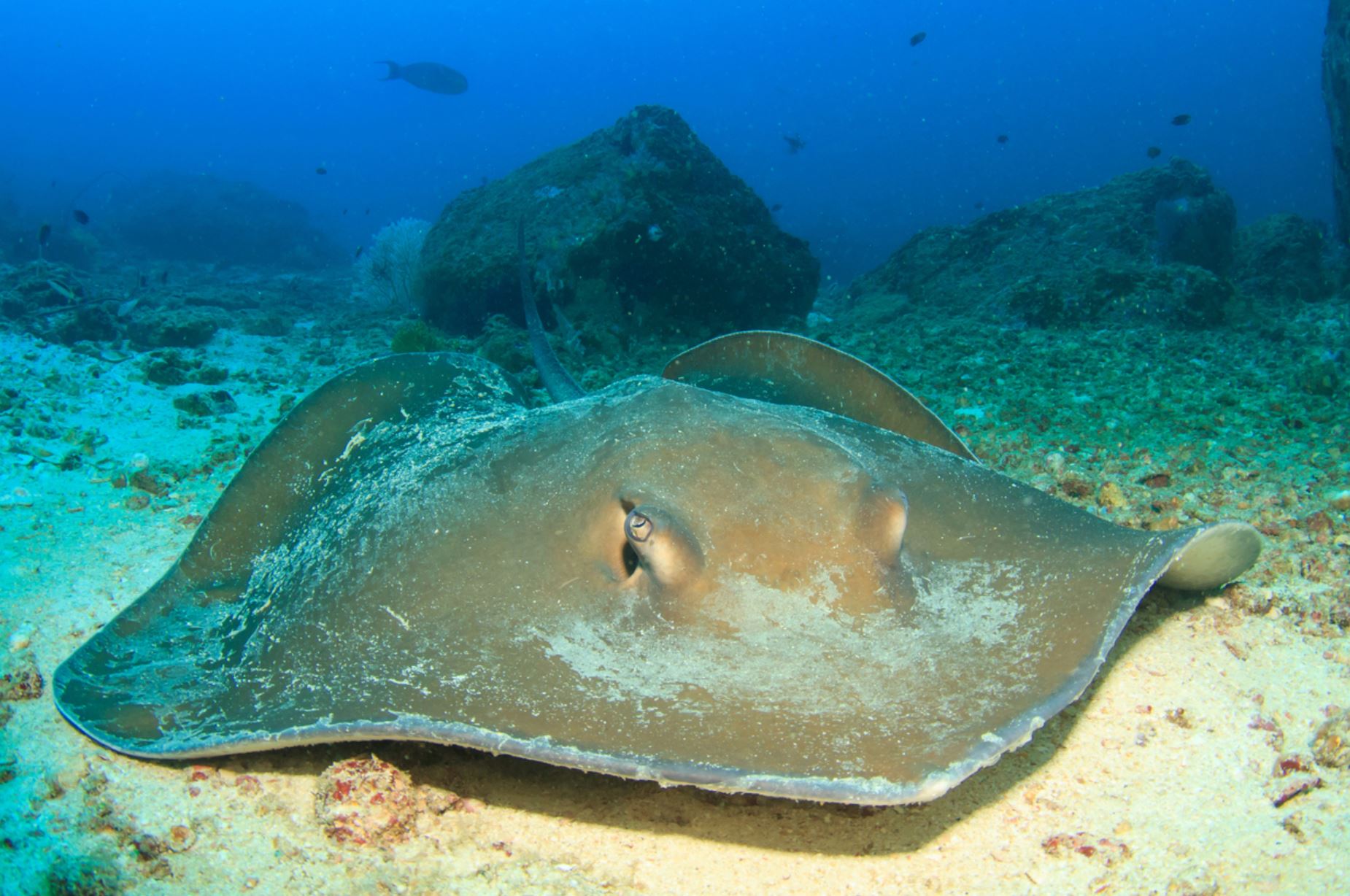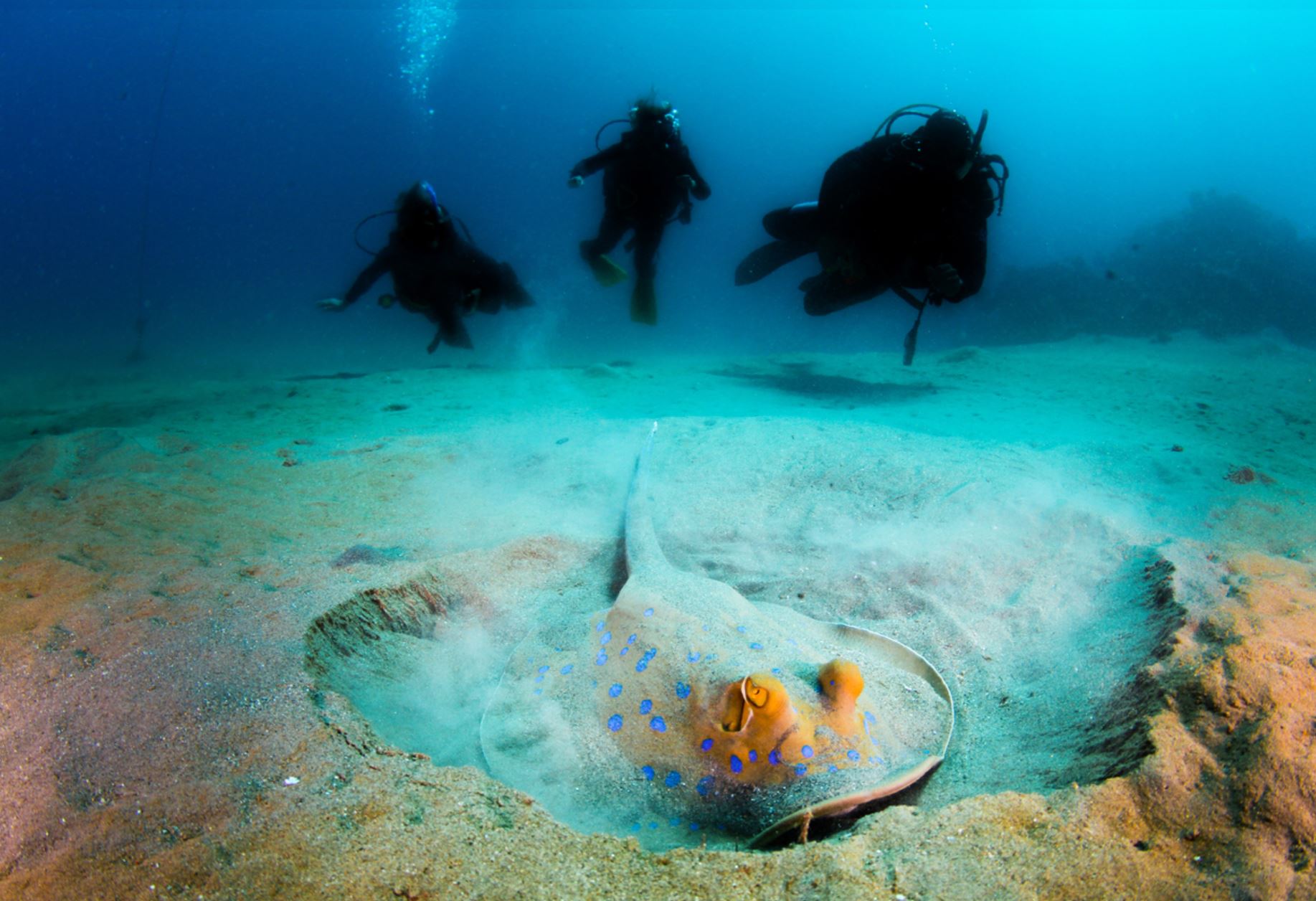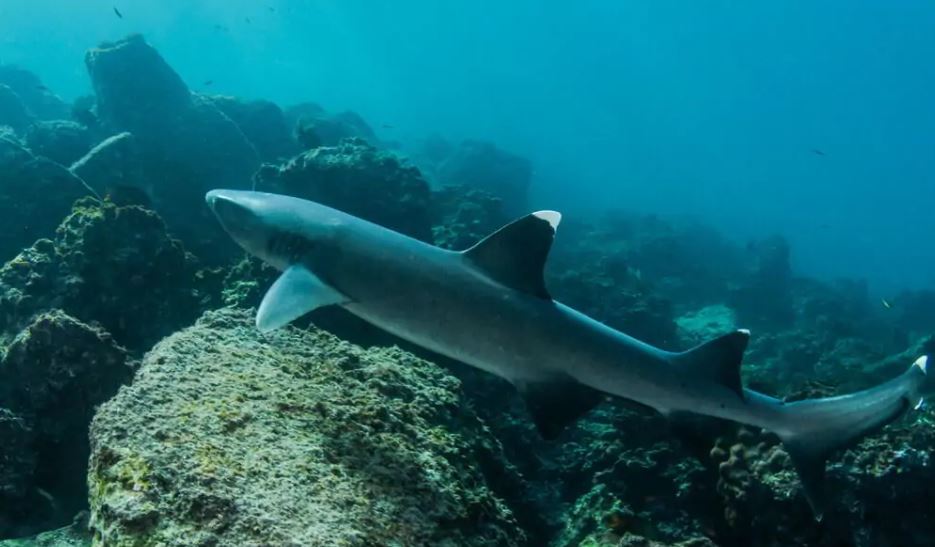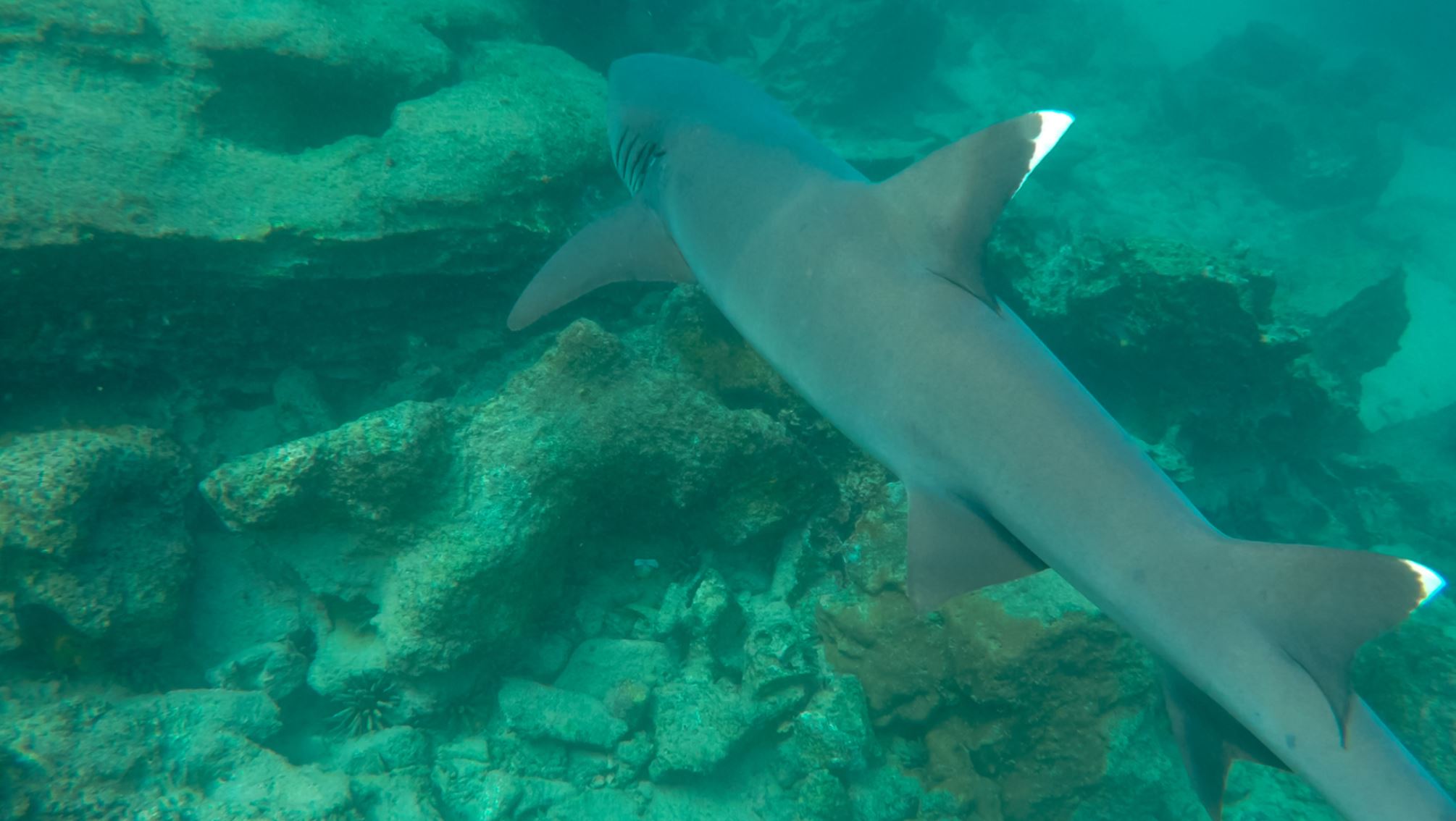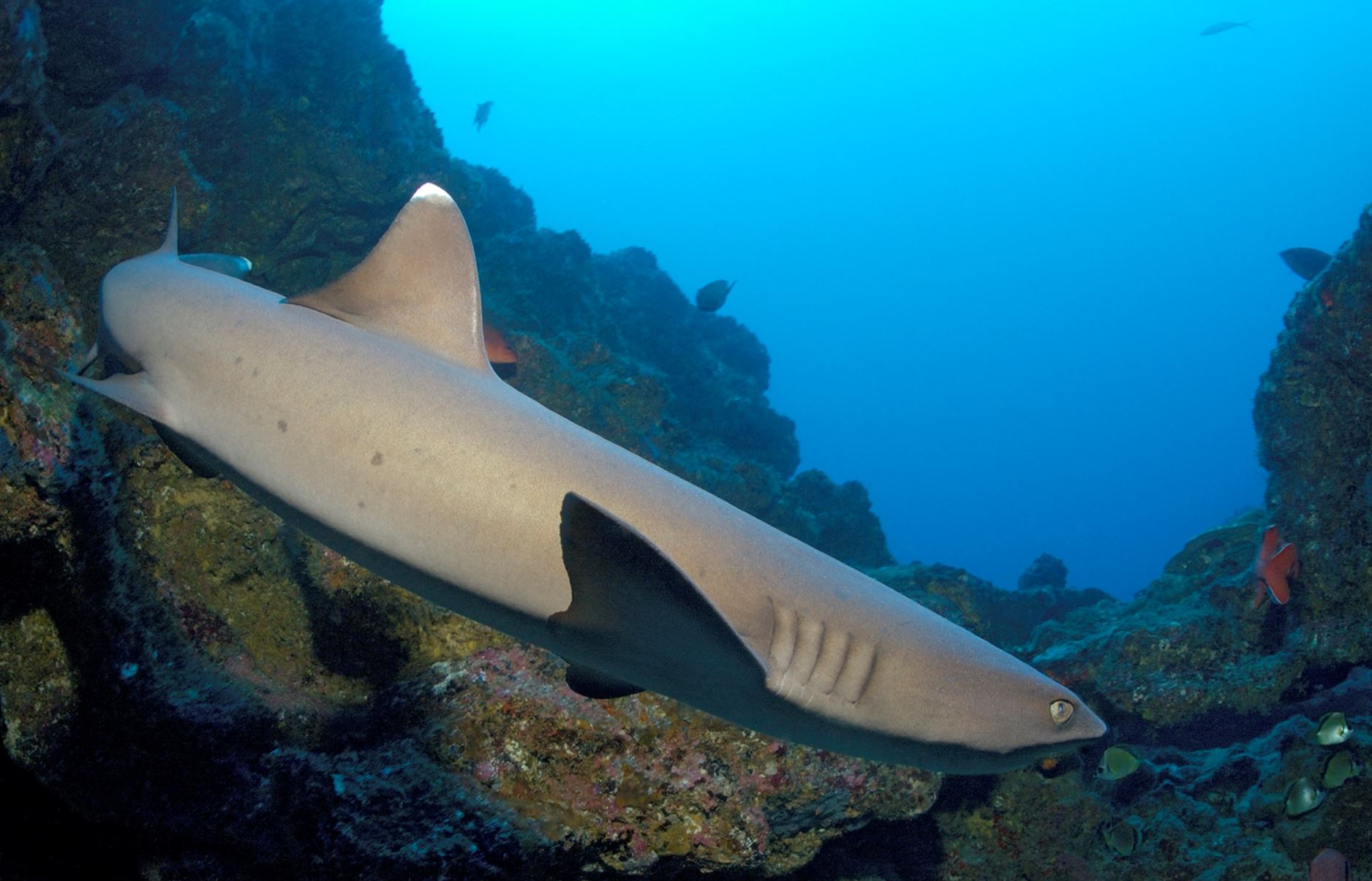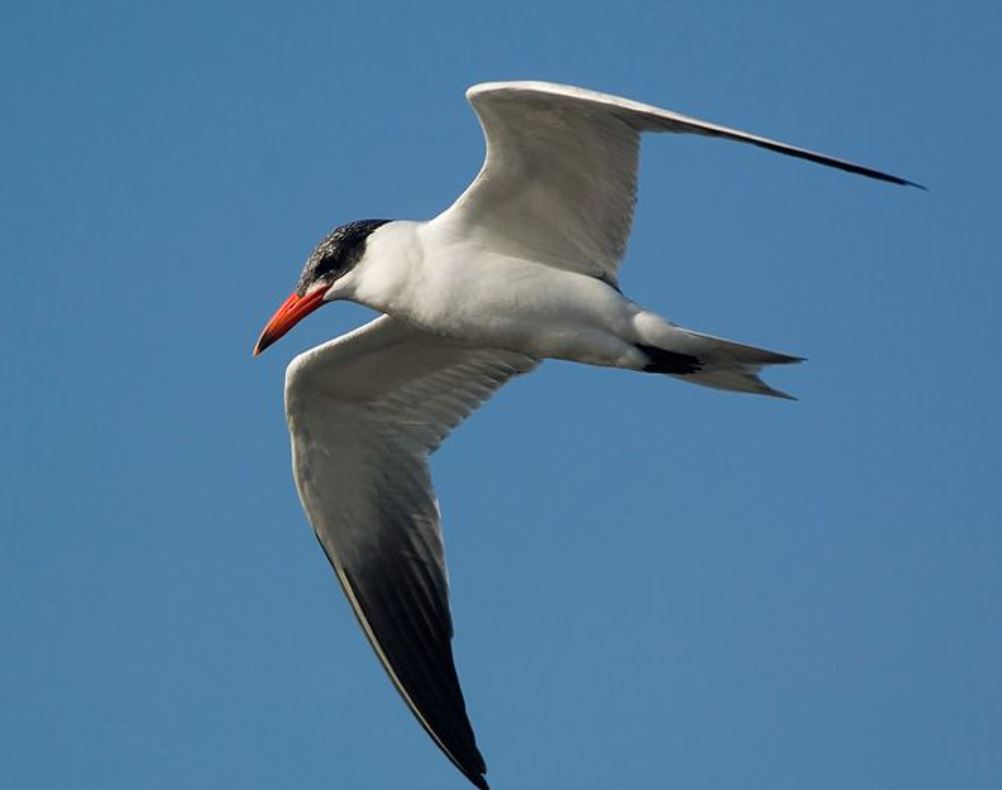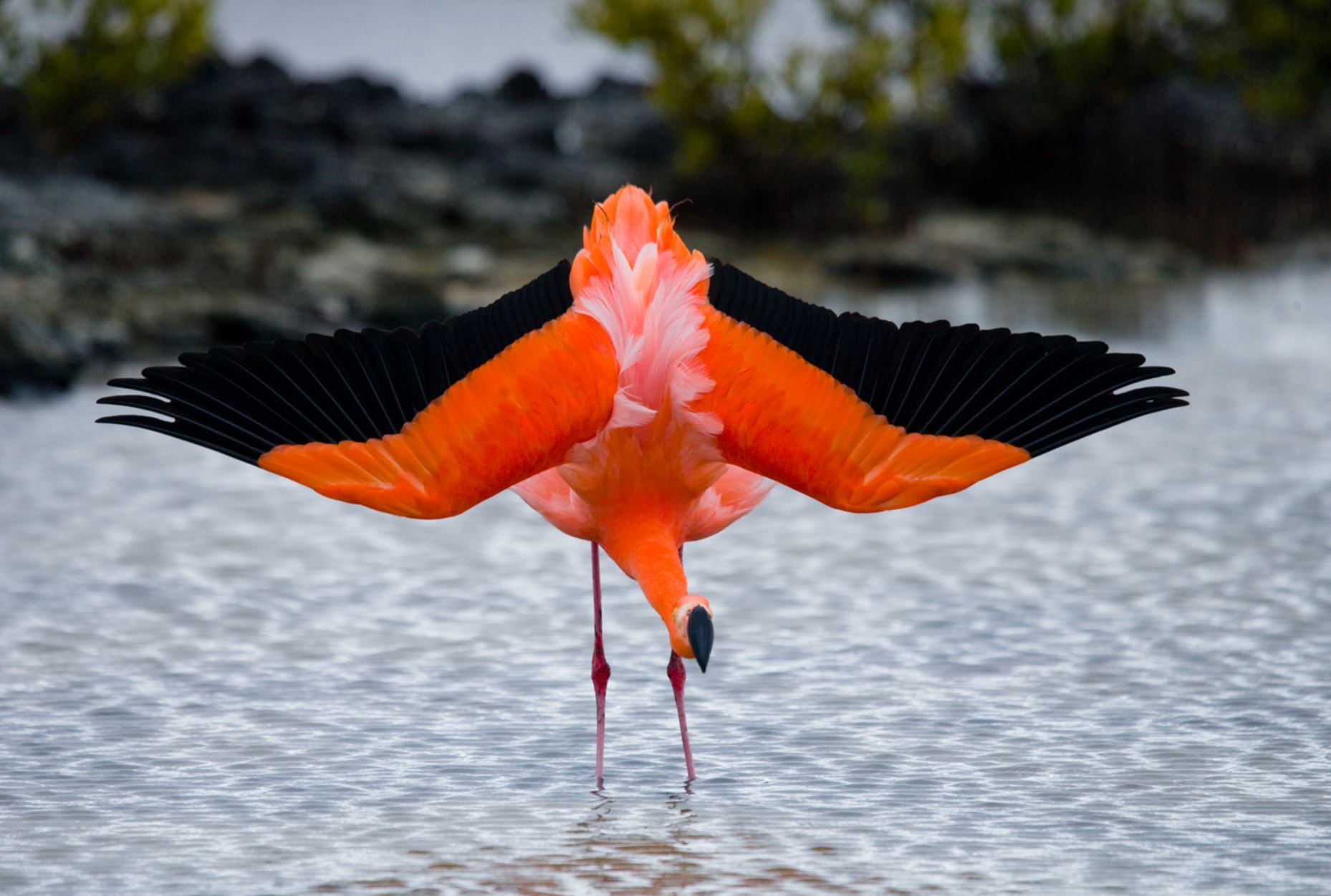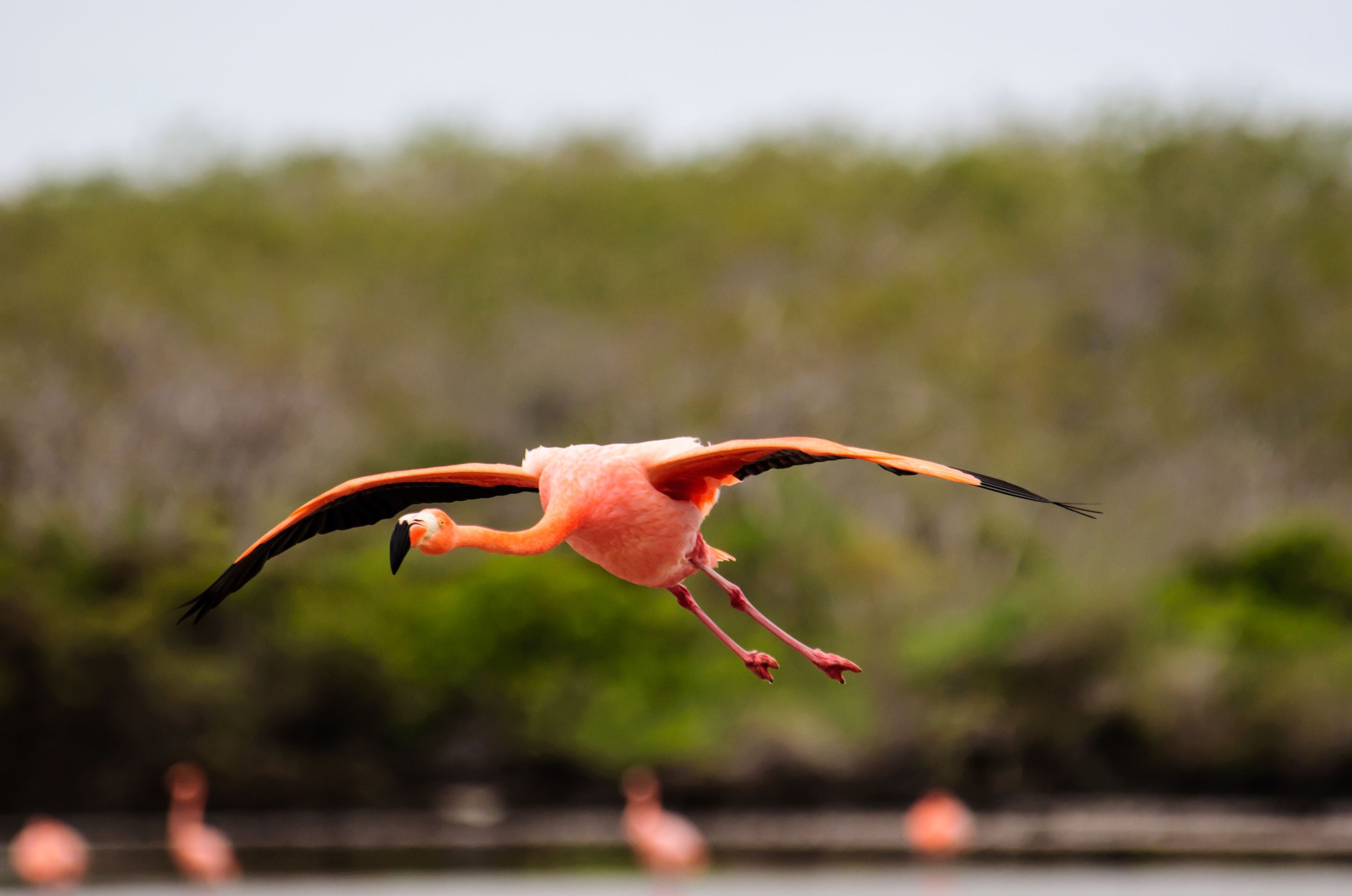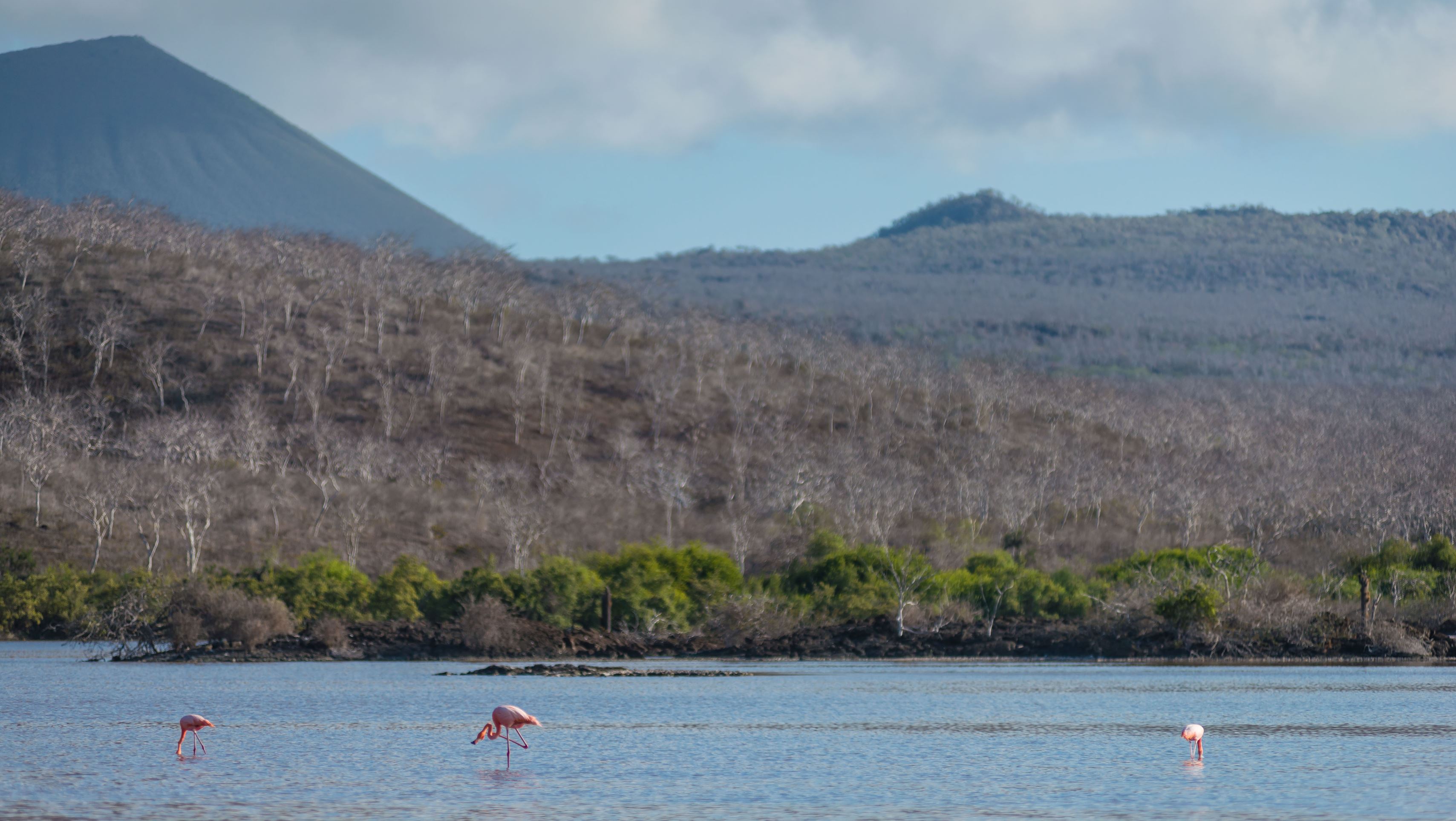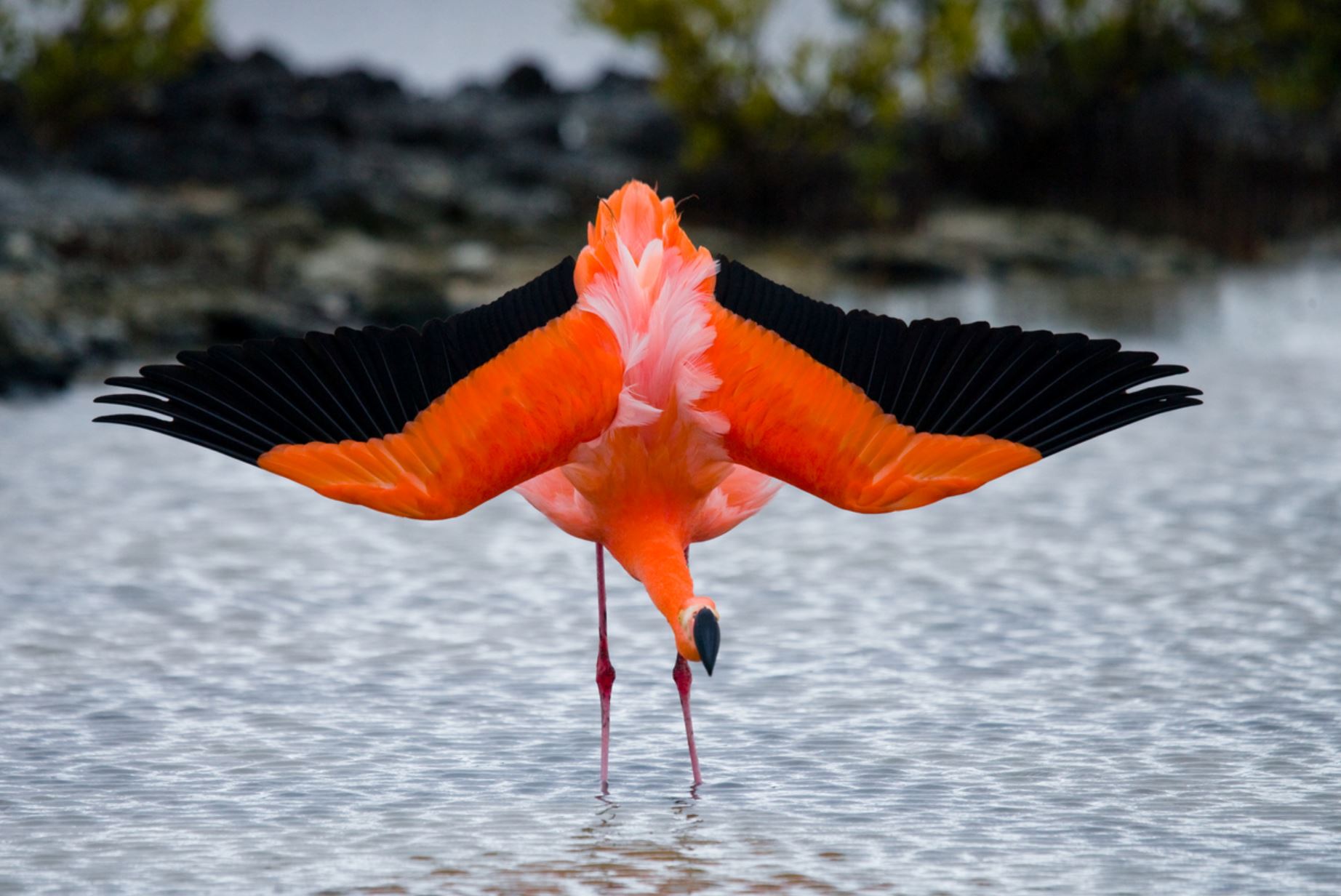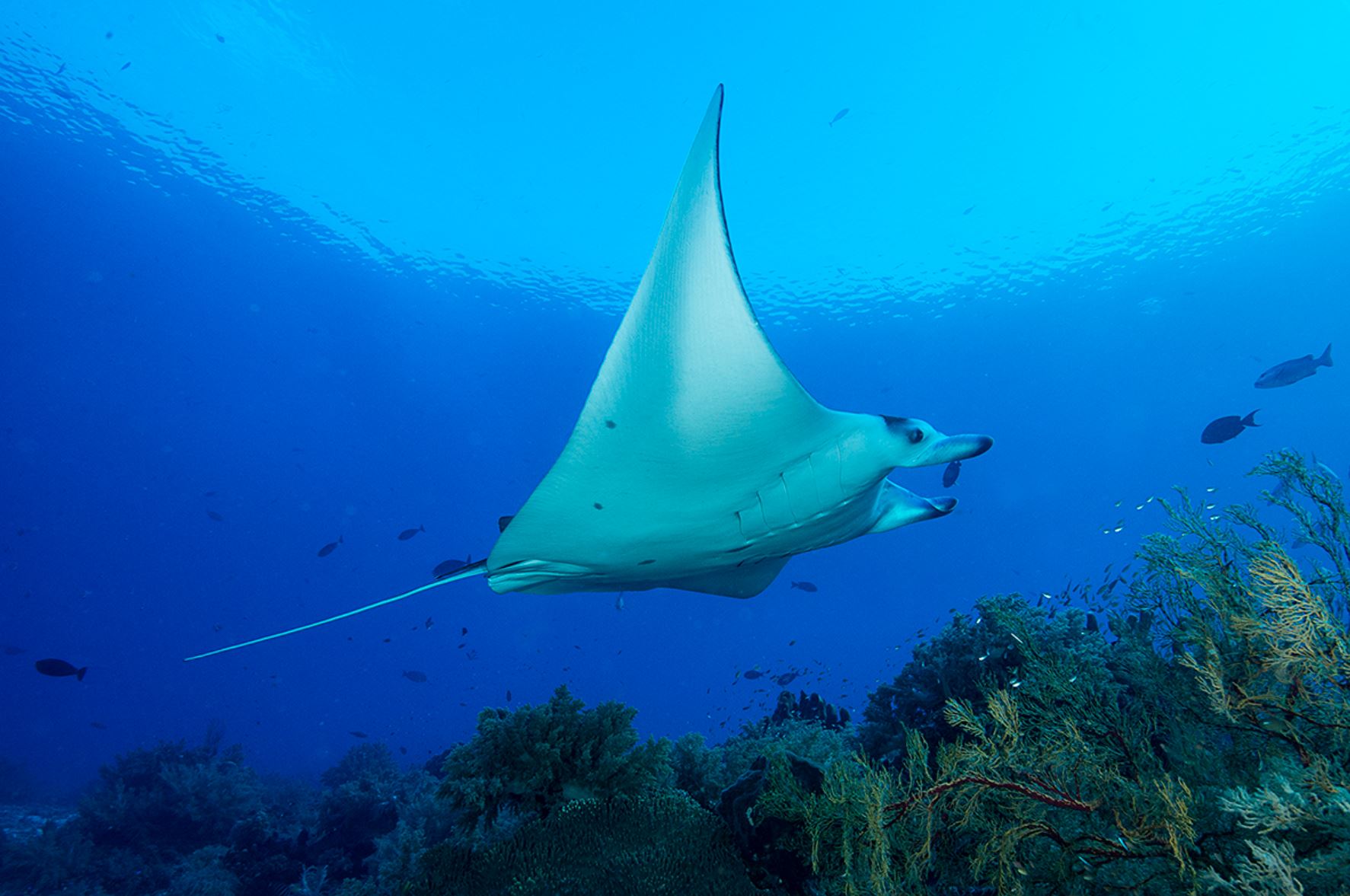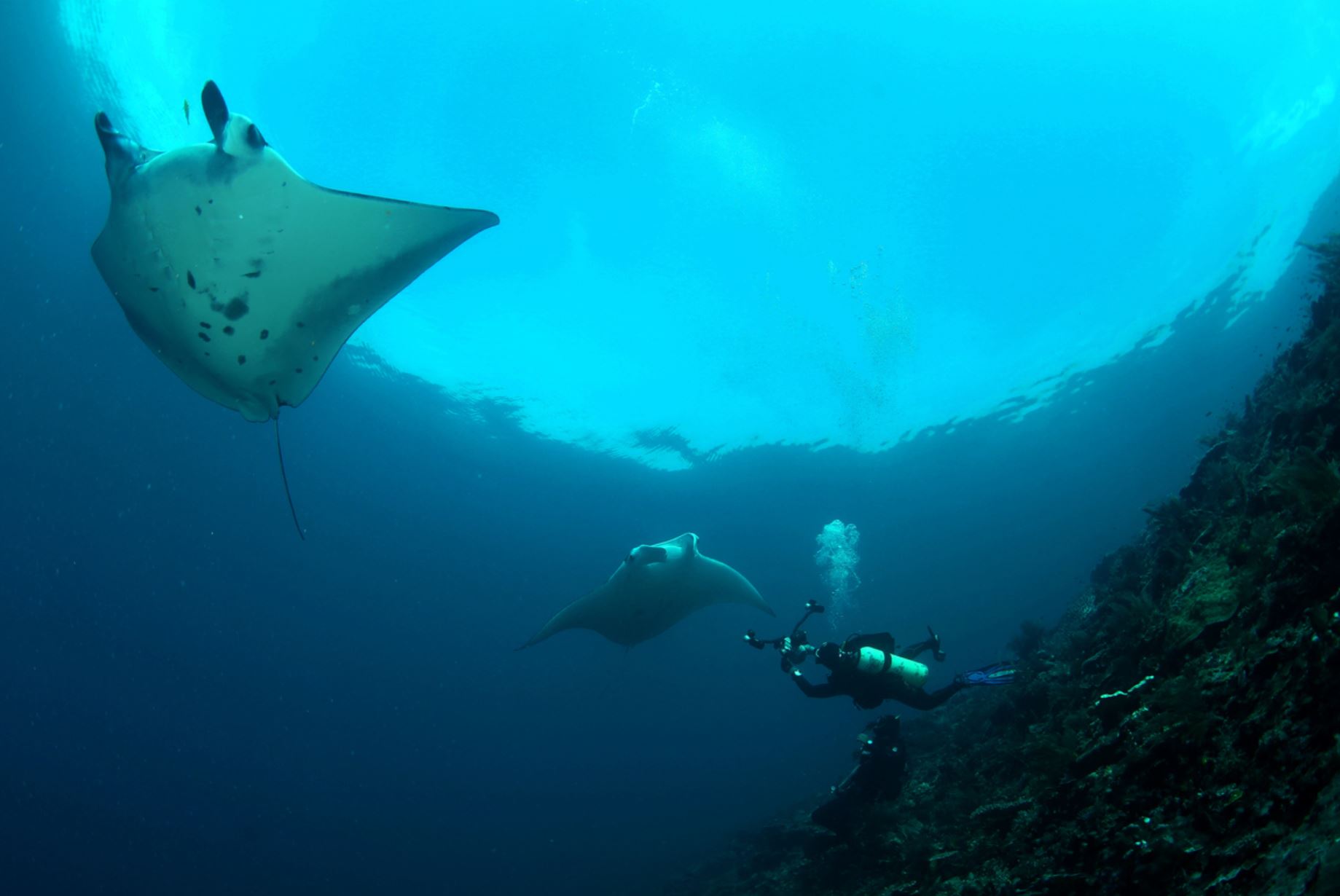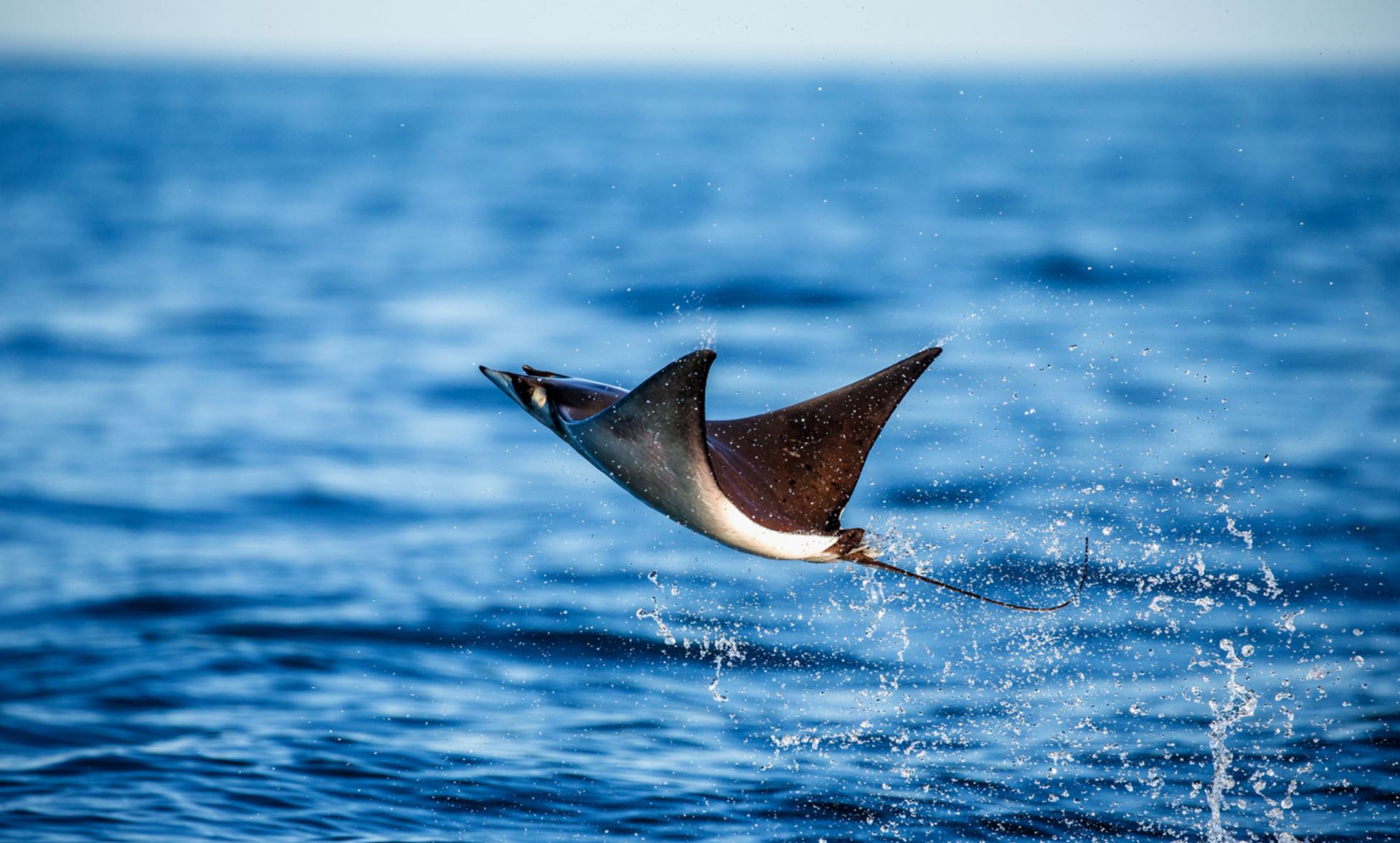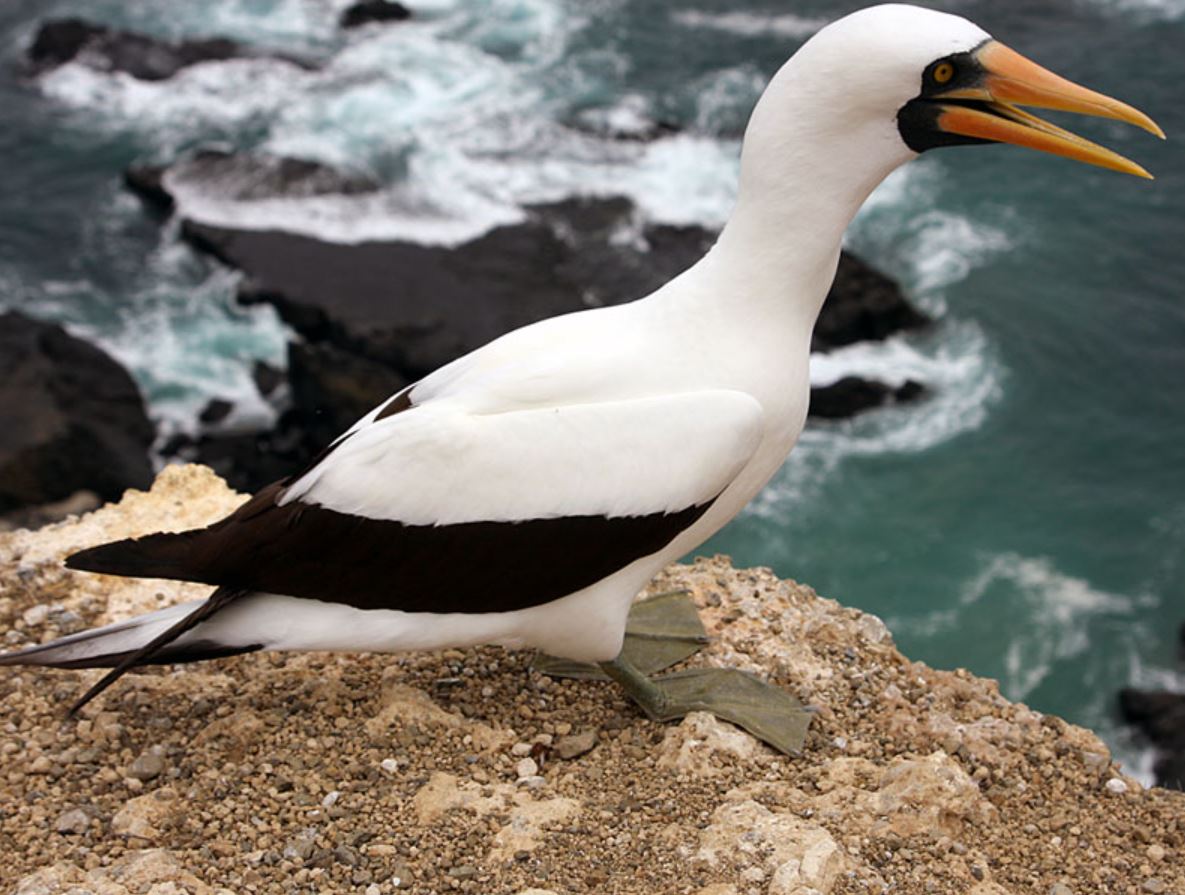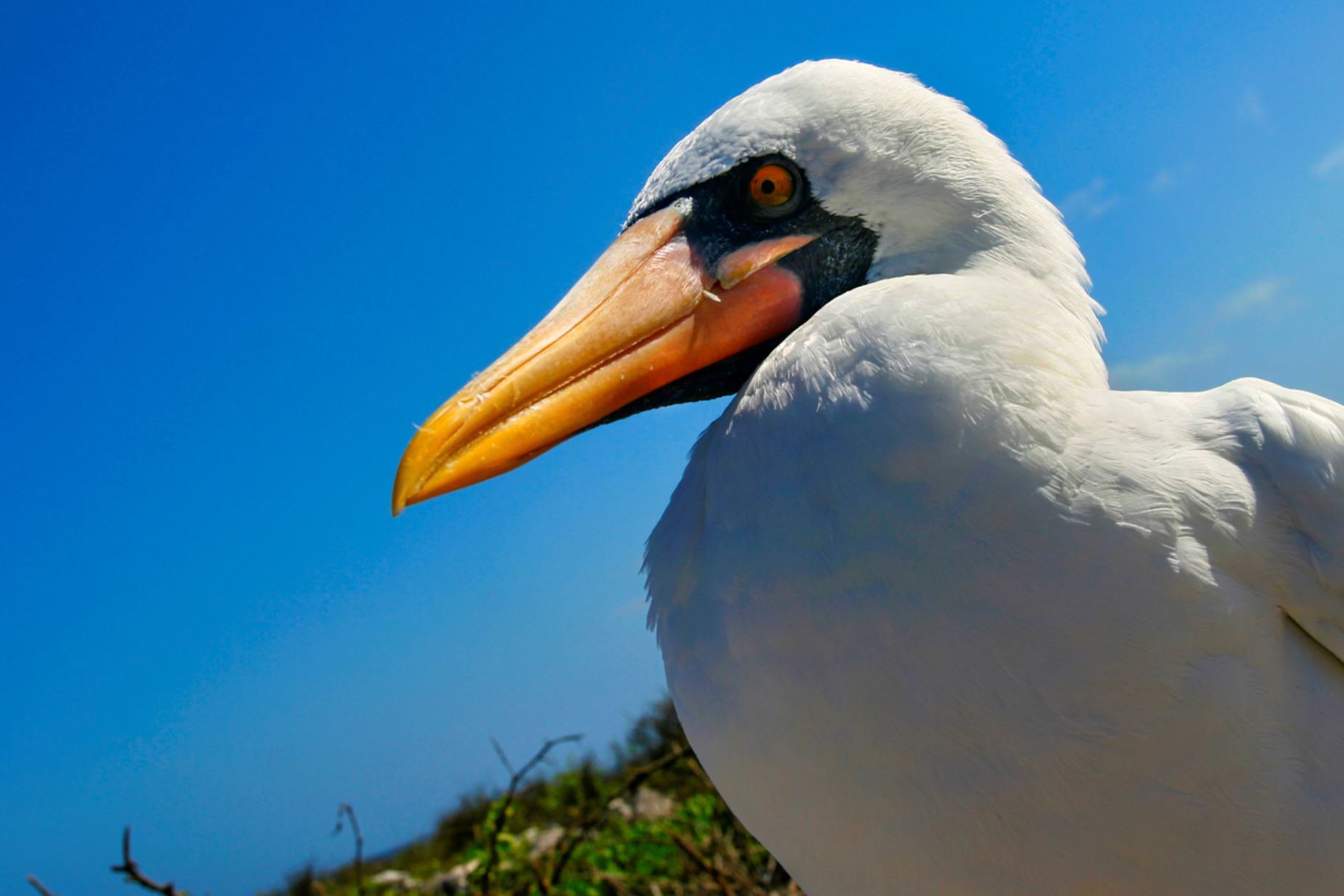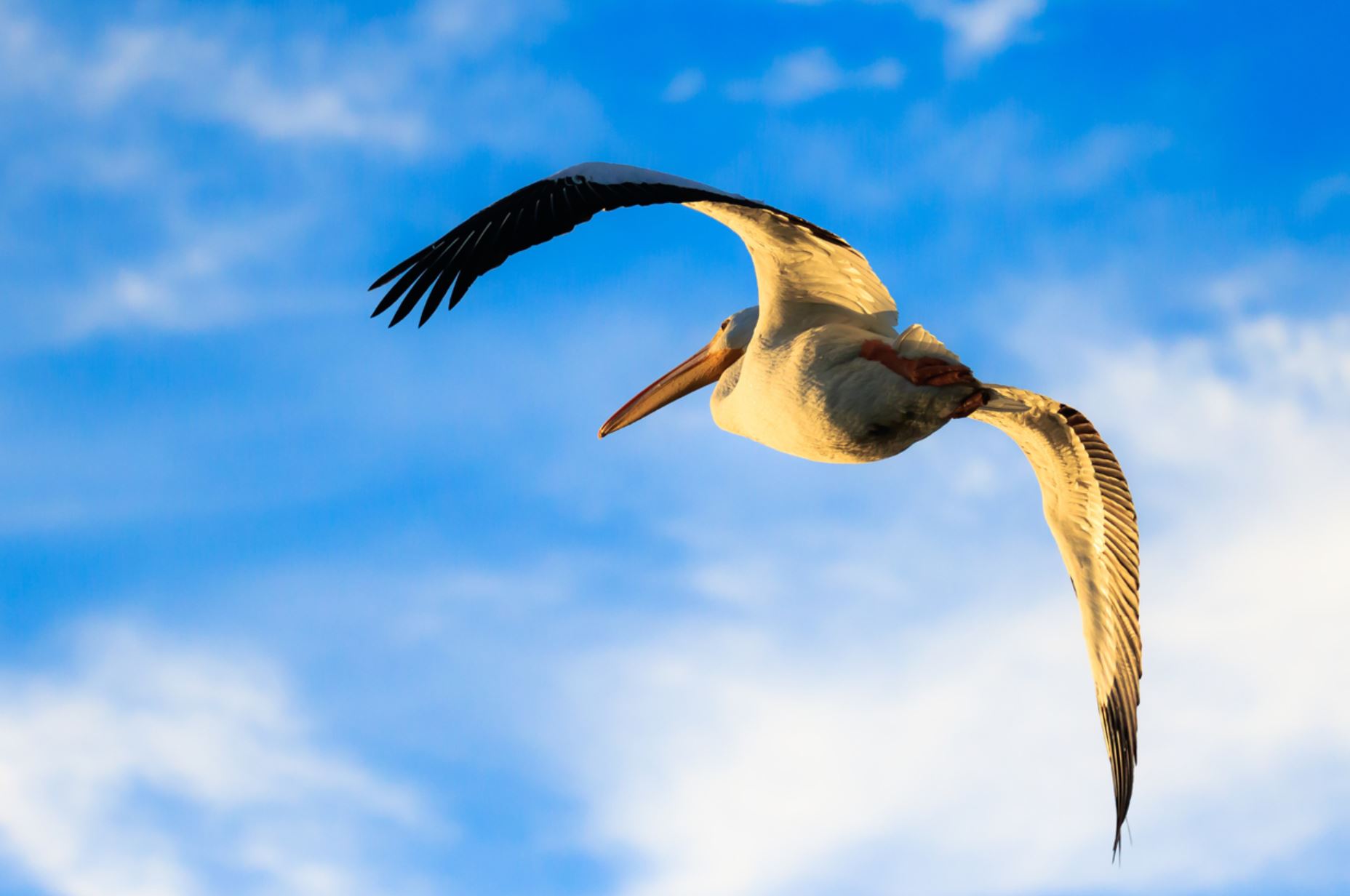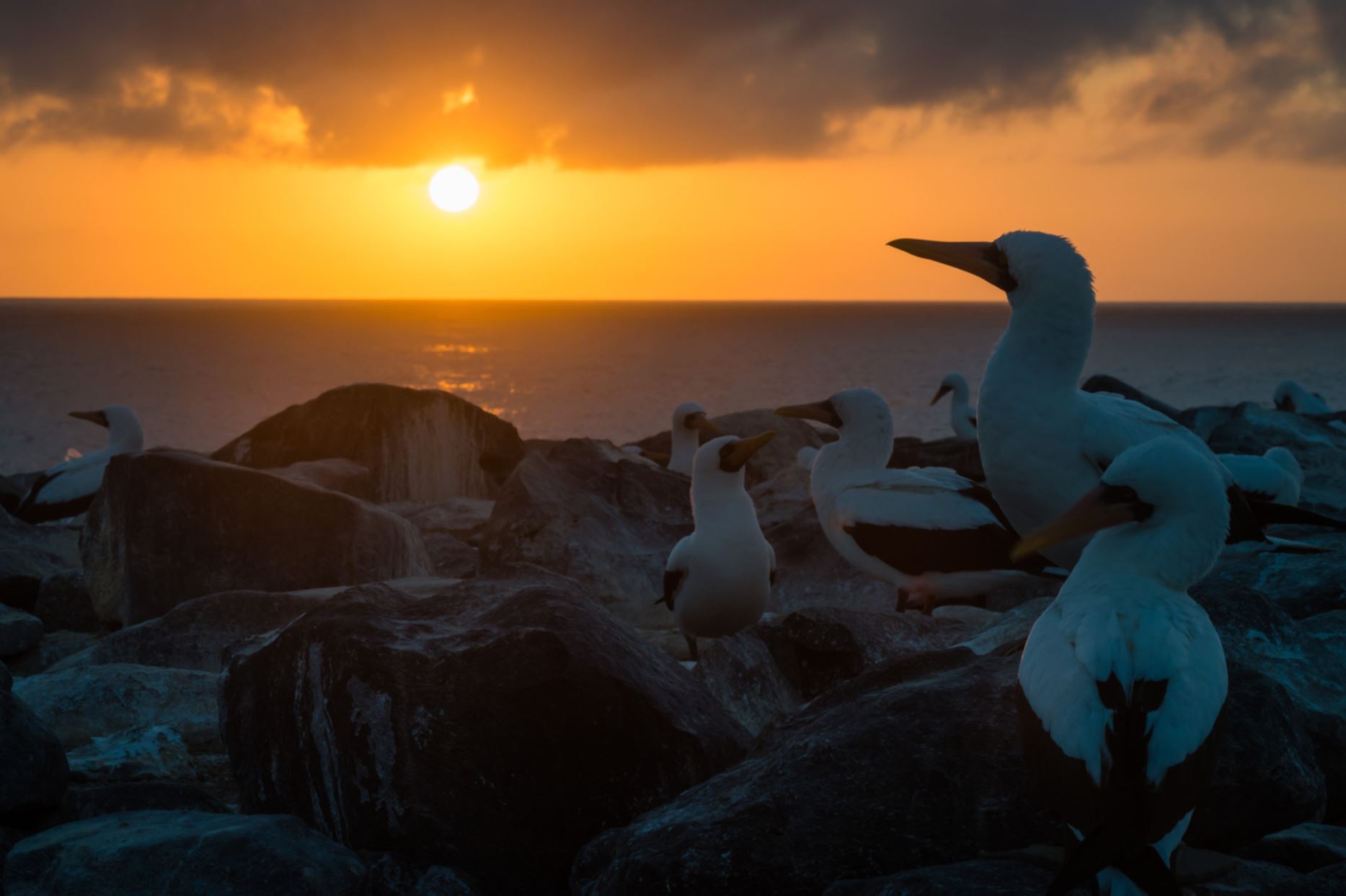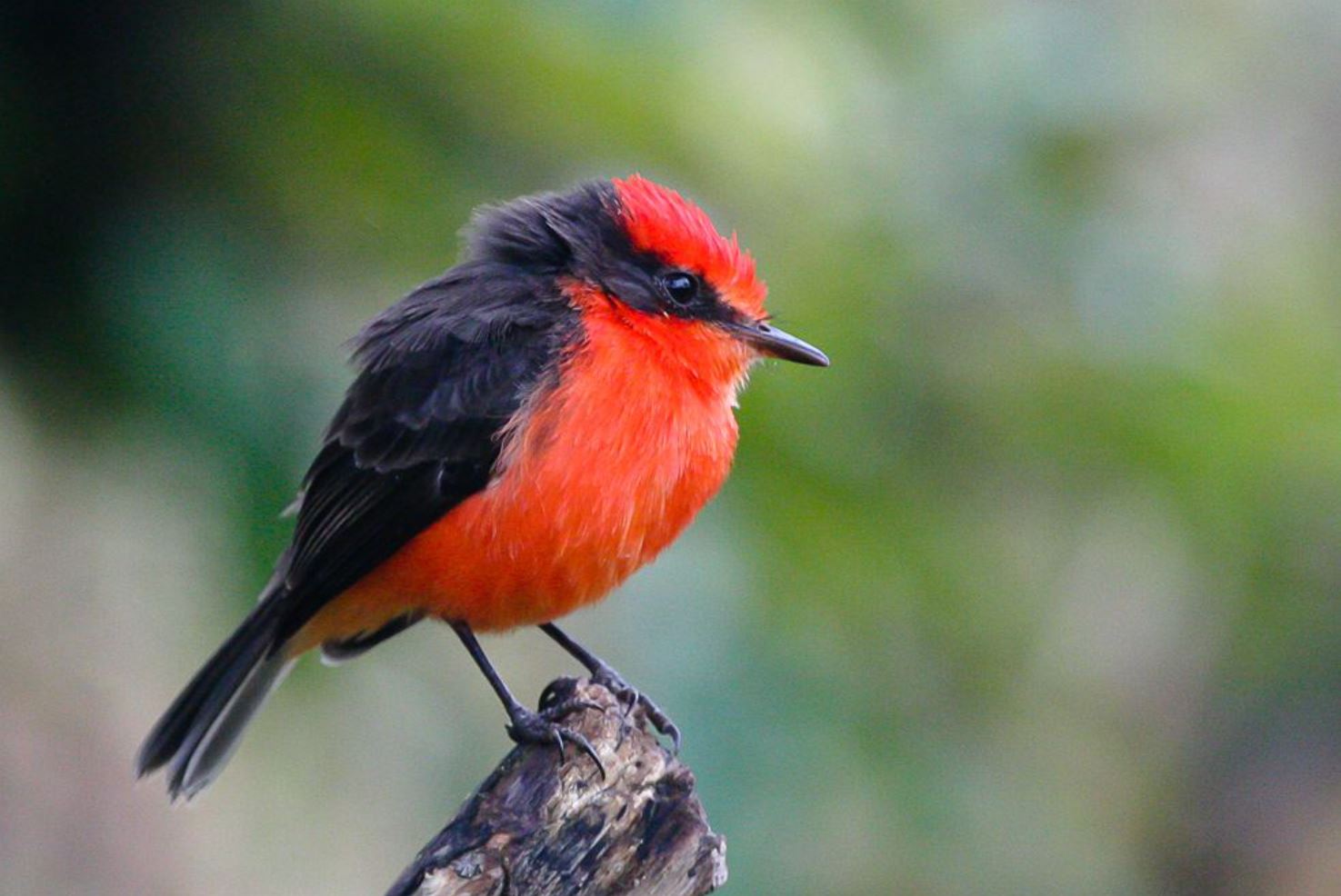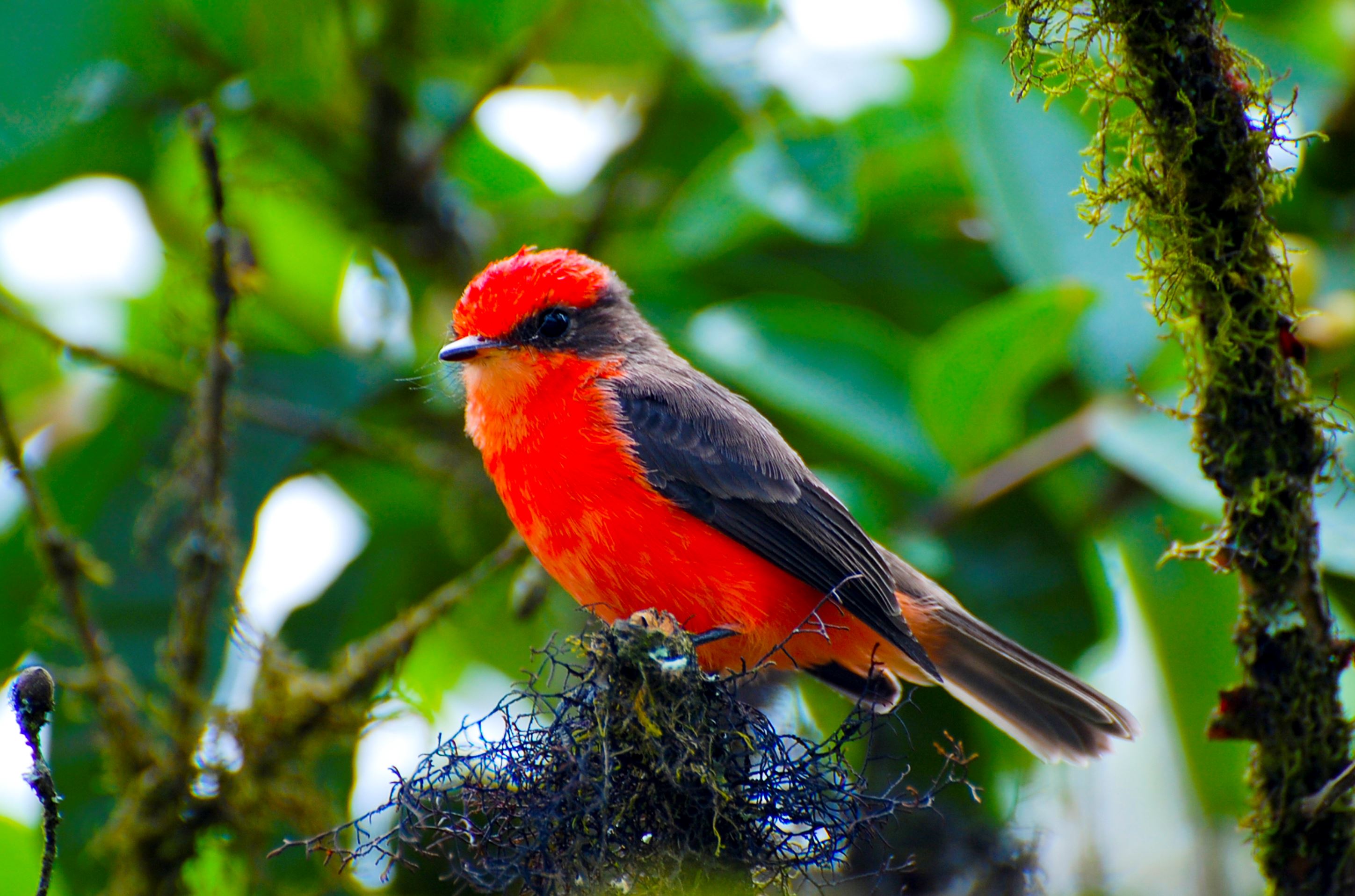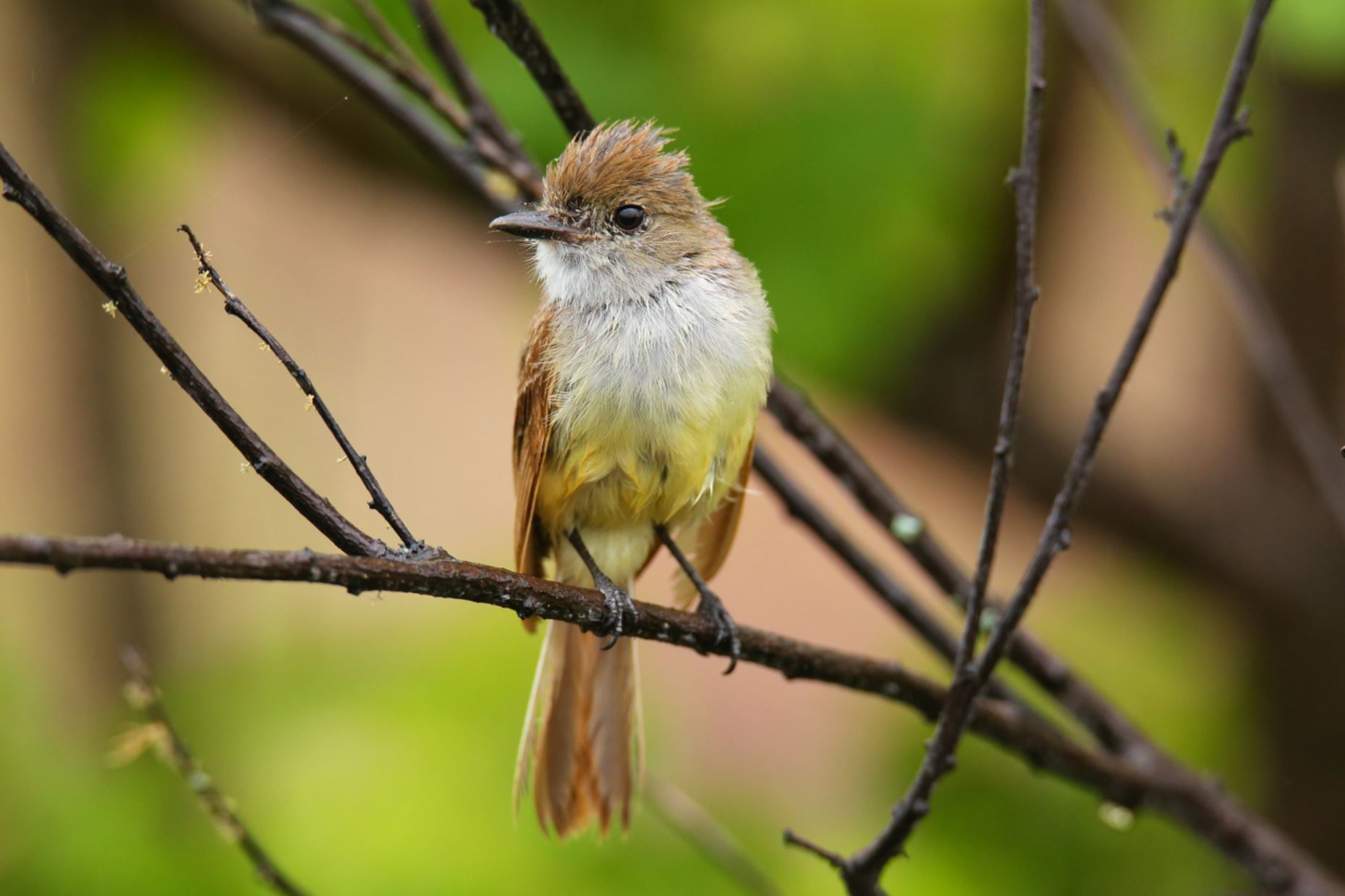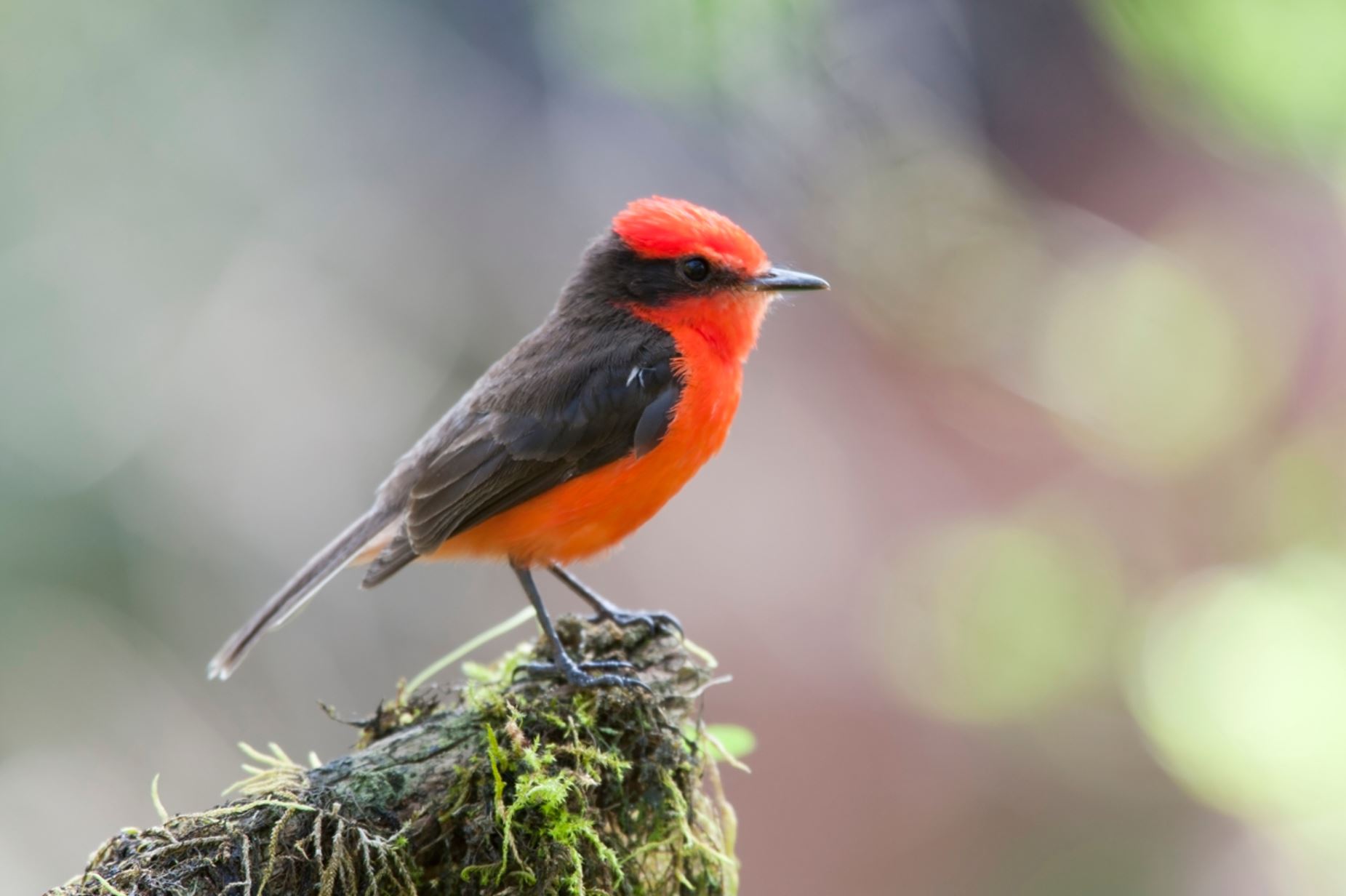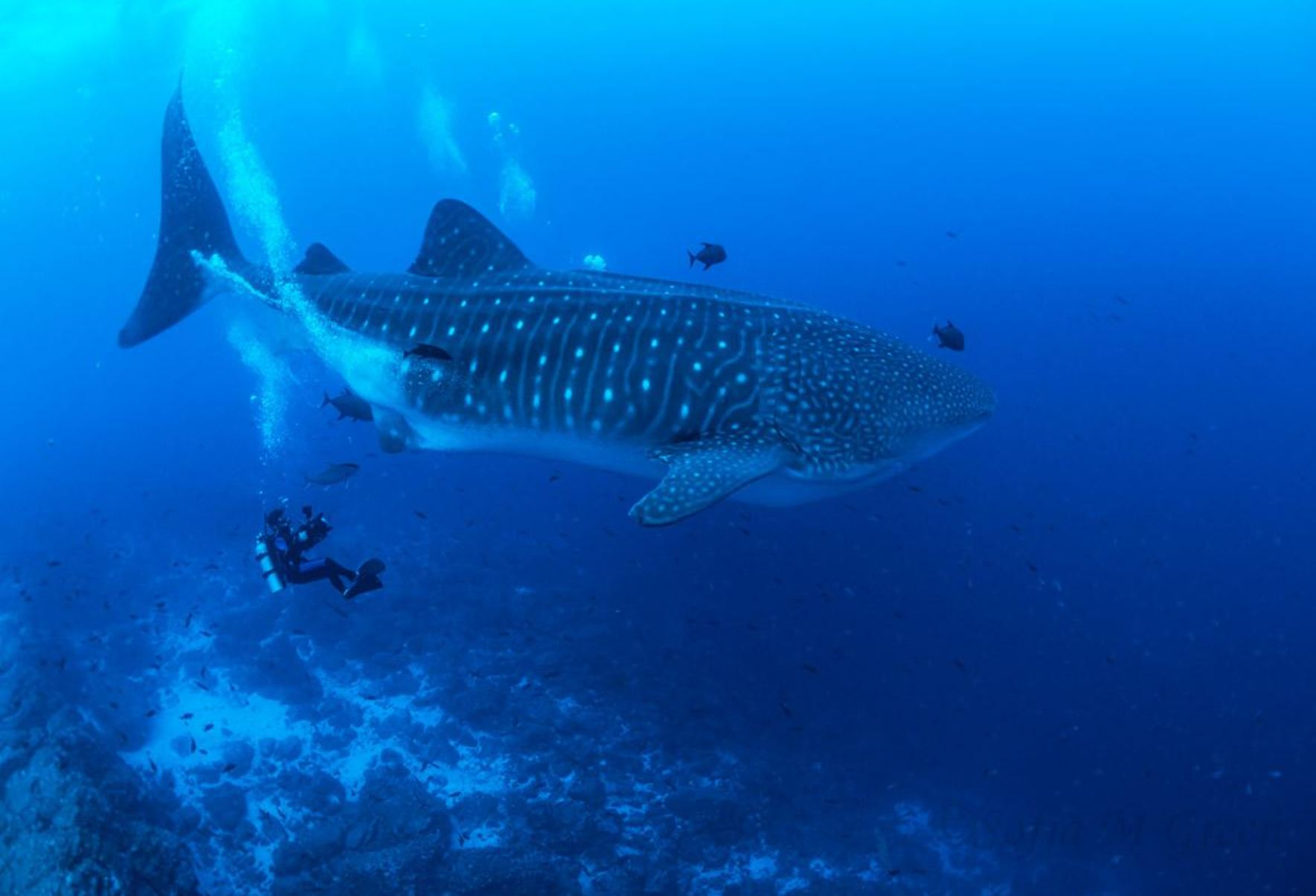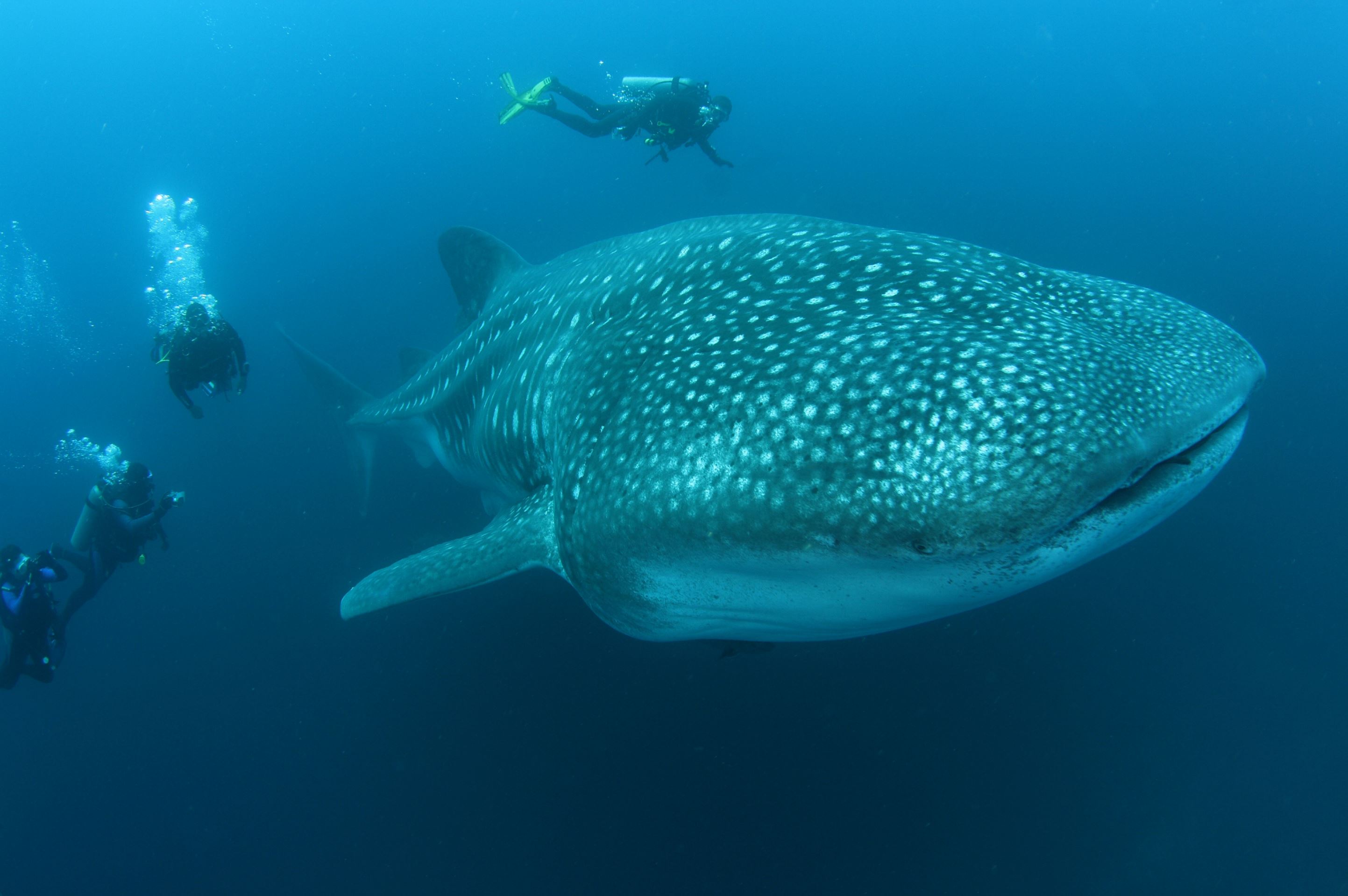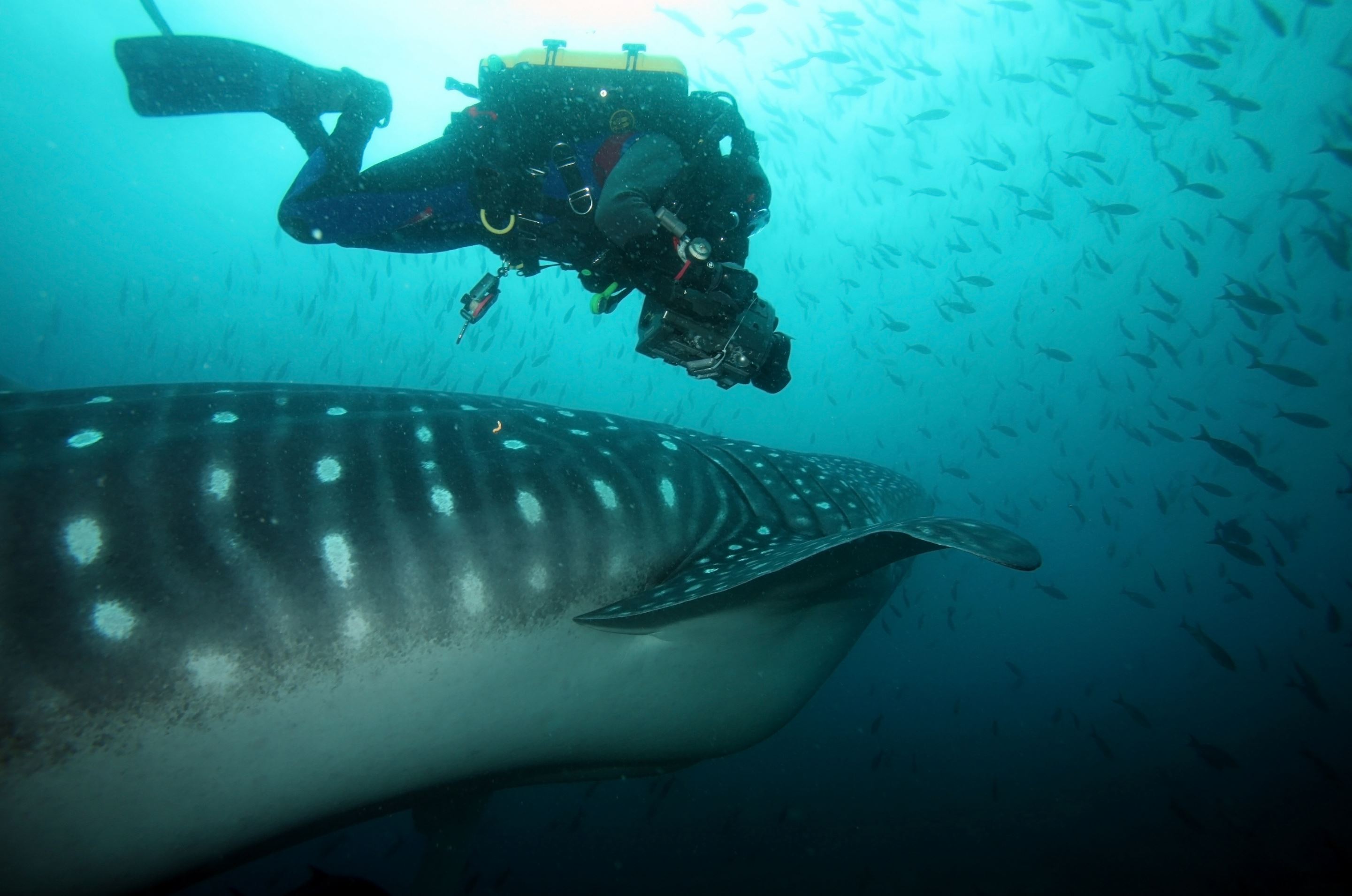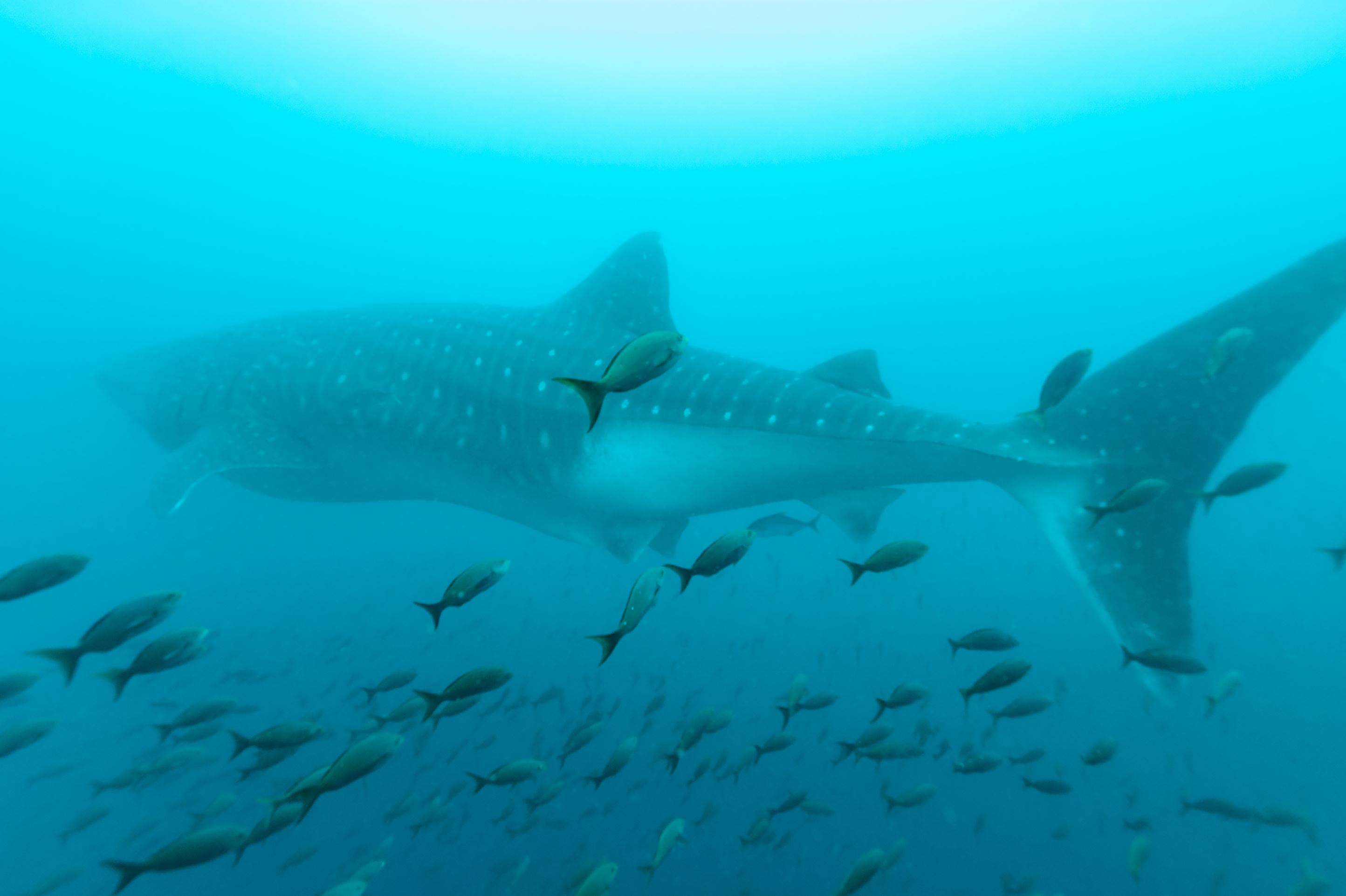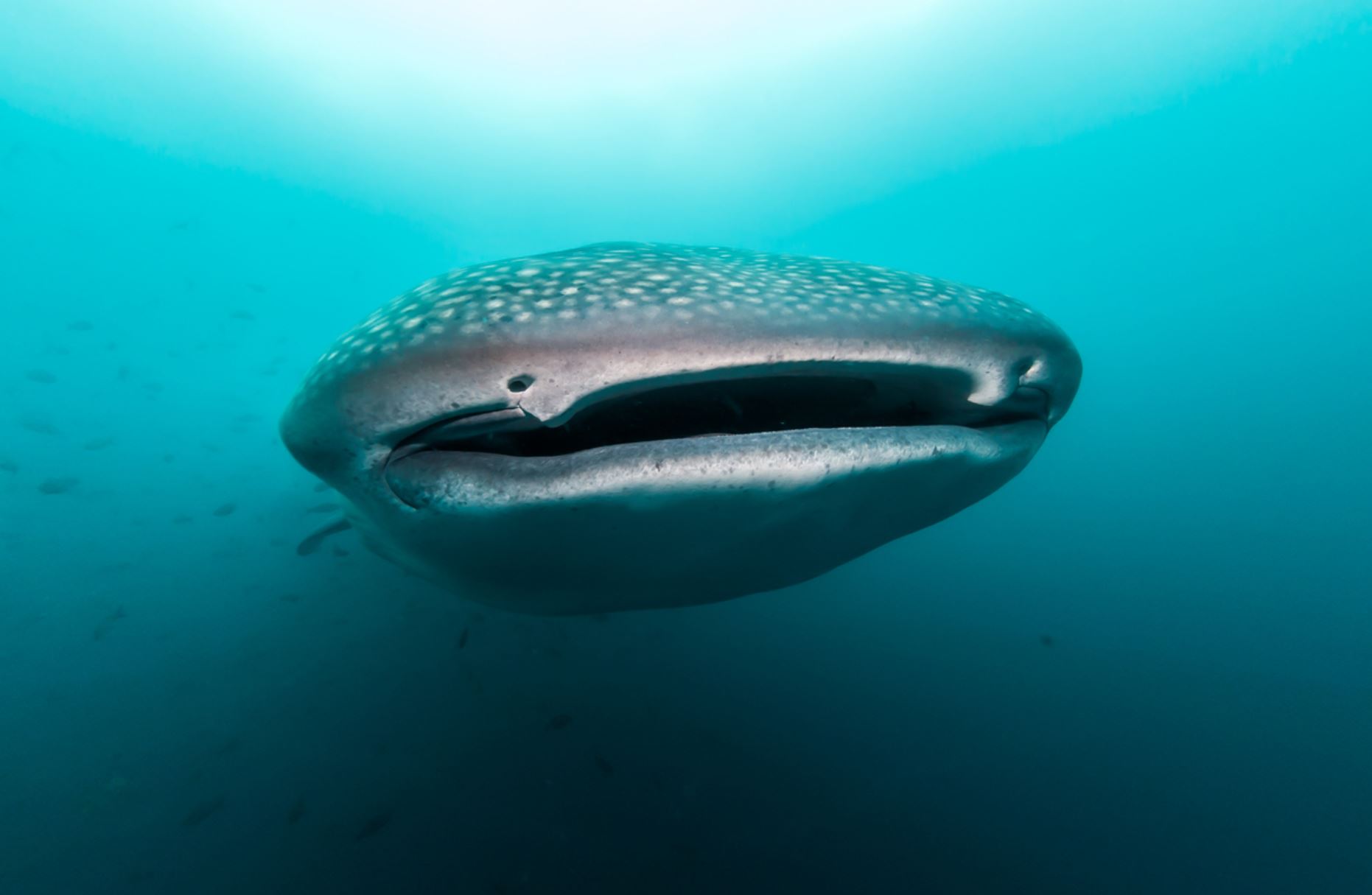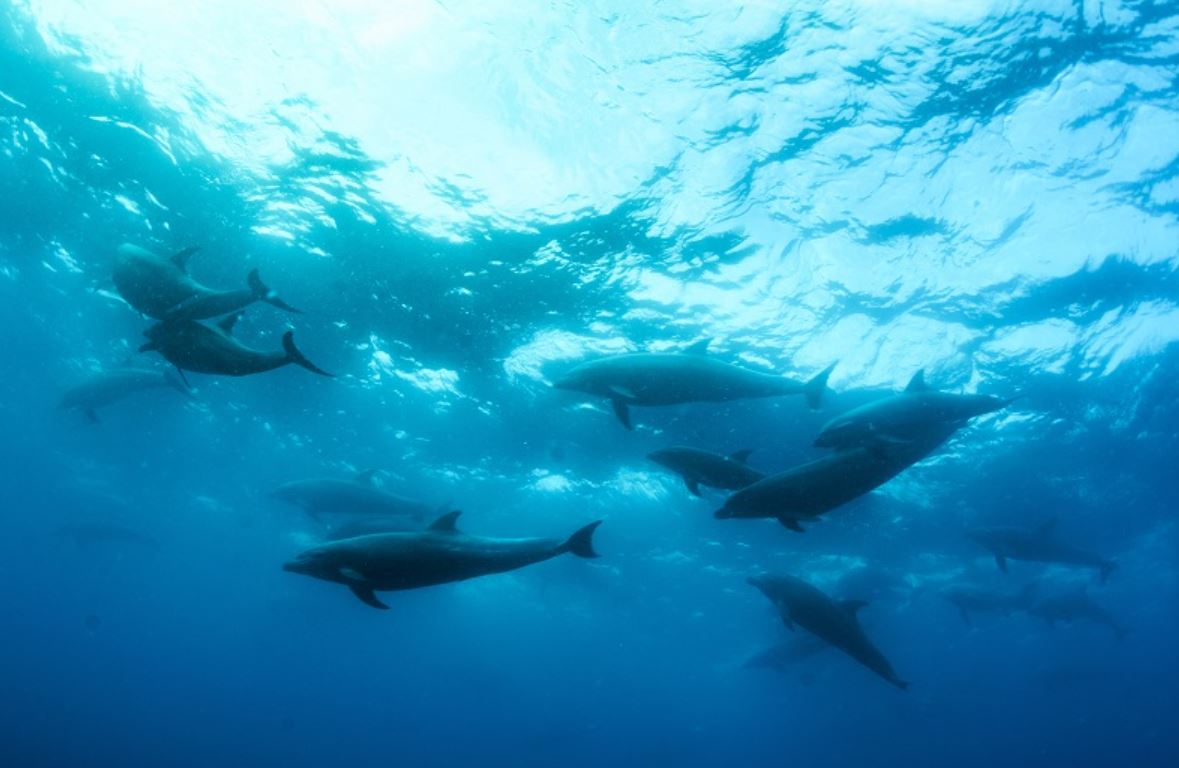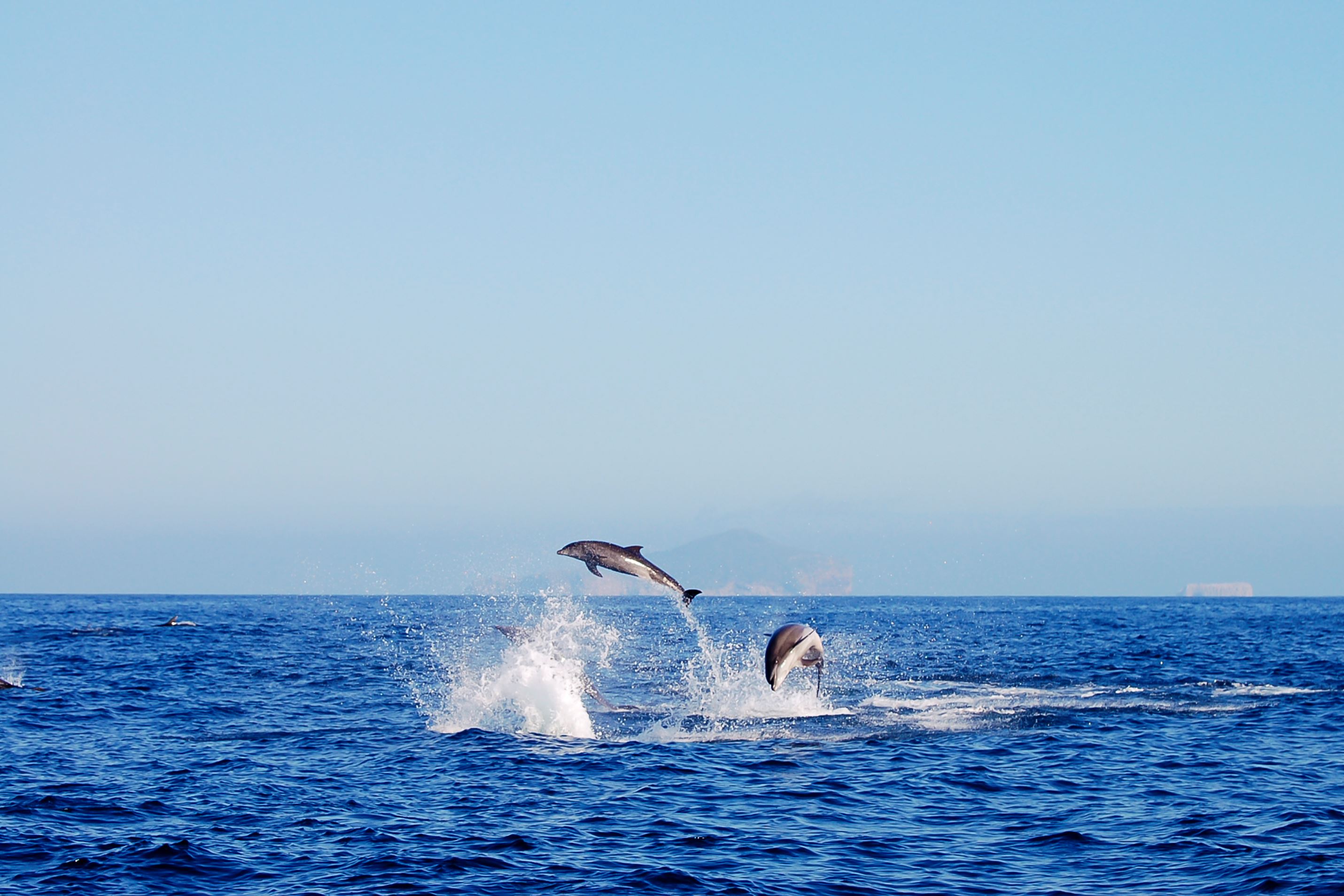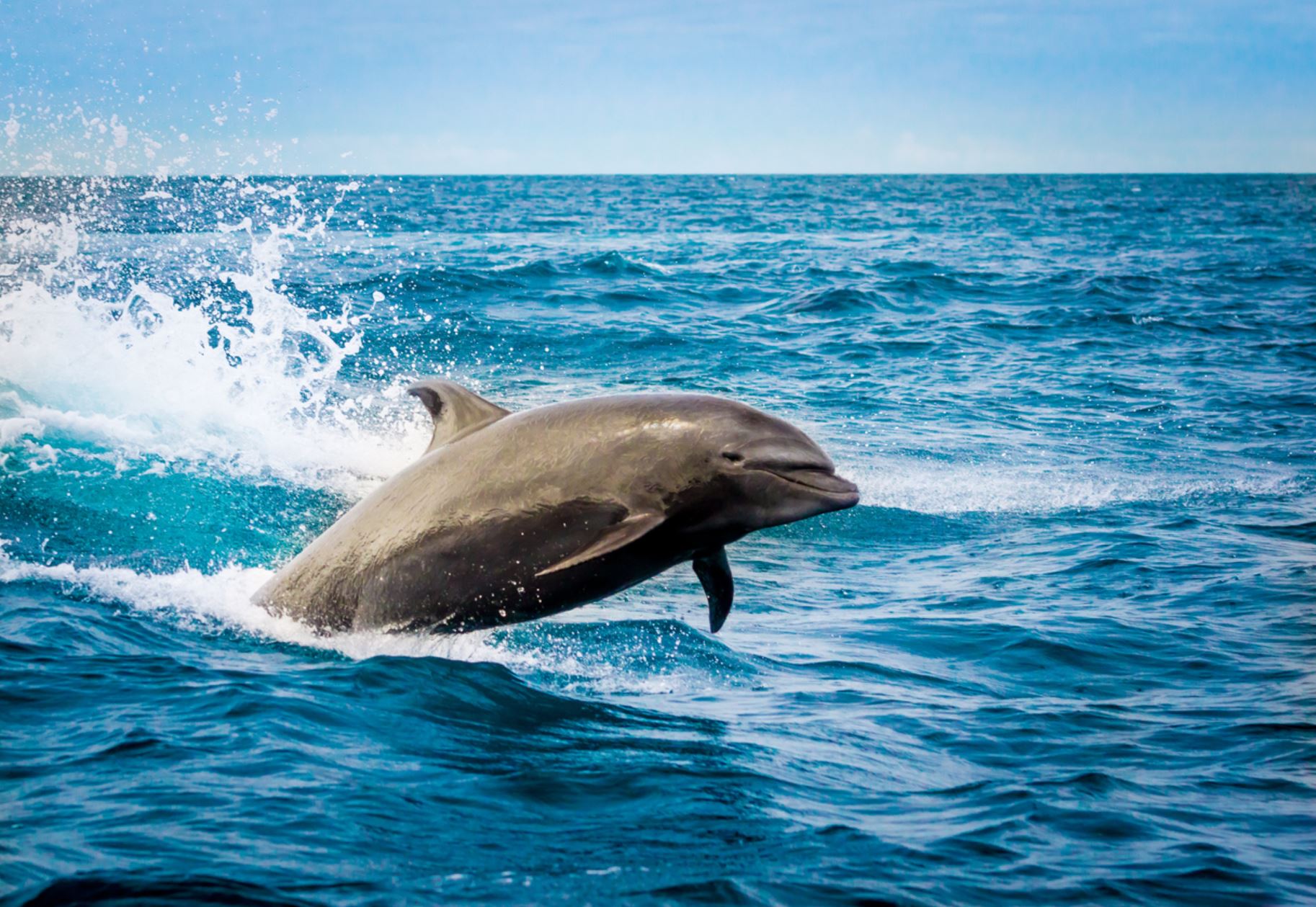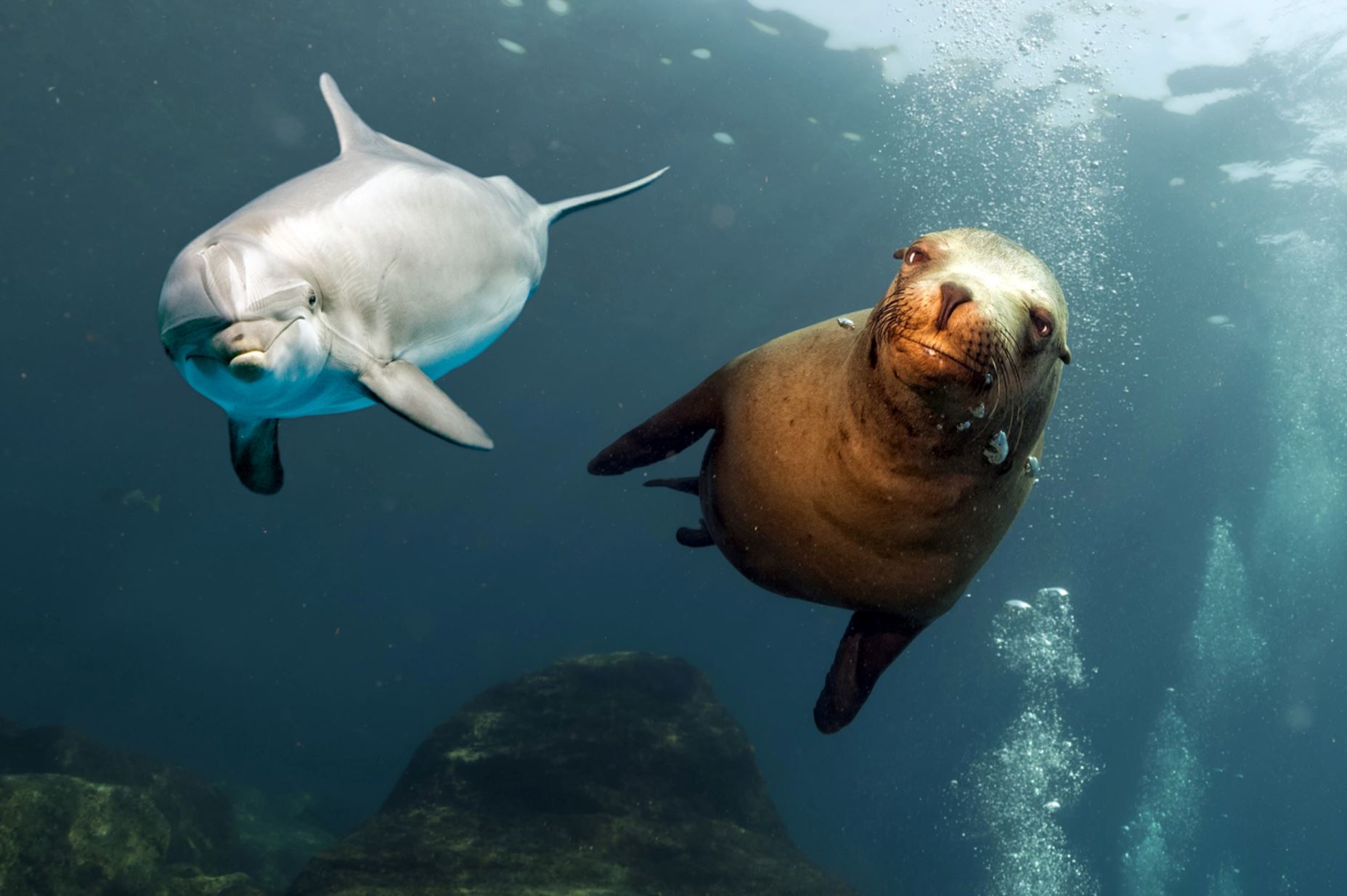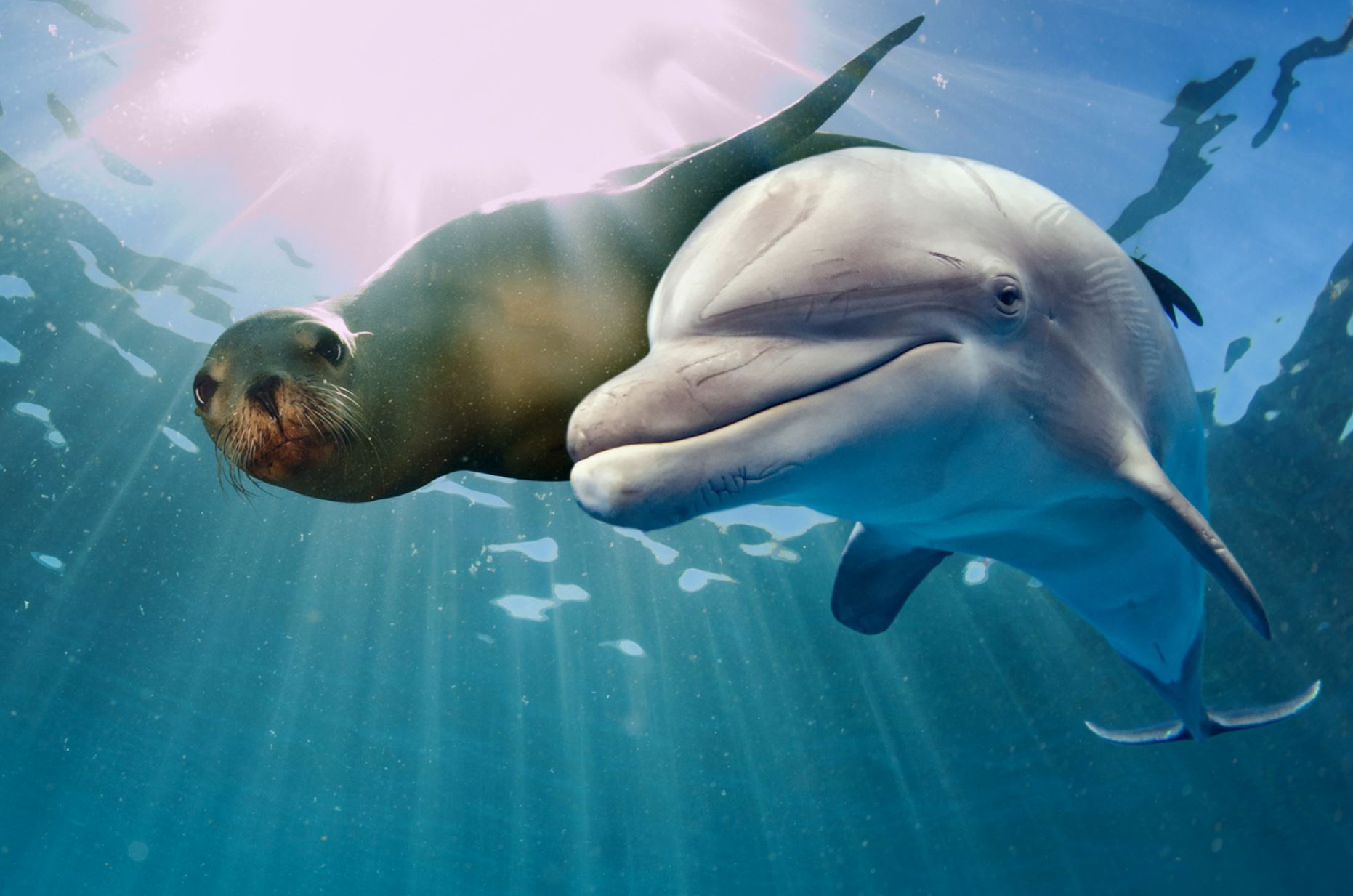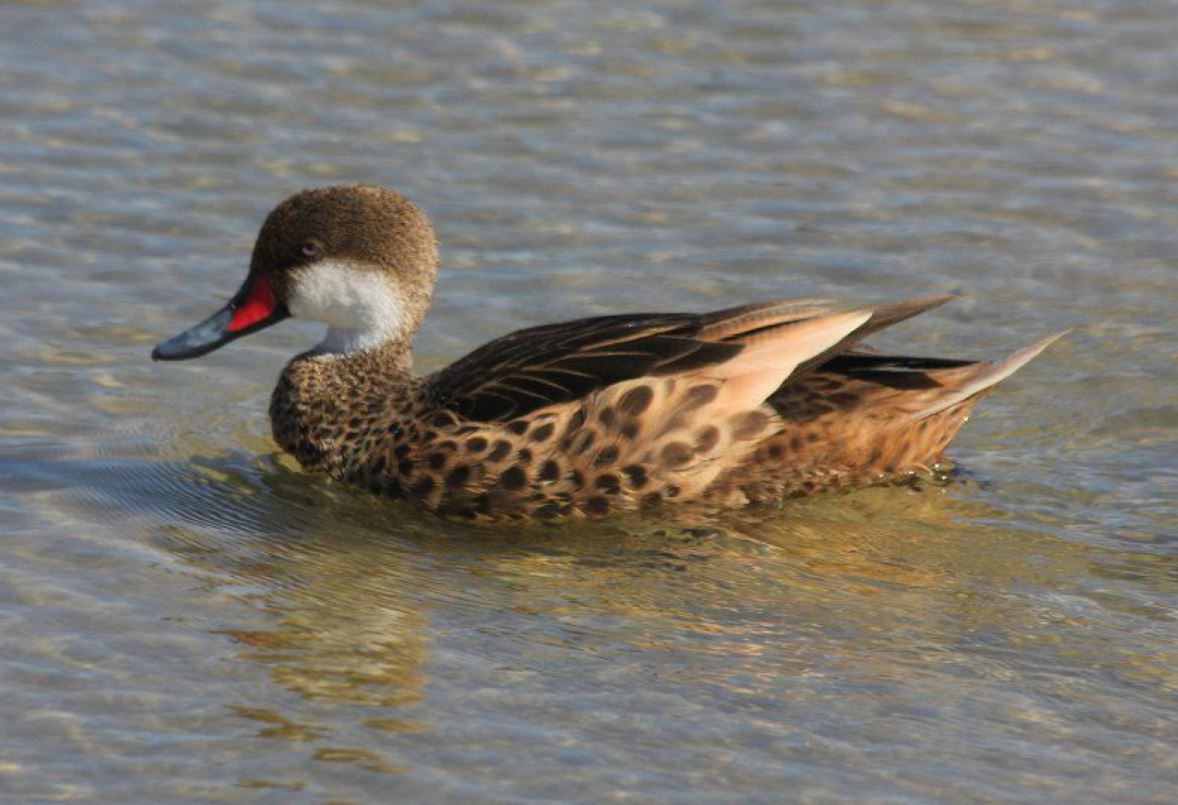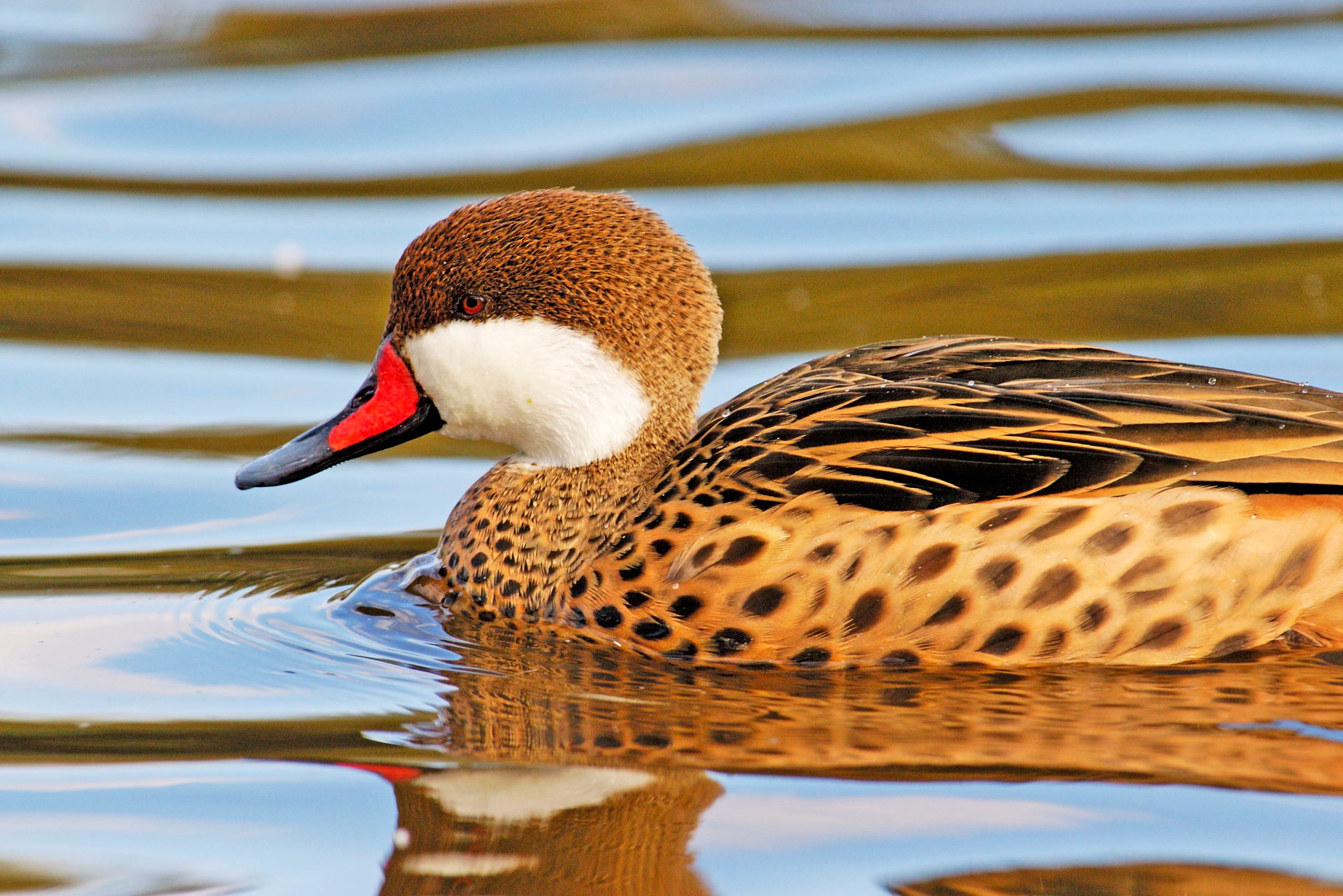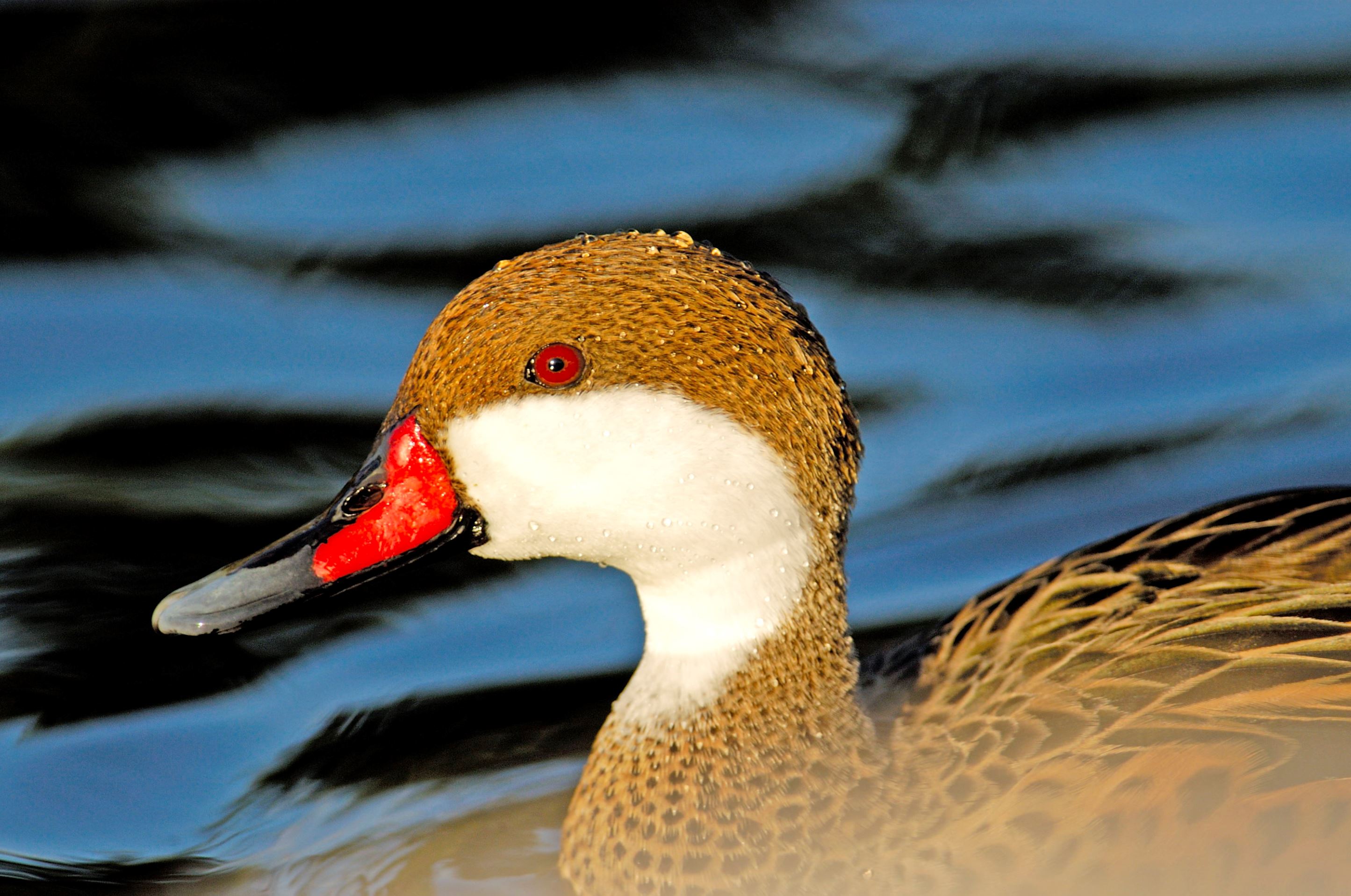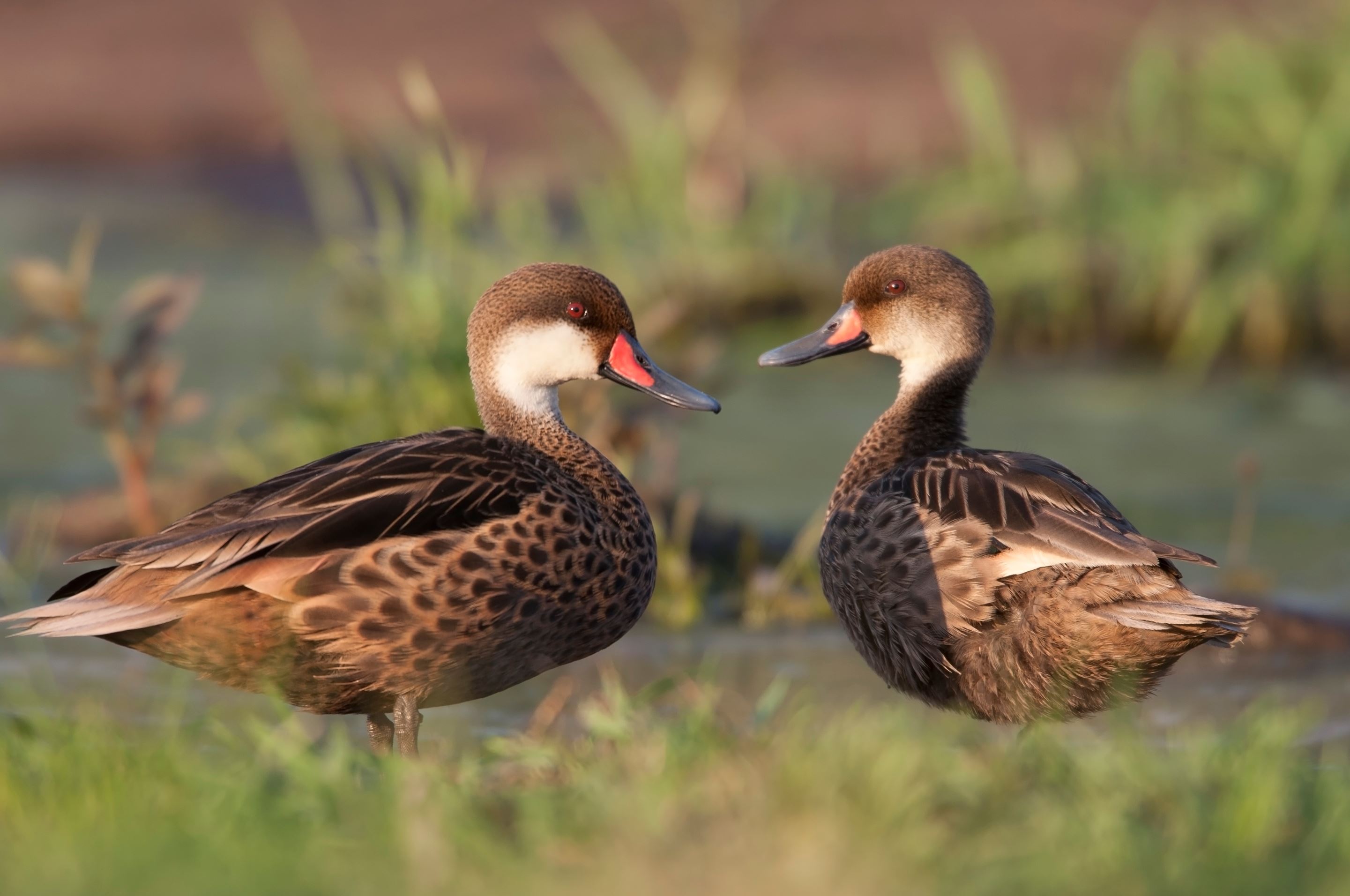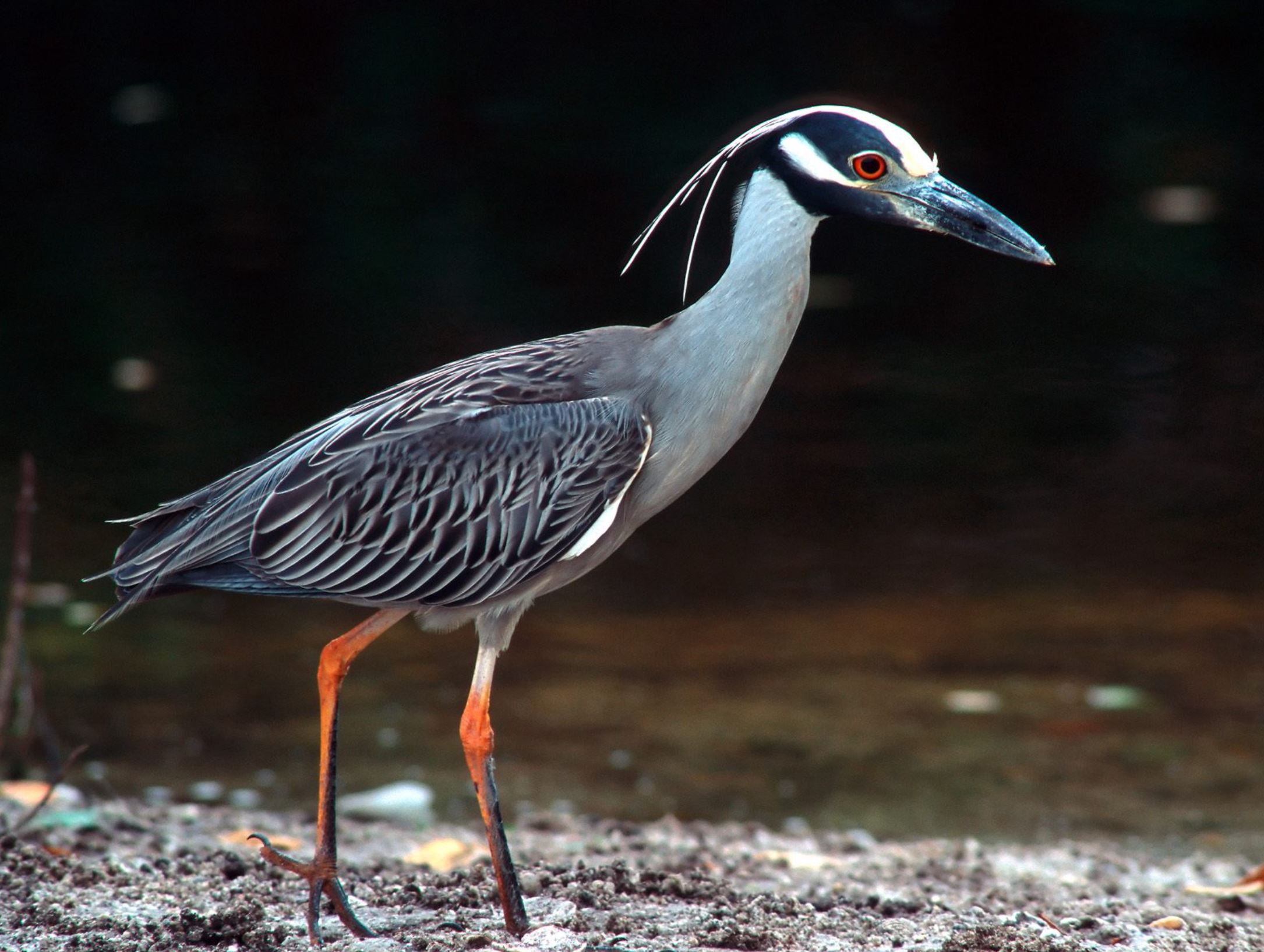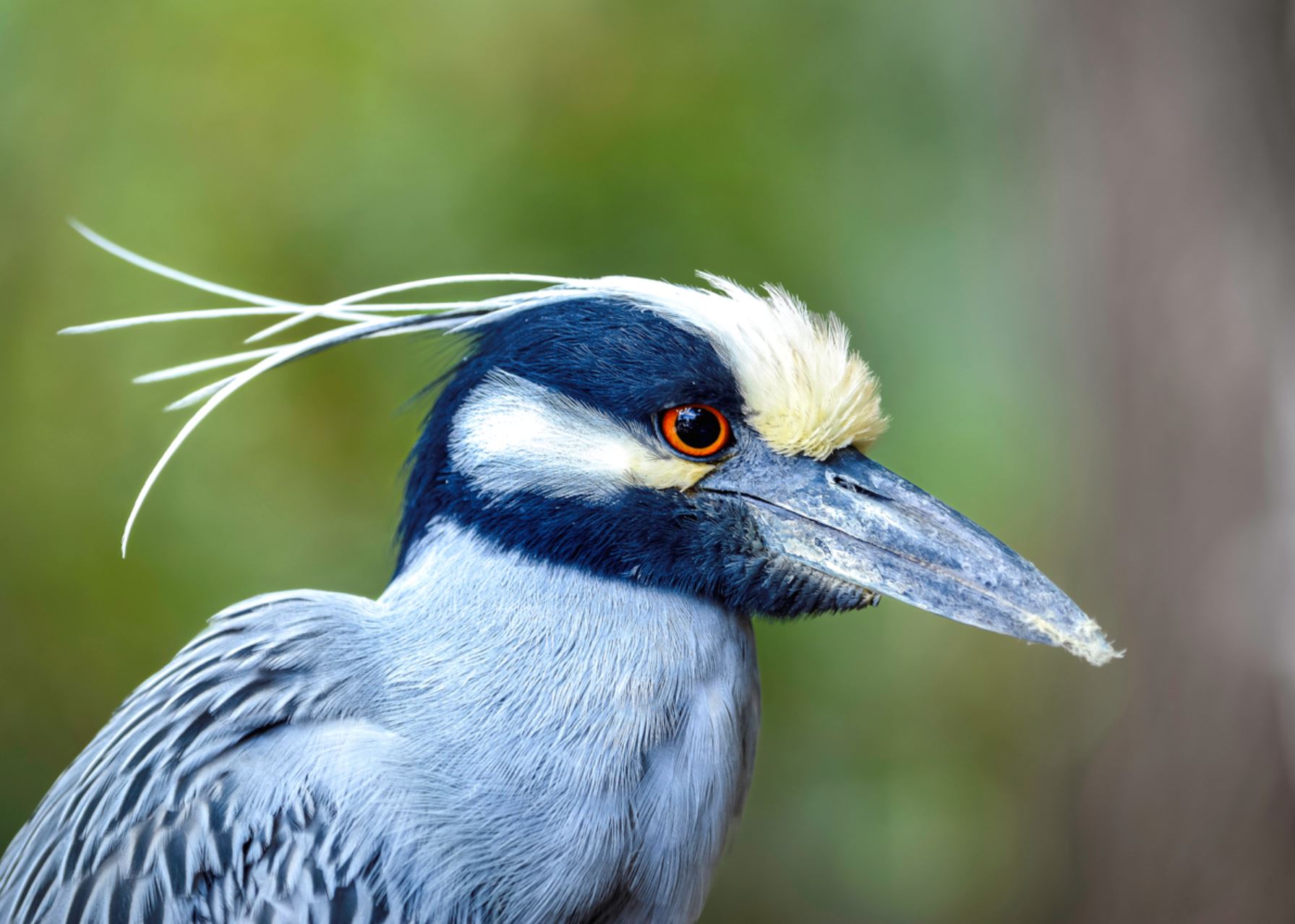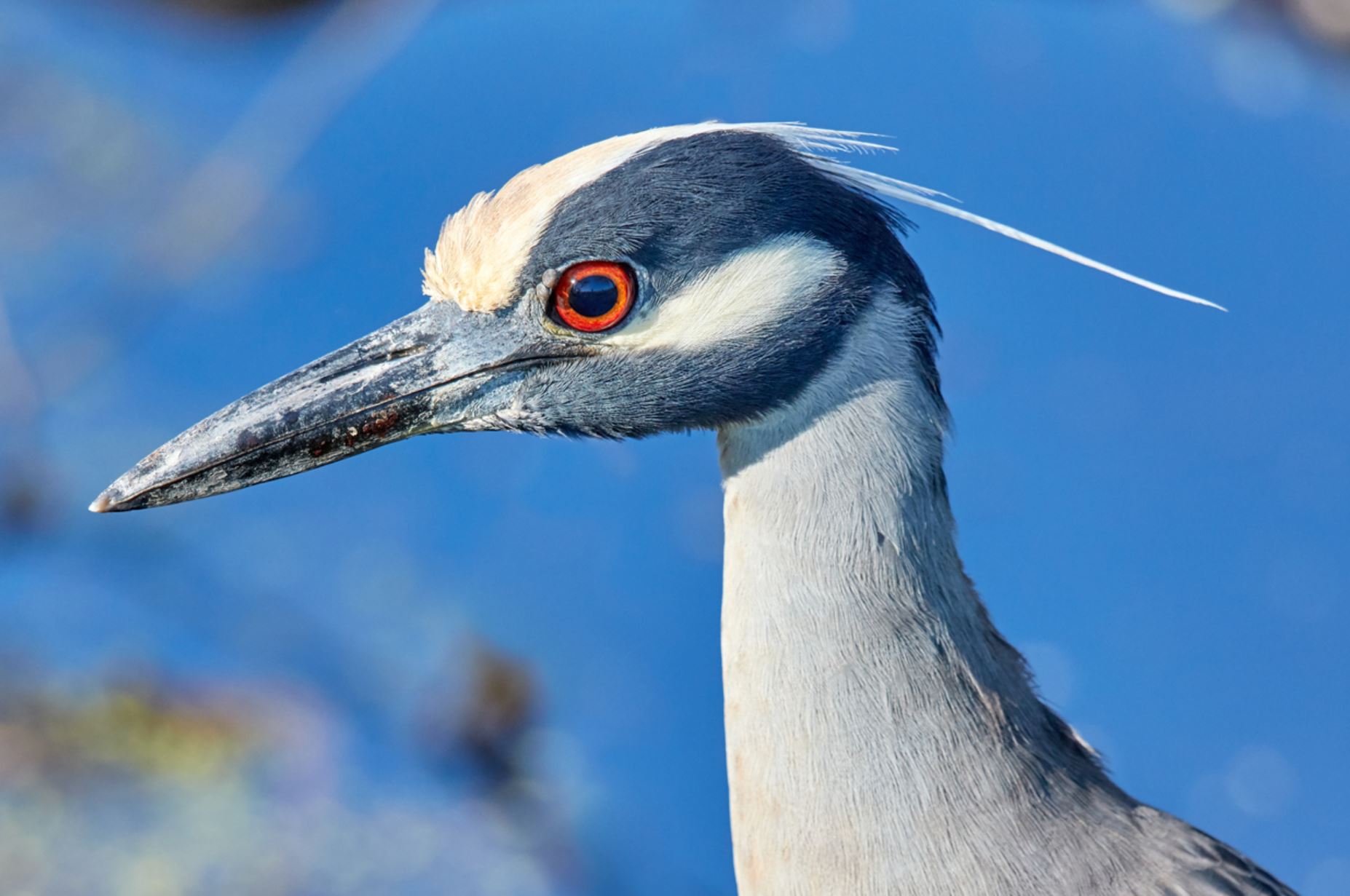Santiago
Animals/Wildlife




Landscape/Views




Snorkeling



Beaches




It has the biggest and longest lava flow, which is located in Sullivan Bay. Geologically speaking, this island is one of the most beautiful and unbelievable formations. The vast basaltic landscape performs smooth and unbroken surfaces with undulations and nods formed by the fluid lava that created the sculpture. It is located on the central west of the archipelago and is formed by two overlapping volcanoes. It is the 4th biggest of the archipelago.
It is an unpopulated island.
In Puerto Egas explore deep pools and caves carved from the lava shoreline, home to playful Galapagos fur seals as well as a variety of resident and migrant bird species.
Sombrero Chino offers a spectacular snorkel, swimming by a channel of shallow water, nursery of thousands of marine species and a small colony of penguins. Something to notice today in this island is the absence of the thousands of land iguanas that Charles Darwin mentioned on his diary. They completely disappeared due to the presence of introduced species; especially goats and rodents that today, are gone. This is the biggest island on earth where introduced animals were eradicated. Tortoises have the chance now to repopulate the island, and they can be seen more and more often in our visits.
Charles Darwin Journey on Santiago: This is the island where Darwin stayed the longest, he knew already that the islands were something bigger and more important than they seemed when he first arrived, so on his visit, he expend 2 weeks and walked the whole island. Here he first noticed the difference in between the tortoises from different islands, which had different shapes and sizes.
This is an amazing location featuring the remains of an eroded shoreline that is home to seabirds, fur seals, and playful sea lions. Its different shapes have been made throughout and erosion process of the salty waves and wind. Espumilla beach is a white-sandy front located in James Bay very popular among visitors.
Espumilla is a typical Ecuadorian dessert made of fruit and eggs which consistency is very similar to a foamy dessert which can also describe the foamy waves of this site. There are mangroves and a small palo santo forest that lead to salty lagoons that are home to wading birds such as flamingoes.
In the upper dunes, marine turtles nest can be also observed. The clear waters are a great place to snorkel to see assorted fish and rays.
Activities: 1 hour hike / 45 min beach snorkeling
Highlights: Volcanic black beach and wonderful landscapes, fur seal grottos, sea lion colonies, herons, hawks, oystercatchers, finches, doves, white-tipped sharks, sea turtles. We will be able to see the vegetation from arid to humid climate zones, but they have been seriously affected by intensive foraging by introduced goats, now eradicated. The surrounding area is a prime place for spotting and observing hunting herons-namely Great Blue Herons, Yellow-crowned Night Herons, and Lava Herons- as well as oystercatchers. Visitors will enjoy the sight of marine iguanas grazing upon algae beds at low tide, sharing space with the crimps on red Sally light-foot crabs and other wading birds.Visitor sites: Albany islet, Buccaneer Cove, Chinese Hat, Cousin Rock, Egas Port, Espumilla Beach, James Bay, Salt mine Volcano, Sullivan Bay
Pictures
Highlights / Places to Visit
Chinese hat, birdwatching
Chinese Hat Galapagos may be one of the smallest islands, but it sure knows how to punch above its weight. Size is not everything! The views of Chinese Hat island from sea are unforgettable. The beach, volcanic landscape and clear waters contrast beautifully. Visitors can also enjoy spectacular Galapagos views from the island lookout. The Chinese Hat snorkeling site is also highly recommended. Come check out Chinese Hat at Galapagos for yourself!
Wildlife Highlights:
• Chinese Hat’s white sand coral beach is home to a small Galapgos sea lion colony, Marine iguanas, Sally lightfoot crabs, and a variety of shore birds.
• Sometimes Galapagos pinguins can be spotted on the rocks of Chinese Hat island, or feeding in the water. Lucky visitors may even get the opportunity to snorkel with penguins here.
• Snorkel at Chinese Hat to spot Whitetip reef sharks, other sharke species, sea lions, Galapagos fish and more.
• The views from Chinese Hat Galapagos are breathtaking! This wonderful panorama extends to Santiago and Bartolomé islands.
Chinese hat, white sandy beach
Chinese Hat’s white sand coral beach is home to a small Galapagos sea lion colony, Marine iguanas, sally lightfoot crabs and a variety of shore birds. Fantastic to swim and snorkel!
Albany Rock
Albany Rock is a small crescent shaped islet located in the northwest of Santiago Island. You dive at a protected cove with little current. There is a sloping rock wall covered with sea fans and yellow black coral and large boulders, rocks, and underwater pinnacles with many crevices. Marine turtles, barracudas, golden and spotted eagle rays and Galapagos shark have been seen here and on the sandy plateau red lipped bat fishes have been found.
Highlights: Diving
Animals: Marine turtles, barracudas, golden and spotted eagle rays and Galapagos shark
Difficulty: Moderate
Landing: None
Buccaneer Cove
Buccaneer’s Cove in Santiago Island is an amazing location. It is located on the northwest side of Santiago and takes its name from the fact that early sailors, pirates, buccaneers and later whalers used this cove as an anchor place to careen their vessels, look for fresh water up in the higher parts of the volcanic island and catch giant tortoises for food.
Now, Buccaneer’s Cove in Santiago Island features remains of an eroded shoreline that is home to a variety of sea Galapagos birds, sea lions and fur seals. The geology of the place is fascinating, with layers of compacted tuff volcanic material that, due to wave and wind action, has eroded into different forms and shapes. Boobies, pelicans, and gulls use these tuff ledges as feeding grounds and nesting sites. Galapagos fur seals shade themselves amongst the rocks to cool off, and sea lions swim alongside of the coast with innocence and curiosity. Our panga ride along Buccaneer’s Cove brings a sense of discovery and is full of surprises.
Cousin Rock
Cousin's Rock is a well known dive site and is situated off the east coast of Santiago. This is one of my favorite dive sites, mostly because of the combination of nicely covered rocks and the possibility to see large animals as well. The rock has a triangular shape and rises about 10m out of the water. Underwater it is steep on the northern and western side and sloping on the eastern side. In the south lies a large rock separated by a narrow channel from the island.
You can start on the steep wall and basically just jump right into a enormous school of black striped salema (Xenocys jessiae). It is so enormous, that when you swim into the school you are completely surrounded by fish, it actually becomes dark. You stay still and stop breathing and the fish nearly touch you.
Egas Port
Egas Port named in honor of Jorge Egas, an entrepreneur who explored the island in the 1930s and opened a salt mine at the foothill of “Sugarloaf” Volcano. The site was actually visited in 1835 by the HMS Beagle and Charles Darwin, who described in his journals, a group of Spaniards salting tortoise meat with the salt extracted from the area.
The first part of the trail is comprised of volcanic ash (a tuff cone) and the other half of the trail is partially uneven terrain, comprised of volcanic basaltic rock that lounges the shoreline.
Along the shore, you can also find various bird species such as pelicans, blue-footed boobies, lava herons, yellow-crowned, night herons (locally called huaques), semi-palmated plovers, willets, yellow warblers, finches, and the highly territorial American oystercatchers, which usually lives in pairs that can occupy large extensions of the shoreline. We can also see sally light-foot crabs and large colonies of marine iguanas sunbathing on the volcanic rocks.
You have the option to visit the Salt Mines a trail of an approximate distance of 4 mi (8 km) round trip. It is a salty lagoon that’s located inside a crater.
- Disembarking: Wet
- Type of Terrain: Flat & Semi-rocky
- Physical Conditions Required: Medium
- Activities: 2 horas 30 minutos de caminata / 1 hora 30 minutos de snorkel en la playa
- Highlights: Volcanic black beach and wonderful landscapes, fur seal grottos, sea lion colonies, herons, hawks, oystercatchers, finches, doves, white-tipped sharks, sea turtles. We will be able to see the vegetation from arid to humid climate zones, but they have been seriously affected by intensive foraging by introduced goats, now eradicated. The surrounding area is a prime place for spotting and observing hunting herons-namely Great Blue Herons, Yellow-crowned Night Herons, and Lava Herons- as well as oystercatchers. Visitors will enjoy the sight of marine iguanas grazing upon algae beds at low tide, sharing space with the crimps on red Sally light-foot crabs and other wading birds.
Espumilla Beach
Espumilla Beach is located at the northern edge of James Bay. It is a beautiful golden sandy beach, bordered by dense green Palo Santo and mangrove forests. It is a great site for swimming and snorkeling, and you can encounter green turtles, sharks, rays and even octopuses. There's a trail you can follow from the beach that takes you to a vivid green lagoon, where you can spot pin-tail ducks and pink flamingos. You'll also be able to see Galapagos hawks and pelicans in the area, and marine turtles use this beach as a nesting site.
Difficulty: Easy
Disembarkation: Wet Landing
Interactions: Hiking ,Snorkeling ,Dinghy Ride
Highlights at Espumilla Beach
- Birdwatching
- Green Turtle Nesting Beach
Animals:
American Oystercatcher, Blue-Footed Booby, Brown Pelican, Darwin’s Finches, Galapagos Dove, Galapagos Frigatebirds, Galapagos Green Turtle, Galapagos Hawk, Galapagos Lava Heron, Galapagos Lava Lizard, Galapagos Marine Iguana, Galapagos Mockingbird, Galapagos Petrel, Galapagos Sea Lion, Galapagos Shearwater, Galapagos Sting Rays, Great Blue Heron, Greater Flamingo, Nazca Booby, Vermilion Flycatcher, White-cheeked Pintail, Yellow-crowned Night Heron
James Bay
James Bay, located on the northwestern side of Santiago Island, was named in honour of King James of England. It is a large bay with three visitor sites: one on the northern side, at Espumilla Beach, and two on the southern side, accessible from Puerto Egas. It's a great spot for snorkeling and diving and you can encounter a diversity of marine wildlife, like tropical fish, fur seals, moray eels, sharks and octopuses. Another great thing to visit here is the Fur Seal Grotto, where you can see Galapagos sea lions and fur seals up close.
Difficulty: Moderate
Disembarkation: Wet Landing
Interactions: Hiking ,Snorkeling ,Dinghy Ride
Highlights at James Bay: Birdwatching, Green Turtle Nesting Beach
Animals:
Blue-Footed Booby, Brown Pelican, Darwin’s Finches, Galapagos Dove, Galapagos Frigatebirds, Galapagos Green Turtle, Galapagos Lava Lizard, Galapagos Marine Iguana, Galapagos Mockingbird, Galapagos Sea Lion.
Salt Mine Volcano
Further south is the Pan de Azúcar Volcano, whose volcanic deposits have contributed to the beach’s formation. The crater of this volcano contains a saltwater lake that dries up during hot weather. Between 1928 and 1930, explorations to develop a salt mine were carried out, but it was decided that a mine was not feasible. The workers’ use of endemic woods also damaged the environment, and the development was scrapped.
Sullivan Bay
This visitor site is located at the southeastern portion of Santiago Island and represents a great important geologic interest; it features extensive lava flows which are believed to have been formed during the last quarter of the 19th century. The area is covered by Pahoehoe lava flows (Pahoehoe which means in Polynesian language “easy to walk”); this type of lava is rare to the rest of the world but is common to the volcanoes of the Galapagos Islands and Hawaii, as they share the same volcanic origin.
You can see the path of lava flow as well as the various igneous rock structures formed from varying rates of flow, temperature of formation and pressure. Visitors can also find pioneer plants and “hornitos”, little ovens formed when bubbles escape from hot lava to form mini-volcanoes.
At 492 ft (150 m) from the beginning of the path, molds of some trees can be found. Details of the crust indicate that they were trees growing in small crevices where soil and moisture accumulate in sufficient quantity so they can grow.
After exploring the lava flow, you can swim and snorkel with playful sea lions off two small coralline beaches.
- Disembarking: Wet
- Type of Terrain: Flat & Petrified Lava
- Physical Conditions Required: High
- Activities: 1 hour 30 min hike / 1 hour snorkeling or beach time
- Highlights: This is the perfect place to see and feel the volcanic origin of the Galapagos
Animals that can be seen on the island
American Oystercatcher
The American Oystercatcher bird is found all along the Pacific coast and in some areas of the Atlantic Ocean. In the Galapagos, they are found in the intertidal zone of most islands. Their population isn’t big; around 400 birds live in the archipelago.
Males and females are similar and they are usually seen in pairs and sometimes in groups. They breed mainly in the months of October to March and can be seen patrolling the beach in search of food and when they curiously approach tourists. Their red bright bills and pale pink legs can be seen among marsh, where they prefer to remain most of the time in search for food.
They feed on mollusks, worms, and marine invertebrates which they search with their beak in muddy terrains, and with the strength of the beak force to open it. Because their food is on the ground, they rather walk than fly.
The courtship begins when the male and the female walk together pipping the same note or they fly off together; their bond lastest forever. The male prepares the nest by scratching the ground and marking territory. Once, the nest is ready, the female can lay 1 to 4 eggs that will be incubated by both parents for about 28 days. After a month, chicks are born, they are encouraged to practice fishing to reduce predator attacks. Chicks become fully independent after two months of age.
- Animal Group: Shorebirds
- Scientific Name: Haematopus palliatus
- Animal Average Size: 43 cm
- Animal Average Weight: 14.1 – 24.7 oz / 400 – 700 g
Santiago island
Santa Cruz island
Brown Pelican
Pelicans are large, heavy waterbirds with short legs, webbed feet, and exceptionally long bills. The bill has a large, distensible pouch, used as a scoop-net to catch fish. In flight, pelicans hold their head and neck drawn back and have slow, rather ponderous wing beats. Their large wingspan makes them accomplished gliders. Pelicans are very ungainly on land, rarely walking far; however, they are comfortable around humans, especially around fishing boats or ports where they can get an advantage of the food available from fishermen.
The brown pelican is a common resident of Galapagos, an endemic species that goes by the scientific name of Pelecanus occidentalis urinator. Its population is estimated at a few thousand pairs that breed throughout the year, nesting in small colonies in low bushes and mangroves, occasionally on the ground, and laying up to two eggs that are incubated by both sexes. Males and females are alike, with brown plumage in their bodies and yellow heads. Their beaks are whitish gray with patches of red.
- Animal Group: Seabirds
- Scientific Name: Pelecanus occidentalis
- Animal Average Size: 105 - 152 cm
- Animal Average Weight: 3.17 - 3.7 kg
Places where you may see this animal:
Santiago island
Santa Cruz island
Santa Fé island
Floreana
Darwin´s finches
Darwin finches are a group of about 14 birds that gained notoriety when Charles Darwin studied them back in his voyage with the HMS Beagle in 1835. Darwin arrived in the Galapagos and was fascinated by collecting species he found in his trip — the species were taken back to the UK for further studies.
Back home, Darwin studied the birds with ornithologist John Gould and found fascinating similarities between these birds and a common South American ancestor finch. They noticed that finches had slight differences in the beaks and were also as a whole different from the original continental ancestor. Each finch had adapted to their own island environment and food source availability with variations in their claws, size, and beaks — deriving from this they were acknowledged as endemic to the Galapagos Islands.
Some finches have adapted to eat insects, others to eat nuts, others are completely vegetarian. Charles Darwin, years later, gathered all his findings in his famous book On the Origin of Species and concluded that species have the ability to change throughout time making favorable adaptations to their environment and becoming new species. This is what we commonly know as the theory of evolution by means of natural selection.
- Animal Group: Landbirds
- Scientific Name: Geospizinae
- Animal Average Size: 10 - 20 cm
- Animal Average Weight: 8 - 38 g
Places where you may see this animal:
Isabela
Santiago
Rábida
Santa Cruz
San Cristobal
Española
Galapagos Dove
One of the more attractive and pleasant birds to encounter on the islands is the Galapagos Dove. The Galapagos Dove is a tame and well-mannered creature. It is reddish brown with black and white markings, touches of incandescent green, red feet and a bright blue eye ring. The Galapagos Dove grows to measure between 18 and 23 centimetres long. Its beak is curved downward, larger and more curved than most other doves.
The Galapagos Doves curved beak helps it feed mainly on seeds picked from the ground mainly from the Opuntia cactus. Cactus pulp forms part of their diet and is probably their main source of water.
The Galapagos Dove is endemic to the islands and is found in the more arid parts of the main islands. A process of evolution on Genovesa Island has softened the spines of cactus plants and thereby allowed the Galapagos dove access to pollinate the flowers. This has occurred due to the lack of bees that would normally perform this function.
The Galapagos Dove is most commonly seen on the ground where it forages for seeds and fruits. Even if disturbed it is reluctant to take to the air and if it does, it only flies for a short time.
- Animal Group: Landbirds
- Scientific Name: Zenaida galapagoensis
- Animal Average Size: 18 – 23 cm
- Animal Average Weight: 180 - 350 gr
Places where you may see this animal:
Isabela
Santiago
Rábida
Genovesa
Santa Cruz
North Seymour
Floreana
Española
San Cristobal
Galapagos Fur Seal
The Fur Seal is the second species of sea lion, that can be found in the archipelago. Such species is more nocturnal and less social when compared to the sea lion. However, their wildness, impressive vision and swimming skills make them very interesting to watch and no one can deny that they are very adorable and extremely cute to watch, also they are the fluffiest species.
The fur seal is smaller than the sea lion, about 1,5m (5 ft) and is very shy and rare to see. They prefer the rocks rather than the beaches and they have nocturnal habits.
Fur seals are less in numbers when compared to the sea lion, as they were heavily hunted back in the day by the first colonizers,.and sailors in the 19th century.
The fur seal spend more time in land than they do in water.
Fur seals are usually found in the west side of the archipelago, where the quantity of food is almost always higher. They feed mostly on cephalopods and small fish. As they hunt mainly at night, they have developed accurate techniques and tools such as their whiskers, which can be used to track the waves the fish make on the dark water.
The fur seal females are very territorial, claiming an area for breeding. This species unfortunately has a low rate of reproduction, they breed one pup a year. Females typically go hunting for about 1 day and return to feed the pup. The fur seal pup recognizes their mother by calls and noises, only known to them.
Fur seals can be found by the rocks, resting in small groups or by themselves around the islets. They mainly like places where they can sleep between rocks or dark hidden areas.
- Animal Group: Mammals
- Scientific Name: Arctophoca galapagoensis
- Animal Average Size: 120 - 150 cm
- Animal Average Weight: 22 - 34 kg
Places where you may see this animal:
Genovesa
Santiago
Rabida
Galapagos Giant Tortoise
The giant tortoise is one of the biggest living reptiles, and they have the longest life from all vertebrates, living more than 100 years. The oldest tortoise known on record was 152 years. No reliable data exists to tell the age of a tortoise; however, fungi found in the carapaces, together with blood tests can help determine an approximate age. There are now only 11 species, 4 less than when Darwin visited the islands. Currently, they live in 7 different islands of the archipelago. They have struggled through volcanic eruptions, fires, hunting and introduced species threats. There are about 15 thousand tortoises living in the islands.
Their first ancestor is thought to have first arrived in San Cristobal Island. All the species were before considered subspecies of Chelonoidis nigra, but today each one are plain species. Darwin noticed the difference in the shell shapes of the tortoises according to each island, reaching to the conclusion that they all changed from one single ancestor to the different environments of each island, although the saddle backed shape is thought to have evolved independently from the others.
How did the giant tortoises arrive and establish in the islands? The theory states that these giant reptiles were transported by massive floating platforms that were built naturally by heavy rains on the amazon that put down and stocked many trees together. Tortoises most likely walked on these platforms to cross a river, or to feed, or maybe by mistake and then later got carried with the river currents to the ocean and then to the Galapagos in a long journey in which most animals died. These tortoises were better prepared for the environment of the Galapagos and this journey than many other animals, having the ability to survive without much food or water. This allowed them to reproduce and spread around. Once on the islands, after consecutive similar events happening many times during a long period of time, they started developing adaptations to feeding and walking around the isolated different islands of the archipelago.
There are two carapace shapes: the dome, and the saddle-backed. All tortoises have adapted to the vegetation and landscape of their surroundings. Males are bigger than females, and also have a longer and thicker tail where they have their reproductive organ.
They can weight to 300k (660lb), are as large as 1.50m (5ft), and reach sexual maturity at the age of 20 to 25 years. They are herbivores and feed on more than 50 kinds of plants including a poisoned apple tree, endemic guava, opuntia and fruits. It takes them from 1 to 3 weeks to digest their food, and have inefficient digestive tracks. Their slow metabolism and water reserves allow them to live up to around one year without food or water. They spend more than 15 hours a day resting.
They reproduce at any time of the year, but prefer the wet season. Turtles lay from 4 to 15 eggs in the warm grounds of the lowlands. Hatching occurs mostly in the months of December to April. They can be seen usually in the highlands of the islands, taking refreshing mud baths and nesting in the lowlands on a hot day.
- Animal Group: Reptiles
- Scientific Name: Geochelone elephantopus
- Animal Average Size: 150 cm
- Animal Average Weight: 300 kg
Places where you may see this animal:
Isabela
Santiago
Santa Cruz
Floreana
Española
San Cristobal
Galapagos Green Turtle
Turtles are one of the most widespread species of marine turtle, found in tropical and subtropical waters throughout the globe. However, the Green Sea Turtle (Chelonia Mydas) is the only species of turtle that nests in the Galapagos Islands.Research has revealed that the nesting colony in the Galapagos is the largest in the East Pacific.
The Green Sea Turtle was so named because of the green colour of its body fat. The adult turtles algae diet is responsible for the colour in its tissues.
Green Sea Turtles body is wonderfully adapted to life in the ocean. Their shells are lighter and more streamlined than those of their terrestrial counterparts and their front and rear limbs have evolved into flippers making them efficient and graceful swimmers, capable of swimming long distances in a relatively short period of time. Green Sea Turtles have been known to move through the water as fast as 35 miles per hour. The Turtles sometimes emerge on to land to bask in the sun.
Green Sea Turtles are cold-bloodied. Adult green turtles are known to grow up to one and a half metres long. While individuals have been caught that reached weights of up to 315 kilograms (694 pounds), the average weight of mature individuals is around 200 kilograms (440 pounds). The largest Green Sea Turtle ever recorded weighed 395 kilograms (871 pounds).
The Green Sea Turtles shell is actually its skeleton. Unlike its cousin, the Tortoise, the Green Sea Turtle cannot retract its small head into its shell for protection from dangerous sea creatures.
Sea turtles have come up with an ingenious way to rid their bodies of the salts they accumulate from the seawater in which they live. Just behind each eye is a salt gland. Their salt glands help sea turtles to maintain a healthy water balance by shedding large ‘tears’ of excess salt. If a sea turtle appears to be ‘crying’ it is usually not cause for alarm, as the turtles are merely keeping their physiology in check. It is not because they are upset or sad.
Green Sea Turtles spend most of their life in the ocean. The males never leave the ocean, but the females come ashore to nest and lay eggs on several of the islands.
At night, the females dig pits on the sandy beach with their back flippers. They lay about 100 eggs and then they cover their pit. Green Sea Turtles leave the island and go back into the sea never returning to see their eggs. After the baby green sea turtles are about 6 months old, they start to eat algae and seaweed.
- Animal Group: Reptiles
- Scientific Name: Chelonia mydas
- Animal Average Size: 150 cm
- Animal Average Weight: 68 – 250 kg
Places where you may see this animal:
Santiago
Bartolomé
Santa Cruz
Santa Fé
Floreana
Galapagos Hoary Bat
This is the larger of the two resident Galapagos bat species and it can be found throughout the Galapagos archipelago, with recorded populations on Santa Cruz, San Cristóbal, Isabela, Santiago, and Floreana Islands.
Male and female Red bats have different migrating routines. Female bats are usually found in warmer climates during the month of June. Males are mostly found in the Highlands of Santa Cruz or Isabela. Due to the difference in migrating patterns, it makes it difficult for them to breed because they are constantly quite far apart.
The Hoary Bat is so-called because its long, dense grey-brown fur is tipped with white - making the bat look like it as a covering of frost, or hoar. It’s one of the more attractive bat species, with this dense fur covering giving it an almost “cuddly” appearance!
Hoary bats don’t roost together in colonies, instead they prefer to roost in dense vegetation on their own, hanging upside down under the tree canopies. In the Galapagos they are best seen on the inhabited islands where, like the smaller Red Bat, they will hunt around the streetlights that attract their insect prey. If you are enjoying an overnight stay before or after your cruise on either San Cristobal or Santa Cruz you may well have the chance to observe these creatures as you walk in the evenings.
might have. When they are on the ground and can not move, do not touch them or try to help them. Red Bats are liable to bite and cause infections. If a person comes into contact with one and is bitten, this person needs to seek medical attention as soon as possible.
- Animal Group: vesper bat family, Vespertilionidae
- Scientific Name: Lasiurus cinereus
- Animal Average Size: 13 – 14 cm
- Animal Average Weight: 26 gr
Places where you may see this animal:
Highland of Santa Cruz
San Cristobal
Isabela
Santiago
Floreana
Galapagos Lava Gull
The Lava Gull (Larus fuliginosus) is a large gull, probably related to the Laughing Gull. One of the rarest gulls in the world, the entire population is endemic to the Galapagos Islands and is estimated at 400 pairs. Adult Lava Gull characteristics are a black head, black wings and with a dark grey body and a paler grey belly. Their bill and legs are black and the inside of the mouth is scarlet.
Lava Gulls are quite often seen as they frequently emit long raucous gull-like calls with their bills wide open. They have white upper and lower eyebrows, with red lids. Young gulls are generally dark brown in colour.
Lava Gulls are solitary nesters, laying two olive-coloured and well-camouflaged eggs that take 30 days to incubate. Young birds fledge at 60 days and are cared for by adults for a short period.
Lava Gulls are omnivores like most Larus gulls, generally scavenging or stealing from nests, but they will also catch fish, small crustaceans and newly-hatched lizards, iguanas and turtles. . Being scavengers, young Lava Gulls are more naturally self-sufficient than some species with more specialized feeding habits.
The Lava Gull is categorized as ‘vulnerable’ by the IUCN Red List because it exists in small numbers and though the population is stable, it faces numerous threats.
- Animal Group: hooded gull group
- Scientific Name: Larus fuliginosus
- Animal Average Size: 51 – 55 cm
Places where you may see this animal:
Santiago
Genovesa
Santa Cruz
Española
Galapagos Lava Heron
The lava heron or Galapagos heron inhabits the intertidal zone and the mangrove areas, feeding at the open shoreline by slowly moving in the shallow waters or even diving into them. Apart from crab and fish, it also eats insects, lizards, and eggs. Its dark shades of gray help them to blend in with the rocks in order to hunt.
Males and females look similar, their feet, head, and eyes get brighter tones in courtship time and it is an opportunistic breeder. The mating months are September to March where females and males create a loud sound, show aerial displays and chase other herons in order to get a monogamous partner. They lay from 1 to 3 eggs in random safe areas of the lowlands around mangrove trees, that take around 22 days to hatch. They protect their territory by chasing intruders and making loud noises.
Due that their meals are on the ground, this bird prefers to walk instead of flying. They can be spotted walking or jumping along their feeding areas, found in all islands.
- Animal Group: Shorebirds
- Scientific Name: Butorides Sundevalli
- Animal Average Size: 45cm
- Animal Average Weight: 190-235 g
Fernandina
Isabela
Santiago
Santa Cruz
Floreana
Española
San Cristobal
Galapagos Lava Lizard
Lava Lizards, scientifically known as Microlophus albemarlensis, are found on the Galapagos Islands. They are cold-blooded omnivores found in large groups moving around in the sun on top of the black lava that covers most of the islands. This movement in the sun keeps them warm, and gives them their name: Lava Lizards.
Galapagos Lava Lizards are small reptiles of 6-12 in (15-30 cm) long with tapering tails, slim bodies, pointed heads, long toes, and scaly skin. Their physical appearance, including their markings and color, varies based on where they live. Lava Lizards are of seven distinctive subspecies, out of which six species are found among six different islands with just one species inhabiting one island alone. They are commonly sighted all year-round and are usually active during the day. When mature, males have an intense coloring of a yellow, brown, grey-black speckling throat and a short crest of spiny scales along the back, whereas females have red or orange cheeks. Lava Lizards are unafraid of humans, so if you are ever lucky enough to see one in real life, you might be able to get your very own photo of these amazing reptiles!
- Animal Group: Reptilia
- Scientific Name: Microlophus albemarlensis
- Animal Average Size: 15 – 30 cm
- Animal Average Weight: 250 g
Isabela
Santiago
Santa Cruz
San Cristobal
North Seymour
Santa Fé
Floreana
Española
Galapagos Marine Iguana
The marine iguana is the only marine species of lizard in the world; it has changed its behavior, diet and physiology through natural selection during thousands of years.
There are seven subspecies, most of them developed in different islands. They have black bodies that sometimes especially during mating season and in different times on distinct islands, can have some colorful patches with green, orange, grey and yellow tones.
Marine Iguanas are ectothermic animals, same as all reptiles. As a result, they need to thermo regulate their activities in order to survive, by behavior. They need to warm up with the sun to the ideal temperature of 35.5C to successfully perform an activity such as feeding, or to even move from one place to another. Their actions are dependent on the water temperature and climate, for example entering the ocean to feed they can lose up to 10C (mainly in the night).
Marine Iguanas must constantly warm up in daylight by lying flat, in order maximize how much heat they are receiving, also marine iguanas need to cool off when the sun is too strong by avoiding direct rays on their body. These animals are capable to even slow down their metabolism and heartbeat, in order to optimize their energy consumption. Typically, marine iguanas feed once a day, but depending on their size and needs they can do it every two or three days.
Sexual maturity is reached after 8 years and they can lay between one to four eggs, breeding season is usually in the months of November and December.
Marine Iguanas can be seen on the majority of the Galapagos shoreline as they feed on algae that grow in all intertidal zones of the archipelago. They are able to feed on almost all kinds of seaweed with the exception of the brown one ( it makes them sick). They prefer shallow water or exposed sea weed in order to feed without the necessity of diving, thus saving body temperature. However, it needs to be clear that marine iguana can dive as deep as twelve meters and hold their breath for about one hour if needed.
Their flattened tails help them to swim efficiently. These iguanas have developed a special gland to secrete the salt they ingest by feeding, such gland is located by the ear and is connected to the nose rich from where they expel a salty solution. Such salty solution is expelled by sneezing.
- Animal Group: Reptiles
- Scientific Name: amblyrhynchus cristatus
- Animal Average Size: 70cm
- Animal Average Weight: 13kg
Fernandina
Isabela
Santiago
Bartolomé
Santa Cruz
Santa Fé
Floreana
Española
Galapagos Mockingbird
Mockingbirds in most regions of the world are known for having the ability to imitate the singing from other birds and several other kinds of noises. It is believed that this skill was developed in order to have a more successful feeding in other bird territories, and as a reproductive feature for males.
In the Galapagos there are four different subspecies. All of them are related to a single colonization event, but in four different islands. They are very similar to the other locations species physically. They protect the group and even feed newborns of other individuals of the group. They are omnivores and their curiosity has made them some of the most commonly seen bird of the islands.
- Animal Group: Landbirds
- Scientific Name: Mimus parvulus
- Animal Average Size: 25 - 26 cm
- Animal Average Weight: 51 -56 g
Fernandina, Isabela, Genovesa, Santiago, Santa Cruz, South Plaza, Santa Fé
Galapagos Petrel
Galapagos petrels are seabirds endemic to the Galapagos Islands, though they can be found foraging as far as western Central America and northern South America, feeding mostly on squid, fish and crustaceans. They spend most of their time out at sea but during the breeding season, which starts in late April, they can be found in the humid highlands of several islands.
Galapagos petrels look very similar to Hawaiian petrels, especially when seen at sea. They are medium-sized with long wings, grey-black underparts and white foreheads. Their legs and feet are pink with black webbing. They have short, hooked bills, with tubular nostrils that meet at the top – a feature of all petrel species. Their tails are wedge-shaped and white in colour.
The petrels tend to return to the same nesting site and mates every year. Due to the rocky nature of the Galapagos landscape, they usually nest in burrows or natural cavities on slopes. Once the eggs, between two and four, are laid, the pair take turns to incubate them with the male taking the first shift so that the female can replenish her energy. Their chicks hatch after around two months and are fed by both parents via regurgitated food. Galapagos petrels usually forage around the east and north of the Archipelago. During the breeding season they can be found in the highlands of Santa Cruz, Floreana, Santiago, San Cristobal and Isabela islands, between 300 and 900m above sea level.
- Animal Group: seabird
- Scientific Name: Pterodroma phaeopygia
- Animal Average Size: 50 cm
- Animal Average Weight: 1,5 – 2,5 kg
Isabela, Santa Cruz, Floreana, Santiago, San Cristobal
Galapagos Racer Snake
Racer snakes on Galapagos are constrictors and only mildly venomous. They are known to prey on lava lizards, geckos, insects, iguanas, mice, rats and hatchlings of several bird species. They are not at all aggressive towards humans and could not do much harm if they were to attack after being threatened. Racers tend to be dark brown with stripes or spots.
There is some confusion over the number of species of racer snake found in Galapagos due to poor research. The latest research suggests that there are: the Galapagos racer (Pseudalsophis biserialis) from San Cristobal and Floreana – though it is locally extinct on Floreana and now only found on nearby islets; the Espanola racer (Pseudalsophis hoodensis) from Espanola and adjacent islets; Santa Cruz racer (Pseudalsophis dorsalis) from Santa Cruz, Baltra, Santa Fe and adjacent islets; Fernandina racer (Pseudalsophis occidentalis) from Fernandina, Isabela, and Tortuga; banded racer (Pseudalsophis slevini) from Pinzon; and the striped racer (, ) from Baltra and Santa Cruz.
It is the Fernandina racer which has been observed hunting for marine fish from rock pools and the shallows around Fernandina. The British biologist Dr. Godfrey Merlen was the first scientist to ever see this behaviour happening as he noted up to 15 individual snakes slithering around the lava rock pools around Cape Douglas. This is a unique behaviour of terrestrial snake not observed anywhere else in the world. The racers on Fernandina were also the stars of BBC´s Planet Earth II where they were filmed hunting juvenile marine iguanas.
Racer snakes can be found in Galapagos on most of the major islands, though they are now locally extinct on Floreana. The snakes are found throughout the year, but unlike many other Galapagos animals they are shy of humans and will hide away making them reasonably tough to spot without looking for them specifically. They are diurnal, most active around dawn and dusk, and often rest around midday. The native snake population has been decimated by introduced species such as cats, pigs and feral goats which forage for their eggs.
- Animal Group: snakes
- Scientific Name (depending from the islands): Pseudalsophis biserialis, Pseudalsophis hoodensis, Pseudalsophis dorsalis, Pseudalsophis occidentalis, Pseudalsophis slevini, Pseudalsophis steindachneri
- Animal Average Size: 80 cm bis 1,20 m
- Animal Average Weight: 8 – 10 kg
Racer males can be found in Galapagos on most of the major islands!
Galapagos Sea Lion
There are two species of sea lions in the Galapagos: the most common one is the Galapagos sea lion (Zalopus wollebacki) and the other one is the fur seal (Arctocephalus galapagoensis). Both are endemic to the Galapagos and are believed to have traveled south from North America and northern locations.
The Galapagos sea lion is one of the most emblematic animals of the Galapagos, with a hight of 1.50m to 2.50m (60 to 100 inches) and can weigh up to 250k (550lb). These sea lions are different from their relatives in California, being smaller and more sociable. They have external ears and the capacity of using their strong frontal fins to gallop inland and climb the rocky shores of the islands. The Galapagos sea lion, prefers the beach to the rocks and form colonies on them.
This species presents sexual dimorphism, which means they have physiological differences between the genders. Males are usually three to four times bigger than females and are usually darker in fur tones, additionally, the adult males present a bump in the head known as sagittal crest. Sea lions are fully developed at the age of ten years old but are sexually active at six years old. Females live up to 24 years and males usually about 18 due to the extra energy expense during all the reproductive life.
When forming a colony, only one Alfa male will reproduce and take care of the whole group, in some areas like San Cristobal you can observe colonies of more than 300 in a single beach. During mating season (July to December) the males fight for territory and for reproduction. This can be an extreme show of strength and speed.
Females have one pup a year that takes 11 months to be born. The pup lactates from the female every day, after she returns from fishing, for as long as two years, sometimes competing with the previous year new born. Sea lions, do not synchronize their breeding, this results in one of the reasons for the decreasing numbers.
Sea lions feed mainly on small fish, sardines, squid and other mollusks. Data has revealed that they can dive down to 200 meters and hold their breath for more than 20 minutes.
Their natural predators are sharks and orcas, whales very rarely fish sea lions in the Galapagos. The biggest colony of sea lions of the archipelago is in Puerto Baquerizo Moreno and San Cristobal. Here these animals cohabit with humans, preferring the populated beach, to the isolated ones of the island.
The fur seal is smaller than the sea lion, about 1.5m (5ft). This subspecies is very shy and rare to see. They prefer the rocks, to the beach and they have nocturnal habits. Fur seals are less in numbers when compared to the sea lion, as they were heavily hunted back in the day by the first colonizers.
- Animal Group: Mammals
- Scientific Name: Zalophus wollebaeki
- Animal Average Size: 150 - 170 cm
- Animal Average Weight: 60 - 100 kg
Fernandina, Isabela, Genovesa, Santiago, Rábida, Santa Fé, Daphne Major, North Seymour, Mosquera, Floreana, Española, San Cristobal.
Galapagos Stingrays
Seen from the side, this animal is perfectly flat, with pectoral fins that extend to the head. The eyes are located at the sides of its head and with breathing cavities near. The diameter on average is from about 30 cm to less than 1 m. Stingrays are close relatives to sharks, with the common factor that both are cartilaginous fish that swim in warm waters of tropical oceans.
They will have one baby per year, and when the baby is born it will have to fend for itself. The females keep the egg and the juvenile in their uterus (ovoviviparous) from 2 to 4 months until the youngster is big enough to be born. No parental care is given to the newborn, it must be ready to feed and protect itself. Cartilaginous fish tend to mature at a slow rate, some studies say that they enter maturity when they are 20 to 30 years old.
Stingrays can spend most of their time buried on the seafloor and they have electrical receptors in their skin to help them read electrical charges in the ocean when looking for food and for orientation. Their favorite food is worms, fish, mollusks, crabs, and shrimp that they get by scooping through the ocean sand.
There are also other species in the ray family that can be spotted in the Galapagos: manta rays (the biggest of all, measuring about 4 m across its fins), golden rays, and spotted eagle rays.
- Animal Group: Marin Life
- Scientific Name: Dasyatidae
- Animal Average Size: 30 cm - 2 m
- Animal Average Weight: 7,6 kg
Places where you may see this animal in Galapagos:
Wolf, Darwin, Fernandina, Isabela, Genovesa, Santiago, Bartolomé, Rábida, Chinese Hat, Santa Fé, Santa Cruz, North Seymour Plaza Sur, Floreana, Española, San Cristobal
White tip Reef Shark
This species is recognized by its broad head and slender body, and it is one of the smallest sharks of its species. Its most outstanding feature is the white tip in the dorsal and tail fin. In length, it can reach up to 244 cm (96 in). Its habitat is around coral reefs of Asia, Africa, and Central America and can be easily spotted in shallow-warm waters as well as other places in the Pacific.
It mainly feeds on crustaceans such as crabs, lobsters, fish such as parrotfish, snappers, squirrelfish, and the occasional octopus and eel which they hunt in groups. It is a nocturnal hunter, when the prey is asleep and easier to catch. During the day, it remains in groups that spend most of the time resting motionless on the bottom of the ocean floor.
It will breed every other year, where the female will choose between as many as 5 males. Ten to thirteen months later, the female will give birth to around 6 pups. Youngsters will reach sexual maturity after 8 years and will grow slowly in length.
Whitetip reef sharks are fearless of humans and do not tend to be aggressive or territorial. When snorkeling they can become curious and approach swimmers; however, caution with wildlife is always advised.
- Animal Group: Marine Life
- Scientific Name: Triaenodon obesus
- Animal Average Size: 1.2 - 1.6 m
- Animal Average Weight: 18.3 kg
Galapagos Shearwater
Very small black-and-white shearwater of warm tropical waters. Often in flocks, sometimes of thousands, resting on the water and in feeding flocks with Brown Boobies, Black Terns, and other shearwaters. Flight quick and low, with hurried wingbeats and only short glides.
Animal Group: seabirds
- Scientific Name: Pterodroma phaeopygia
- Animal Average Size: 33 cm (Wingspan up to 74 cm)
- Animal Average Weight: 170 – 200 g
Isabela, Santiago, Santa Cruz, San Cristobal, Floreana
Galapagos Flamingo
The Galapagos flamingo is a large species of flamingo closely related to the greater and Chilean flamingo. It was formerly considered conspecific with the greater flamingo, but that treatment is now widely viewed as incorrect (for example, by the American and British Ornithologists’ Union) due to a lack of evidence.
It is also known as the Caribbean flamingo, inhabitants of salty lakes where they can find their food between the mud with their special curved beaks. Their plumage is pink thanks to their shrimp diet which is high in carotenoids. The more shrimp they eat, the pinker they become, having some specimens a paler tone.
They reproduce all year long by not having a specific mating season. Their nest is built high up on mud walls or columns in order to protect the egg from floods that may occur on the ground. Both parents take care of the egg, which will hatch in about 35 days and is born with gray to white plumage. Chicks are fed with pigeon-like milk containing prolactin that is high in nutrients and red and white cells until they can feed on solids.
A flamingo lifespan can reach up to 50 years.
- Animal Group: Landbirds
- Scientific Name: Phoenicopterus ruber
- Animal Average Size: 120 - 145 cm
- Animal Average Weight: 2.2 - 2.8 kg
Places where you may see Flamingos in Galapagos: Floreana, Isabela, Rabida, Santiago, Santa Cruz
Mobula Rays
There are various ray species that can be spotted in Galapagos, all quite striking for different reasons. Spotted eagle rays have a black top side with luminescent-looking white dots, manta rays can have a width of up to eight metres and you might even miss the golden rays as their sandy coloured topsides are fantastic camouflage against the sea floor.
Rays are cartilaginous fish that are closely related to sharks. They have a very flat, circular body shape and a long tail. Manta rays are even named after their flat bodies as manta translates to ‘carpet’ in Spanish. They are very graceful swimmers and instead of swimming side-to-side like sharks, rays move in an undulating top-to-bottom motion. So, when they are swimming, their fins look like wings during flight. Their flattened bodies also allow rays to hide against the sea floor. For example, stingrays can wait underneath a thin layer of sand whilst waiting for their prey to arrive.
Fish reproduction varies a lot. Rays lay eggs but carry them within their bodies for roughly a year. Once the eggs hatch, rays expel them from their body. This process is known as ovoviviparous.
Animal Group: Marine life
Scientific Name: Myliobatiformes species
Animal Average Size: 1 - 8 m
Animal Average Weight: up to 1300 kg
Places where you may see Mobula Rays in Galapagos: Isabela, Santiago, Marchena, Mosquera, Floreana
Naszca Booby
The Nazca booby bird is found in the Eastern Pacific region of the Galapagos. Named Nazca booby because of its inhabiting area, it is considered a subspecies of the masked booby. They feed by plunge-diving usually on flying fish, anchovies and sardines. Usually, they feed away from land and it is rare to see them fishing. They can live from 20 to 25 years.
Their courtship ritual involves the sky pointing position and shaking the head up and down and to the sides. After the male’s display, the female would join the male in the sky pointing position, knocking their beaks together.
Females lay 2 eggs that hatch, but only one would survive due to food availability and parental care. The fittest chick would push away the other from the nest or even kill it. Studies have shown that this behavior increases the surviving success of one chick, compared to the pairs that only lay an egg.
Their breeding season lasts 9 months, the months vary depending on the island. This species nests on the ground and the chicks grow as big as their parents, before developing feathers and need parental care until they strengthen their flying muscles. They have trouble taking off due to their weight and size, so they prefer nesting in cliffs and islets from where it is easier to fly off.
They can be seen on almost every island and in the walls of most cliffs, with about 20 thousand pairs living in the archipelago.
- Animal Group: Seabirds
- Scientific Name: Sula granti
- Animal Average Size: 81 – 92 cm
- Animal Average Weight: 1.8 kg
Places where you may see Nazca Boobies in Galapagos: Santiago, Genovesa, Santa Cruz, San Cristobal, Española
Vermillion Flycatcher
The little vermilion flycatcher is an endemic species to Galapagos and is closely related to the vermillion flycatcher found on the mainland Americas. The males have a striking red plumage, with black wings and eye markings. The females are much harder to spot with their comparatively drab grayish colour and peach-coloured breast. The vermilion flycatchers of Galapagos are slightly smaller and duller than their mainland counterparts, however in Galapagos the male vermilion flycatcher is the only truly bright land bird.
Like all flycatchers, they feed on a variety of insects, often snatching them and feeding on the wing. Their typical habitat is Scalesia, Tournefortia, and Zanthoxylum forest; these are the primary forests that have largely disappeared from the inhabited islands due to clearing for agriculture.
Vermilion flycatchers are monogamous and territorial. They reach sexual maturity at two years and they display to potential mates by flying straight up in the air while chirping steadily. They breed during the warm season (December – May), building a cup-shaped nest high up in a tree, using mosses and lichen as nesting material, and laying three eggs each year.
The little vermilion flycatcher has had a confusing taxonomic history. They were first discovered in Galapagos during Charles Darwin’s voyage on HMS Beagle, and from Darwin’s specimens two endemic subspecies were identified: P.r.nanus, found on all islands but San Cristobal, and P.r.dubius, found only on San Cristobal. The subspecies P.r.dubius has not been recorded since the 1980s and is now considered extinct. Recently the little vermillion flycatcher was recognised as a full species P. nanus. Average Lifespan: 5 years
- Animal Group: Birds
- Scientific Name: Pyrocephalus nanus
- Animal Average Size: 13 cm
- Animal Average Weight: 12 g
Places where you may see Vermilion Flycatcher in Galapagos: Isabela, Santiago, Santa Cruz, Floreana, San Cristobal
Whale Shark
The whale shark (Rhincodon typus), is a slow filter feeding (animals that feed by straining suspended matter and food particles from water) shark that is the largest living fish species, reaching up to 18 metres in length. Whale sharks are rare throughout Galapagos and mainly found in open water. They are grey-brown in colour fading to paler undersides and have a white spotted pattern.
As a filter feeder, it has a spacious mouth which can be up to 1.5 metres (4.9 feet) wide and can contain between 300 – 350 rows of tiny teeth. It has five large pairs of gills. Two small eyes are located towards the front of the sharks wide, flat head.
The Whale sharks skin can be up to 10 centimetres (3.9 inches) thick. The shark has a pair each of dorsal fins and pectoral fins. A juvenile whale sharks tail has a larger upper fin than lower fin while the adult tail becomes semi-lunate (or crescent-shaped). The whale sharks spiracles (mall openings on the surface of some animals that usually lead to respiratory systems) are just behind the eyes.
The whale shark is not an efficient swimmer since the entire body is used for swimming, which is unusual for fish and contributes to an average speed of only around 5 kilometres per hour (3.1 miles per hour).
The whale shark is believed to have originated about 60 million years ago. The name ‘whale shark’ comes from the fishes physiology; that is, a shark as large as a whale that shares a similar filter feeder eating mode.
The whale shark inhabits the world’s tropical and warm-temperate oceans. While thought to be primarily pelagic (open sea or ocean that is not near the coast), seasonal feeding aggregations of the sharks occur at several coastal sites such as Galapagos.
The whale shark is solitary and rarely seen in groups unless feeding at locations with an abundance of food. Males range over longer distances than females (which appear to favour specific locations).
- Animal Group: Marine life
- Scientific Name: Rhincodon typus
- Animal Average Size: 10 - 12 Meter
- Animal Average Weight: 15-30 Tonnen
Places where you may see Whale Sharks in Galapagos: Wolf, Darwin, Fernandina, Isabela, Santiago, Santa Cruz, Genovesa, Marchena, San Cristobal, Floreana, Española
Dolphins
Bottlenose Dolphin
While not native to the Galapagos, the bottlenose dolphin is a frequent visitor to the islands and the most commonly seen cetacean in the Galapagos. They have short beaks and curved dorsal fins, and their backs and sides are dark gray or black, with paler skin underneath. They often travel in large pods and can sometimes be spotted playfully riding the bow waves of ships and yachts. They can appear any time our boat is moving and often put on whimsical shows that delight travelers. Their distance from the boat varies: some will frolic right alongside the vessel, others will dance near the bow, while still others will execute flips off on the horizon. If you spot them at night, the swimming dolphins cause the ocean to shimmer with bioluminescence as they churn up thousands of miniscule phosphorescent organisms that glow when disturbed. An encounter with these highly intelligent cetaceans is one of the highlights of any Galapagos adventure.
Common Dolphin
The common dolphin looks similar to the bottlenose but has a longer beak, gray flank markings, an upright dorsal fin and a dark stripe that runs from the flipper to the chin.
Striped Dolphin
This striking creature is seen less often than bottlenose or common dolphins because it rarely bow rides. It is smaller than the bottlenose and larger than the common dolphin and can be identified by its more rounded dorsal fin and distinctive color pattern consisting of bold, thin stripes.
Animal Group: Marine life
Scientific Name: Tursiops truncatus (Bottenlose Dolphin)
Animal Average Size: 13 feet
Animal Average Weight: 300 kg
Places where you may see Dolphins in Galapagos: Wolf, Darwin, Fernandina, Isabela, Santiago, Santa Cruz, Genovesa, Marchena, San Cristobal, Floreana, Española
White-cheeked Pintail
The White cheeked Pintail duck or Bahama Pintail duck (Anas bahamensis) is a dabbling duck of the Caribbean, South America and the Galápagos Islands. Dabbling ducks are typically birds of fresh, shallow marshes and rivers rather than of large lakes and bays. Dabbling ducks are good divers, but usually feed by dabbling or tipping rather than submerging.
Like many southern ducks, male and female are similar, but the female has a duller bill and face and shorter tail. Females are slightly smaller than the male. The White cheeked Pintail duck is mainly brown with white cheeks and a red-based grey bill (young birds lack the pink). White cheeked Pintail ducks have a red triangle at the base of the beak and a metallic green speculum.
Adults have brown upperparts with black feathers bordered with pale buff on the back. Their tail is pointed and yellowish. Wing coverts are brown. Great coverts have yellowish tips. Tertials are blackish with pale brown edges. Secondary bases show a metallic green band and black sub terminal band with broad yellowish edge on the tip. Underparts are warm brown, spotted with black on the breast and belly. Undertail coverts are yellowish. Underwing is dark, except paler central band, blackish flight feathers and pale trailing edge.
Crown and nape are brown, slightly spotted with dark. Sides of the head, throat and upper neck are pure white. Bill is blue-grey with red sides at base of upper mandible and black nail. Eyes are brown. Legs and webbed feet are dark grey.
The young White cheeked Pintail duckare soft brown. White Cheeked Pintails are an endemic sub species restricted to the Galapagos and you will see them flying long distances on the ocean, cruising from one island to another even though not often. The White cheeked Pintail duck cannot be confused with any other duck in its range.
The White cheeked Pintail duck occurs on waters with a degree of salinity, such as brackish lakes, estuaries and mangrove swamps.
- Animal Group: Shore Birds
- Scientific Name: Anas bahamensis
- Animal Average Size: 18 – 20 in
- Animal Average Weight: 19, 2 oz
Places where you may see white-cheeked Pintail in Galapagos: Isabela, Santiago, Santa Cruz, San Cristobal
Yellow-crowned Night Heron
The Yellow Crested Night Heron, is a smaller heron, similar in appearance to the Black-crowned Night Heron. The Yellow Crested Night Heron grows to around 21 inches and has a wingspan of 44 inches. It is a fairly small, long legged, short necked Heron with a black bill. It is usually found around ponds, swamps and low-land forests. The Yellow Crested Night Heron is a stocky heron with a powder blue or grey body and brown-and-white mottled wings. Their face is black and white and their crowns/crests are pale yellow and sweeps back as a plume.
Yellow Crested Night Herons have eyes that are large and red and a heavy, black beak.
The Yellow Crested Night Heron is a very rare and elusive bird. To find this bird, like any bird, it is necessary to understand what its life is like.
When and where it will be is predictable, but sometimes it is just luck. The sun going down and coming up sets a timetable of activity. High tide and low tide can provide for many a time to eat or a time to build nests.
The Yellow Crested Night Heron is a difficult bird to see. It is called a Night Heron because of its nocturnal habits. It likes cool sleeping spots and nesting over still water. It seems to pick dark shade deep in the woods or caves at the edges of lagoons or in a gallery of trees that stand in water.
The Yellow Crested Night Heron lays pale blue-green eggs in a platform of sticks with a depression in the centre that islined with leaves . . . not easy to visit as it seems to prefer branches that protrude over water.
The Yellow Crested Night Heron feeds upon crayfish, mussels, frogs, snails and small snakes. Its yellowish green legs stand in the water about 2 or 3 inches deep to snatch small coral blue crabs. It throws them down its throat in a typical heron manner. Their common flight call is a high, squawking bark that sounds like ‘kowk’ or ‘kaow’.
- Animal Group: Birds
- Scientific Name: Nyctanassa violacea
- Animal Average Size: 21 in
- Animal Average Weight: 650 – 800 g
Places where you may see yellow-crowned Night Heron in Galapagos: Fernandina, Isabela, Santiago, Genovesa, Santa Cruz, Floreana, San Cristobal
Location
Mr. Frobeen can give you precise information about the ships.
Mr. Frobeen will be happy to advise you by phone at +49 (0)7633 9399360 or via email info@frobeen.de
If you want to book, what are the payment methods?
The reservation is gratis as an option.
If you want to make an fixed booking, there is to pay a deposit of 20%.
The remaining payment is due 4 weeks before departure. In individual cases, such as diving cruises, other rules apply. Information on request.
- Your payments are insured against bankruptcy!

